Forums
- Forums
- Duggy's Reference Hangar
- USAAF / USN Library
- Grumman F9F-Panther/Cougar
Grumman F9F-Panther/Cougar
Post a reply
- Go to Previous topic
- Go to Next topic
- Go to Welcome
- Go to Introduce Yourself
- Go to General Discussion
- Go to Screenshots, Images and Videos
- Go to Off topic
- Go to Works in Progress
- Go to Skinning Tips / Tutorials
- Go to Skin Requests
- Go to IJAAF Library
- Go to Luftwaffe Library
- Go to RAF Library
- Go to USAAF / USN Library
- Go to Misc Library
- Go to The Ops Room
- Go to Made in Germany
- Go to Campaigns and Missions
- Go to Works in Progress
- Go to Juri's Air-Raid Shelter
- Go to Campaigns and Missions
- Go to Works in Progress
- Go to Skinpacks
- Go to External Projects Discussion
- Go to Books & Resources
-
8 years agoSat Feb 13 2016, 03:32pm
 Main AdminThe Grumman F9F Panther was the first jet-powered aircraft to be built by Grumman, a long-time manufacturer of carrier-based fighter aircraft for the US Navy. The Panther bore the brunt of carrier-based jet fighter operations in the Korean War, and had the distinction of downing the first MiG-15 to be destroyed by a US Navy plane. However, it was to be in the ground attack role that the Panther was to gain its primary claim to fame.
Main AdminThe Grumman F9F Panther was the first jet-powered aircraft to be built by Grumman, a long-time manufacturer of carrier-based fighter aircraft for the US Navy. The Panther bore the brunt of carrier-based jet fighter operations in the Korean War, and had the distinction of downing the first MiG-15 to be destroyed by a US Navy plane. However, it was to be in the ground attack role that the Panther was to gain its primary claim to fame.
As compared to some of its competitors, the Grumman Aircraft Corporation of Bethpage, Long Island was rather late in getting into the design of jet combat aircraft. However, between July of 1943 and November of 1944, Grumman undertook some preliminary work on several different jet-powered designs, some of them powered by a mixture of jet and piston engines. The first of these was the G-57, which was to have been powered by an R-2800 piston engine plus a small turbojet. Next was the G-61, which was a development of the F6F Hellcat with a turbojet engine in the tail. However, both of these projects had to be shelved in favor of higher-priority work on the G-58 (XF8F-1 Bearcat), a conventional piston-engined fighter. Later, Grumman began work on projects G-63 and G-71, which were both small single-jet designs. This was soon followed by the G-68, which was a single seat fighter to be powered by a TG-100 turboprop. However, none of these wartime projects attracted very much enthusiasm, and all of them were abandoned almost as soon as they were begun.
Serious Grumman work on jet-powered fighter aircraft did not really get underway until after the war was over. The G-75 was a postwar project begun by Grumman in September of 1945 in response to a Navy Request For Proposals for a two-seat radar-equipped jet-powered carrier-based night fighter. The G-75 was to be capable of flying at speeds of 500 mph and at altitudes of 40,000 feet and was supposed to be able to detect the presence of enemy aircraft at ranges as great as 125 miles. The G-75 looked very much like a jet-powered F7F Tigercat, and was to be powered by four 3000 lb.s.t. Westinghouse 24C-4B turbojets mounted two each side-by-side in midwing-mounted nacelles. A radome was to be mounted in the nose, and the armament was to have been four 20-mm cannon.
Competing proposals from Curtiss, Douglas, and Fleetwings were also submitted to the Navy in response to the RFP. On April 3, 1946, the Navy deemed the Douglas proposal as being the best of the lot, and ordered three prototypes under the designation XF3D-1. However, on April 11, a Navy contract was issued for the construction of two G-75 prototypes under the designation XF9F-1 as a backup just in case the Douglas design did not live up to expectations.
The XF9F-1 was appreciably larger and heavier than the XF3D-1. In the summer of 1946, further design studies indicated that the Grumman design was considerably less promising than the Douglas design, and the Navy considered cancelling the XF9F-1 contract altogether. ,p. This would ordinarily have been the end of the line, but Grumman had fortuitously been working on another totally-unrelated project under the company designation of G-79 that had been initiated only a month before the two XF9F-1 night fighter prototypes had been ordered. As originally conceived, the G-79 was a much smaller single-seat fighter powered either by a single centrifugal-flow turbojet fed by wing root intakes and exhausting underneath the rear fuselage, by two wing-mounted Westinghouse J34 axial-flow turbojets, or by two Rolls-Royce Derwent centrifugal-flow turbojets mounted in the wing roots. Alternatively, during the early summer of 1946, Grumman proposed the use of a single 5000 lb.s.t. Rolls-Royce Nene centrifugal-flow turbojet which would be built under license in the USA as the J42. In case the J42 ran into unexpected difficulties, the 4600 lb.s.t. Allison J33 was considered as a possible alternative, since it was about the same size as the Nene but was somewhat less powerful.
Enough interest was generated in this list of projects that the Navy was persuaded to amend the XF9F-1 contract rather than cancel it outright. On October 9, 1946, the XF9F-1 contract was amended to provide for the construction of three single-seat prototypes (BuNos 122475/122477), a static test airframe, plus design data for a swept-wing version. By November, the Navy had narrowed its choice of powerplant options and specified that two of the G-79 prototypes should be completed as XF9F-2 powered by Rolls Royce Nene turbojets and that the third should be powered by an Allison J33 turbojet and be designated XF9F-3.
The Rolls-Royce Nene jet engine, was to be built under license in the USA by the Taylor Turbine Corporation as the J42-TT-2. Just in case the adaptation of the Nene to production in the USA turned out to be more difficult than expected, Grumman developed a parallel version of the Panther to be powered by the Allison J33 turbojet. The J33 engine was somewhat less powerful than the J42, but it was considered to be a safer risk. The J33-powered version was to be designated F9F-3 and was to be manufactured in parallel with the J42-powered F9F-2.
Since the the J42 was not going to be ready in time to be installed in the XF9F-2, Taylor Turbine Corporation supplied six imported Rolls-Royce Nene turbojets to Grumman.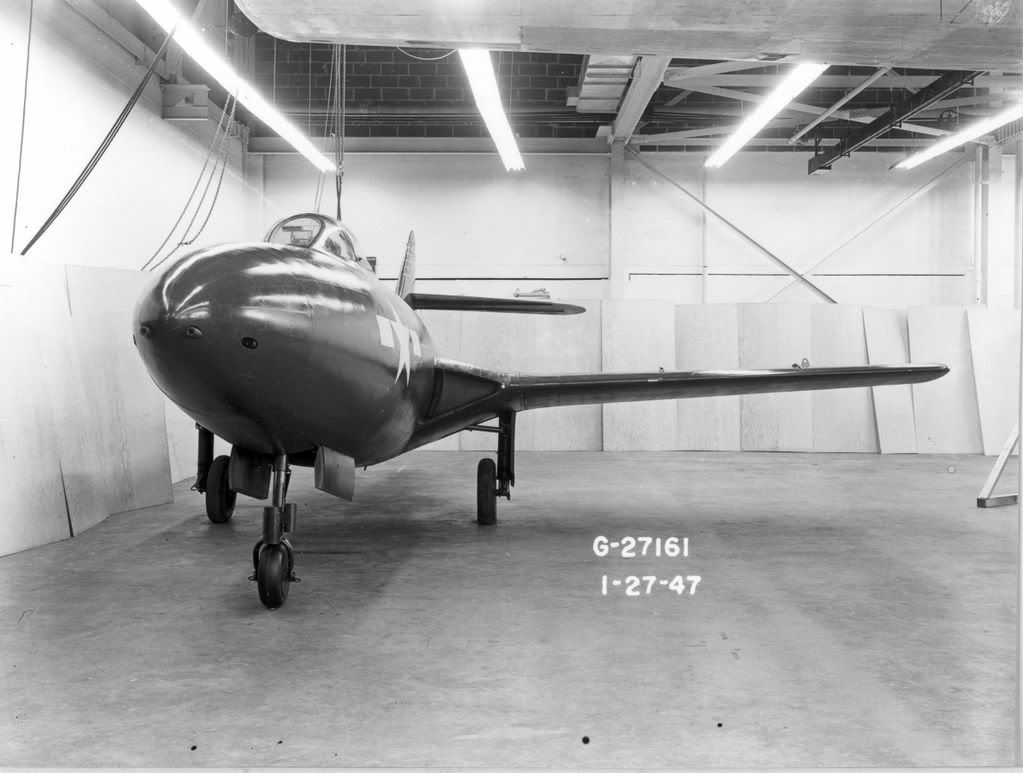
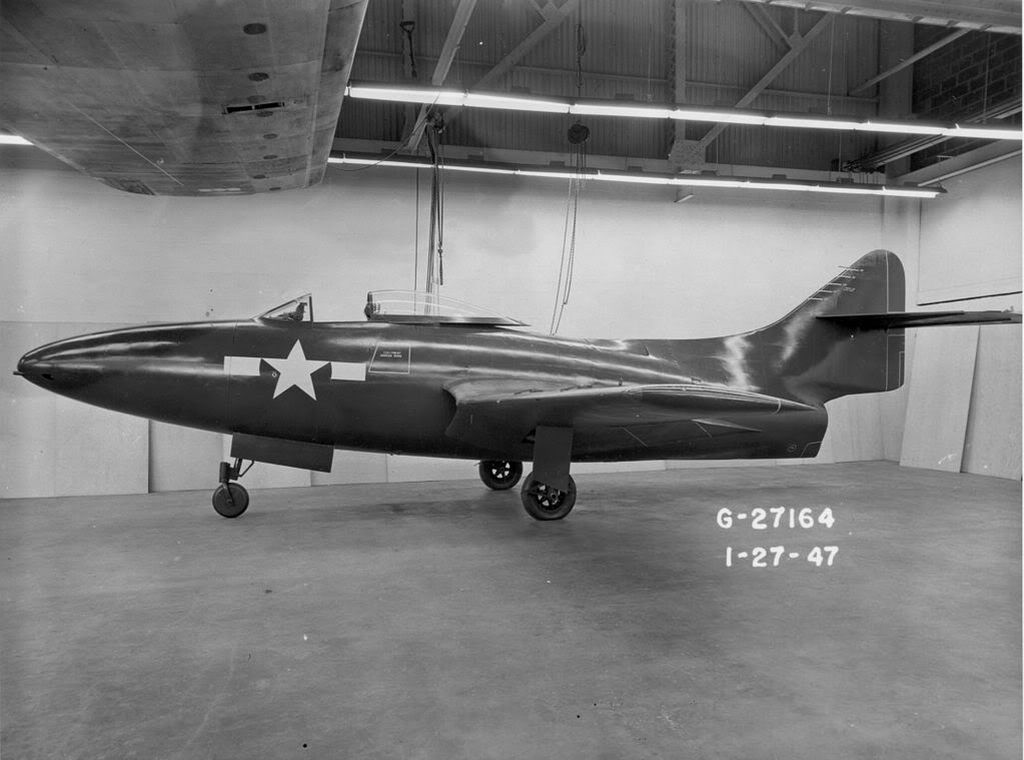
By the time that the mockup was ready for inspection in January and February of 1947, the G-79 design had been further revised. The cockpit had been moved further aft, the exhaust had been extended further to the rear, and the tail surfaces had been redesigned. The first XF9F-2 prototype (BuNo 122475) began engine ground running tests in October of 1947. The maiden flight took place from Bethpage on November 21, 1947, test pilot Corwin H. "Corky" Meyer being at the controls. The landing took place at Idlewild Airport (now the John F. Kennedy International Airport), since the runway at Bethpage was thought to be too short to risk a first landing of a jet-powered aircraft. The second XF9F-2 prototype (BuNo 122477) flew five days later.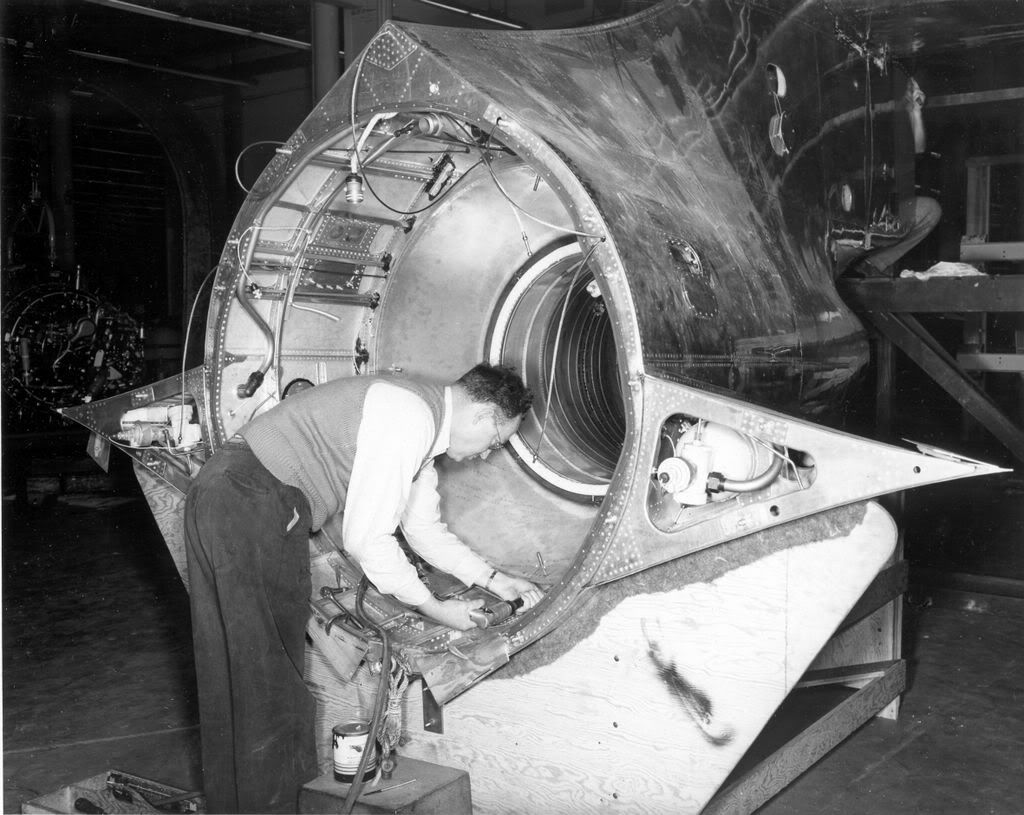
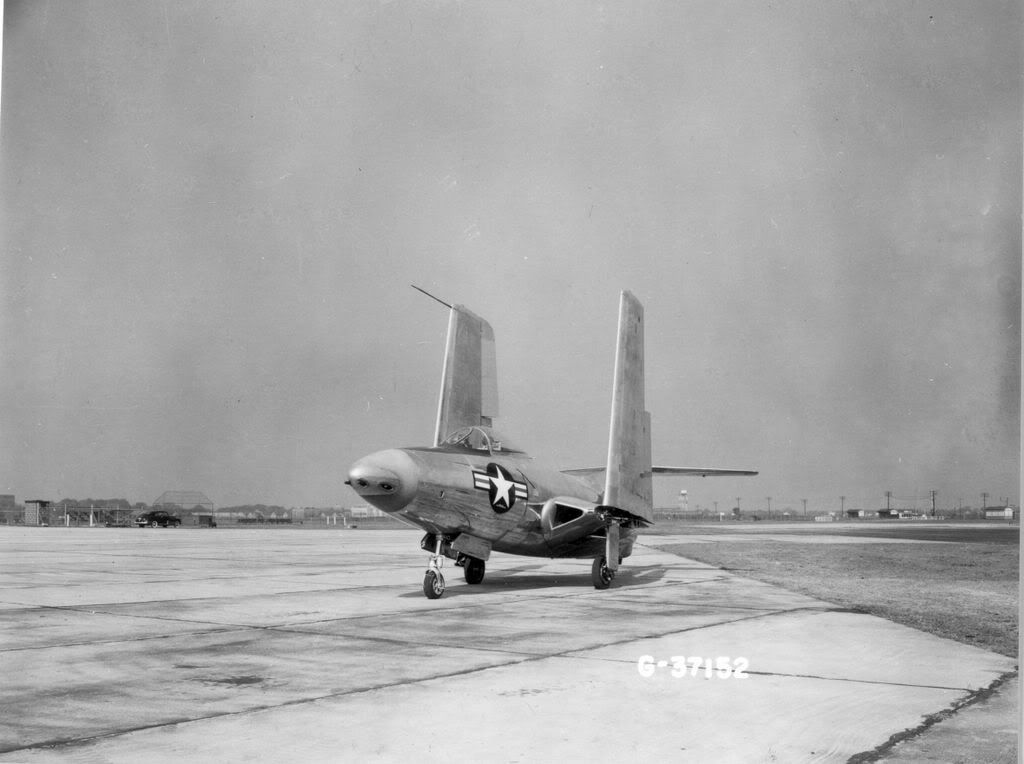
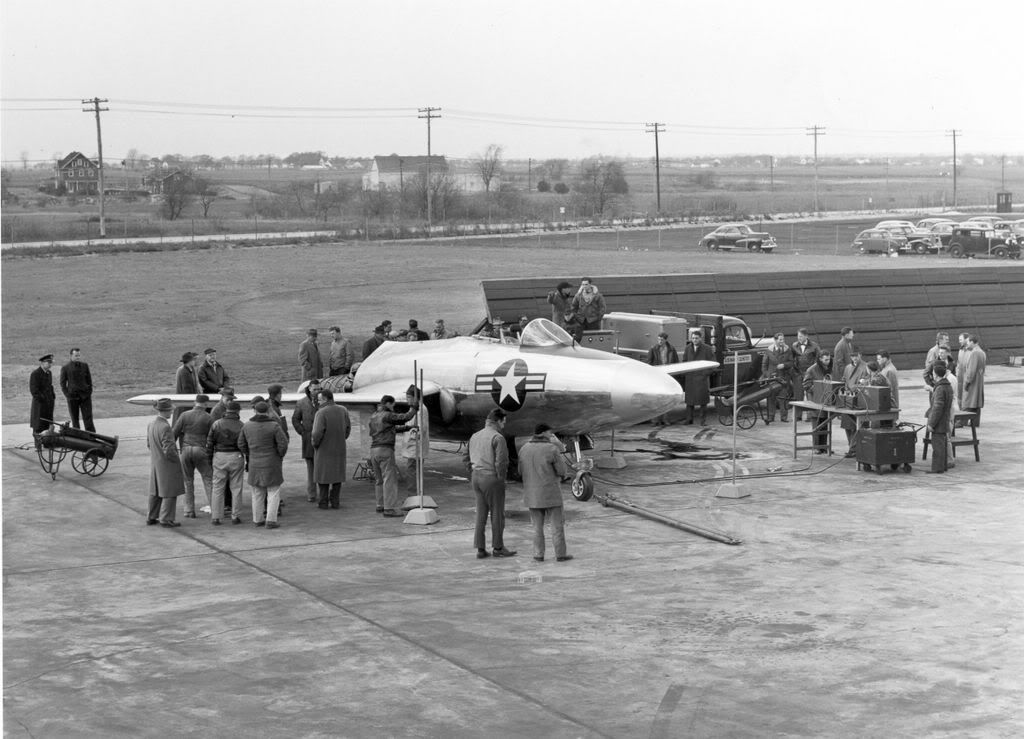
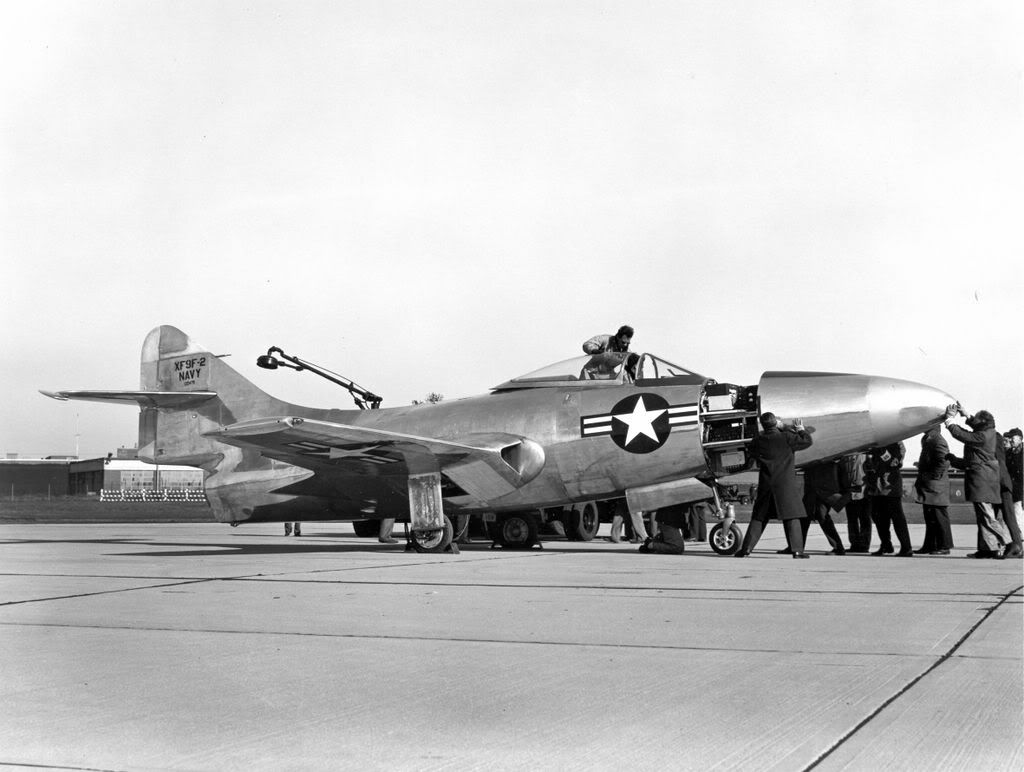
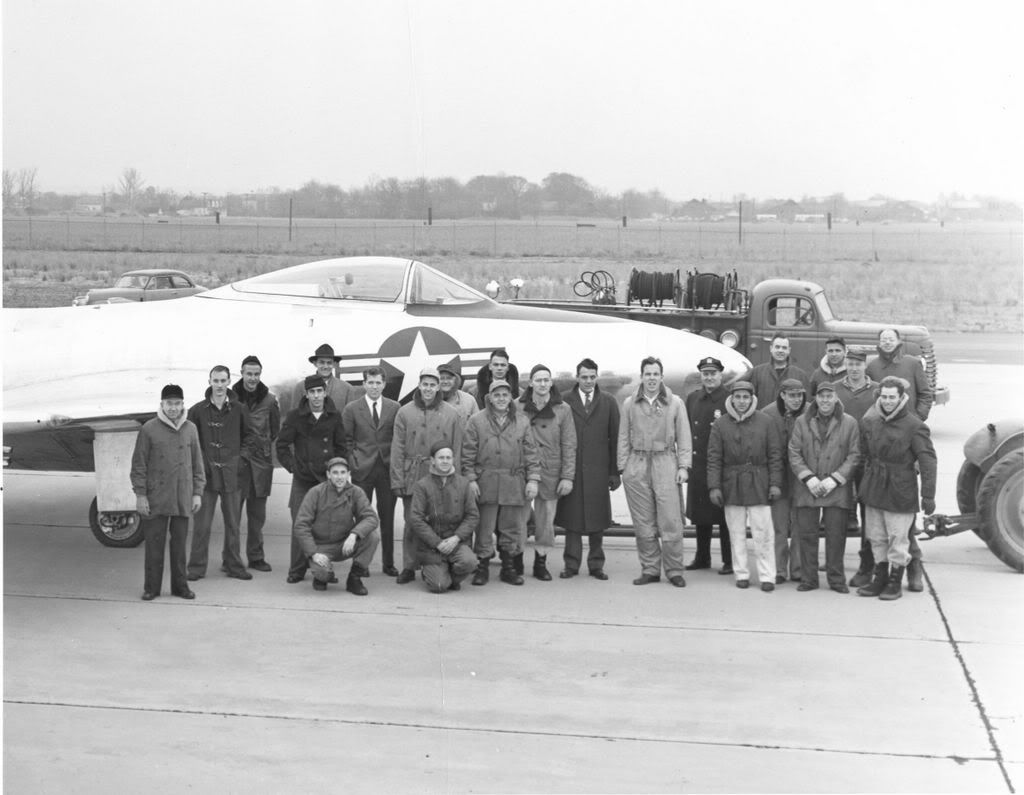
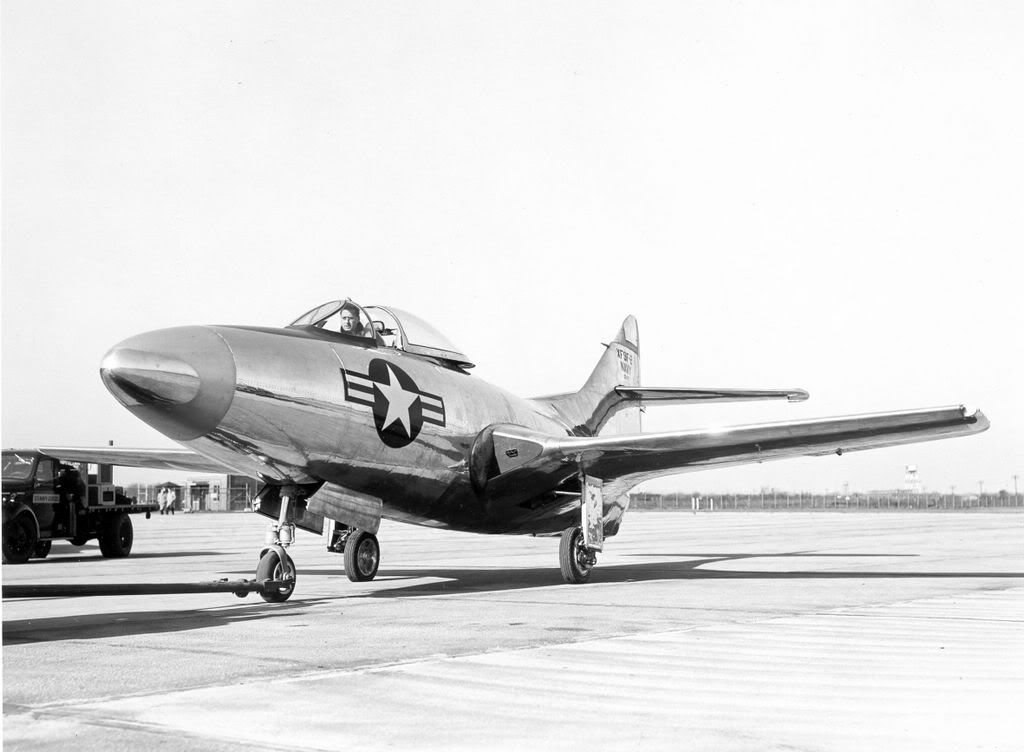
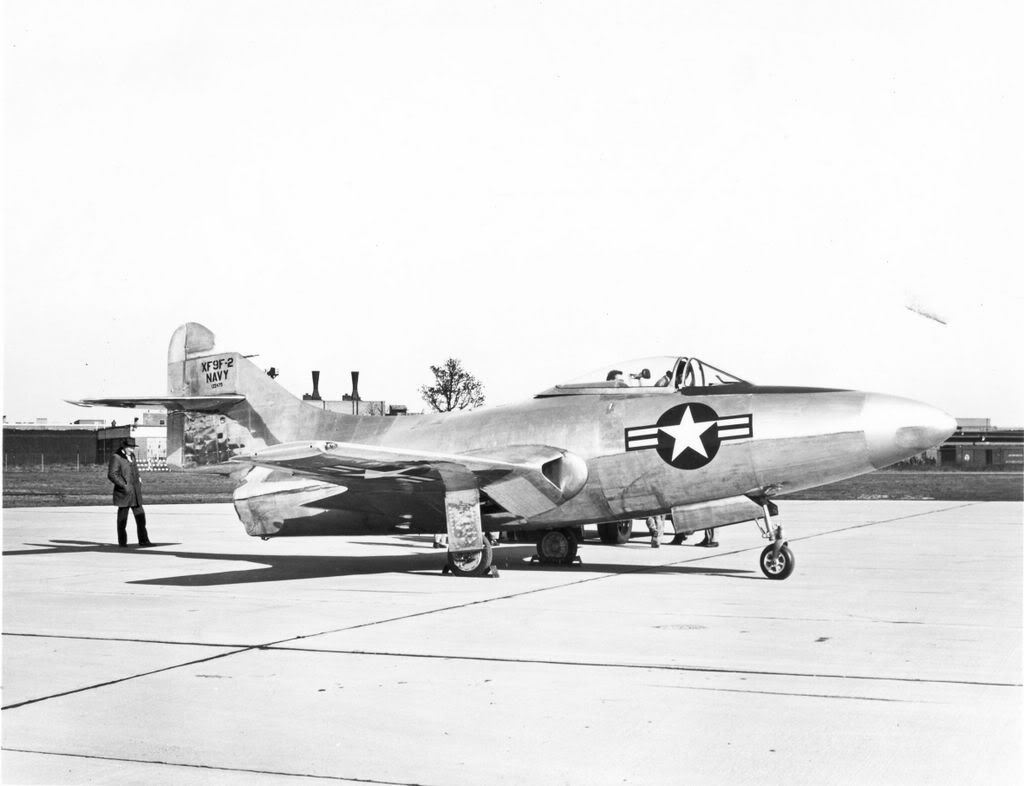
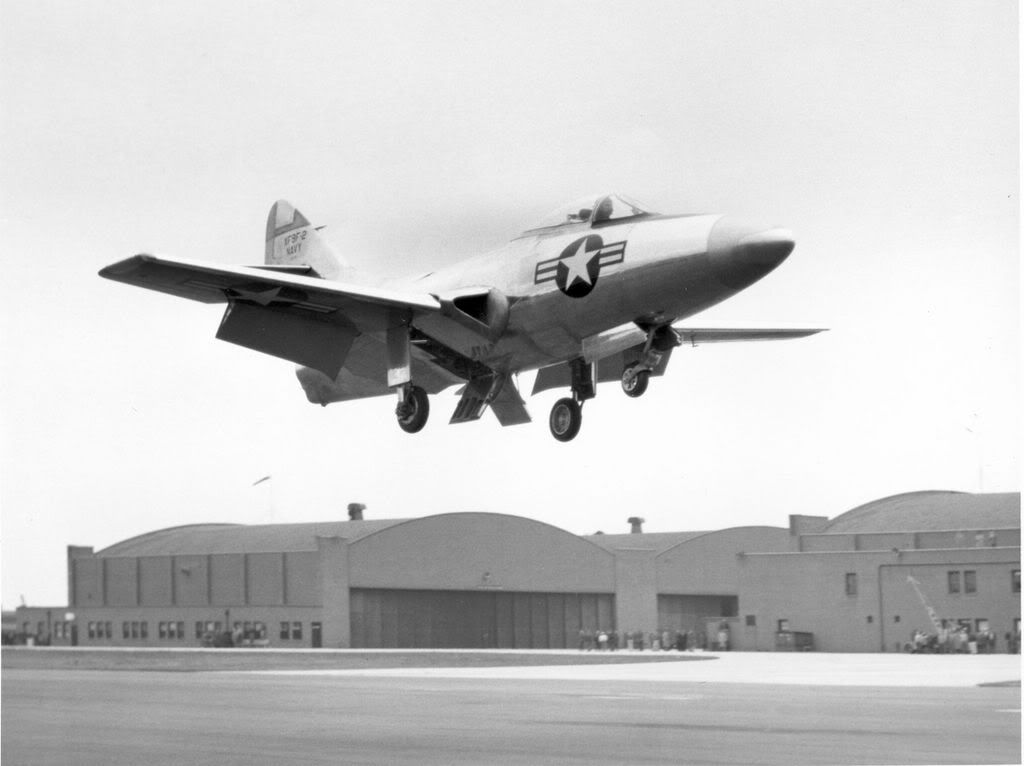

Neither XF9F-2 prototype was fitted with armament nor was it fitted with an ejector seat. The wings folded upward hydraulically. A single tailhook retracted into the rear fuselage underneath the jet exhaust. Internal fuel capacity was 597 US gallons.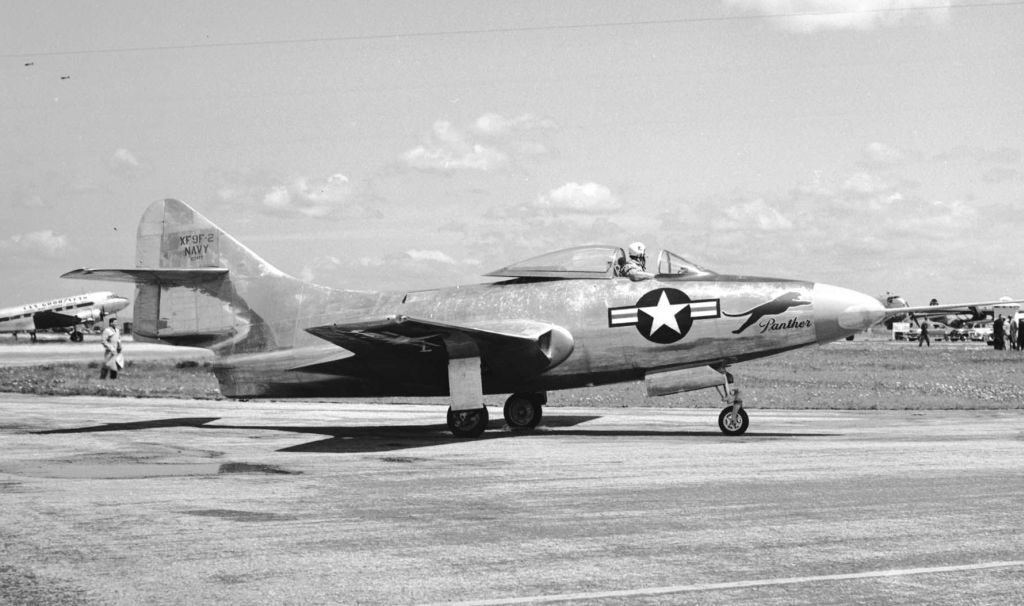
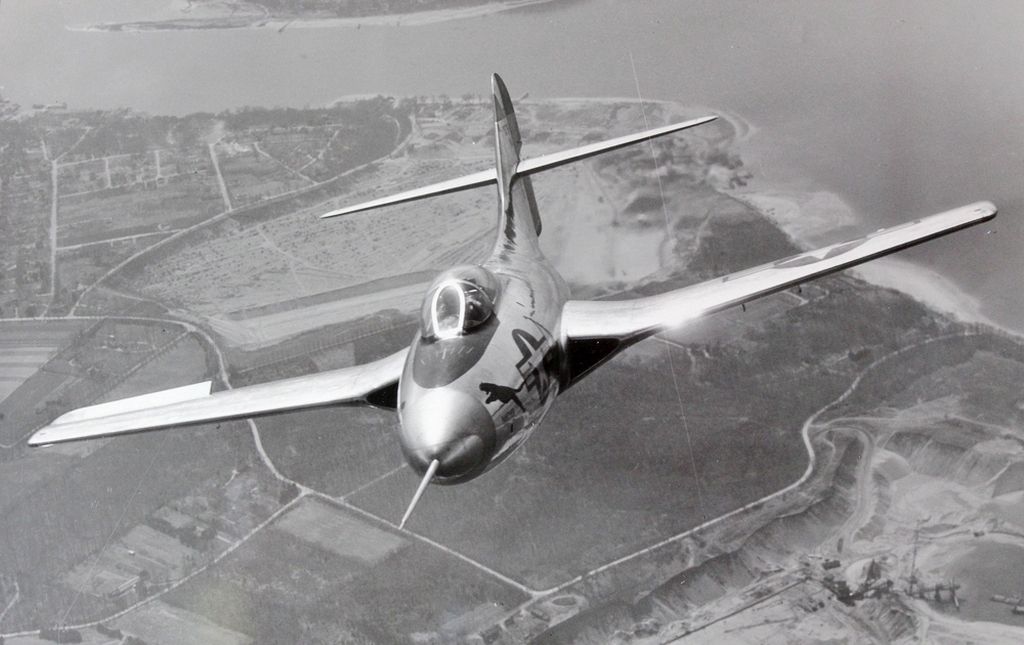
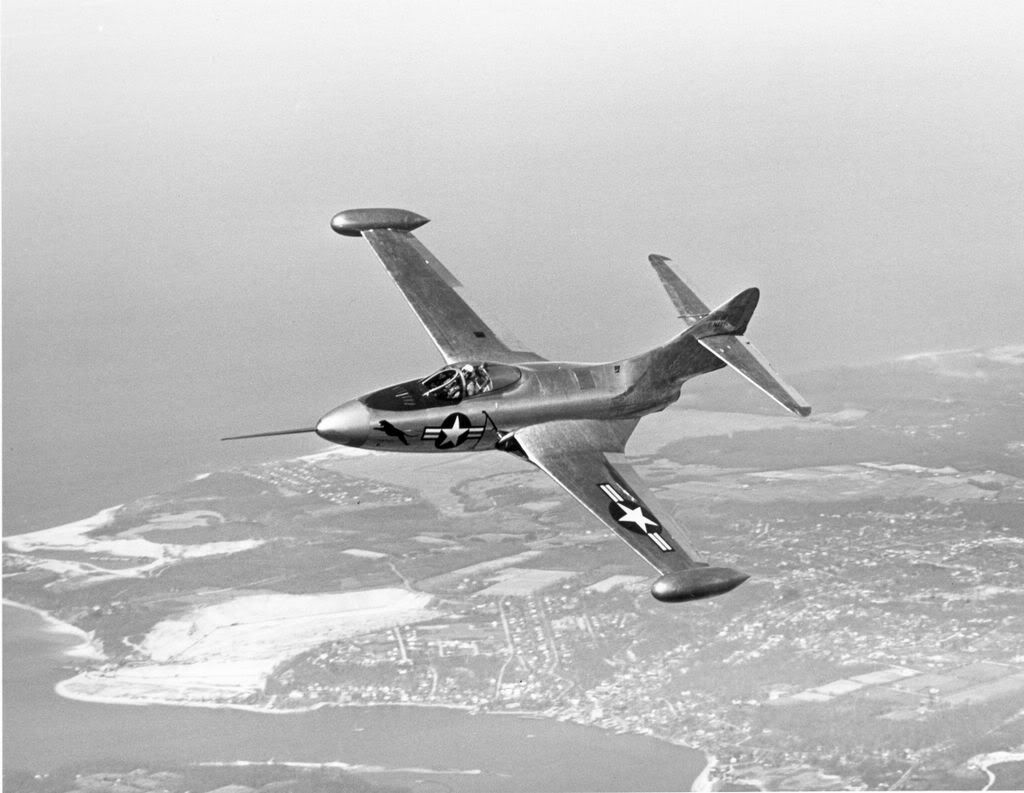
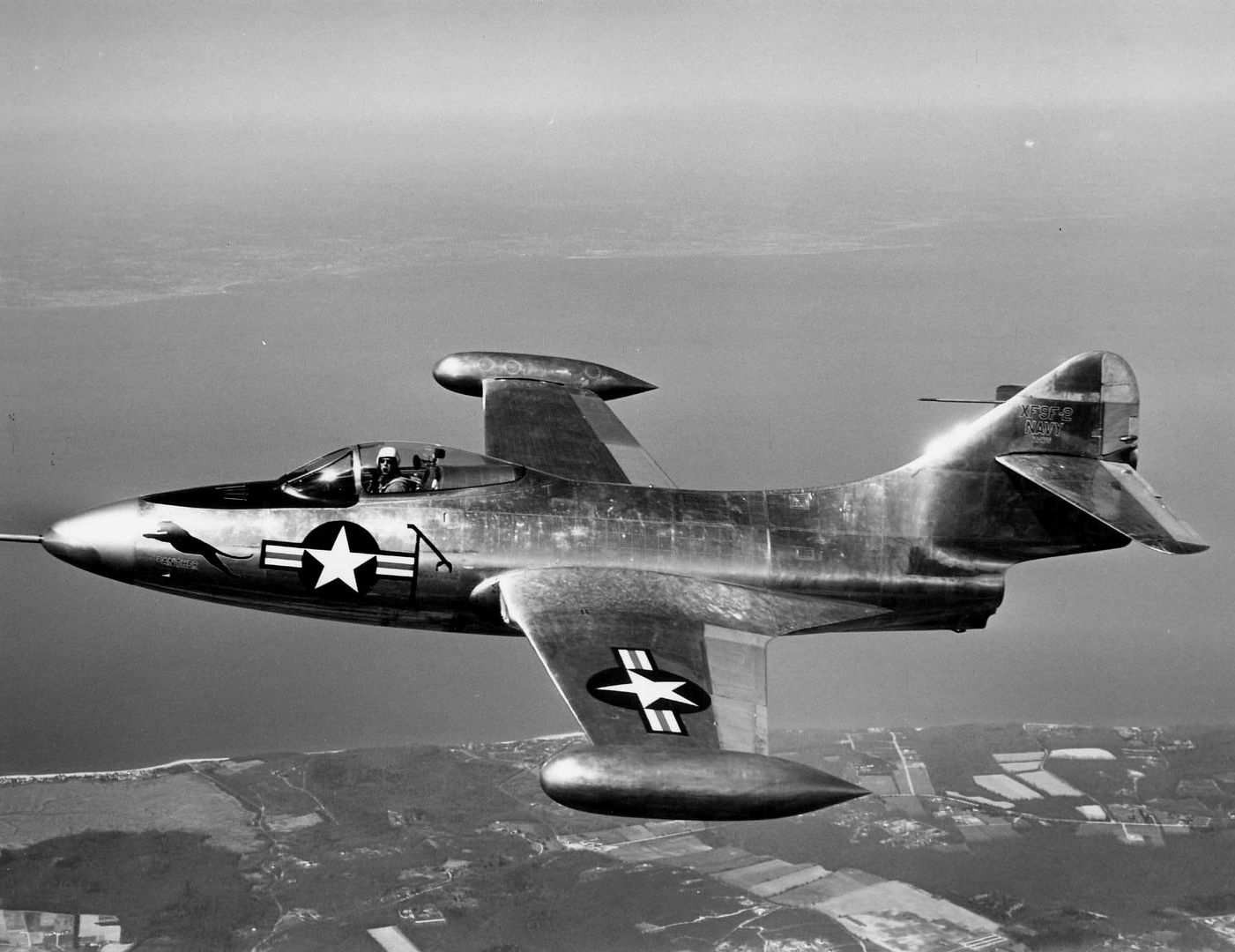
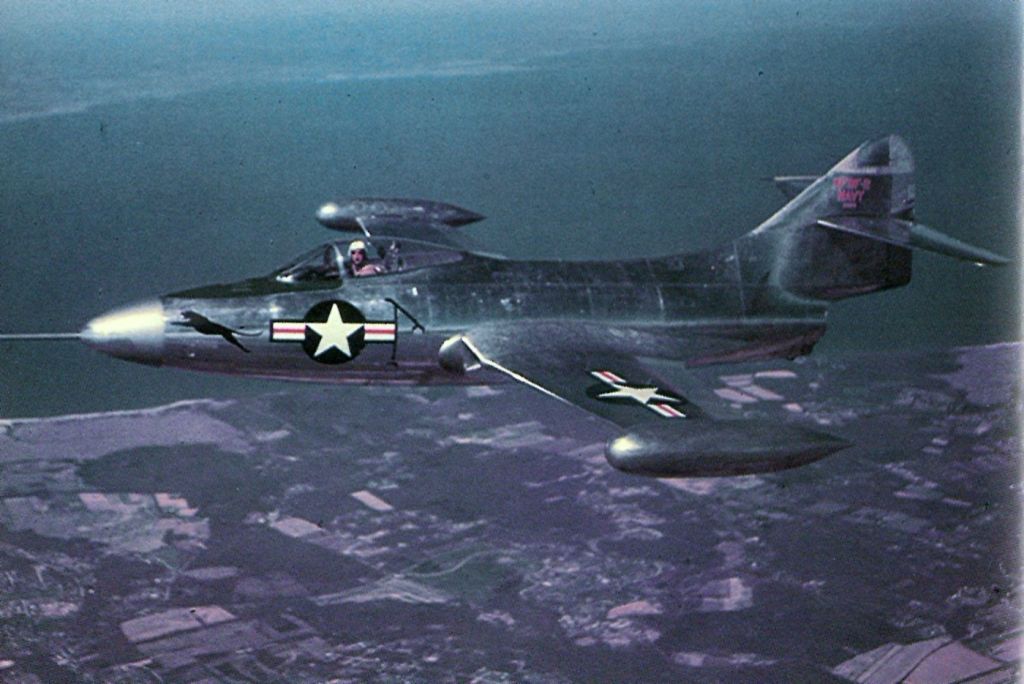
During company and Navy trials, the two XF9F-2 prototypes were found to snake markedly at all speeds and were longitudinally unstable at all speeds. The snaking problem was addressed by increasing the area of the fin and rudder, and the longitudinal instability problem was attacked by adding baffles to the fuel tanks. One of the prototypes shed its tail section during an arrested landing at Patuxent River, Maryland, which required some strengthening of the rear fuselage.
In February of 1948, non-jettisonable fuel tanks were added to the wingtips of the first prototype. This feature became standard with the 13th production aircraft, and non-jettisonable wingtip fuel tanks were to be a feature of the Panther through its entire production run.
Since the Navy was fearful that the Taylor Turbine Corporation might not be able to deliver sufficient numbers of engines in a timely fashion, the Navy encouraged Taylor to negotiate an agreement where by the Nene manufacturing license would be transferred to a more-established engine manufacturing company. This was done as requested, and the Nene license was purchased from Taylor by Pratt & Whitney.
-
8 years agoTue Feb 09 2016, 10:30pm
 Main AdminThe first production F9F-2 flew in August 1949. The production F9F-2 was externally similar to the XF9F-2 prototype but with wingtip tanks. However, it was equipped with an armament of four 20-mm cannon with 190 rounds per gun and the cockpit was provided with a Martin-Baker ejector seat. With the wingtip tanks, the total fuel capacity was now 923 US gallons. Because of the additional equipment and fuel, it was substantially heavier than the XF9F-2.
Main AdminThe first production F9F-2 flew in August 1949. The production F9F-2 was externally similar to the XF9F-2 prototype but with wingtip tanks. However, it was equipped with an armament of four 20-mm cannon with 190 rounds per gun and the cockpit was provided with a Martin-Baker ejector seat. With the wingtip tanks, the total fuel capacity was now 923 US gallons. Because of the additional equipment and fuel, it was substantially heavier than the XF9F-2.
The first F9F-2s began their trials powered by J42-P-4 turbojets, but initial production F9F-2s were powered by J42-P-6s. Most F9F-2s were powered by J42-P-8s with a modified ignition system. All of these engines offered a maximum wet takeoff-thrust of 5750 pounds and a dry take-off thrust of 5000 pounds.
The production by Pratt & Whitney of the J42 adaptation of the Rolls-Royce Nene proceeded on schedule and with relatively few snags. The J42 engine was, in fact, so successful in service that the F9F-3 alternative J33-powered version was deemed not to be necessary and the few F9F-3s that were built were retrofitted with J42 engines and thus became indistinguishable from F9F-2s. A total of 564 Panthers were delivered as F9F-2.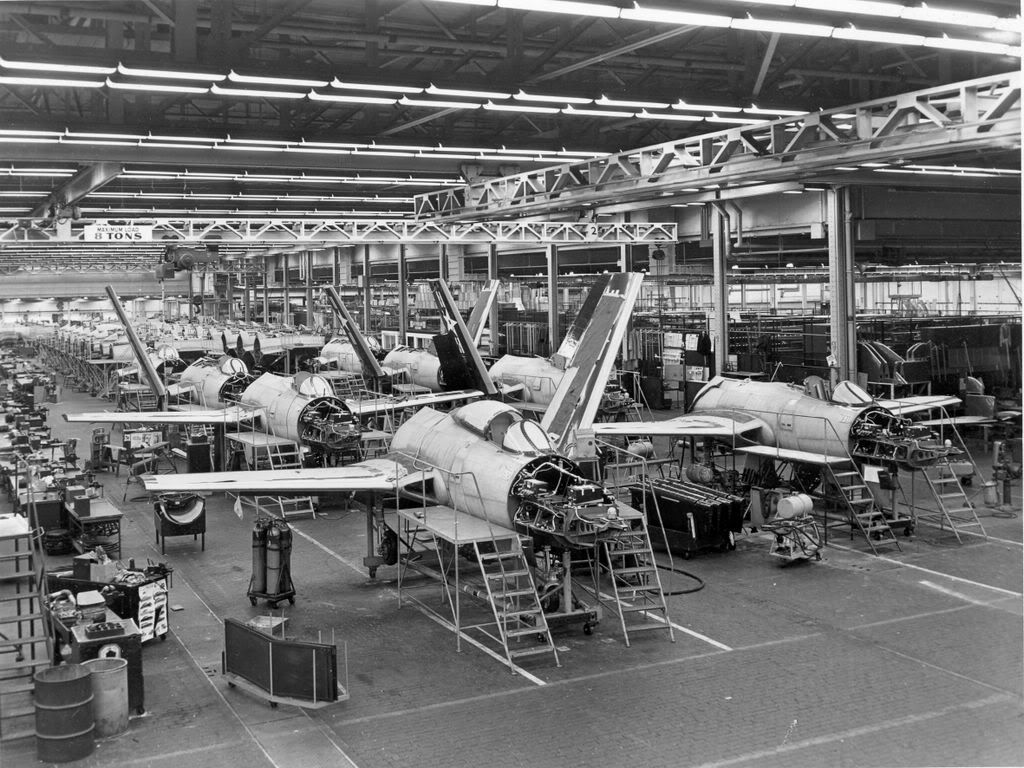
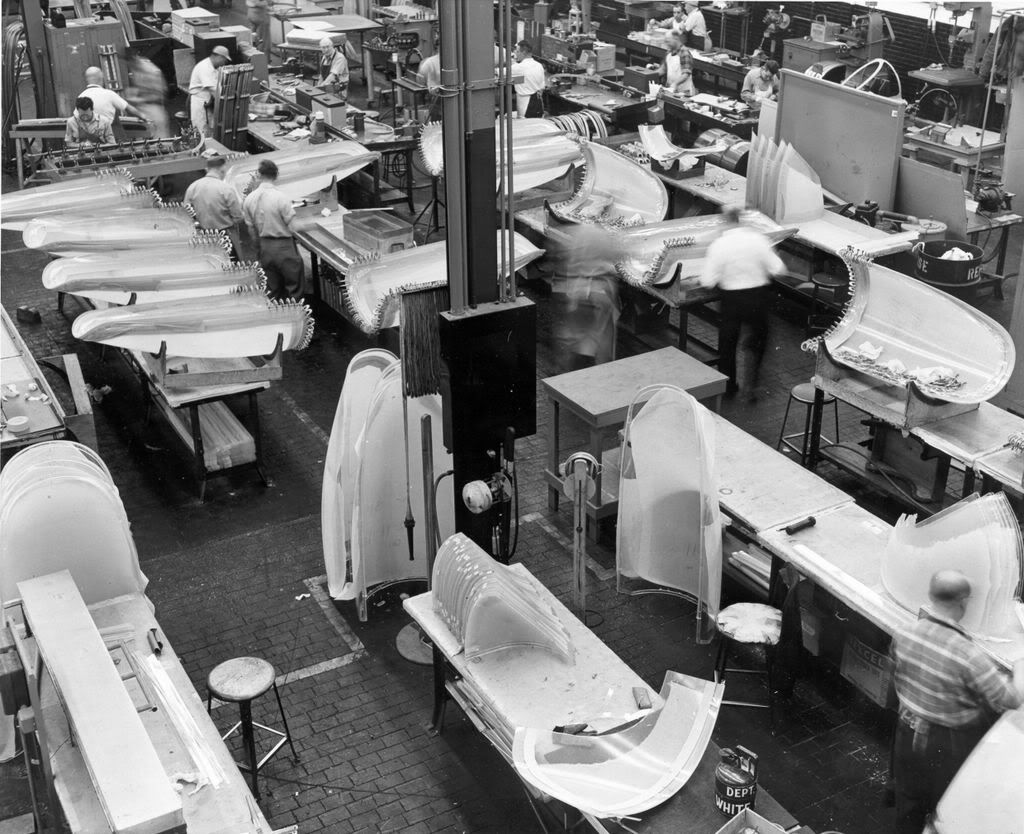
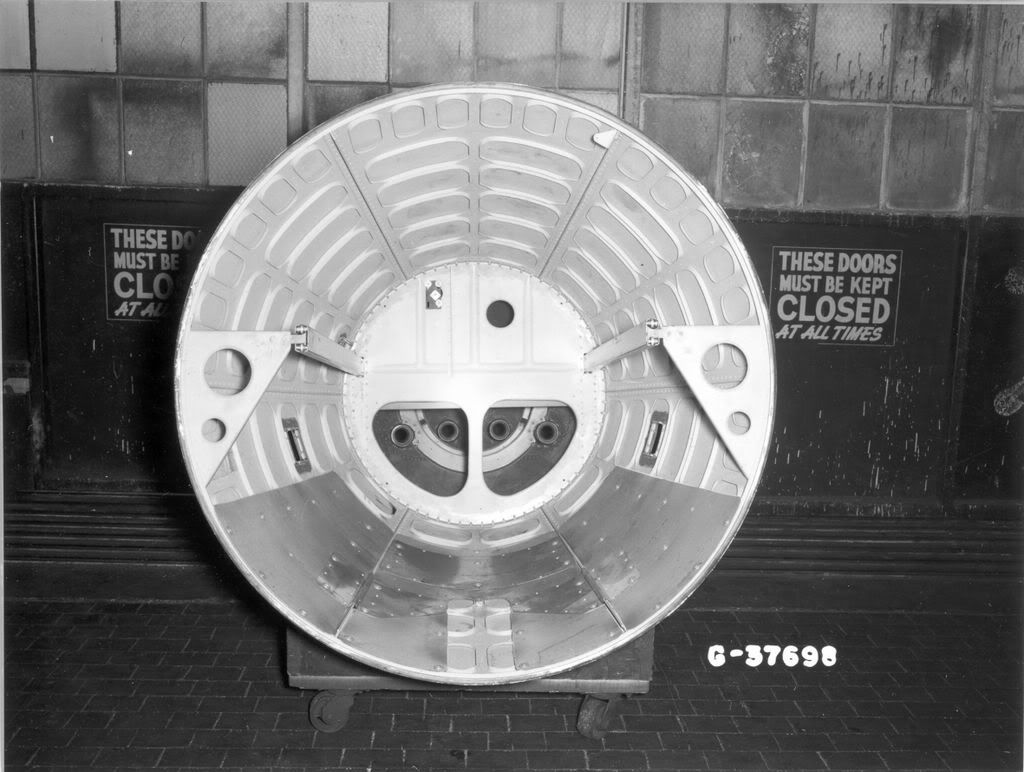

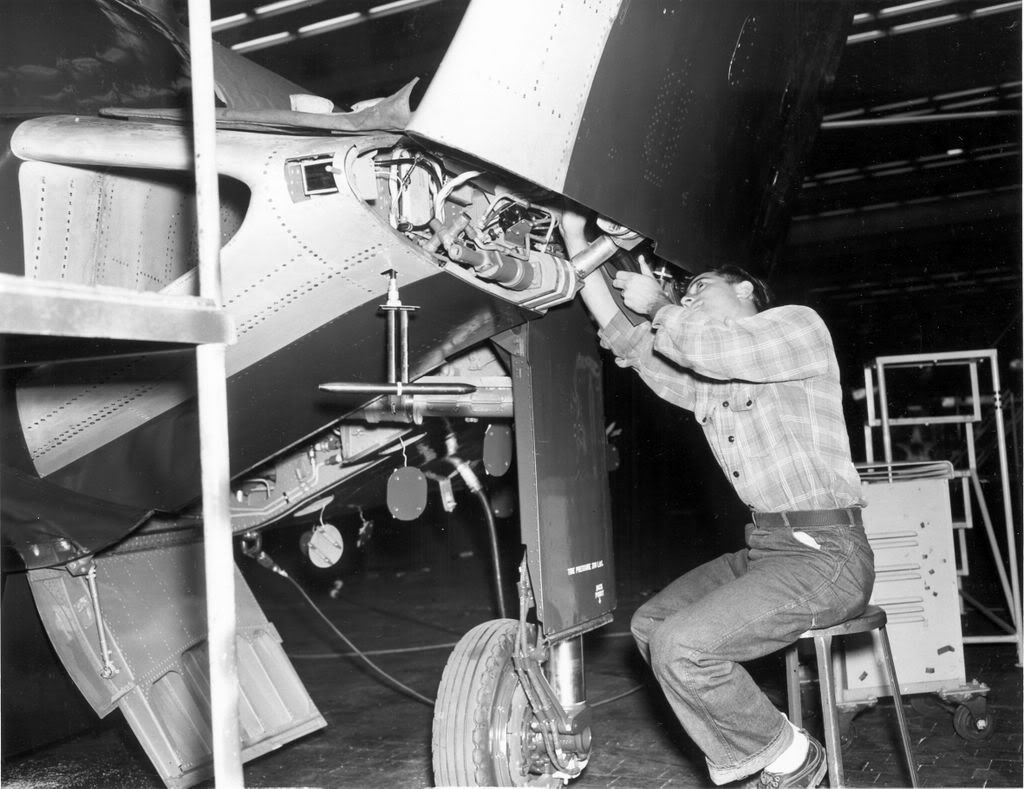

[url]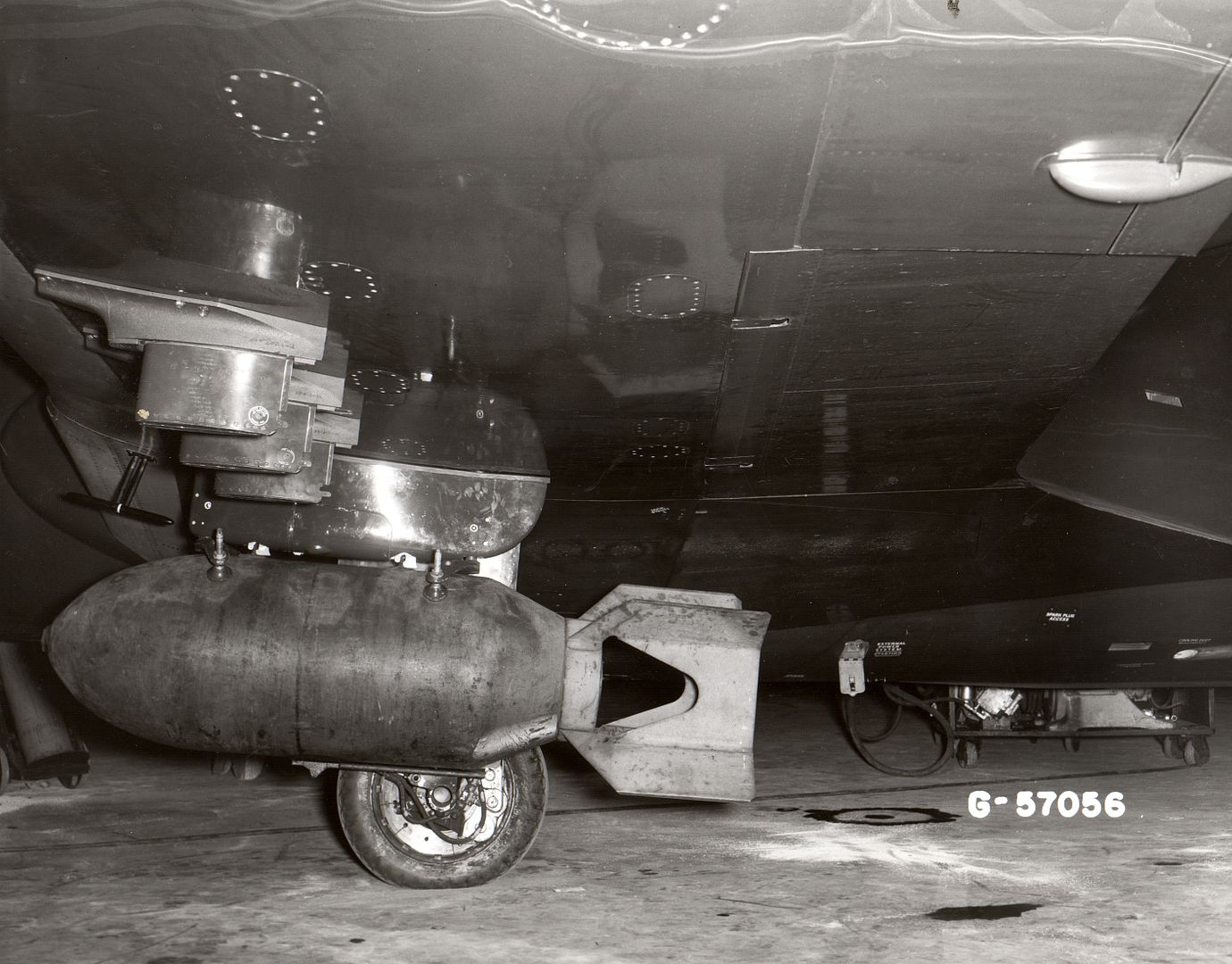
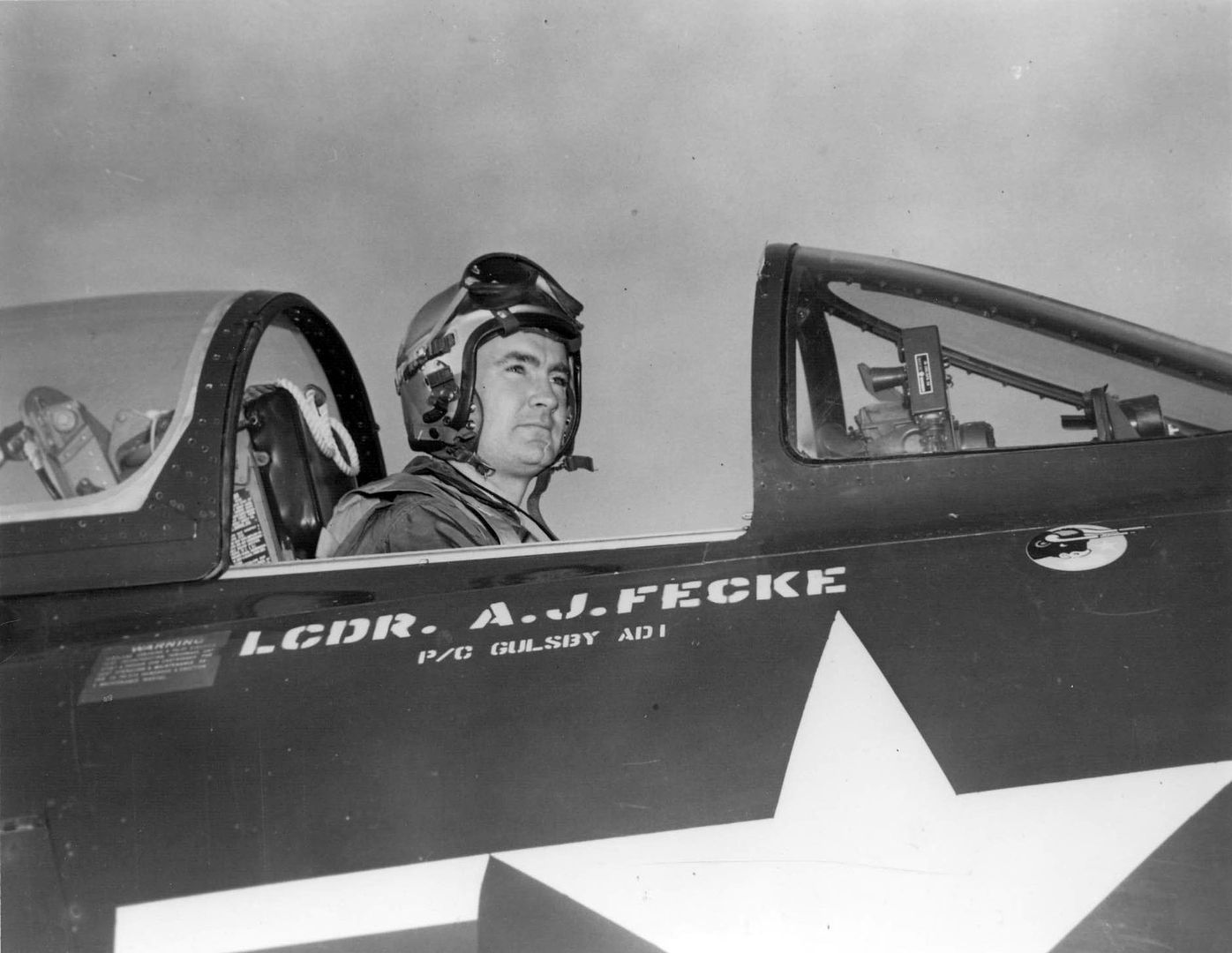
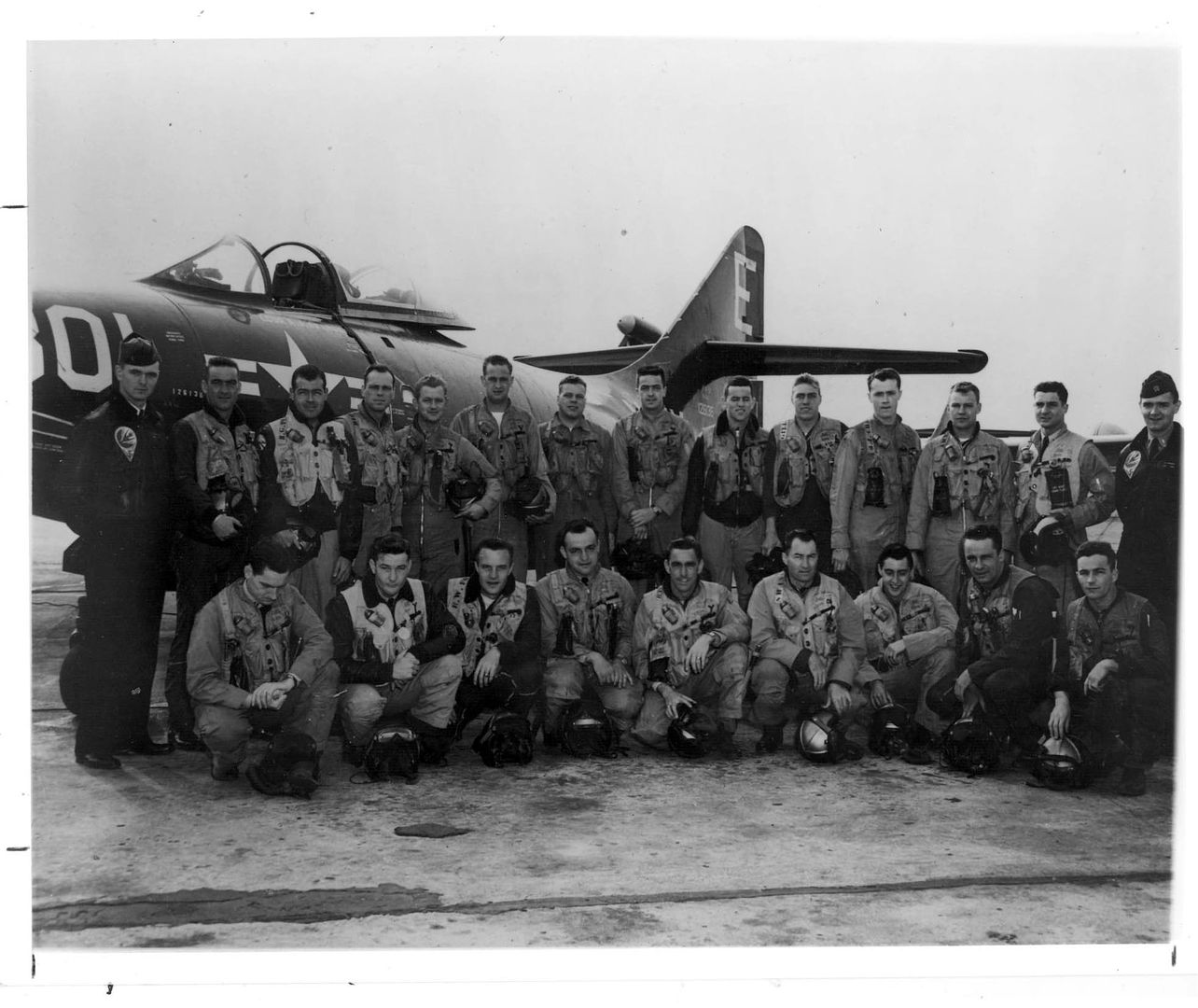
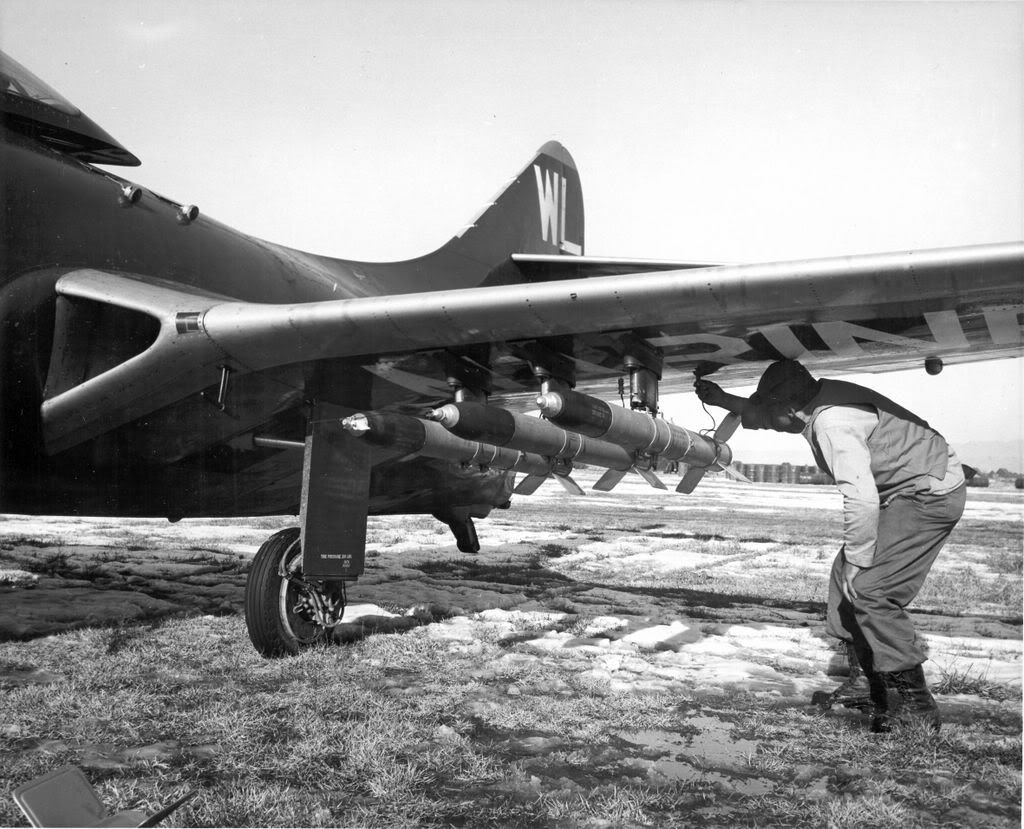
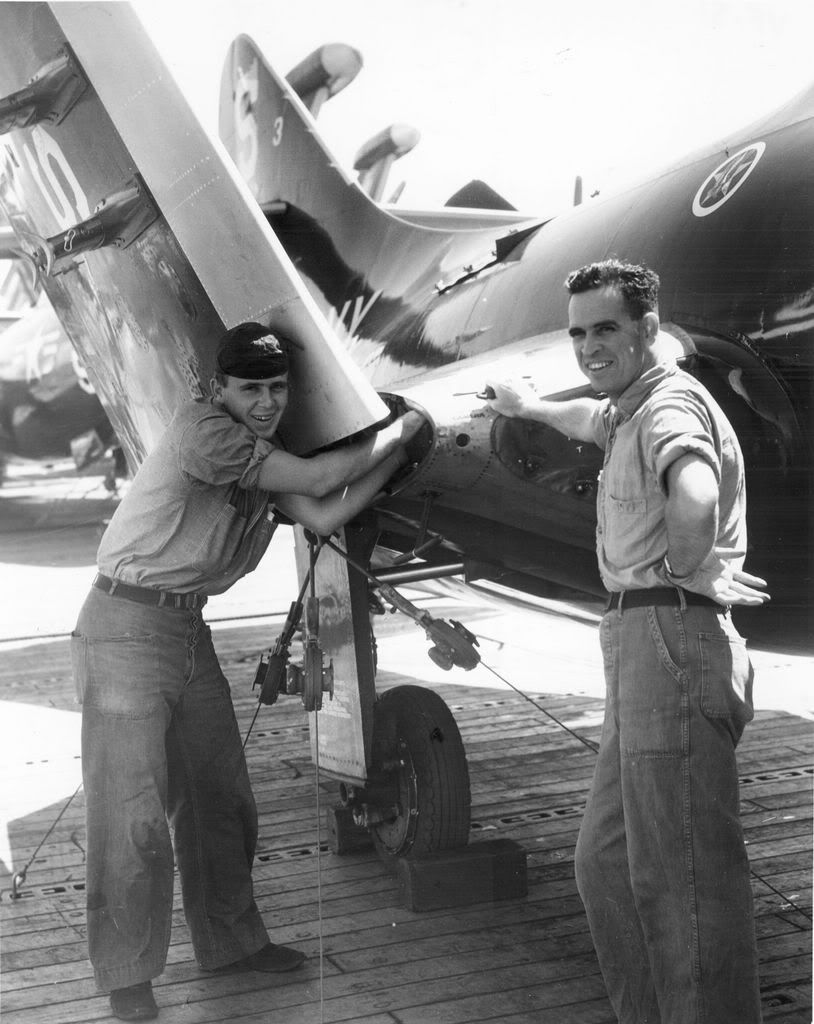
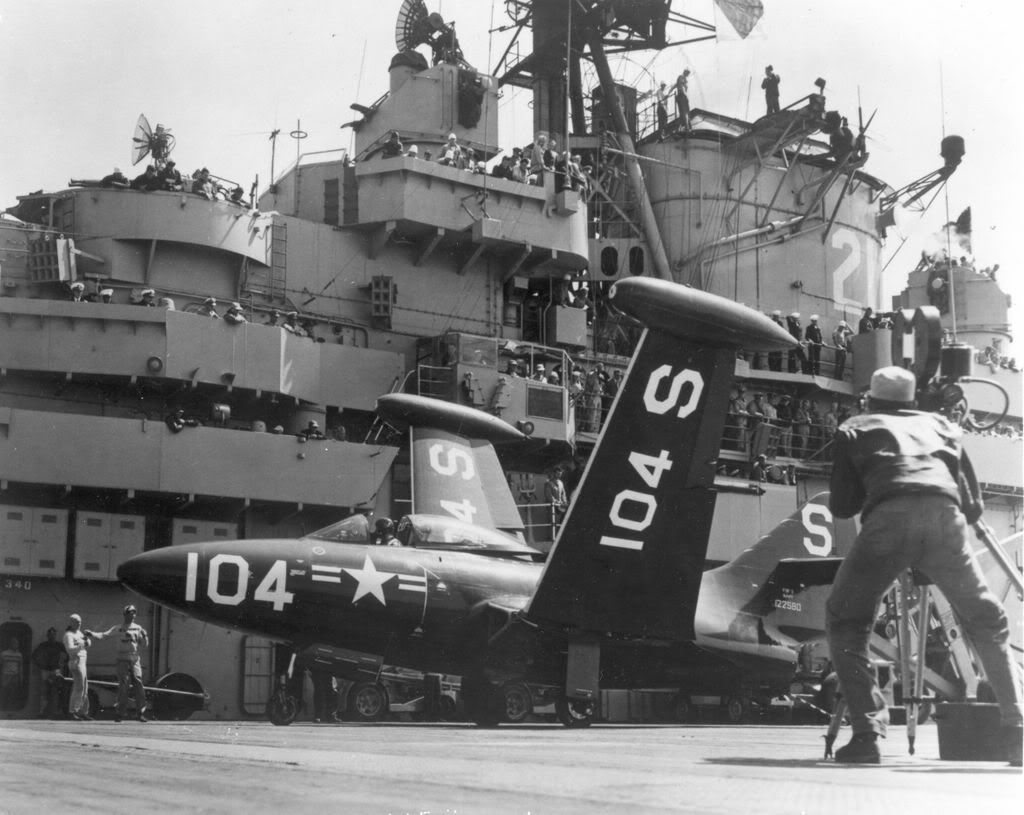
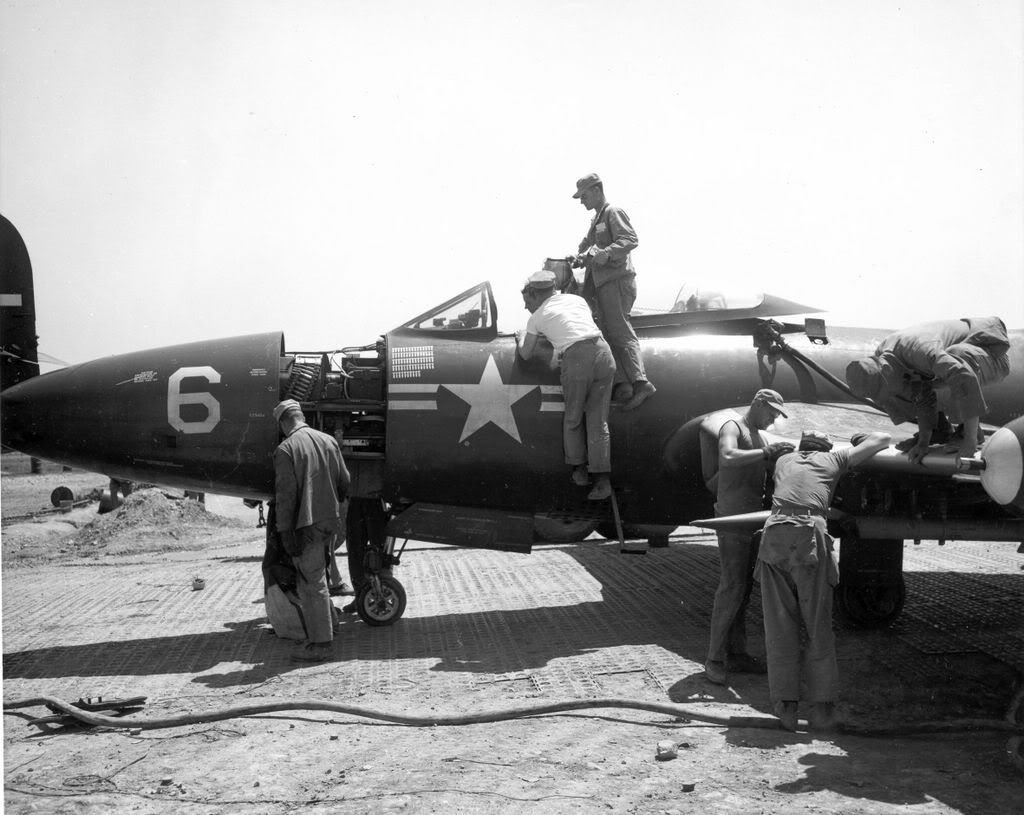
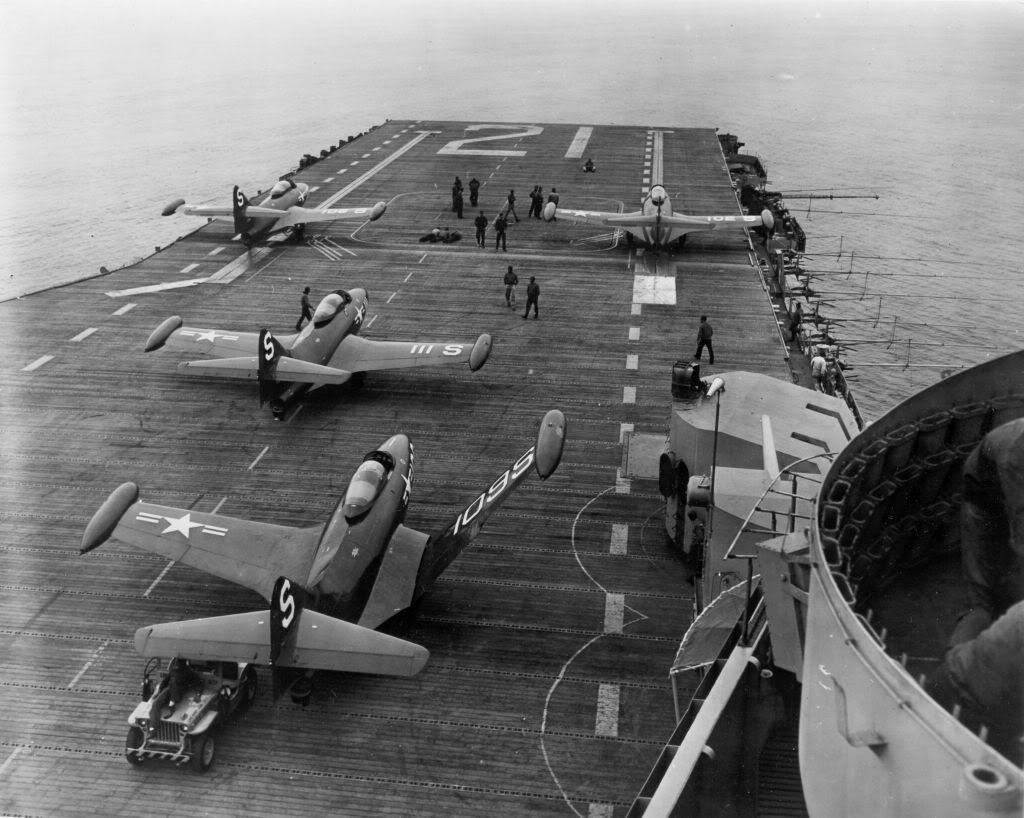
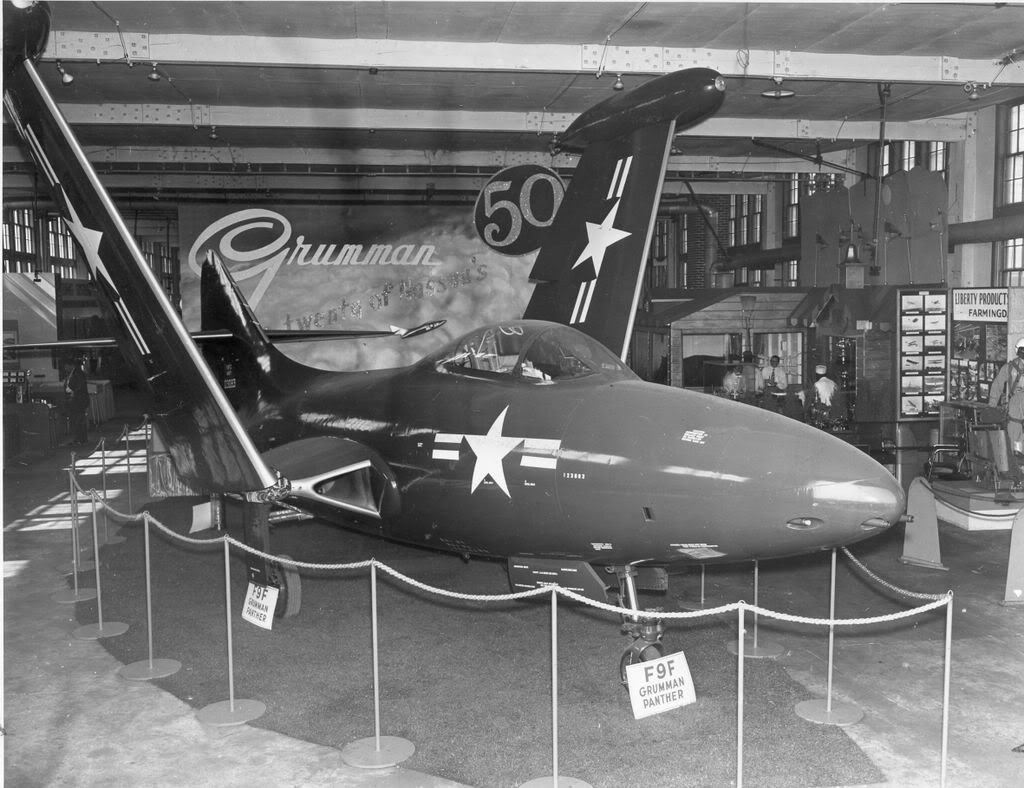

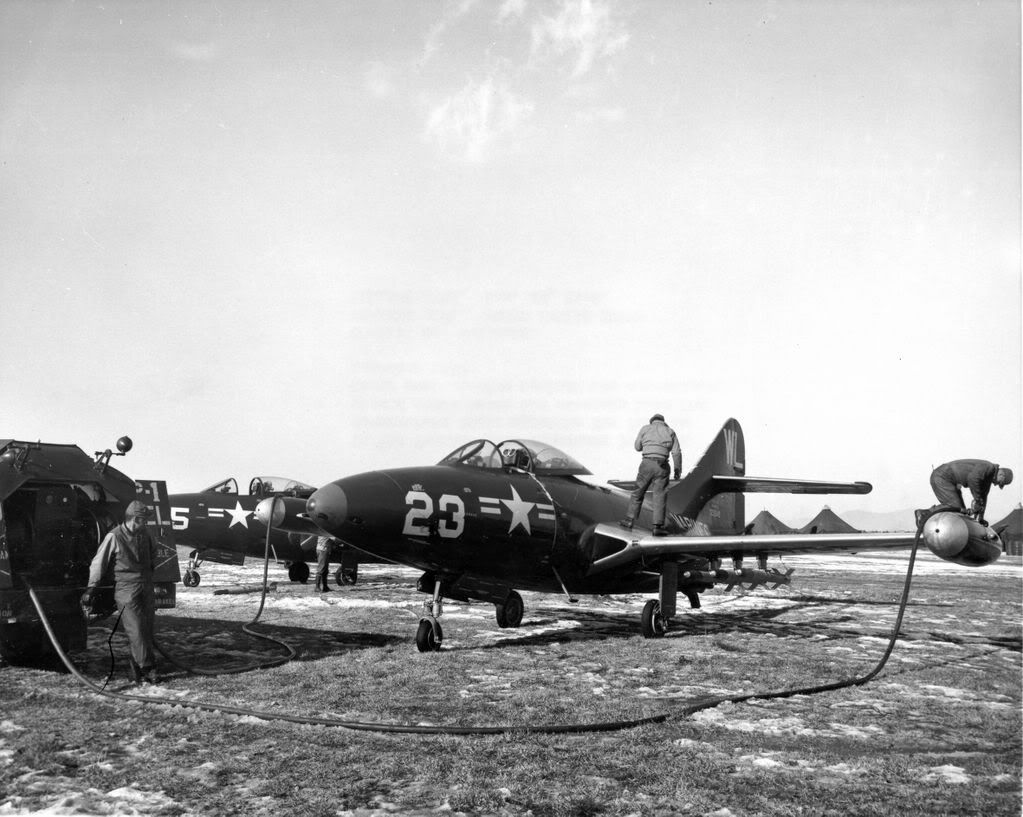
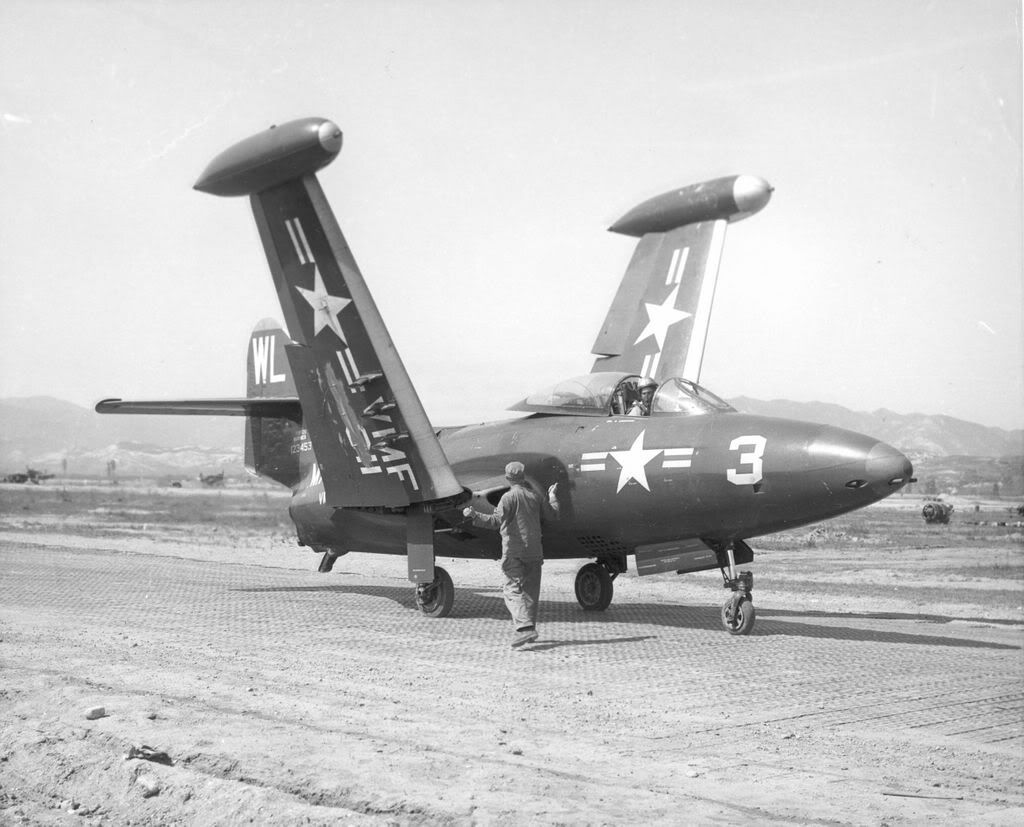
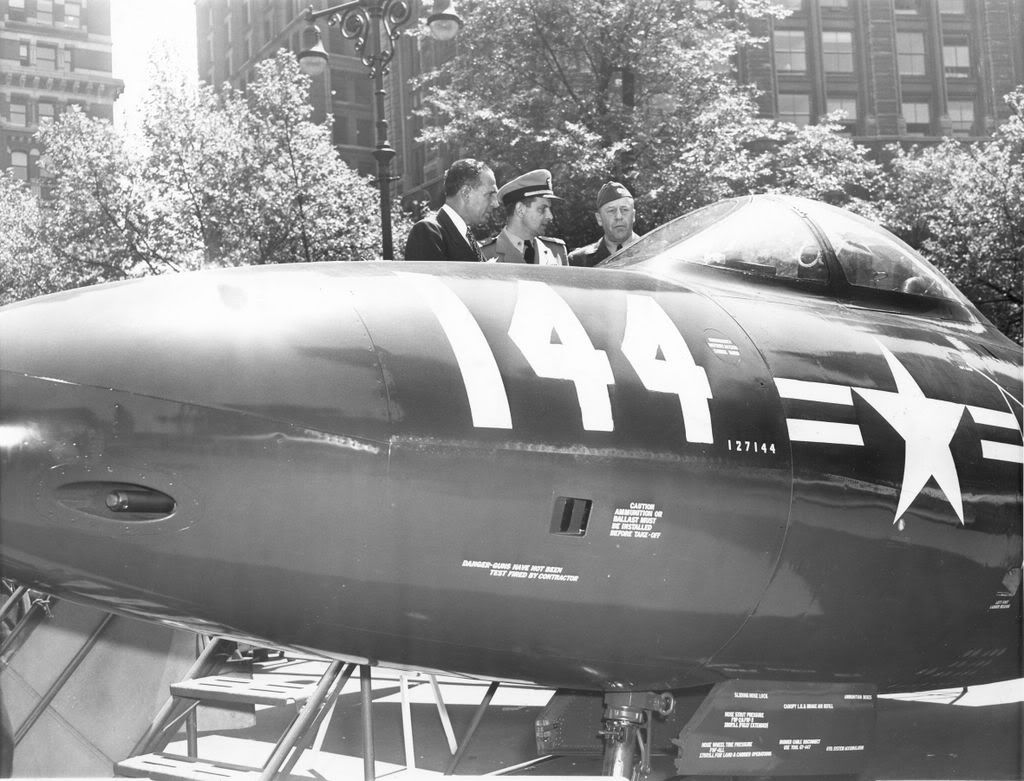
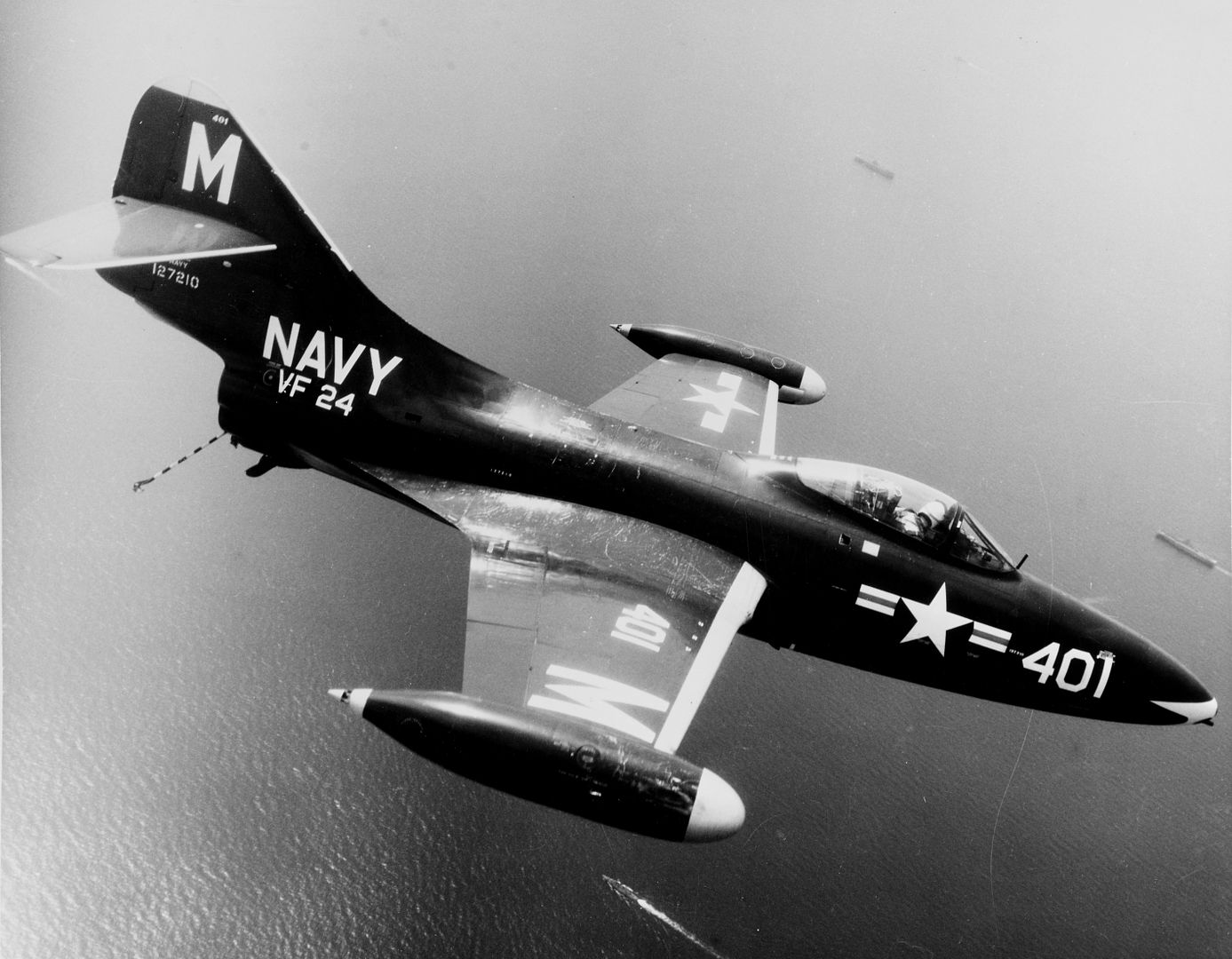
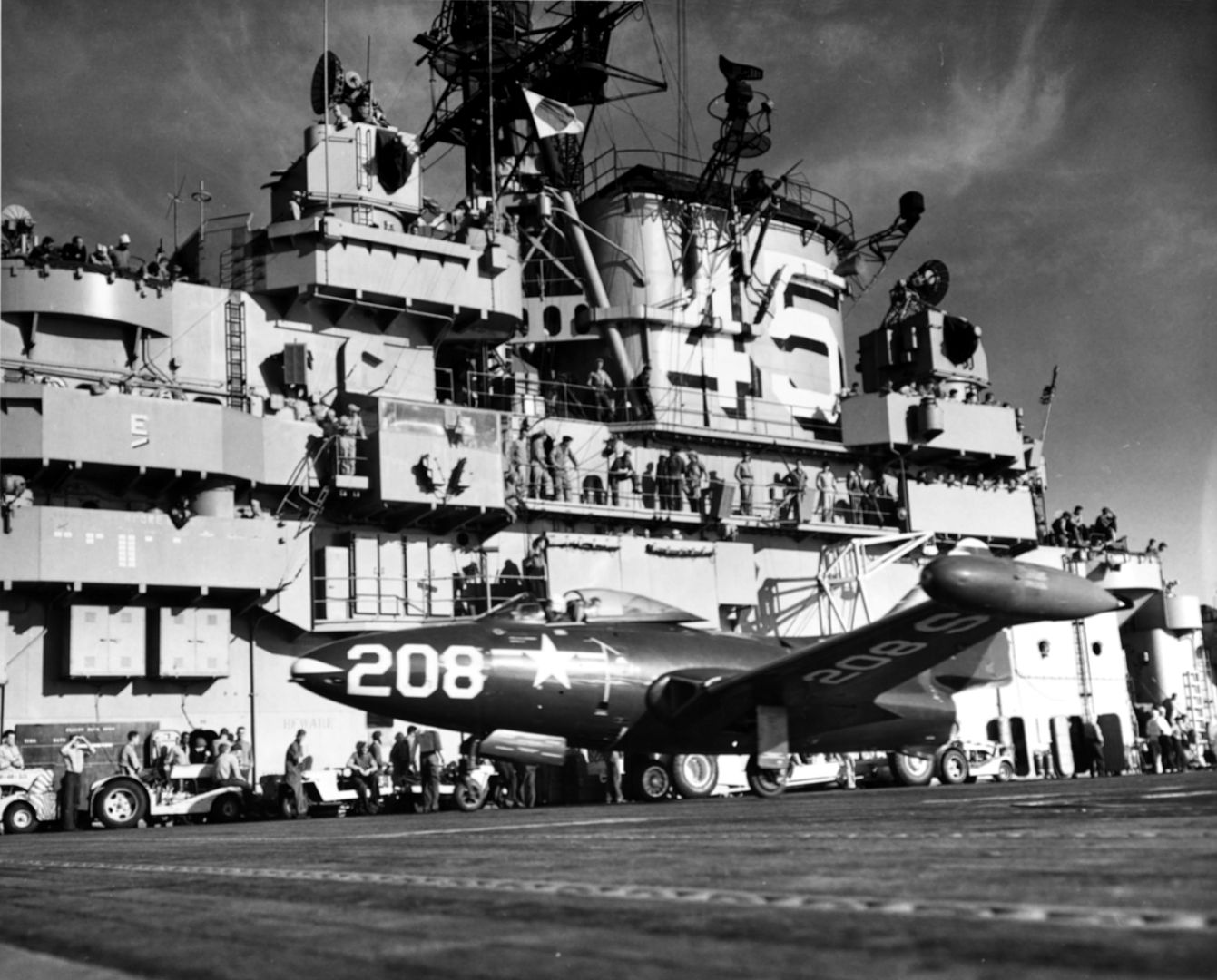
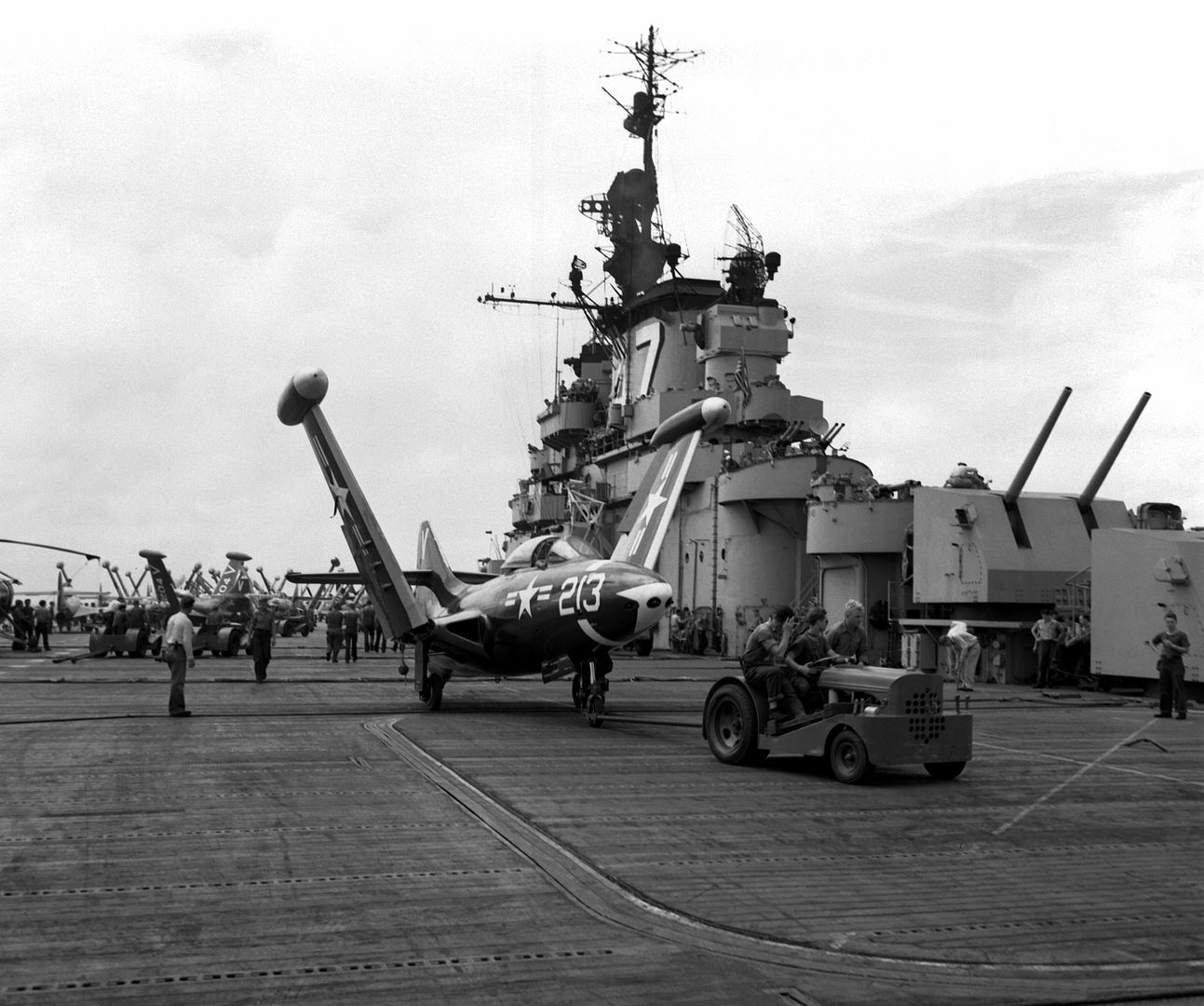
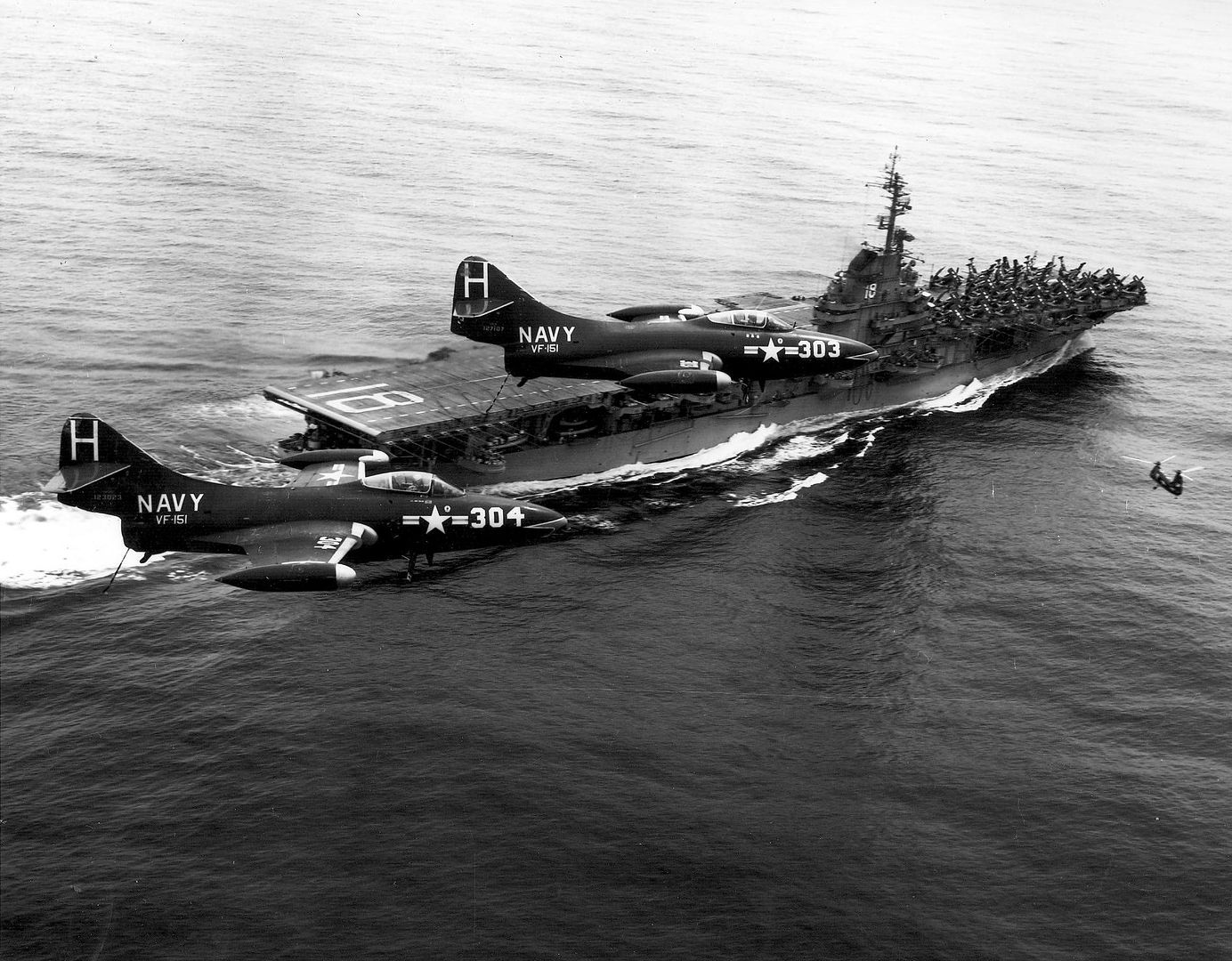
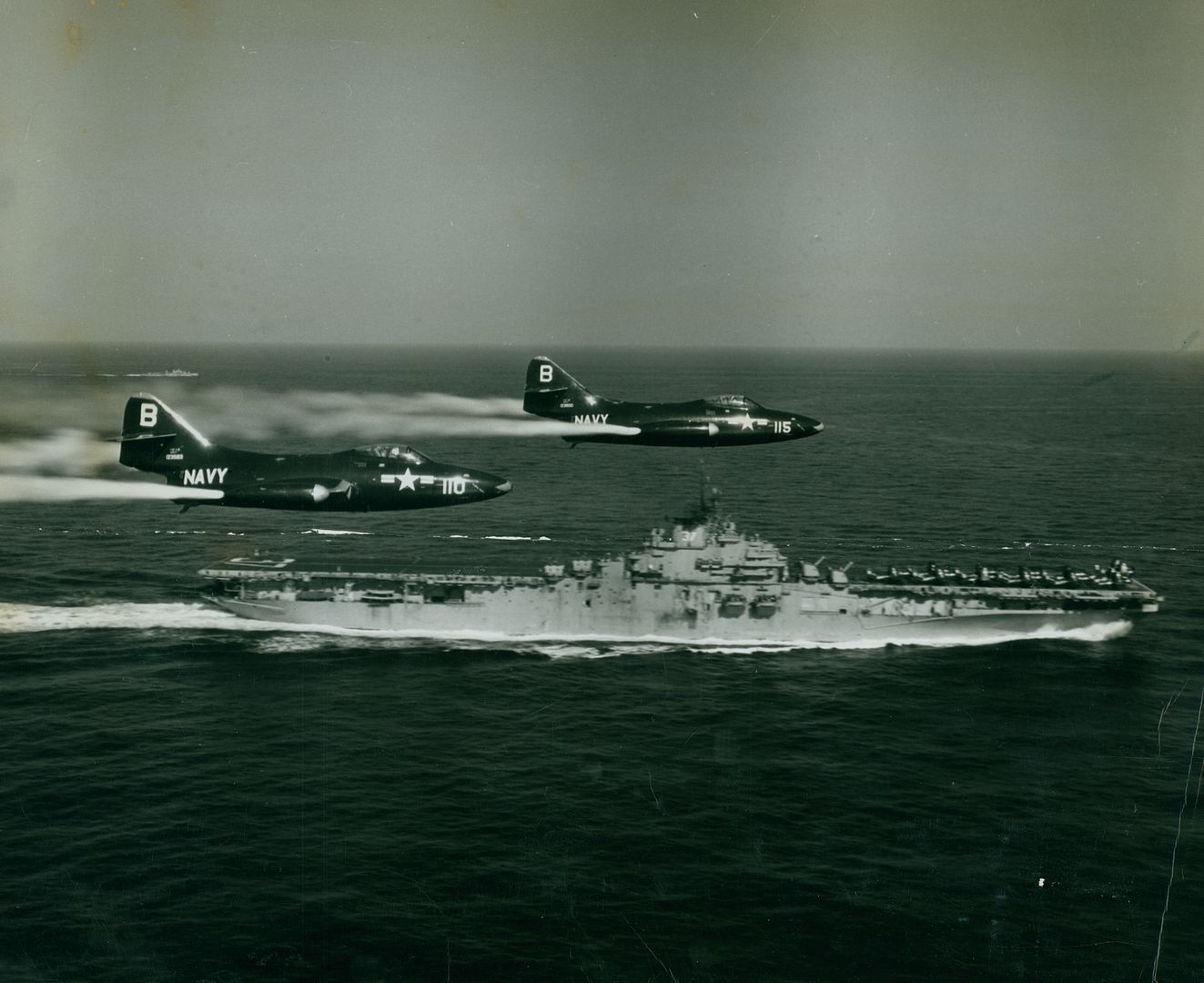

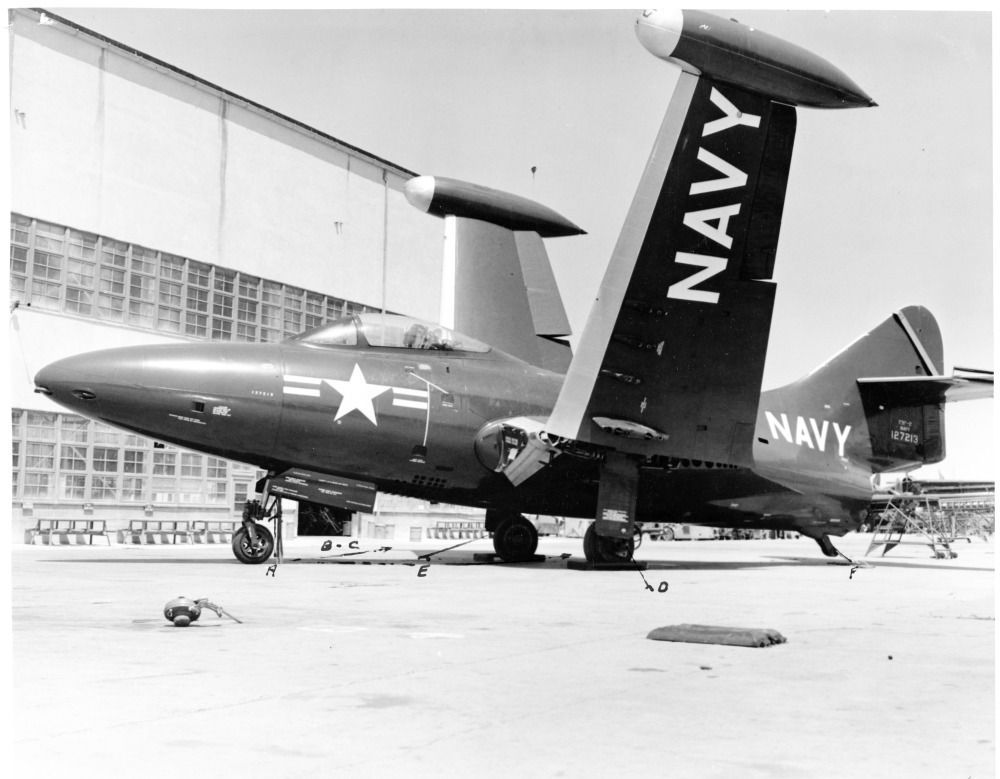
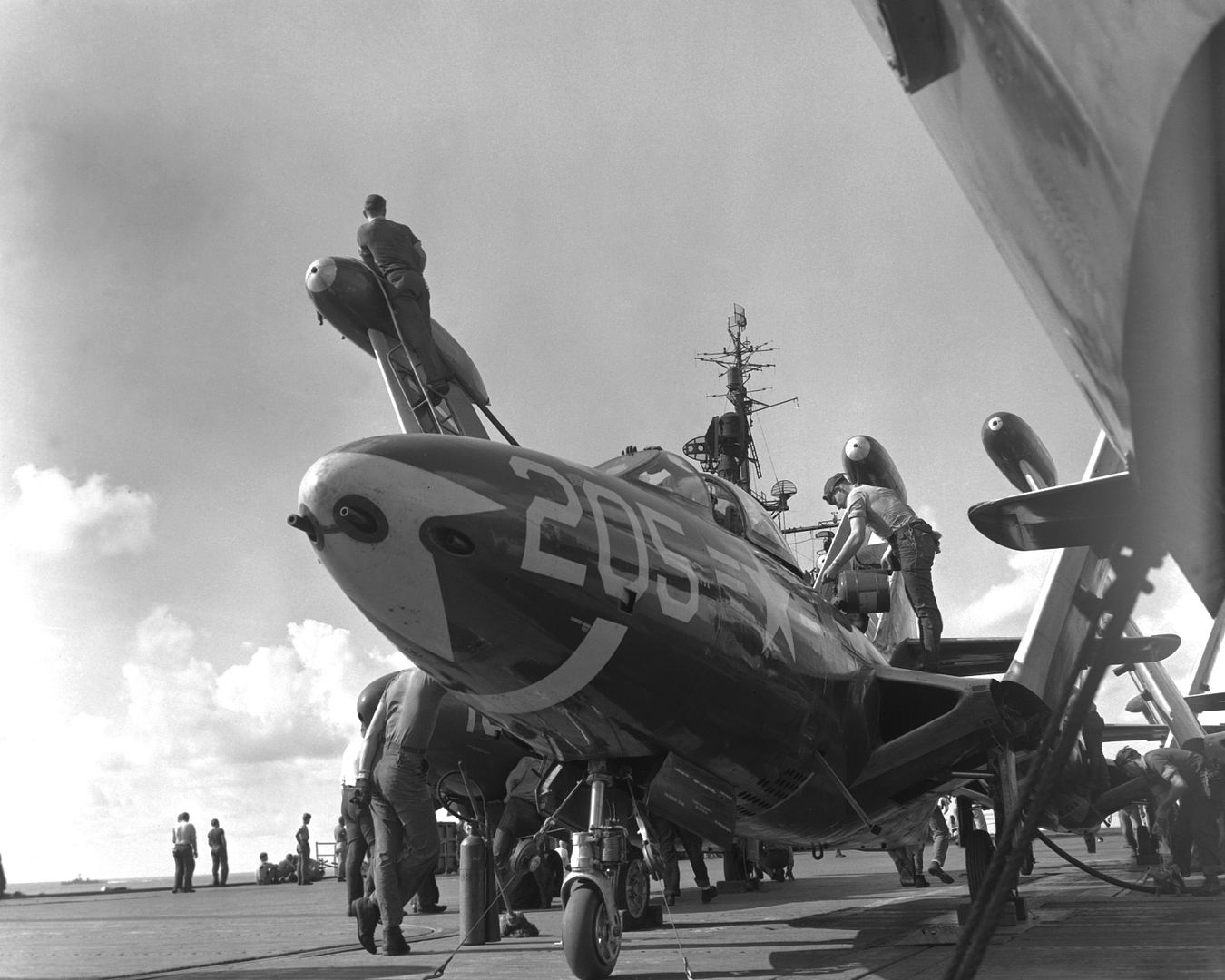
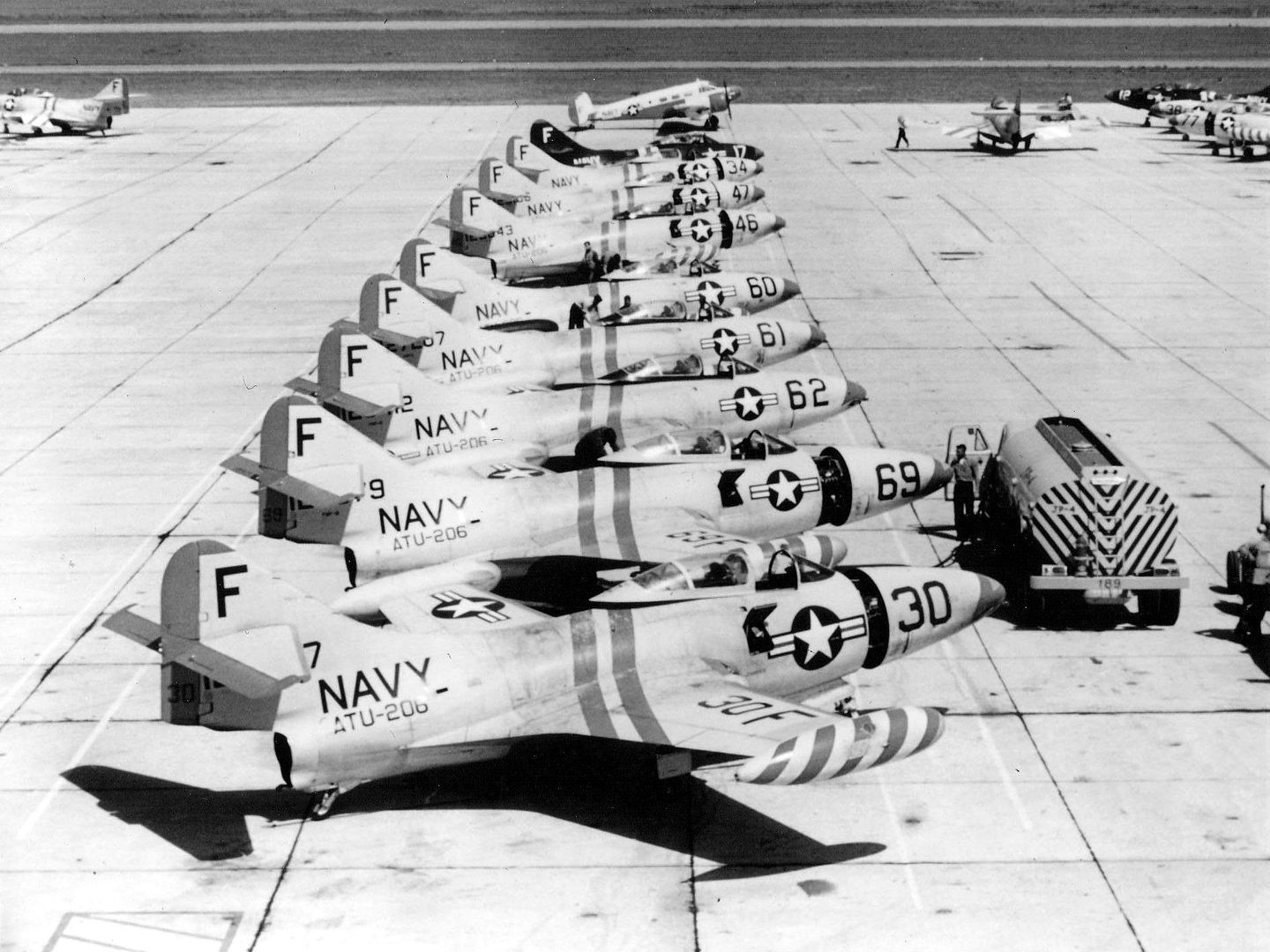
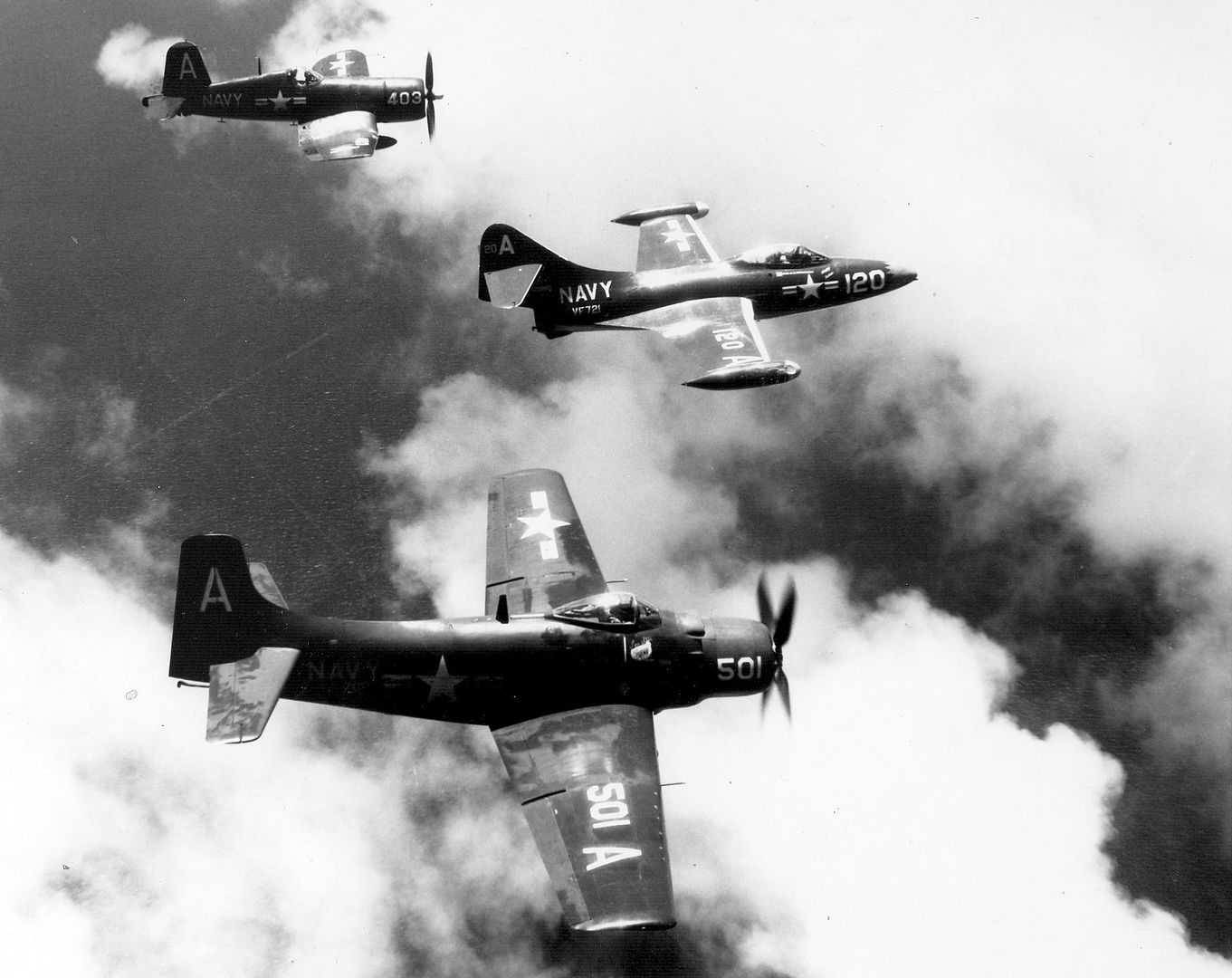
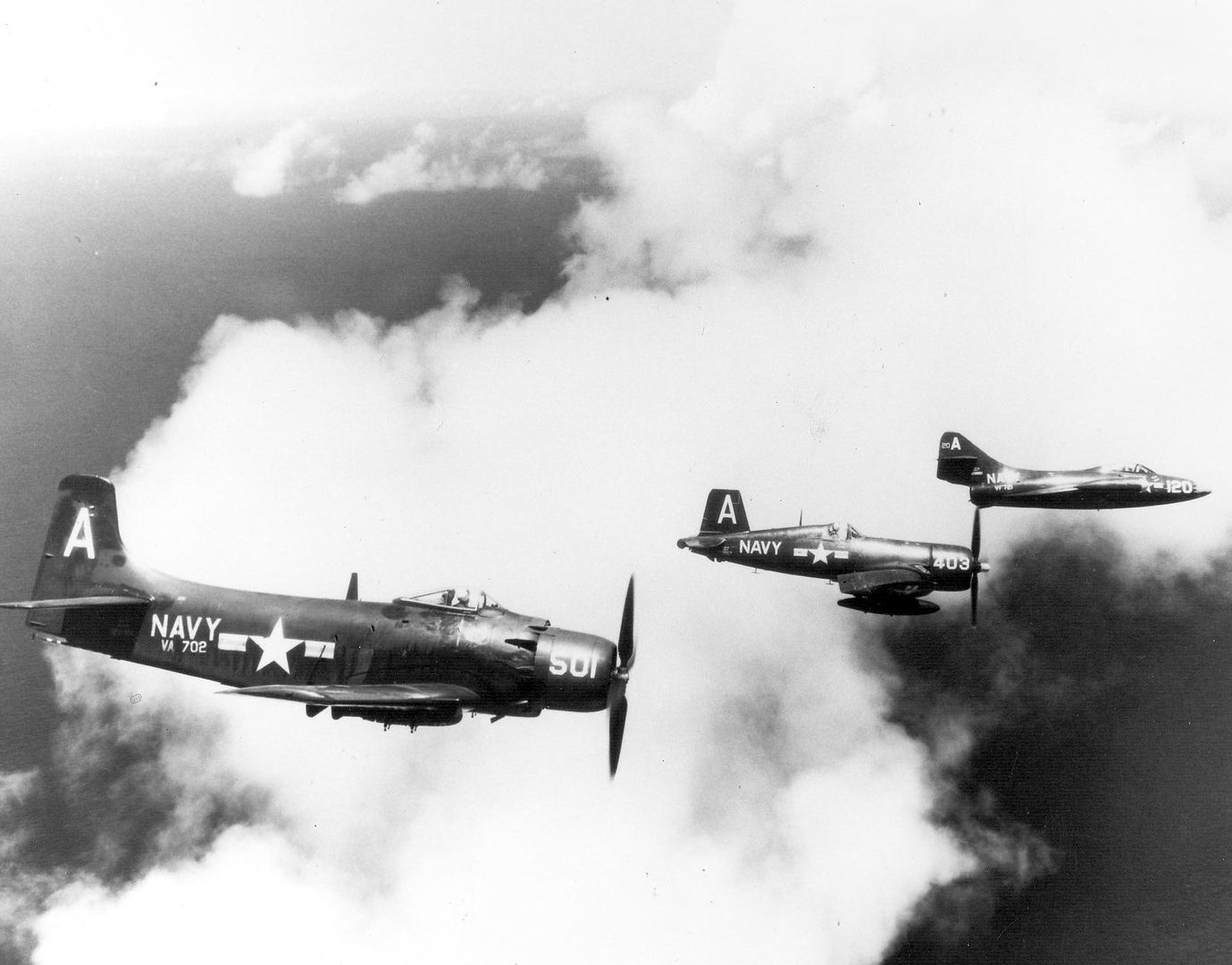
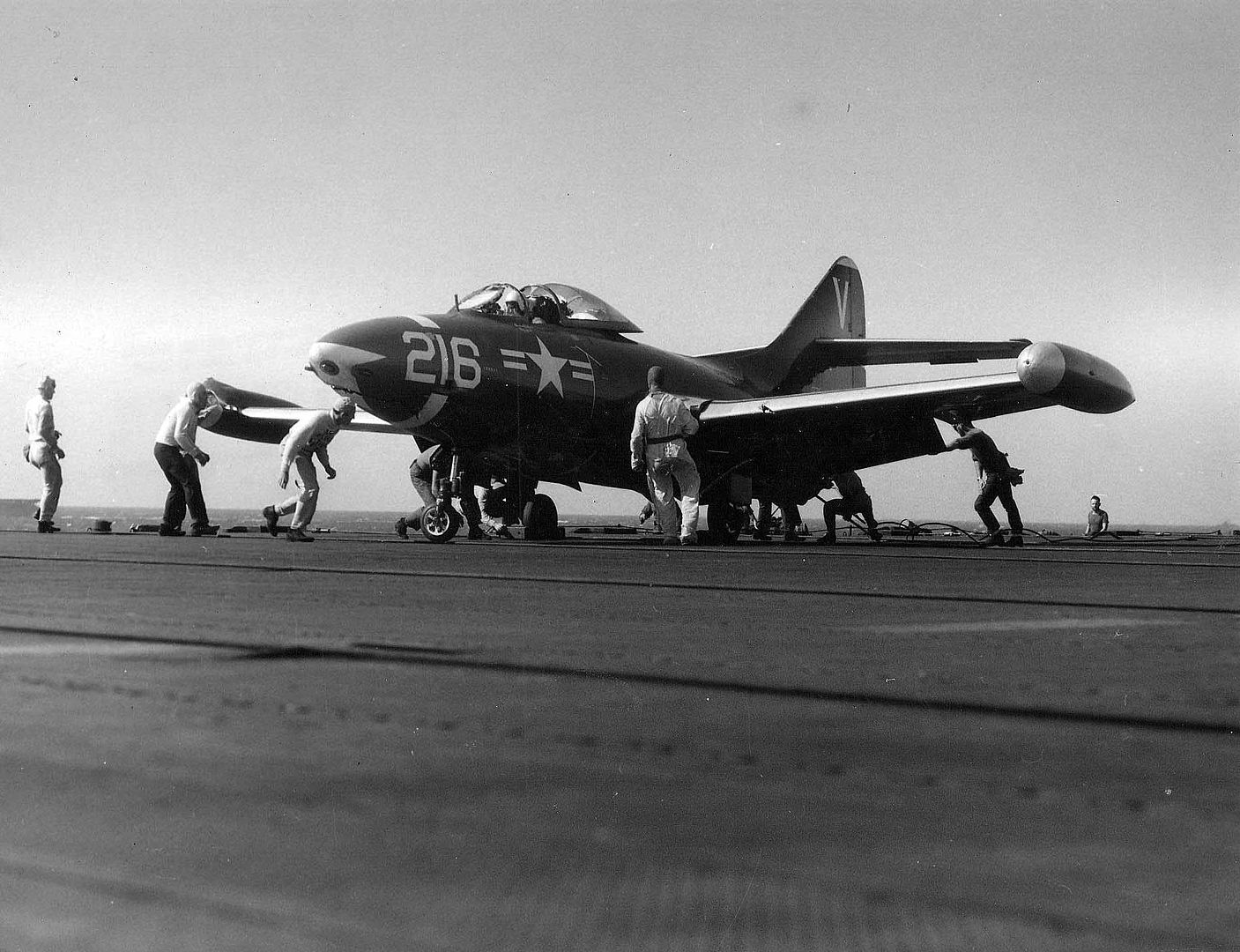
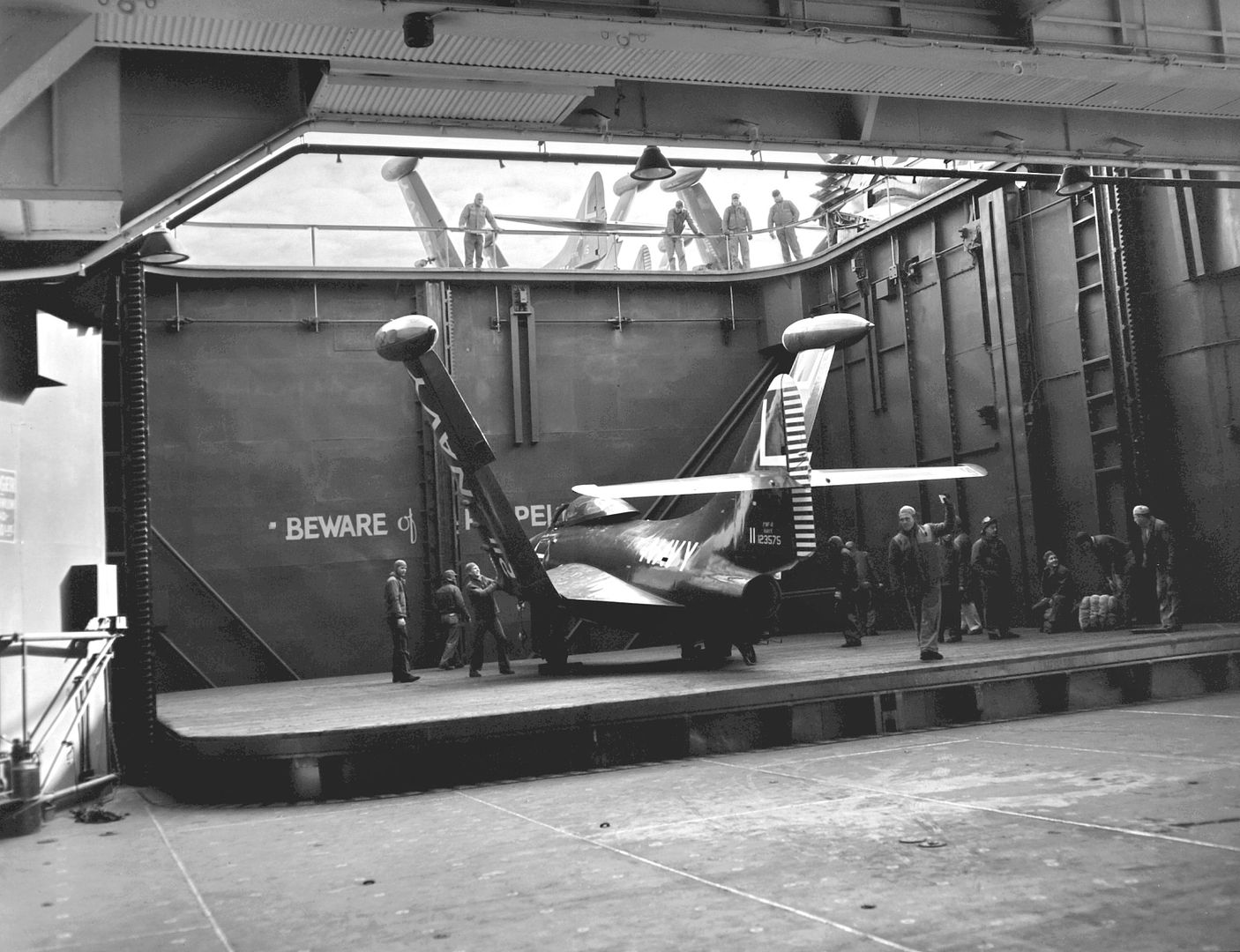
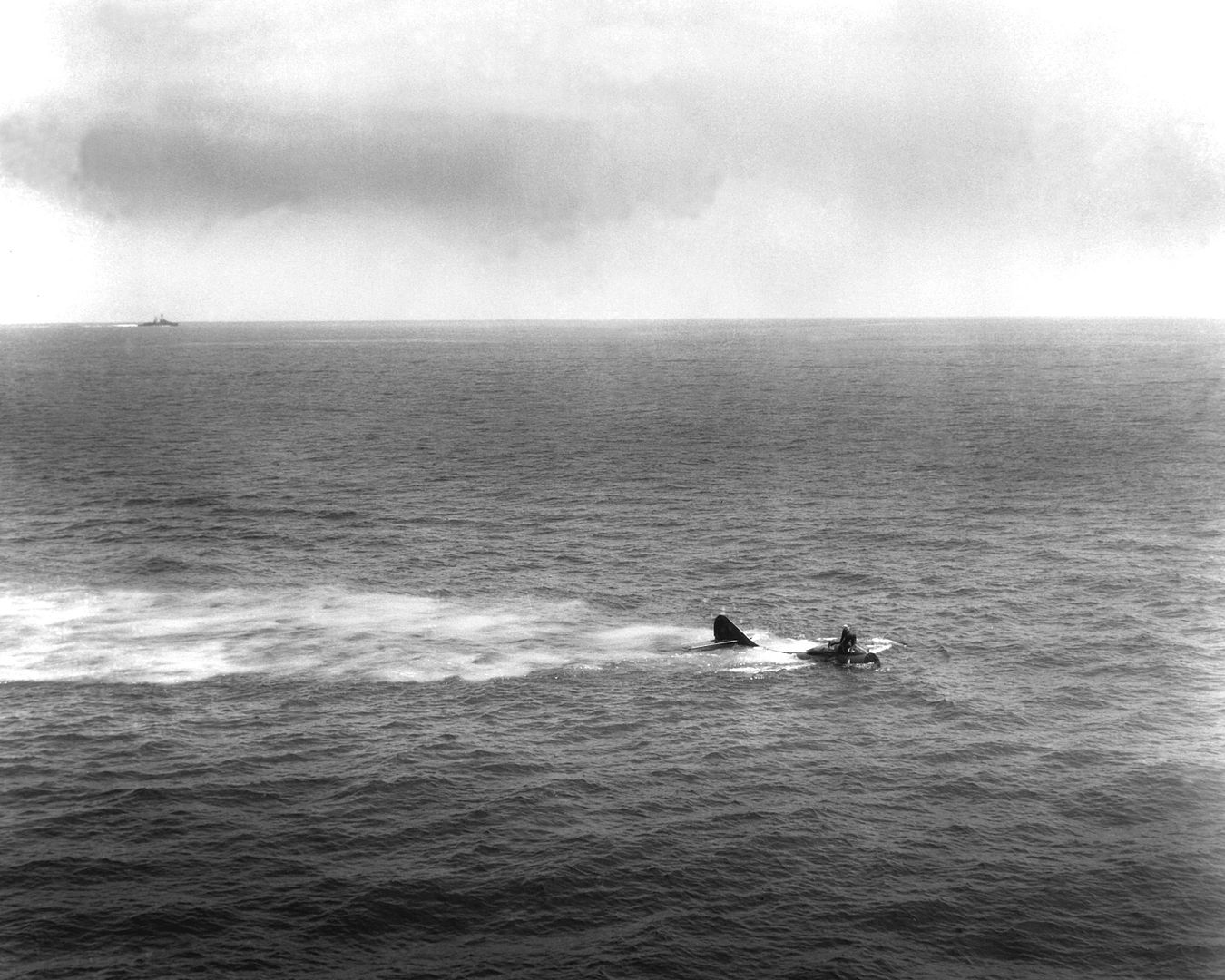
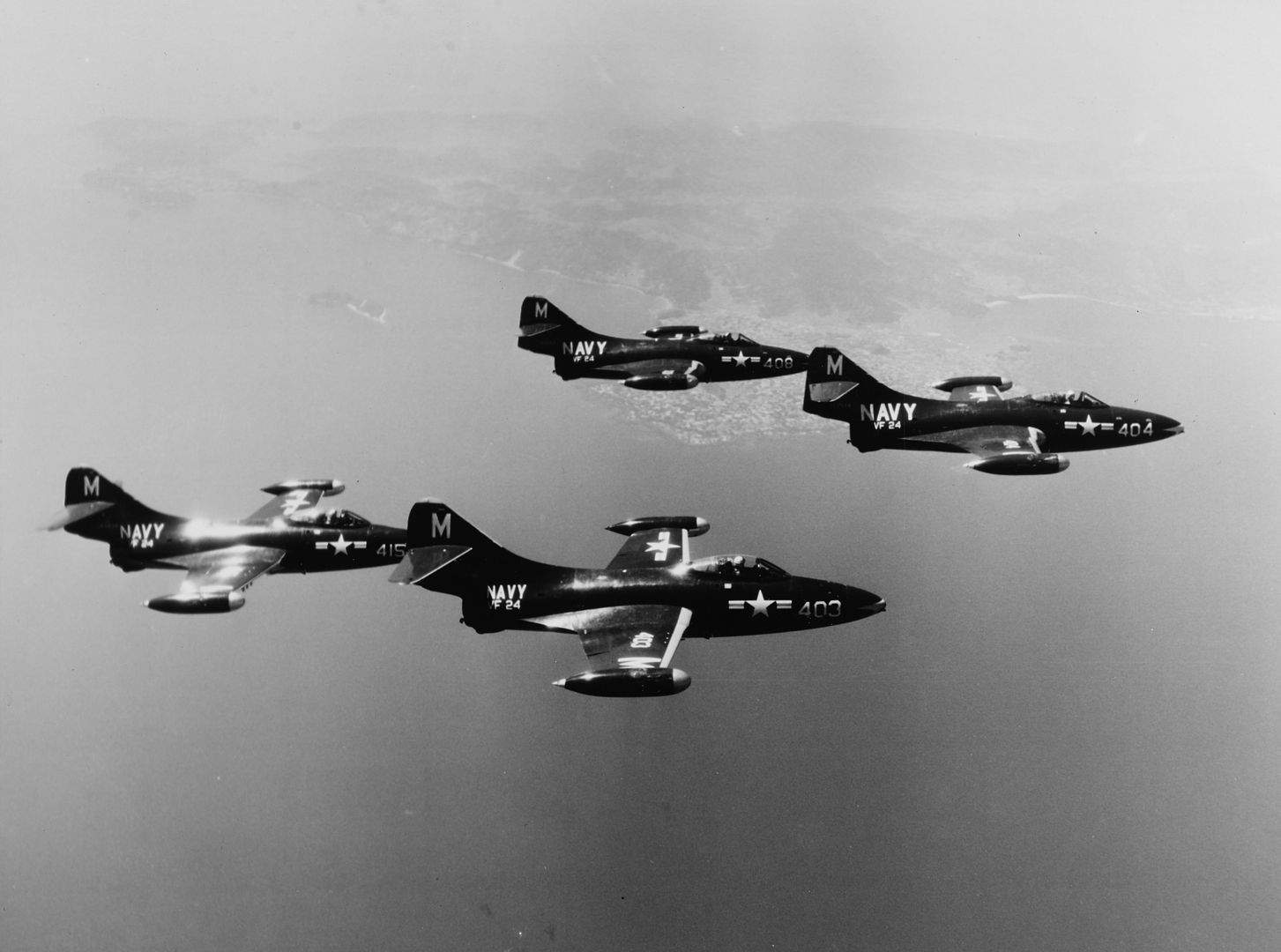
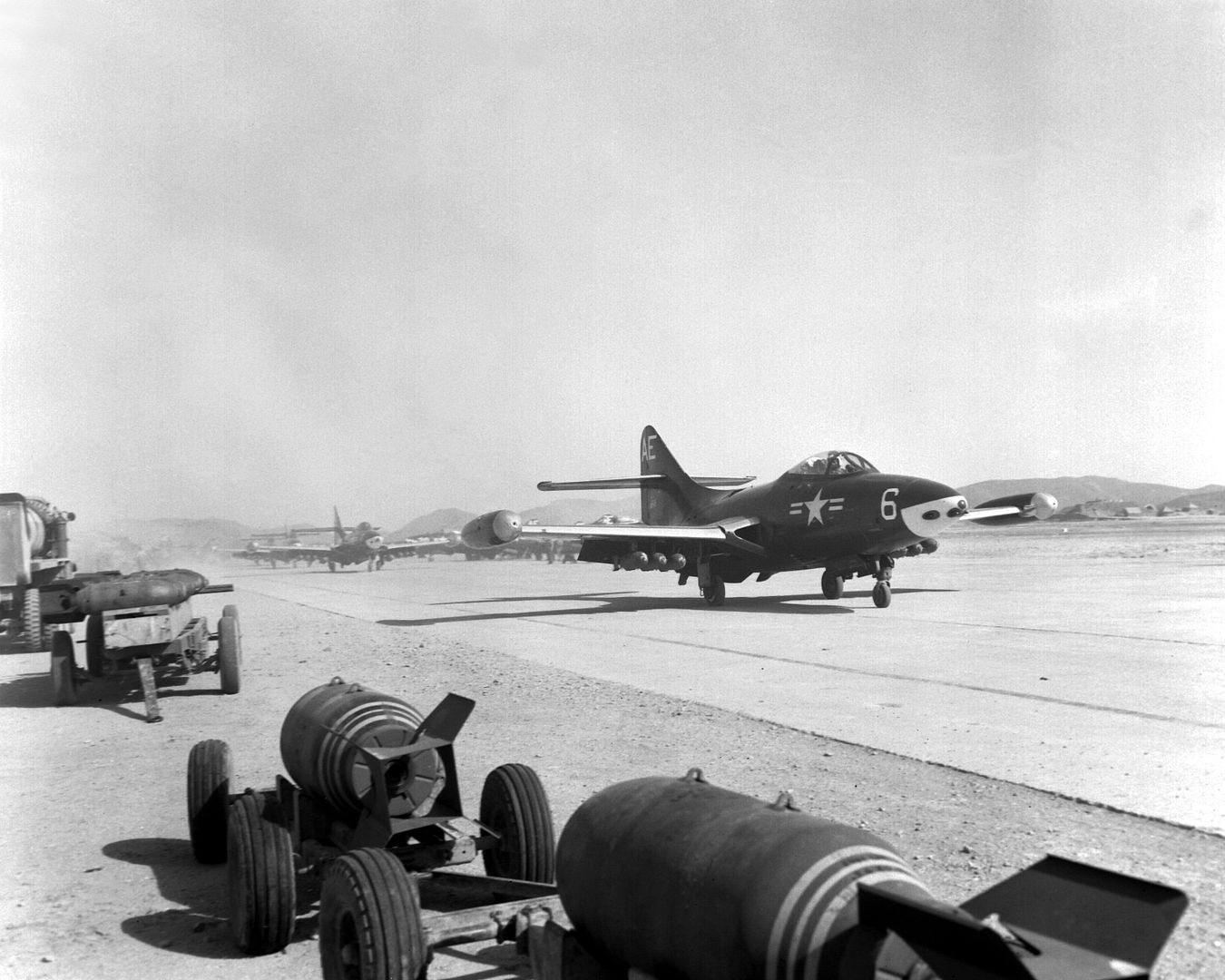
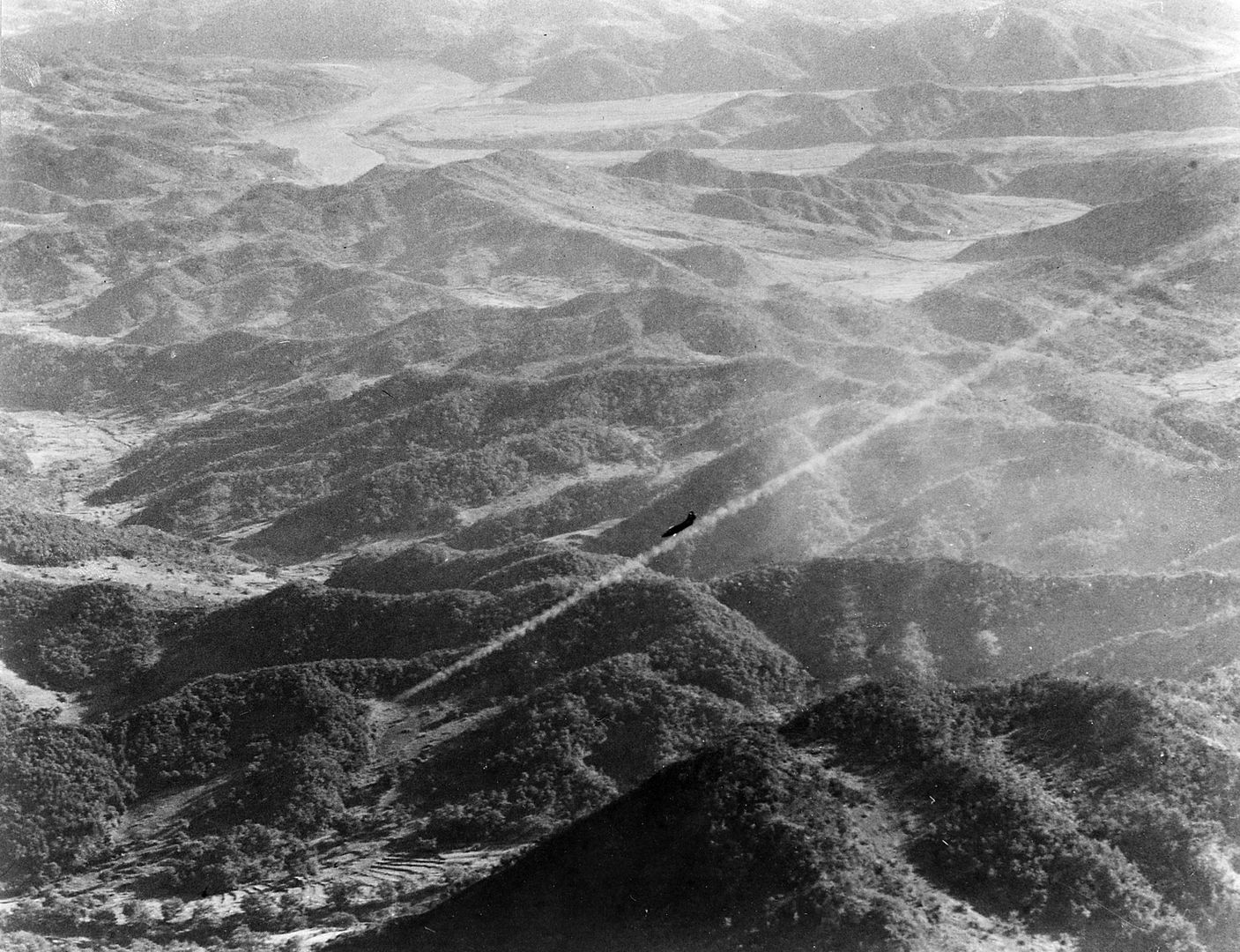
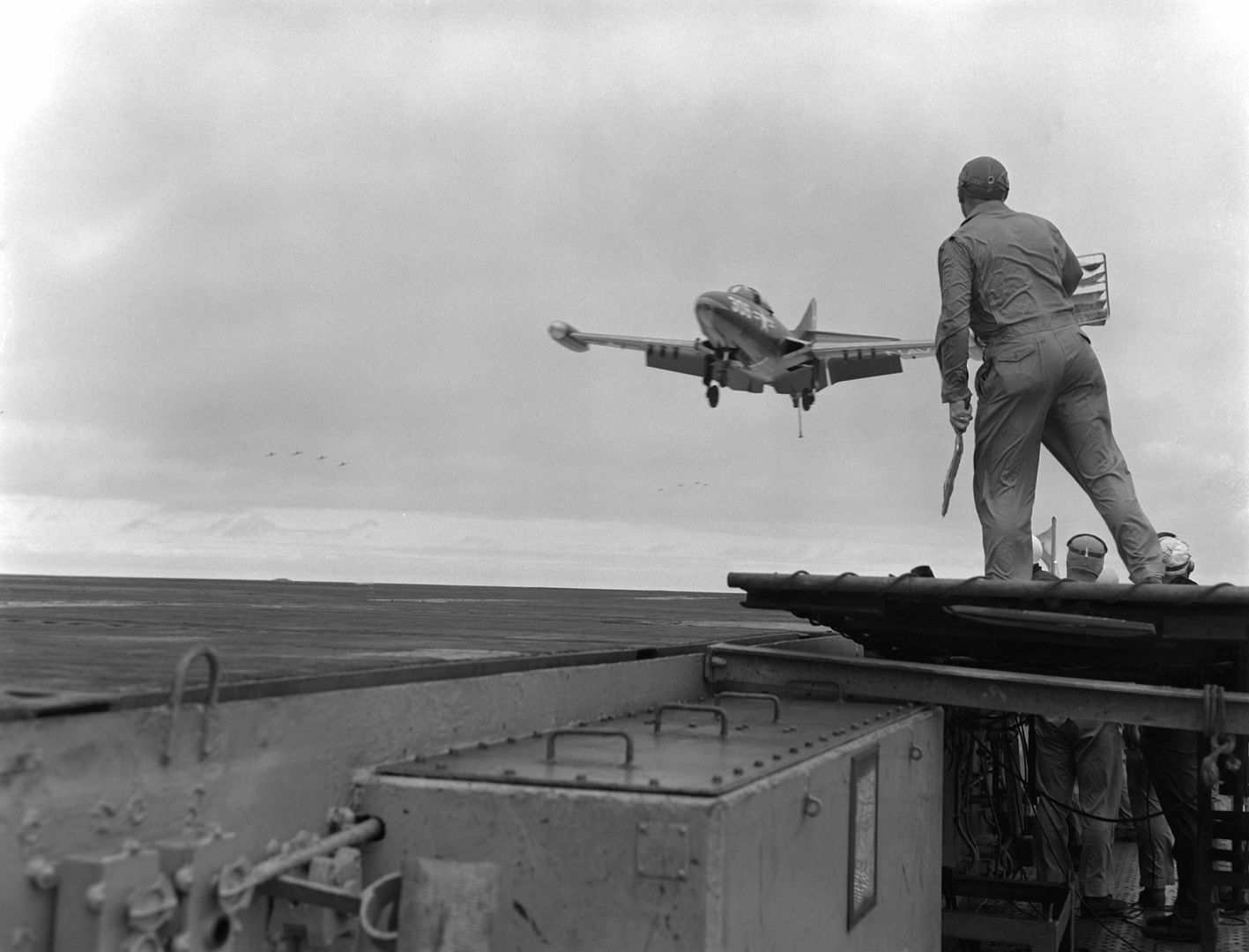
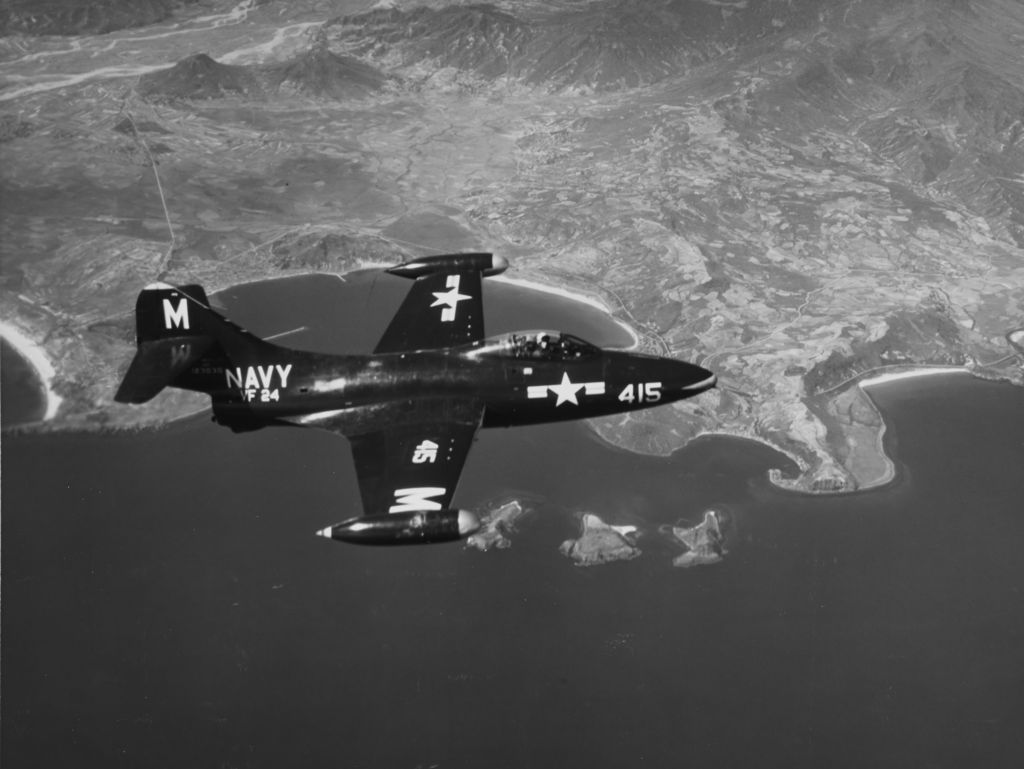
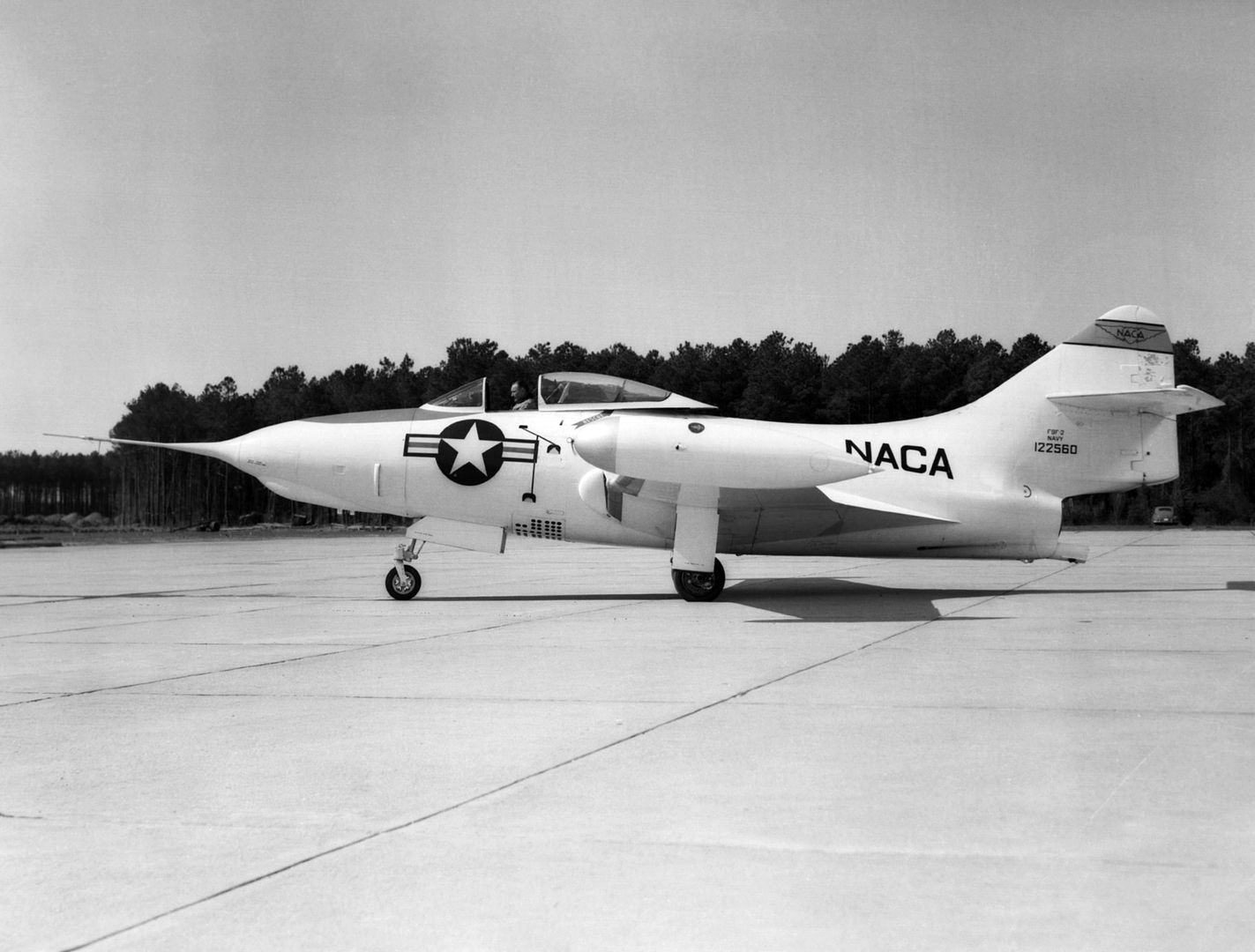
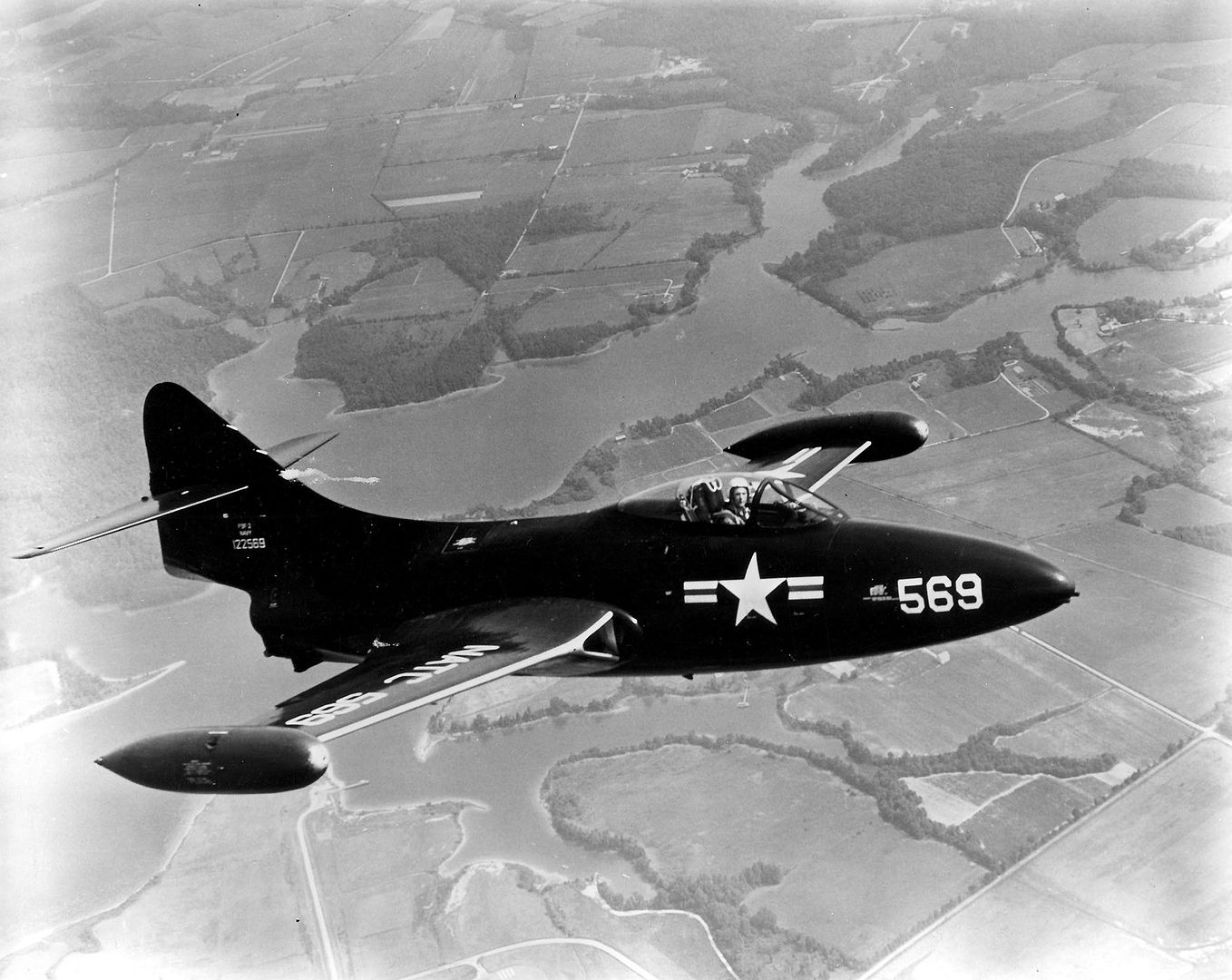
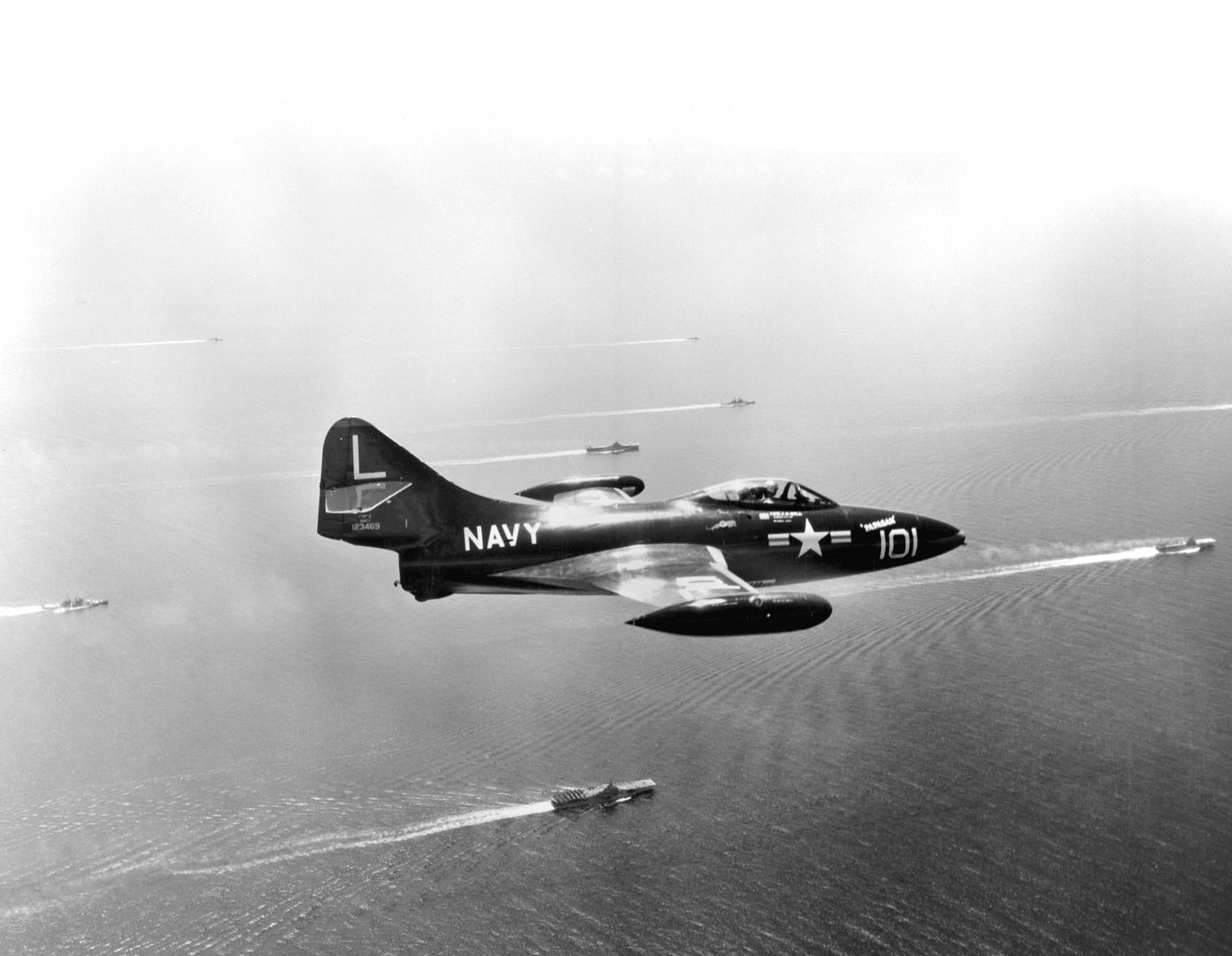
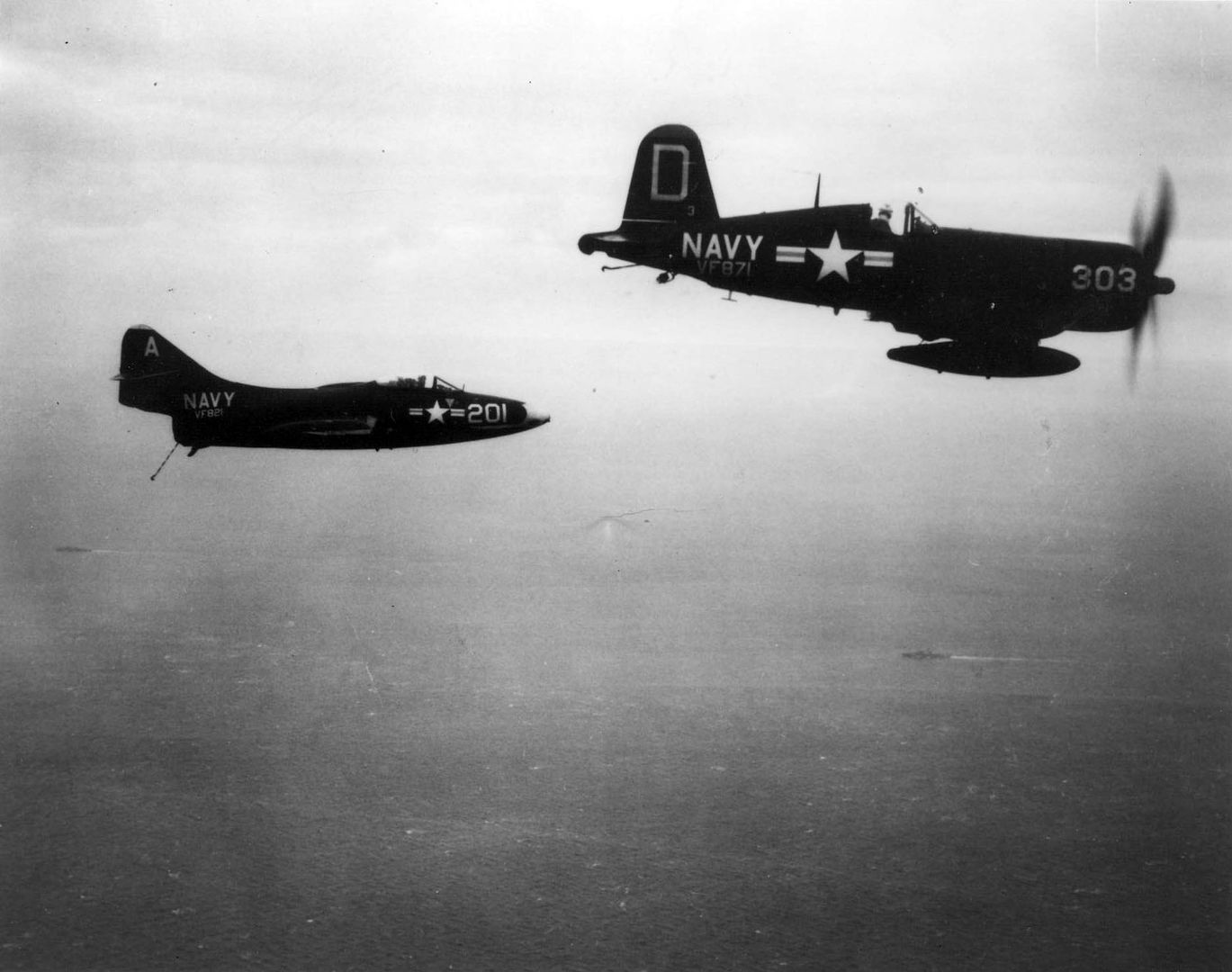
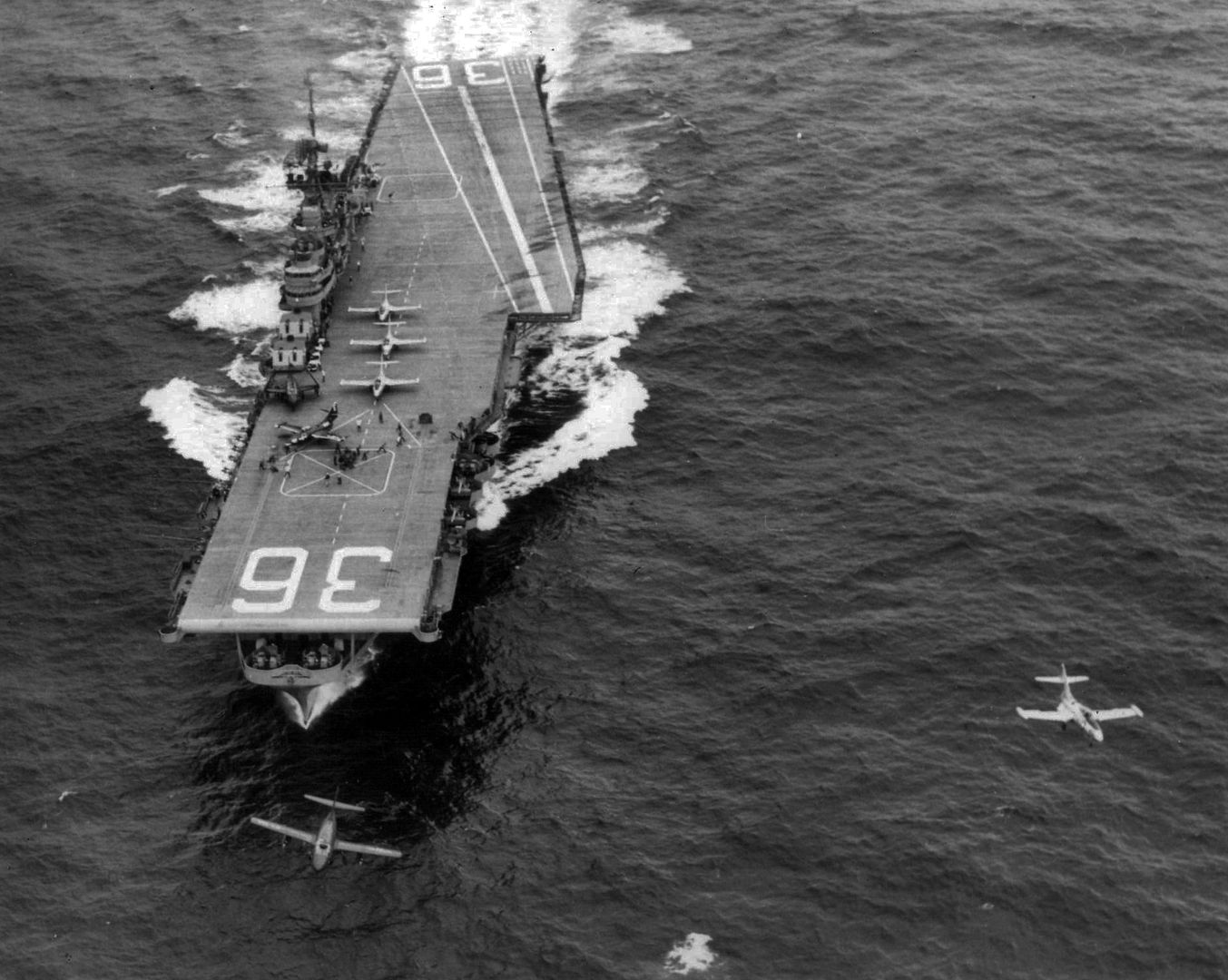
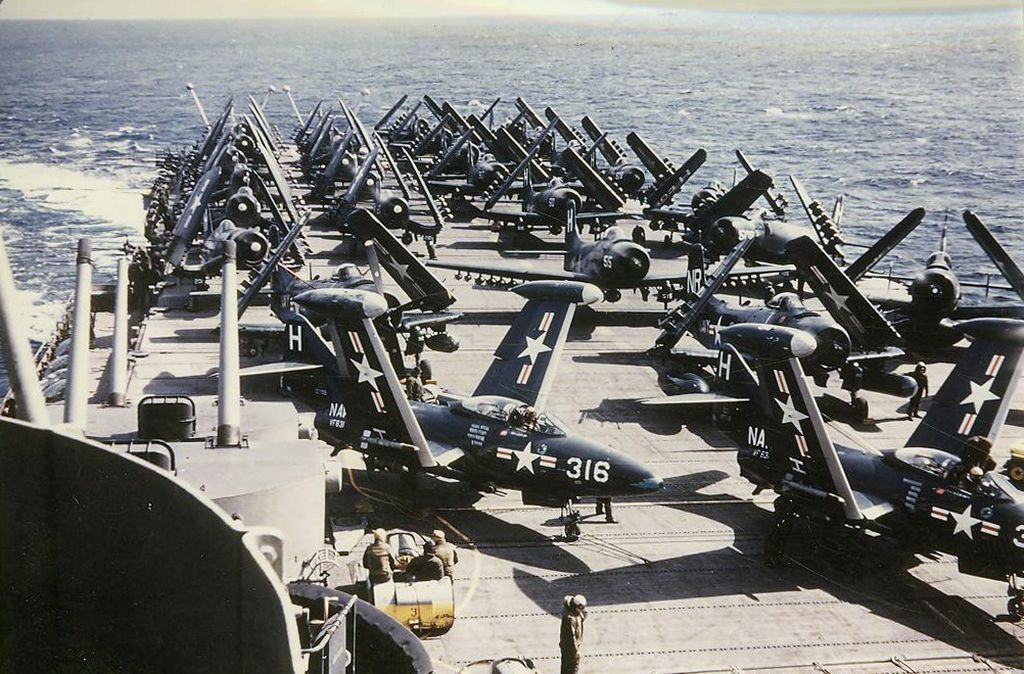

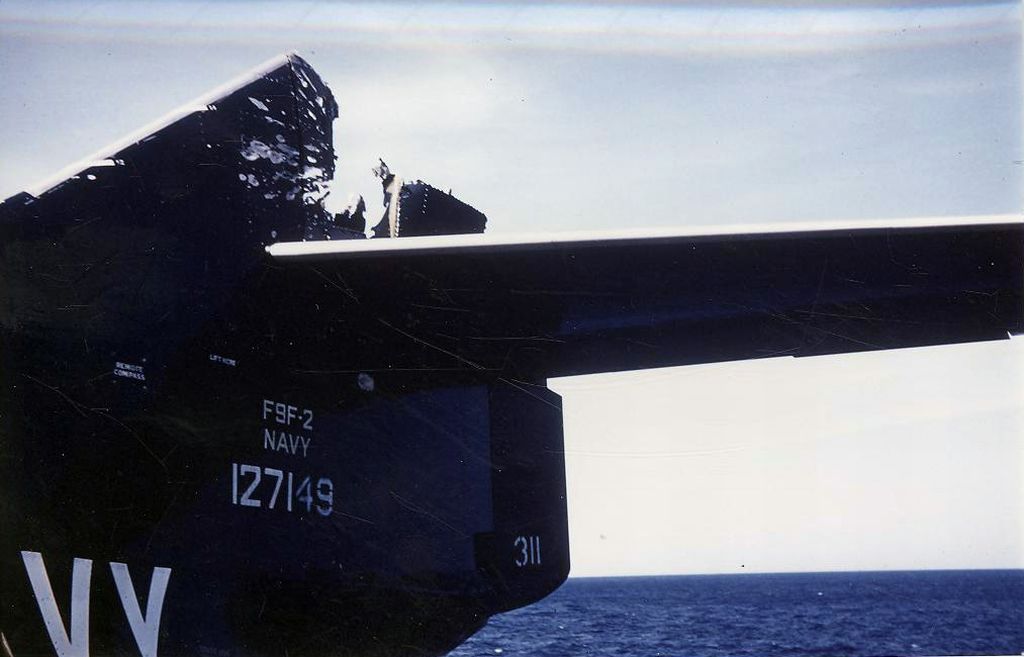
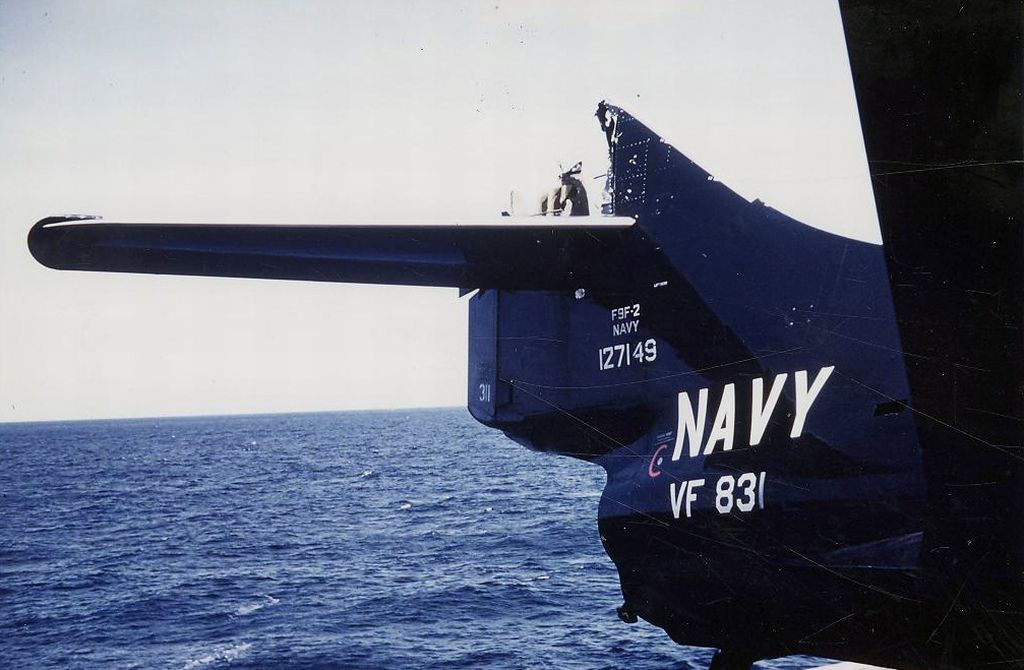
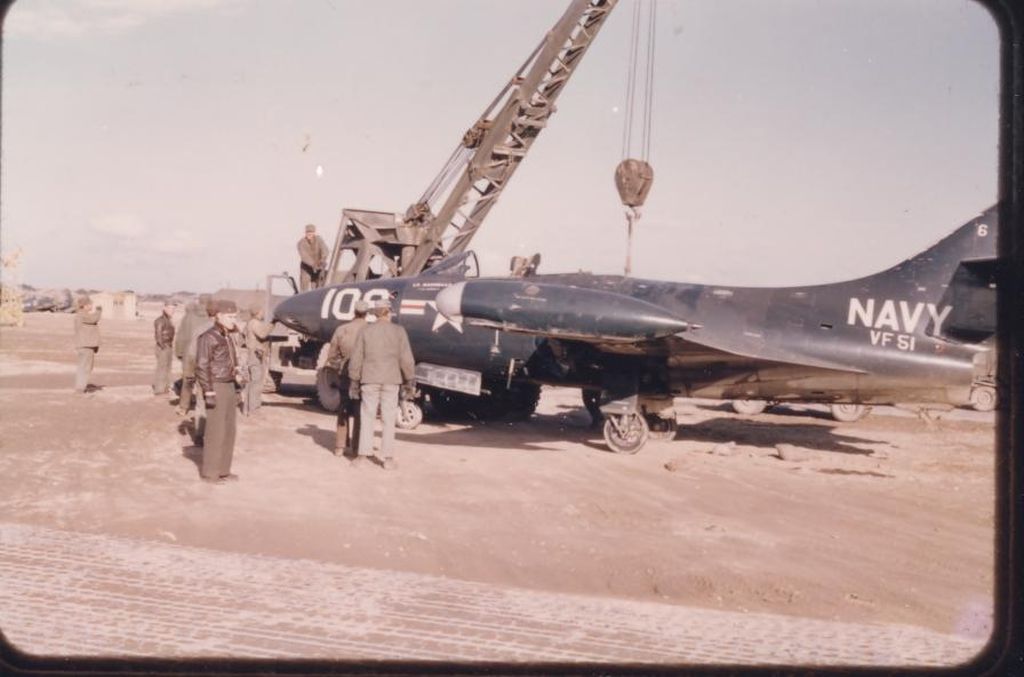
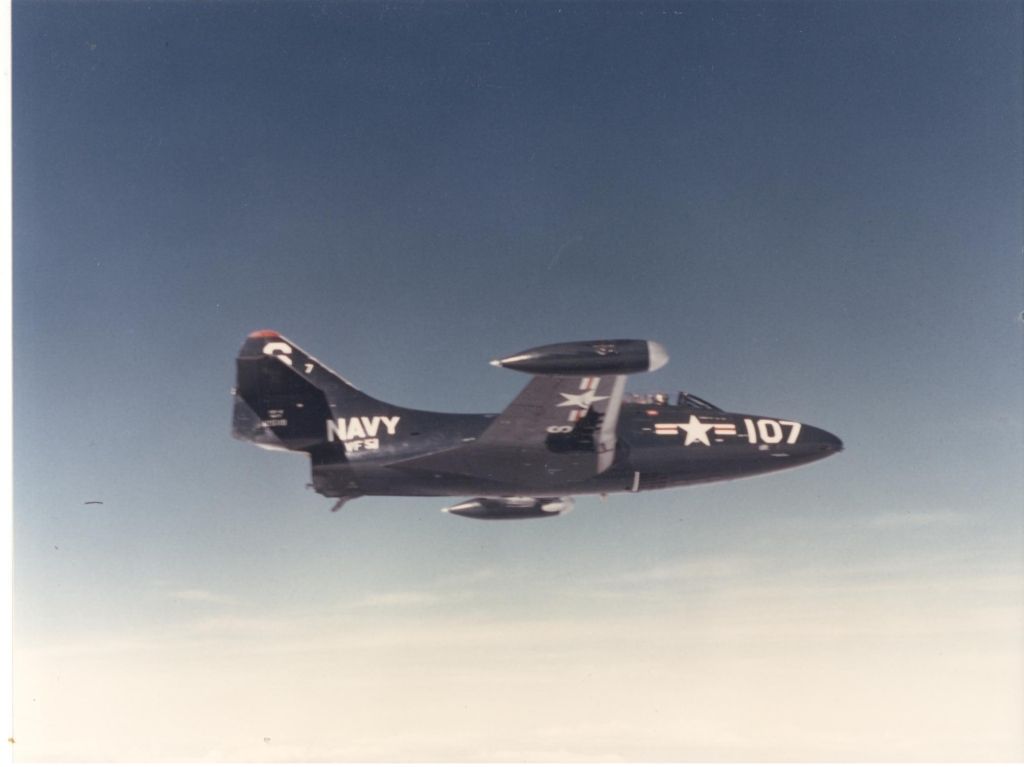
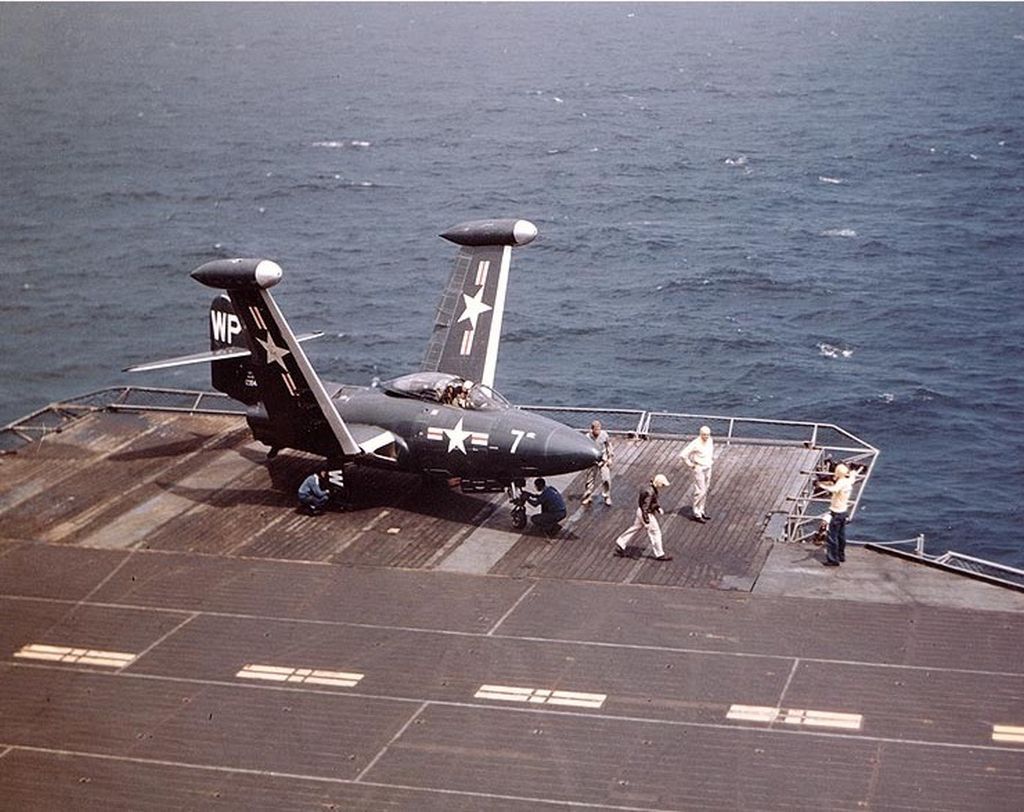

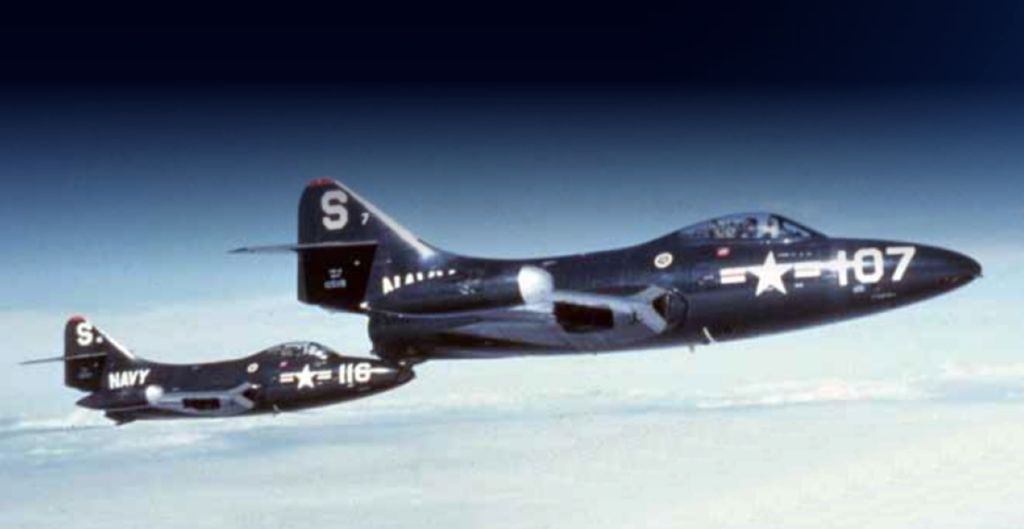

A substantial number of early production F9F-2s were modified as F9F-2B fighter bombers by the addition of four bomb racks underneath each wing. The inboard rack could carry either a 150-gallon drop tank or a 1000-pound bomb, whereas the three outboard racks could carry 250-pound bombs or 5-inch HVAR rockets. Maximum load was 2000 pounds. Beginning with the 365th F9F-2 (BuNo 125083), these racks were installed at the factory. After most F9F-2s had been brought up to F9F-2B standards, the B suffix was usually dropped.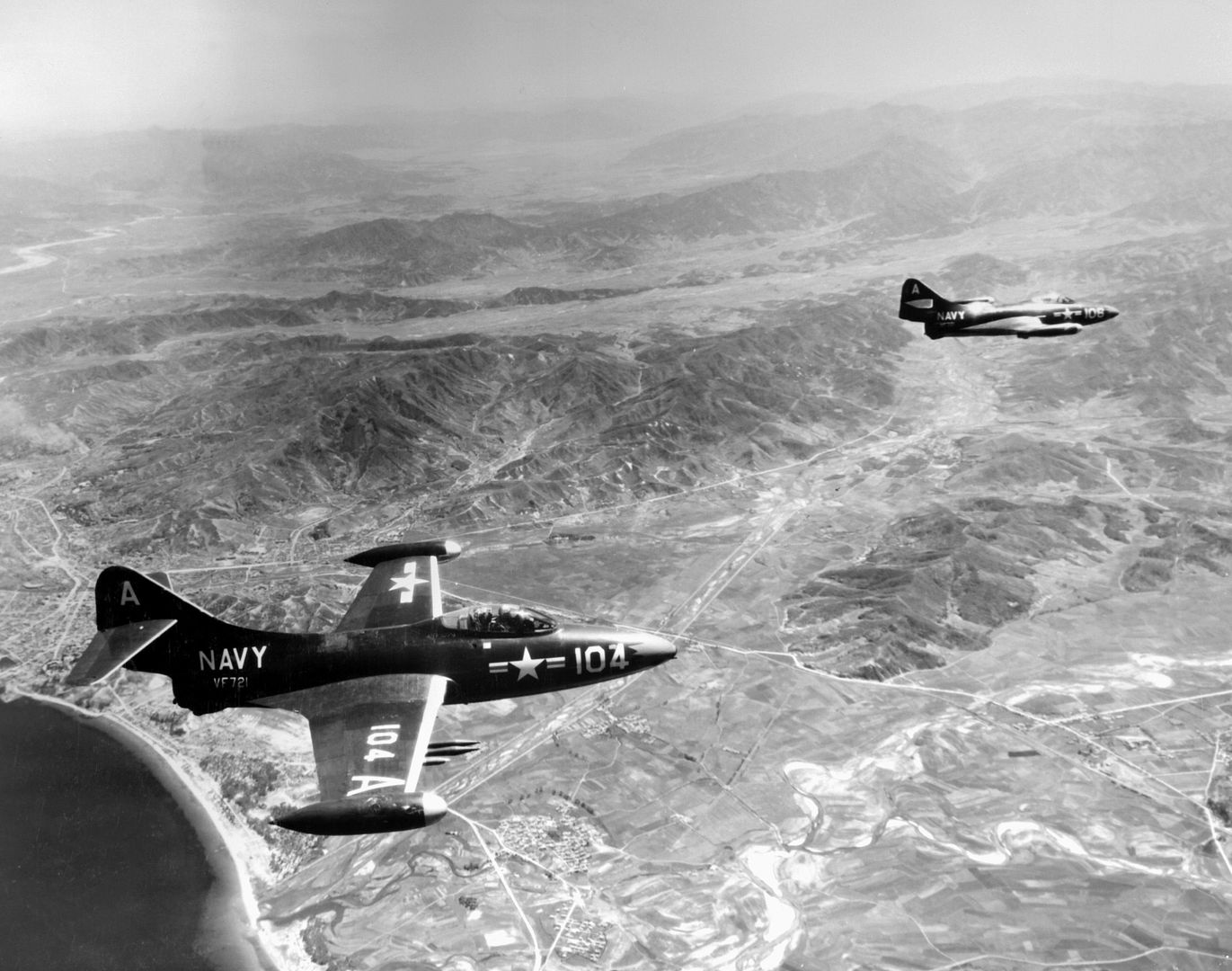
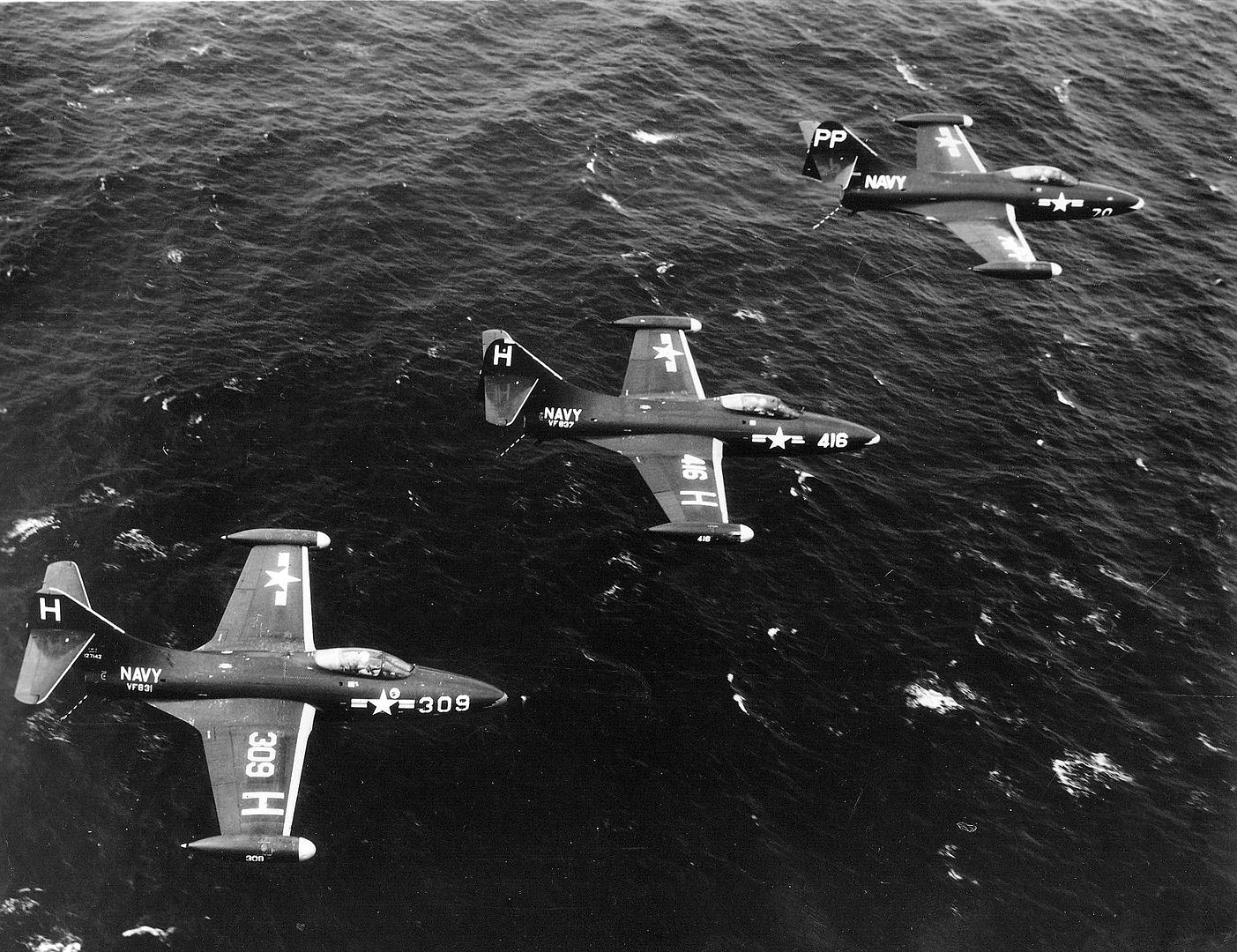
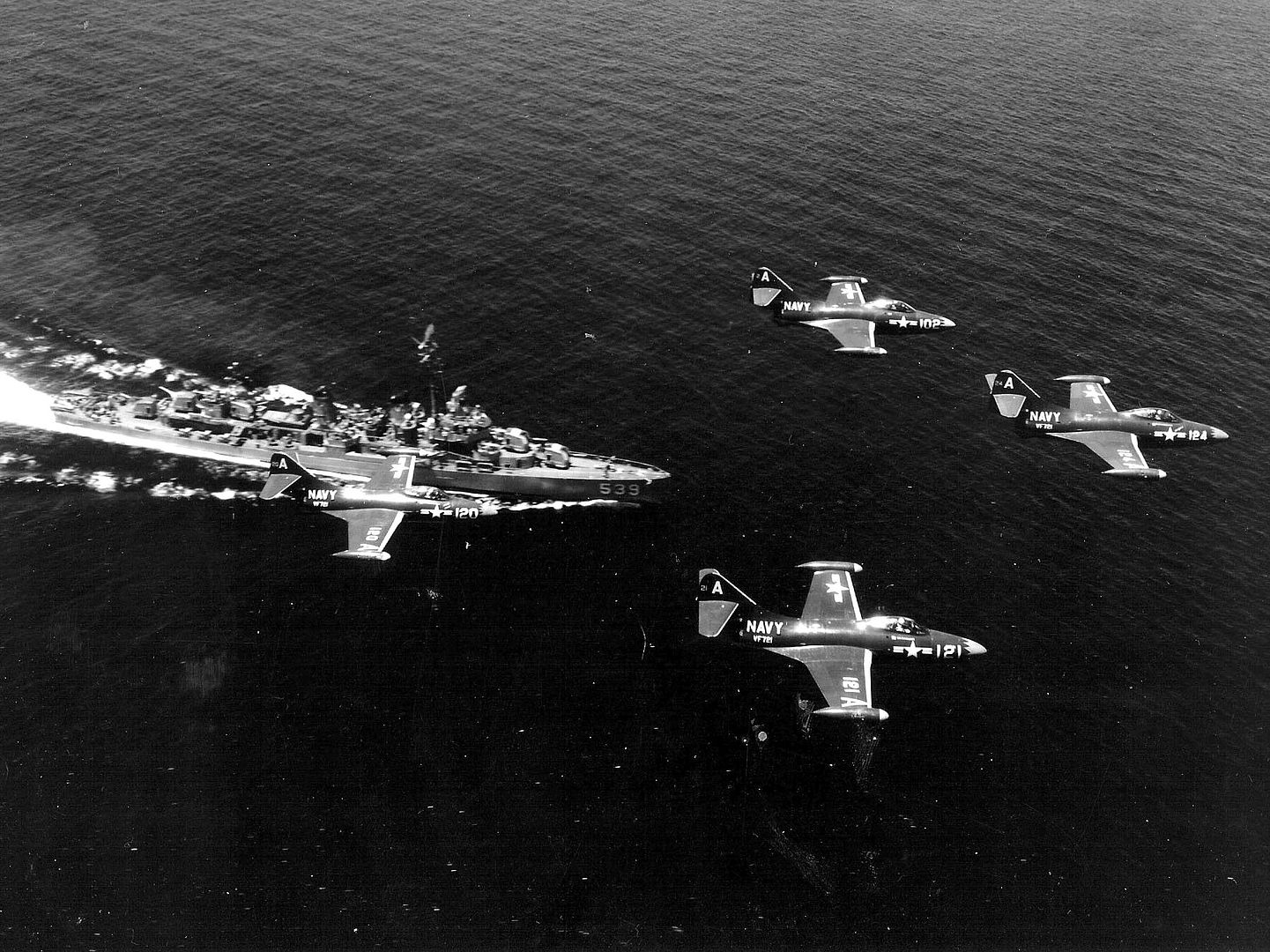
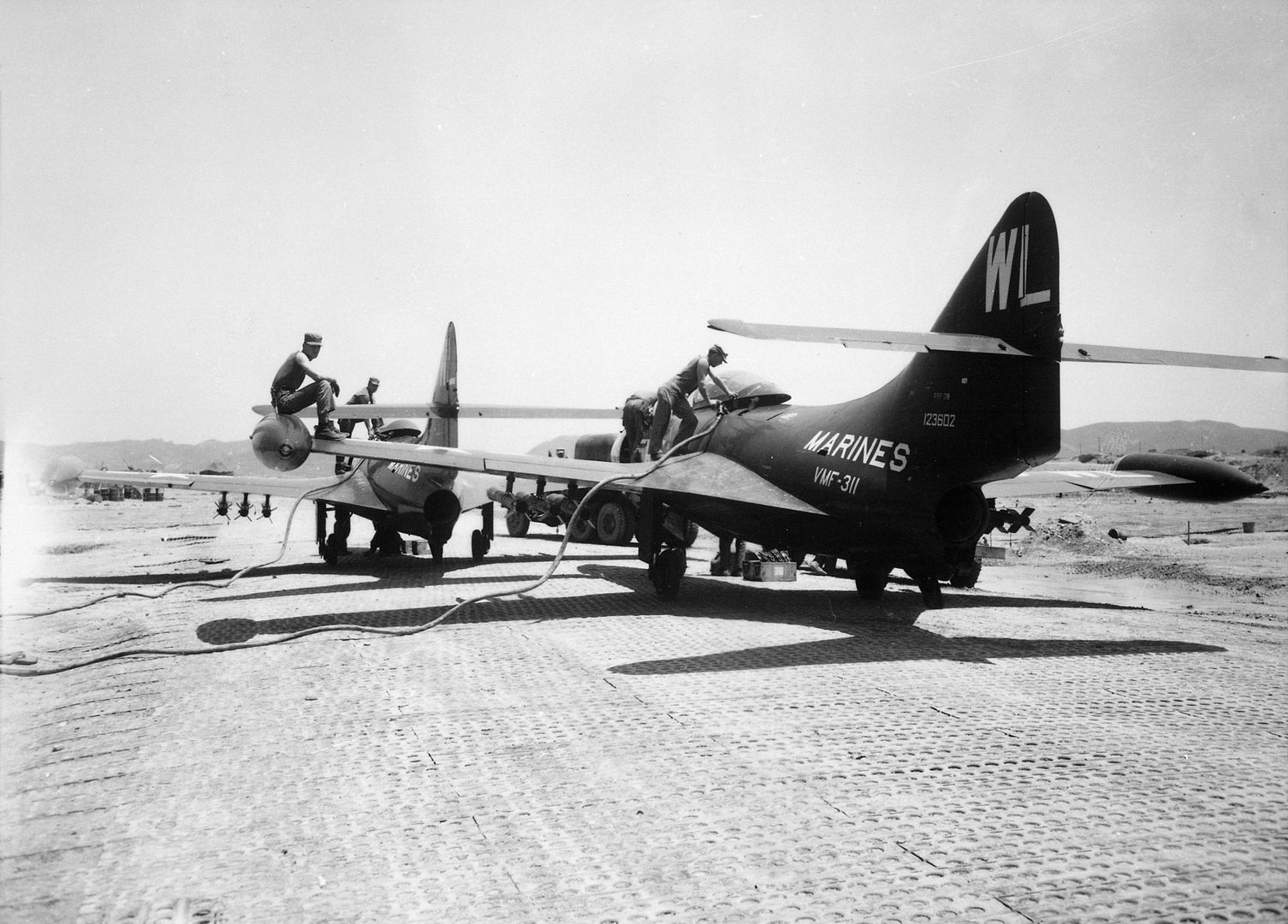



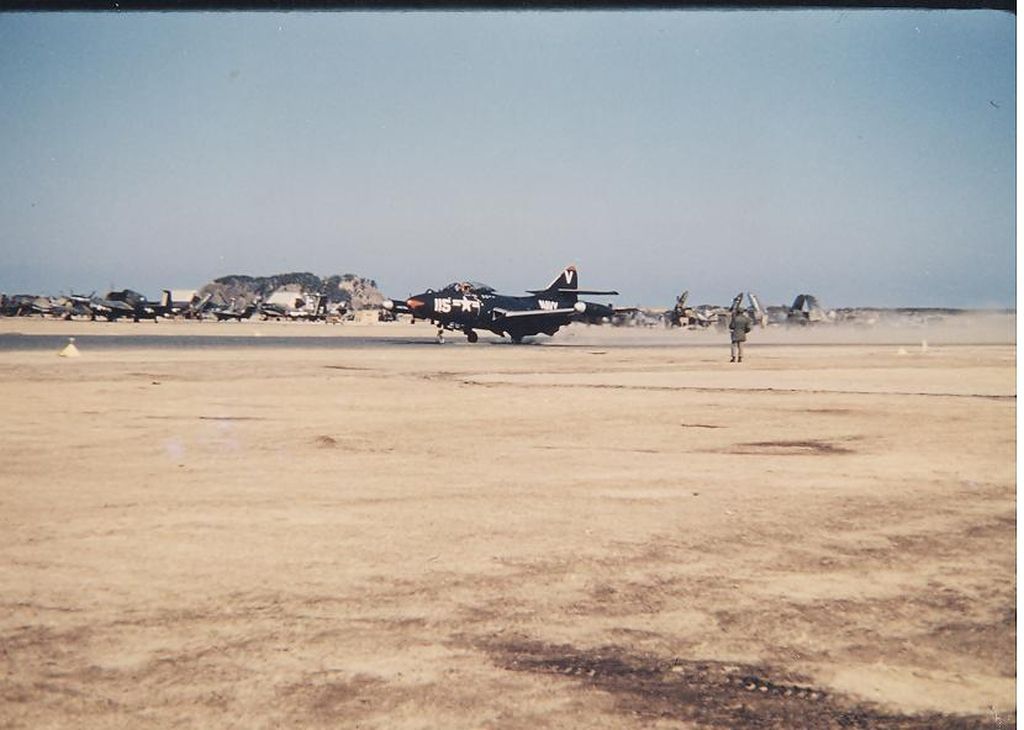
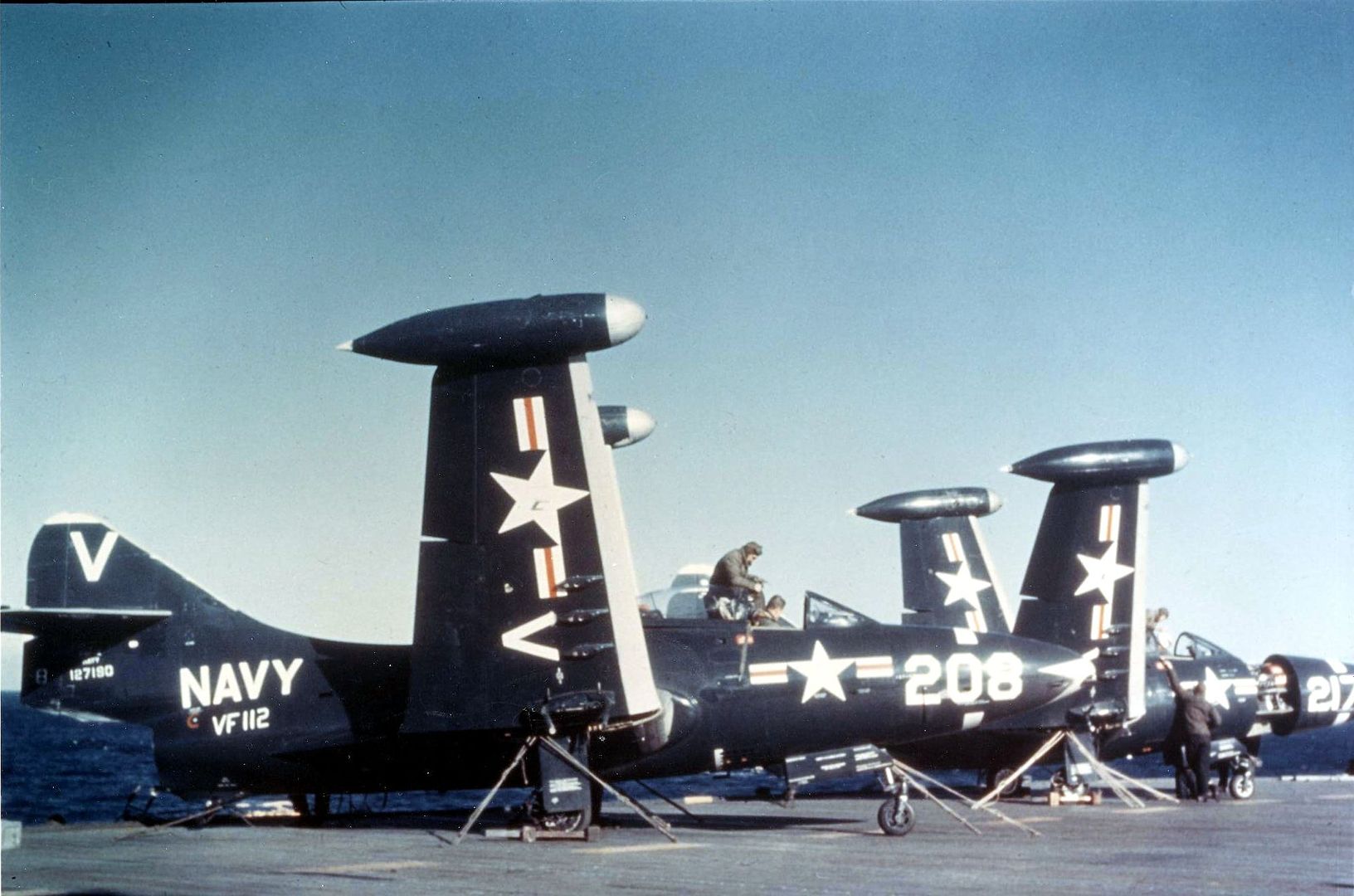
When the Korean War began in June 1950, the Navy had no jet-powered reconnaissance aircraft, since the McDonnell F2H-2P Banshee still had not undergone its first flight trials. As a stopgap measure, a small number of F9F-2s were modified as unarmed photographic reconnaissance aircraft under the designation F9F-2P. The four 20-mm cannon were removed and replaced by oblique and vertical cameras.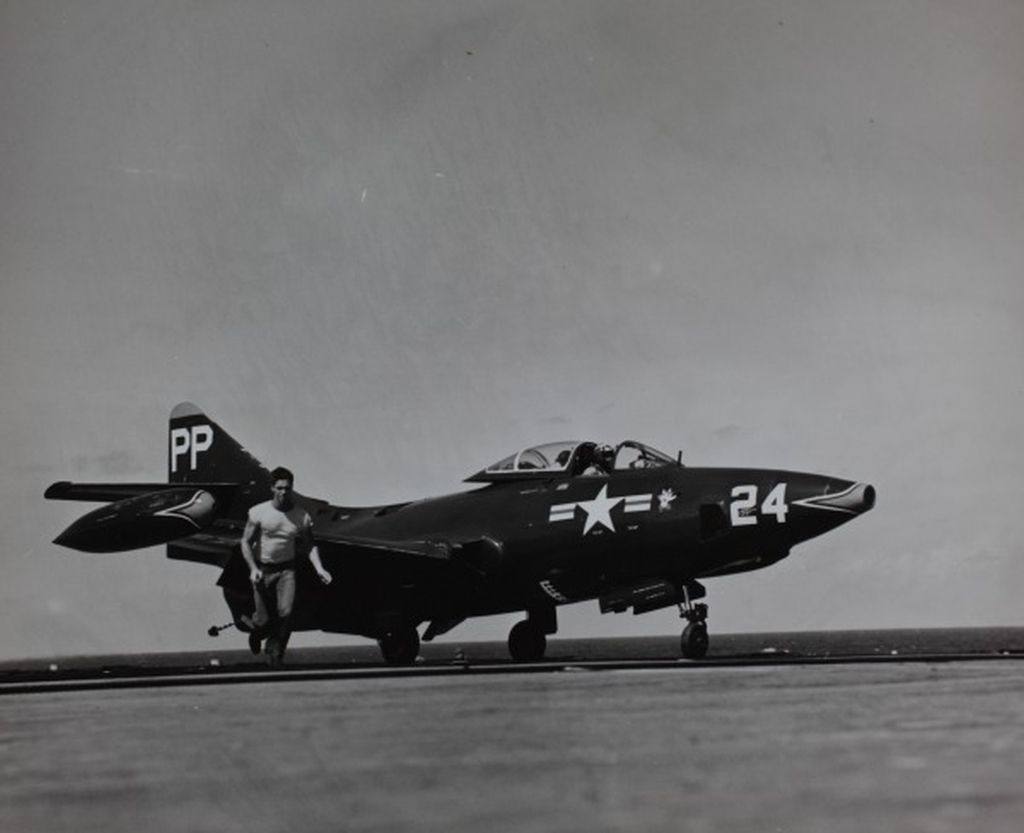
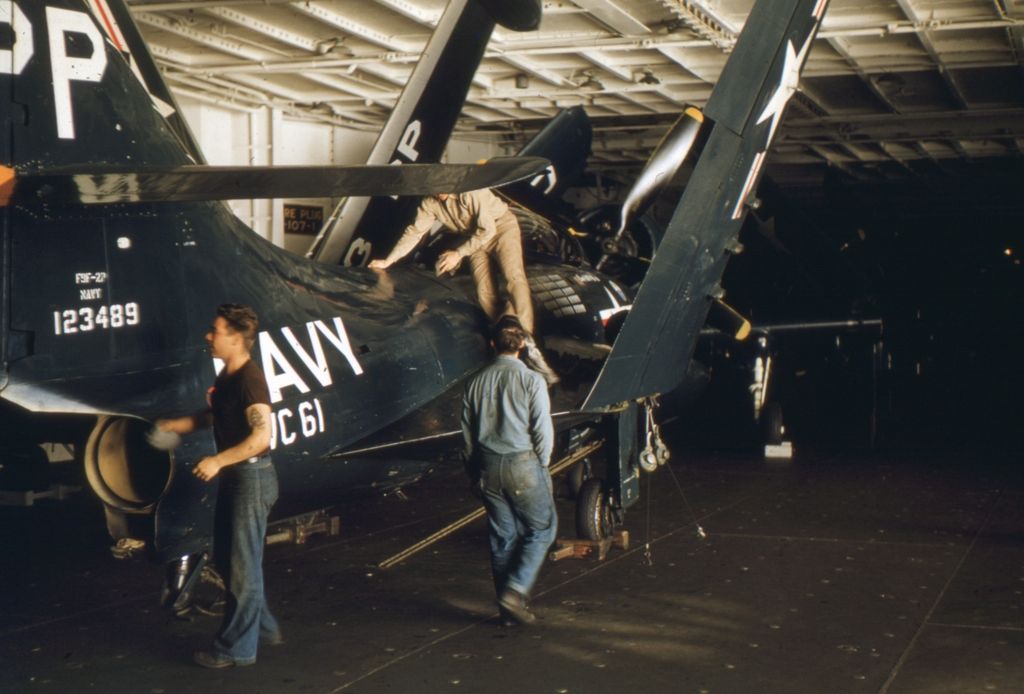
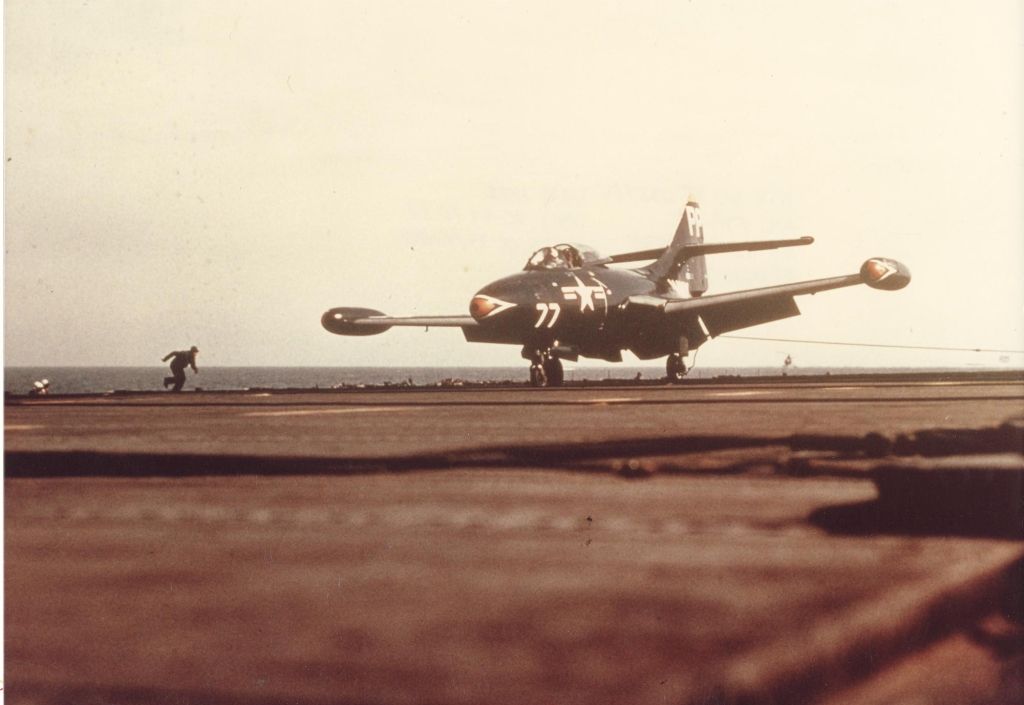
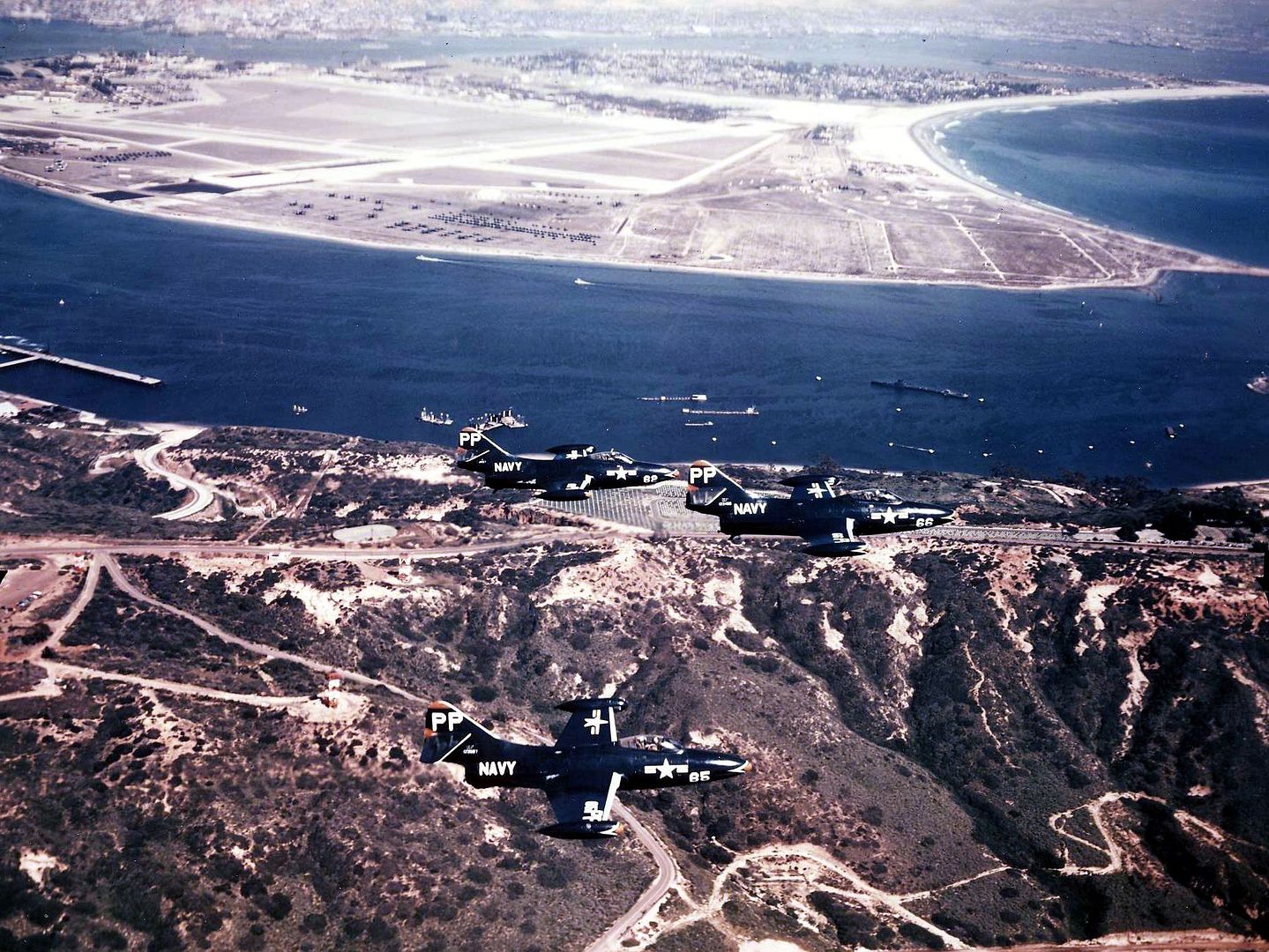
Following the withdrawal of the F9F-2 from service, a few F9F-2s were modified as unarmed radio-controlled drones under the designation F9F-2D. A few F9F-2s were modified as drone controllers under the designation F9F-2KD. F9F-2 BuNo 123050 is on display at the USN Pensacola Air Museum.
Serials of Grumman F9F-2 Panther:
122475 Grumman XF9F-2 Panther
122477 Grumman XF9F-2 Panther
122563 Grumman F9F-2 Panther
122567 Grumman F9F-2 Panther
122569 Grumman F9F-2 Panther
122570 Grumman F9F-2 Panther
122572 Grumman F9F-2 Panther
122586/122589 Grumman F9F-2 Panther
123016/123019 Grumman F9F-2 Panther
123044/123067 Grumman F9F-2 Panther
123077/123083 Grumman F9F-2 Panther
123397/123713 Grumman F9F-2 Panther
125083/125155 Grumman F9F-2 Panther
127086/127215 Grumman F9F-2 Panther
Specification of the Grumman F9F-2 Panther:
Engine: One Pratt & Whitney J42-P-6/P-8 turbojet, rated at 5000 lb.s.t. for takeoff dry and 5950 lb.s.t. for takeoff with water injection. Performance: Maximum speed 575 mph at sea level, 545 mph at 22,000 feet, 529 mph at 35,00 feet. Cruising speed 487 mph Landing speed 105 mph . Initial climb rate 5140 feet per minute. Service ceiling 44,600 feet. Normal range 1353 miles. Dimensions: wingspan 38 feet 0 inches, length 37 feet 5 3/8 inches, height 11 feet 4 inches, wing area 250 square feet. Weights: 9303 pounds empty, 14,235 pounds combat, 16,450 pounds gross, 19,494 pounds maximum takeoff. Internal fuel capacity 923 US gallons Armament: four 20-mm cannon. Underwing loads of up to 2000 pounds of bombs and rockets could be carried on eight underwing racks.
The F9F-3 was developed in parallel with the F9F-2. It differed from the F9F-2 in being powered by the Allison J33 turbojet, which was approximately the same size as the J42 but was somewhat less powerful. The J33 had been planned as a second-source powerplant for the Panther in case the program to produce the Nene under license in the USA as the J42 proved unsuccessful. The first flight of the XF9F-3 (BuNo 122476) took place on August 16, 1948. It was powered by a 4600 lb.s.t. Allison J33-A-8 jet engine.
54 J33-powered F9F-3s were delivered to the Navy by Grumman between August 1948 and November 1949. They came off the production line in parallel with the J-42-powered F9F-2. Because of initially slow deliveries of J42 engines for the F9F-2, the F9F-3 was actually the first Panther version to enter service with the Navy, when F9F-3s replaced the FJ-1 Furies of VF-51 in May of 1949.
However, the J33 turned out in service to perform less well than the J42. In October 1949 virtually all F9F-3s were re-engined with 5750 lb.s.t. Pratt & Whitney J42 turbojets, and thereby became indistinguishable from the F9F-2. No further F9F-3s would be built, and further Navy contracts would be for the F9F-2 version.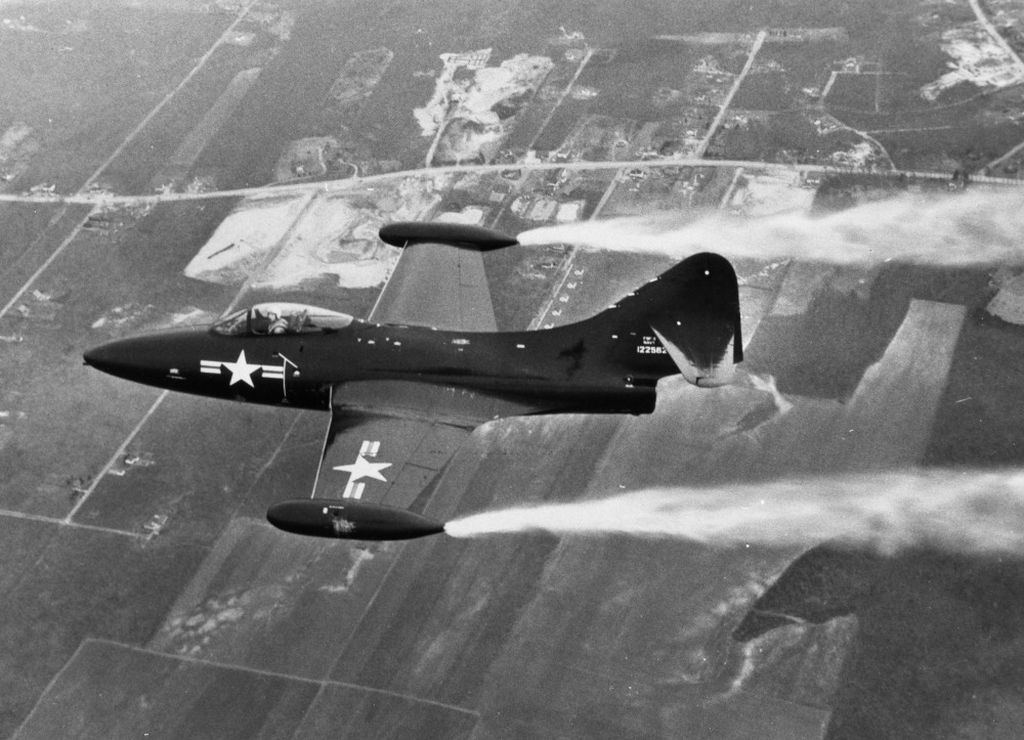
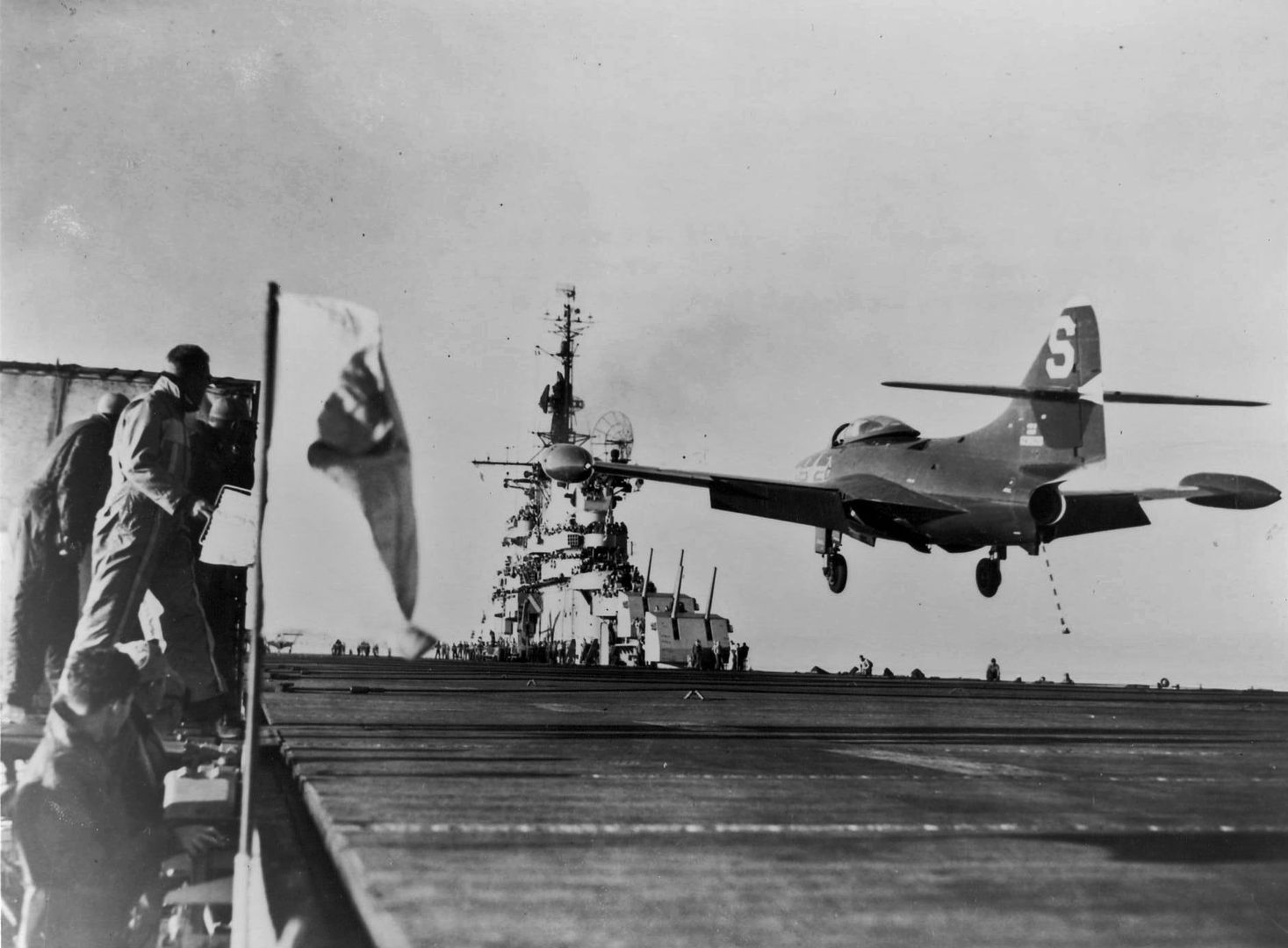
In the summer of 1950, a re-engined F9F-3 (BuNo 122562) was fitted with an experimental electro-hydraulically driven Emerson Aero X17A roll-traverse turret housing four 0.50-inch machine guns. The guns could be directed at any angle from directly forward to 20 degrees aft, and the gun mount could be rolled the full 360 degrees in either direction. The turret could roll at a rate of 100 degrees per second, and the guns could be traversed at up to 200 degrees per second. Although the tests with the turret went fairly well, delays in the development of the associated radar and fire control system led to the project being cancelled in early 1954.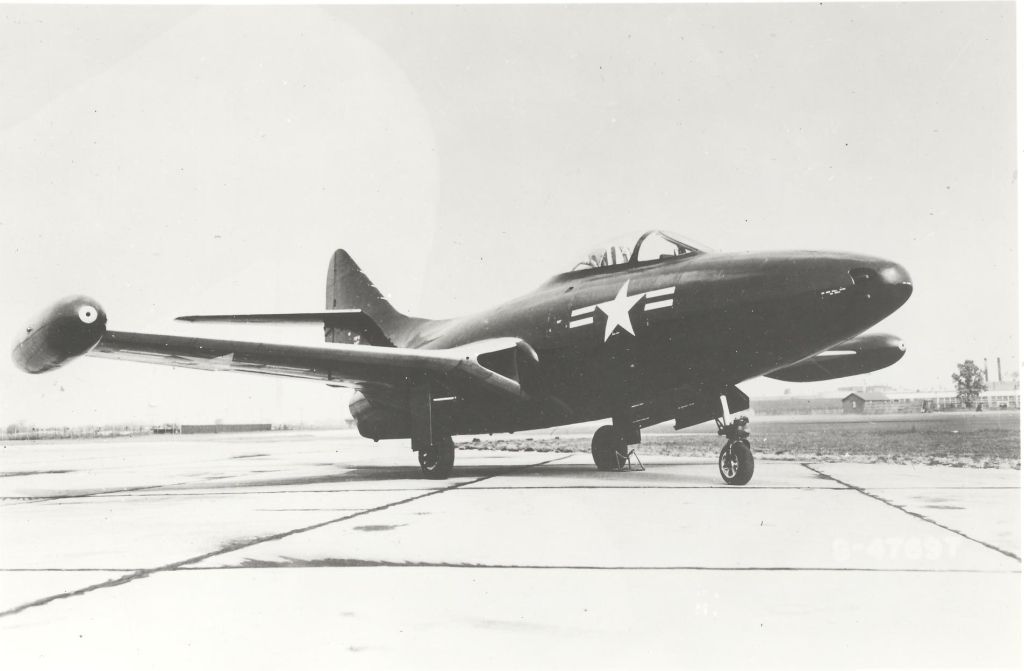
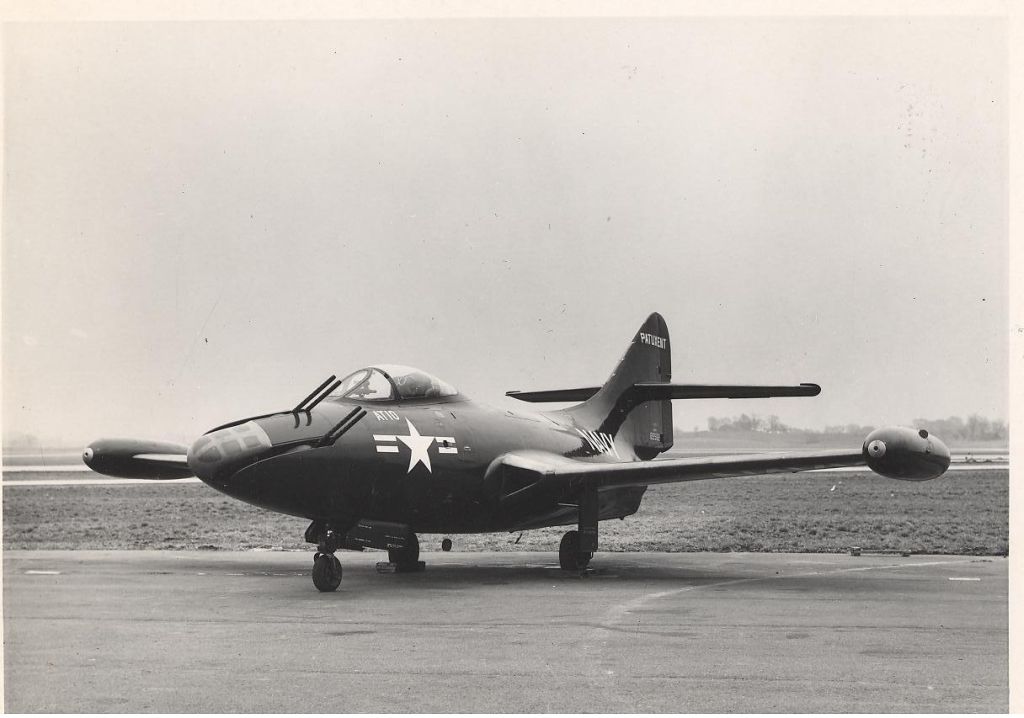

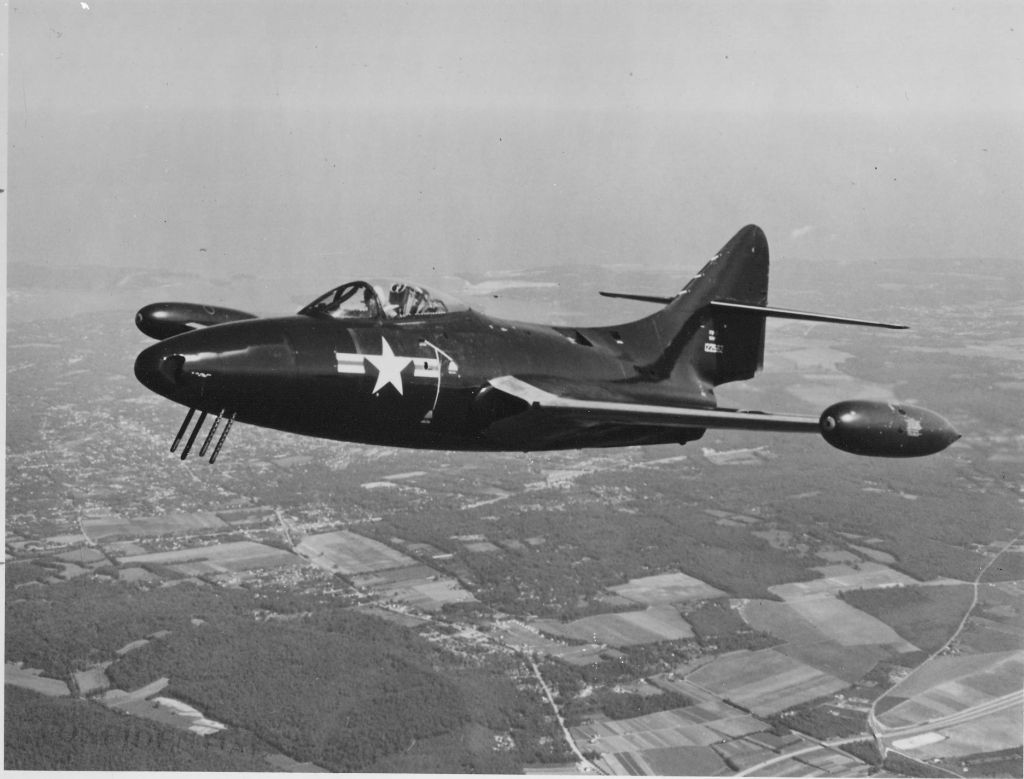
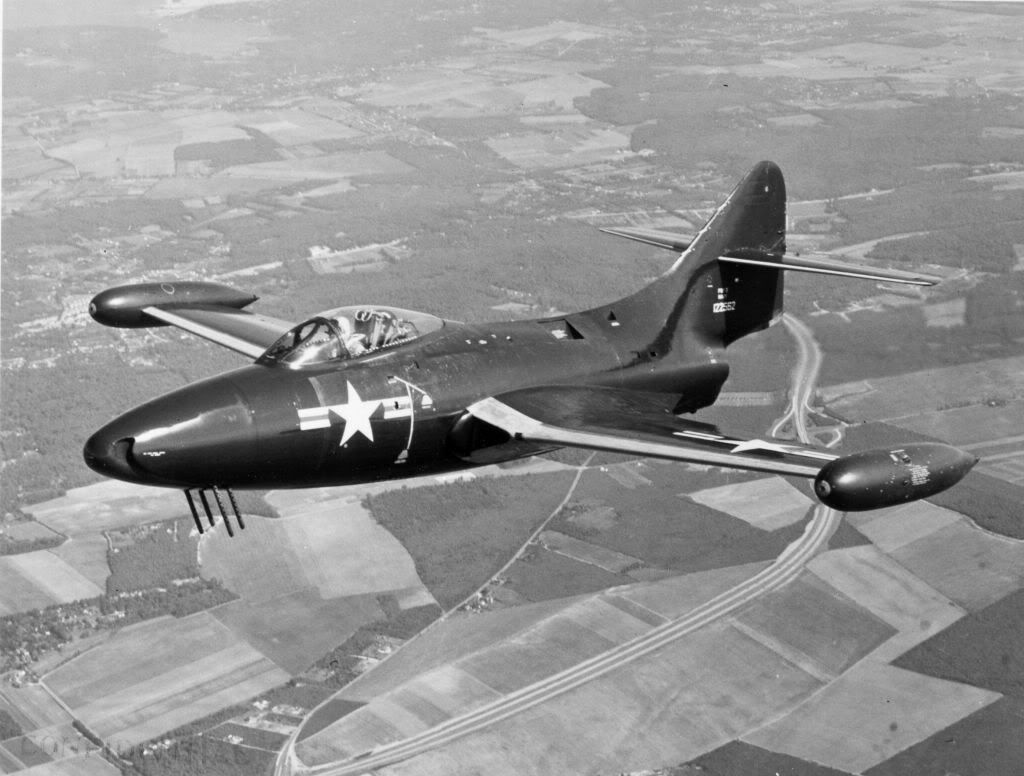
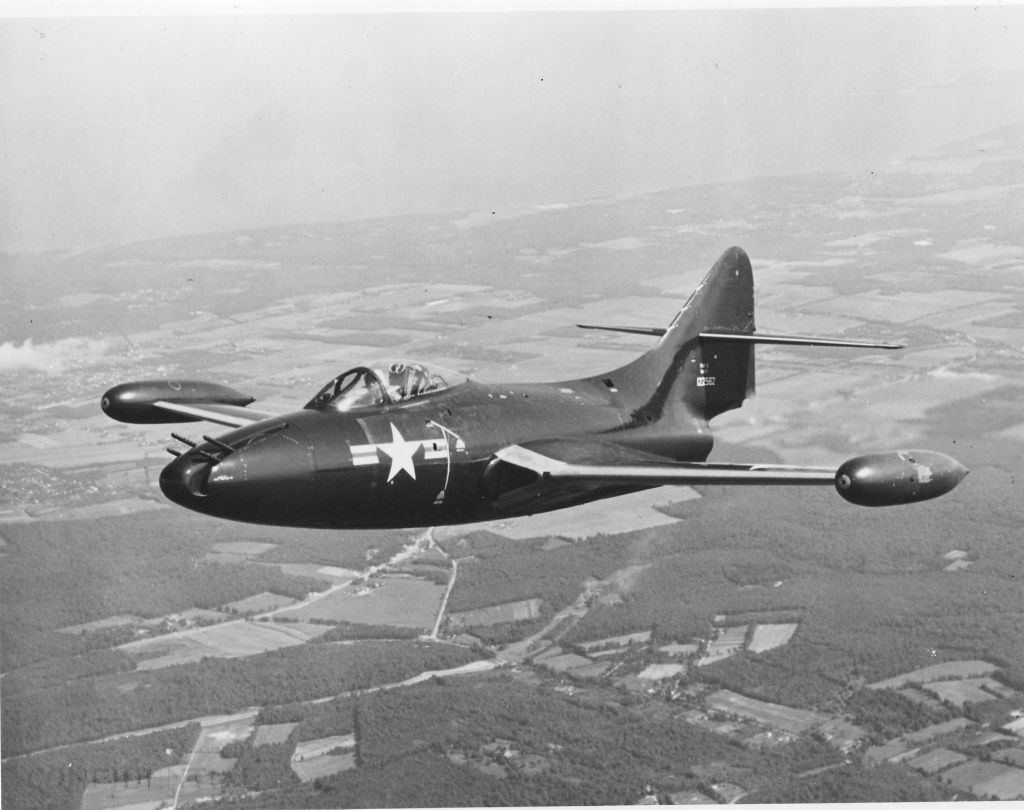

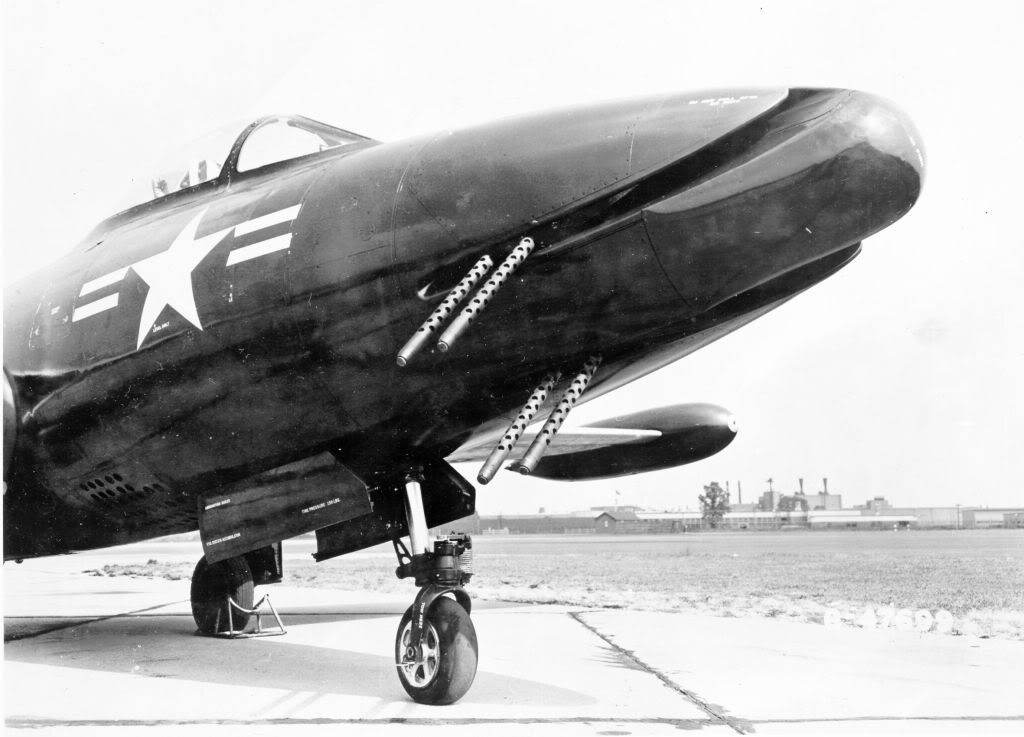
Serials of F9F-3:
122476 Grumman XF9F-3 Panther
122560/122562 Grumman F9F-3 Panther
122564/122566 Grumman F9F-3 Panther
122568 Grumman F9F-3 Panther
122571 Grumman F9F-3 Panther
122573/122585 Grumman F9F-3 Panther
123020/123043 Grumman F9F-3 Panther
123068/123076 Grumman F9F-3 Panther
-
8 years agoTue Feb 09 2016, 10:07pm
 Main AdminThe F9F-4 Panther (and the F9F-5 that was developed in parallel with it) differed from the previous F9F-2/F9F-3 in having a 19.5-inch longer forward fuselage that made it possible to increase the internal fuel capacity from 923 to 1003 gallons. In addition, the height and area of the vertical tail surfaces were increased. The F9F-4 was powered by the uprated Allison J33-A-16, capable of delivering 6250 pounds of thrust dry and 6950 lb.s.t. with water injection.
Main AdminThe F9F-4 Panther (and the F9F-5 that was developed in parallel with it) differed from the previous F9F-2/F9F-3 in having a 19.5-inch longer forward fuselage that made it possible to increase the internal fuel capacity from 923 to 1003 gallons. In addition, the height and area of the vertical tail surfaces were increased. The F9F-4 was powered by the uprated Allison J33-A-16, capable of delivering 6250 pounds of thrust dry and 6950 lb.s.t. with water injection.
The 99th and 101st production airframes (F9F-2s BuNos 123084 and 123086) were modified as the XF9F-4 prototype and the static test airframe. 123084 flew for the first time on July 5, 1950, powered by a 6250 lb.s.t. Allison J33-A-16 turbojet.
The F9F-4 was equipped with four external store pylons underneath each wing. The three outboard pylons were stressed to carry bombs of up to 500 pounds in weight, bringing maximum external load to 3465 pounds.
The J33-A-16 turbojet proved to be unreliable in service, and many F9F-4s were delivered to the Navy as J48-powered F9F-5s, and most of the others were re-engined with J48-P-6As once they entered service. They thus became indistinguishable from F9F-5s.
In early 1954, F9F-4 BuNo 125081 was modified as a test bed for a high-lift boundary layer control system.
Serials of F9F-4 Panther:
123084 Grumman XF9F-4 Panther
123086 Grumman XF9F-4 Panther
125081 Grumman F9F-4 Panther
125156/125227 Grumman F9F-4 Panther
125913/125948 Grumman F9F-4 Panther
The F9F-5 was numerically the most important of the Panther variants. It had the longer fuselage and revised tail surfaces of the F9F-4, but was powered by the Pratt & Whitney J48 turbojet, a license-built version of the Rolls-Royce Tay.
The XF9F-5 prototype was the 100th production airframe (F9F-2 BuNo 123085), modified and re-engined. It flew for the first time on December 21, 1949. It actually preceded the XF9F-4 into the air by almost half a year.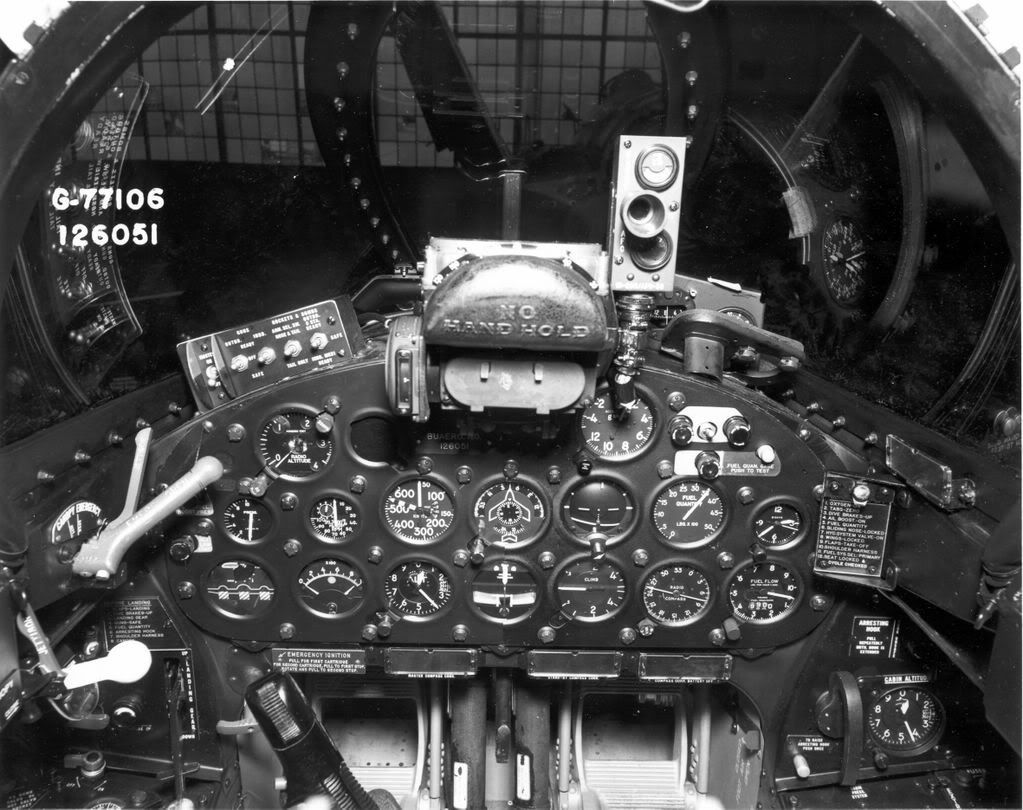
616 F9F-5s were delivered to the Navy and Marine Corps between November 1950 and January 1953. They were all powered by the Pratt & Whitney J48-P-6 or P-6A, rated at 7000 lb.s.t. wet. The F9F-5 had four external store pylons underneath each wing, with the three outboard pylons being stressed to carry bombs of up to 500 pounds in weight. Maximum external load was 3465 pounds.
During the course of production, an anti-stall fence was added just outboard of the wing roots to control the airflow and reduce landing speed. Many of the F9F-4s were retrofitted with J48 engines and thus became indistinguishable from F9F-5s.
The first F9F-5 deliveries took place on November 5, 1950. Most squadrons which had been equipped with F9F-2s were re-equipped with the later F9F-5.
In November 1951, the F9F-5 replaced the F9F-2s of the Blue Angels flight demonstration team. This team began to convert to the swept-wing F9F-6 Cougar in 1953, but it turned out that these Cougars were urgently needed by the fleet and the team had to be hastily re-equipped with overhauled F9F-5s. The F9F-5s served with the Blue Angels until 1954, when they were finally replaced by F9F-8 Cougars.
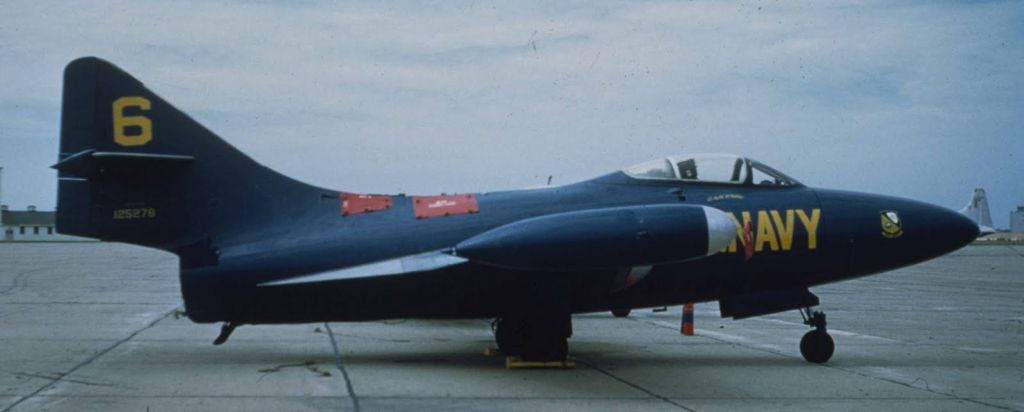
The first F9F-5s entered combat in Korea in October of 1952, serving aboard the USS Oriskany (CVA-34) with the reserve squadrons VF-781 and VF-783. They were also flown by VF-51, VF-52, VF-53, VF-111, VF-153, and VF-154 during the latter stages of the Korean War. They provided the backbone of the Navy's carrier-based jet-powered ground attack capability during the last year of the Korean War.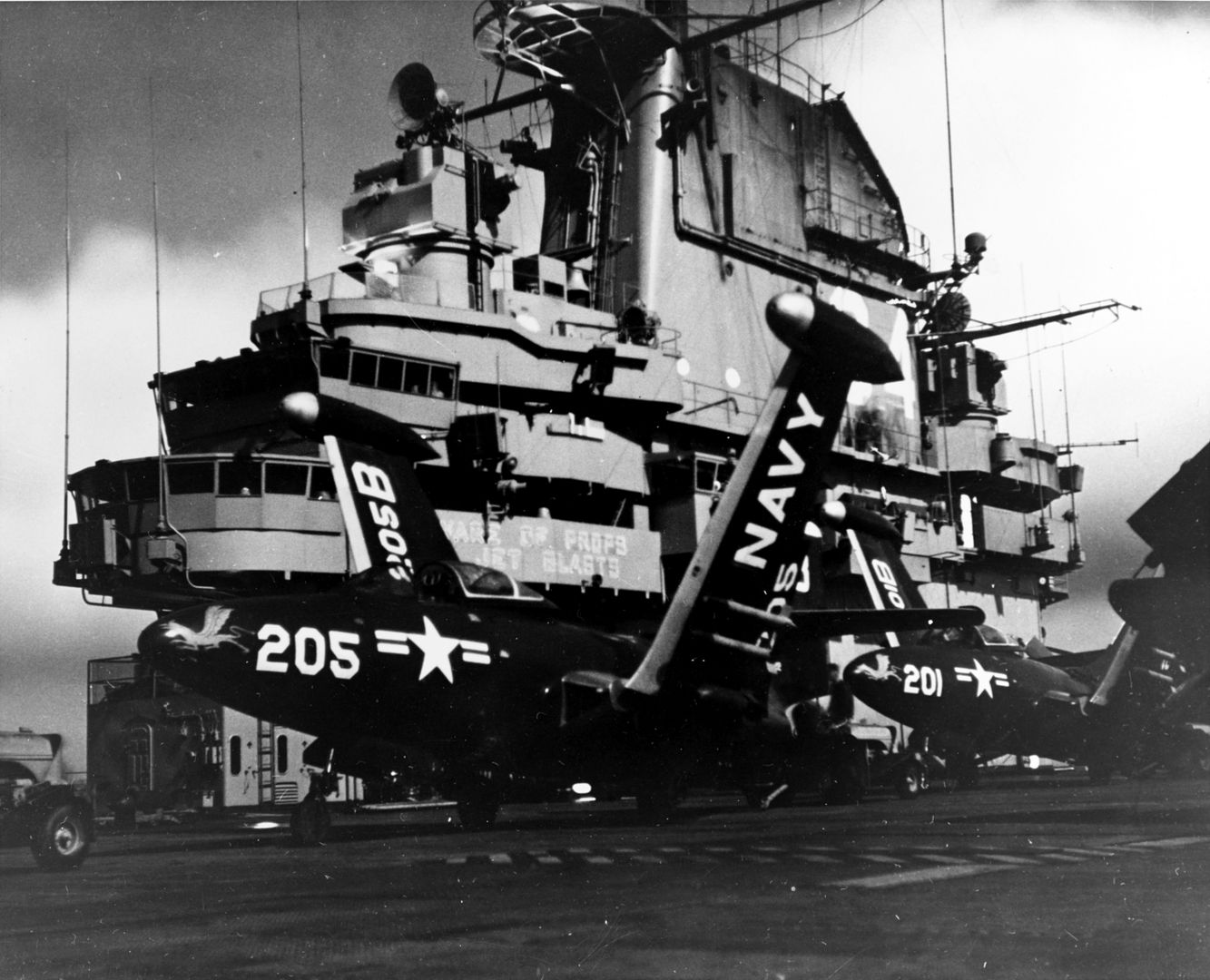
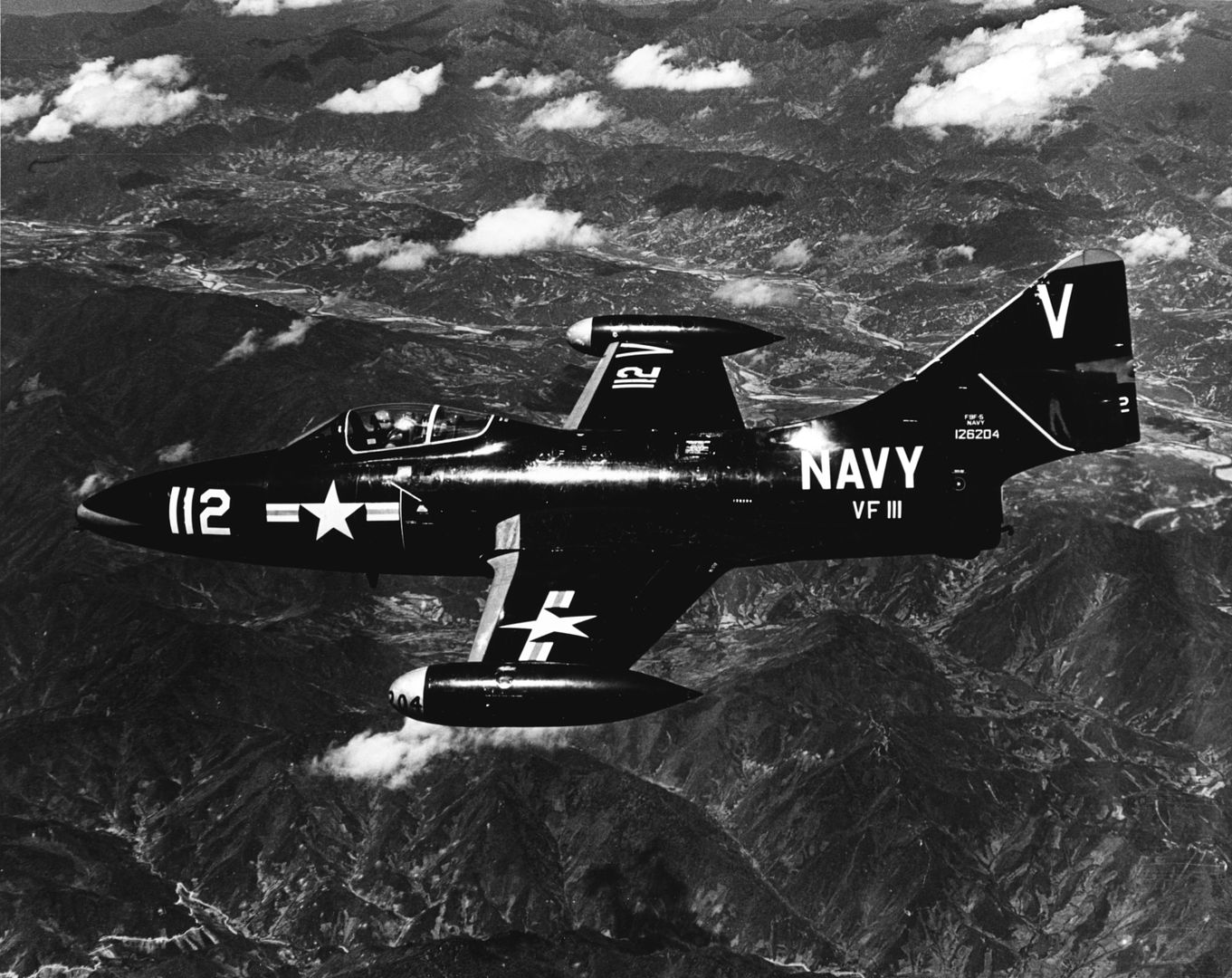
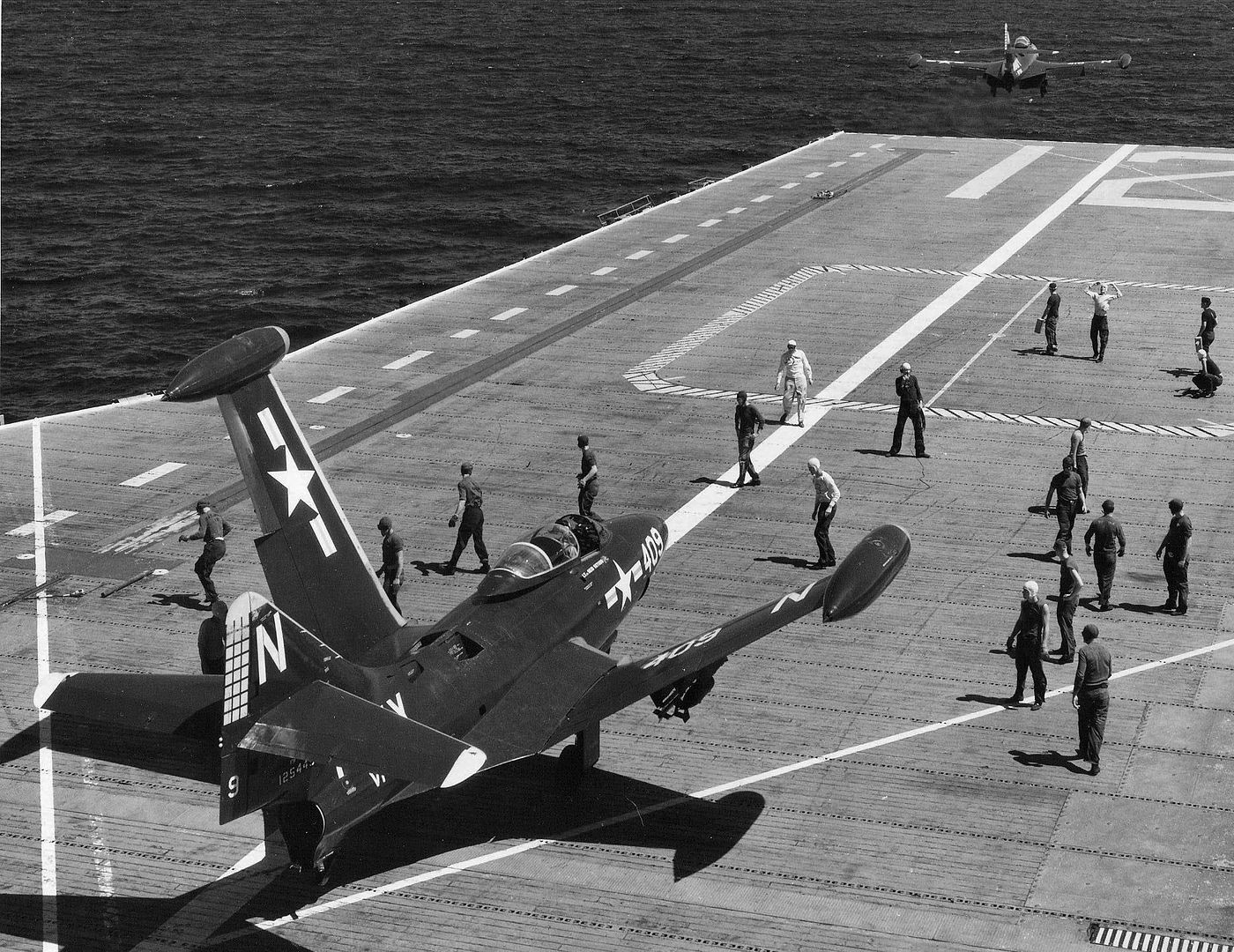
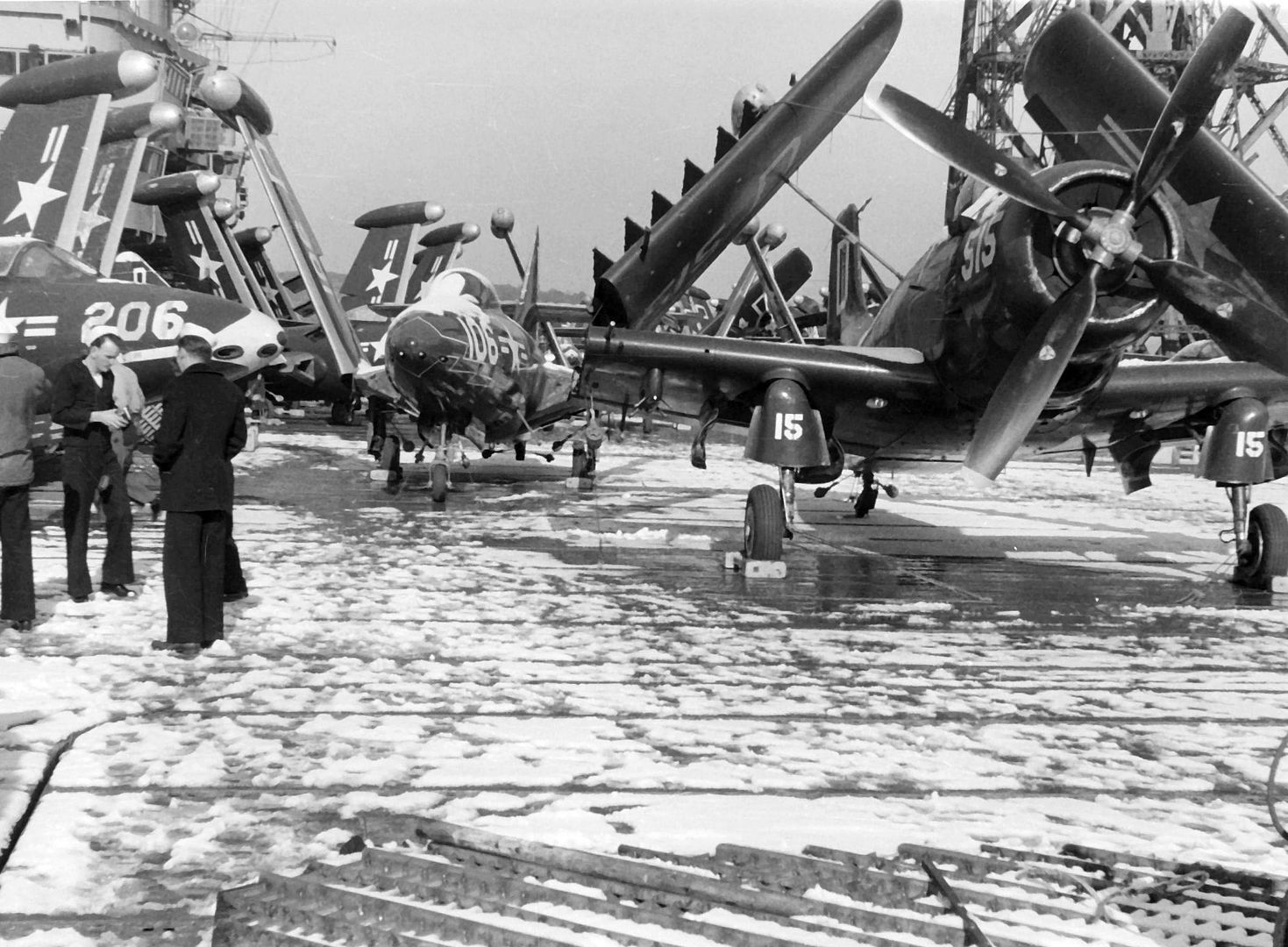
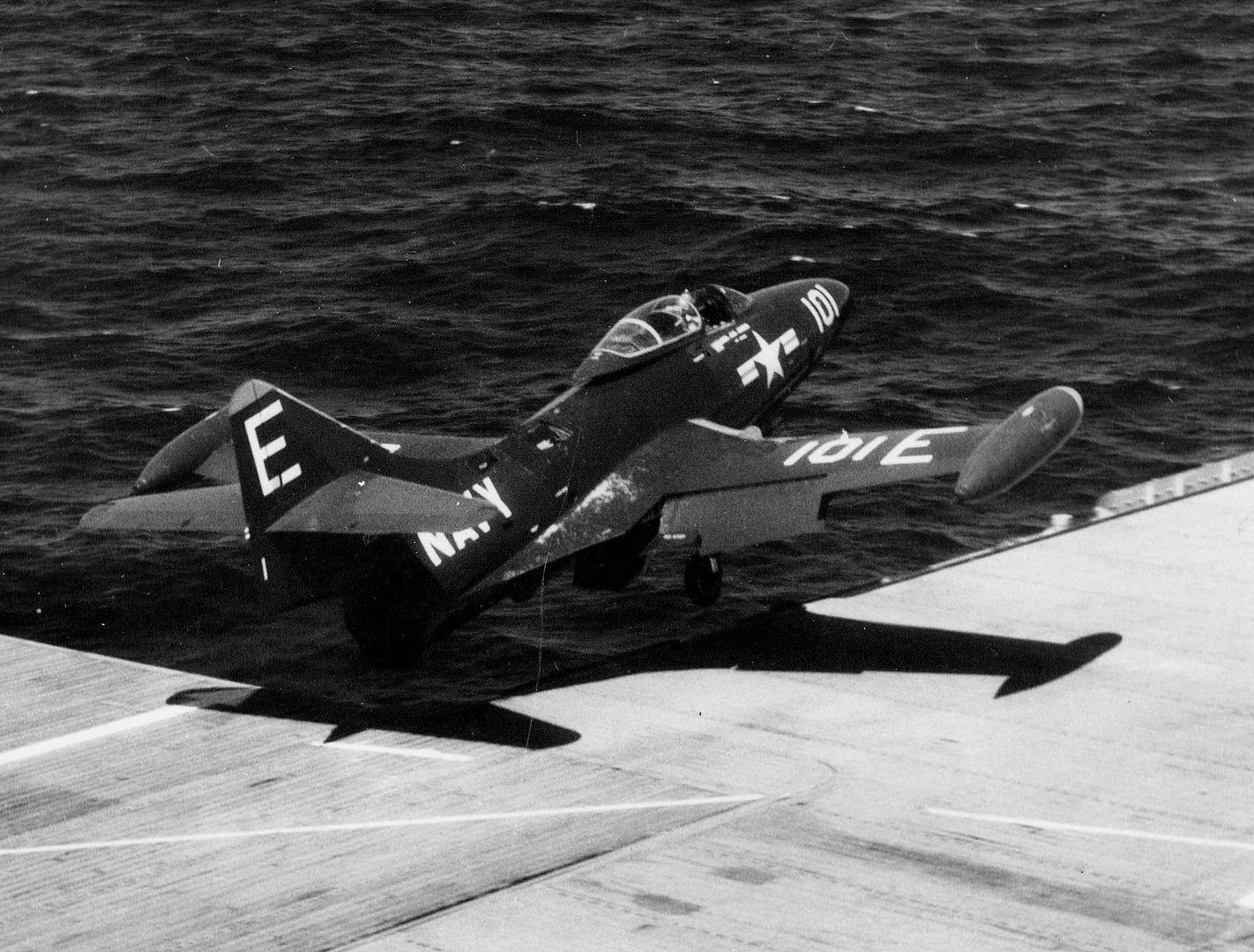
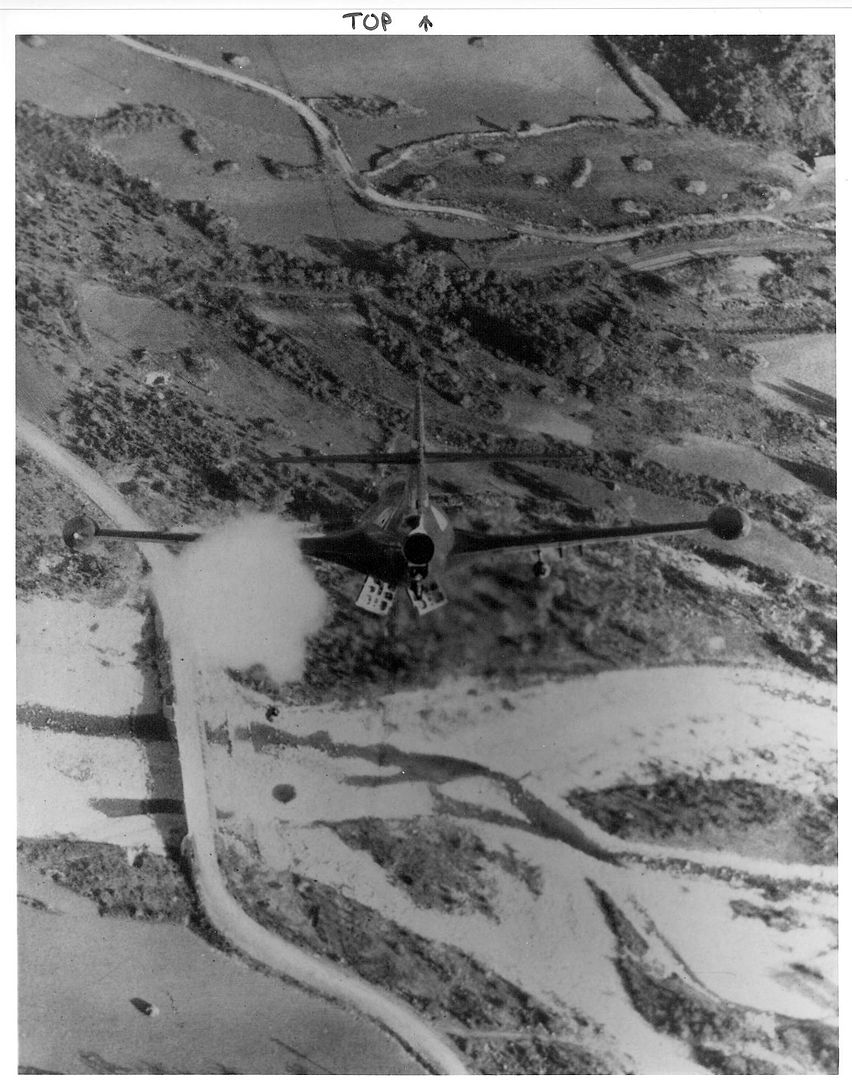
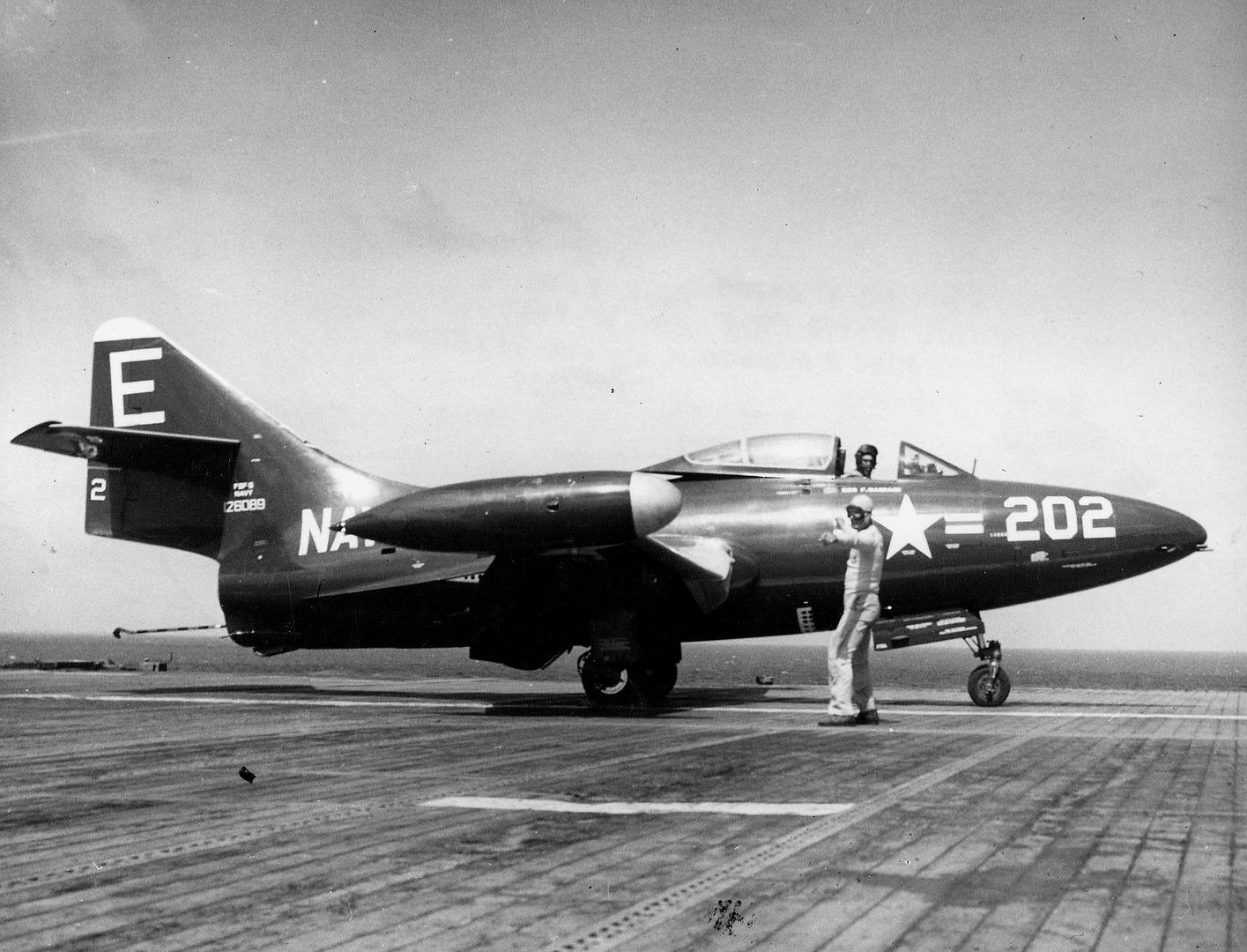


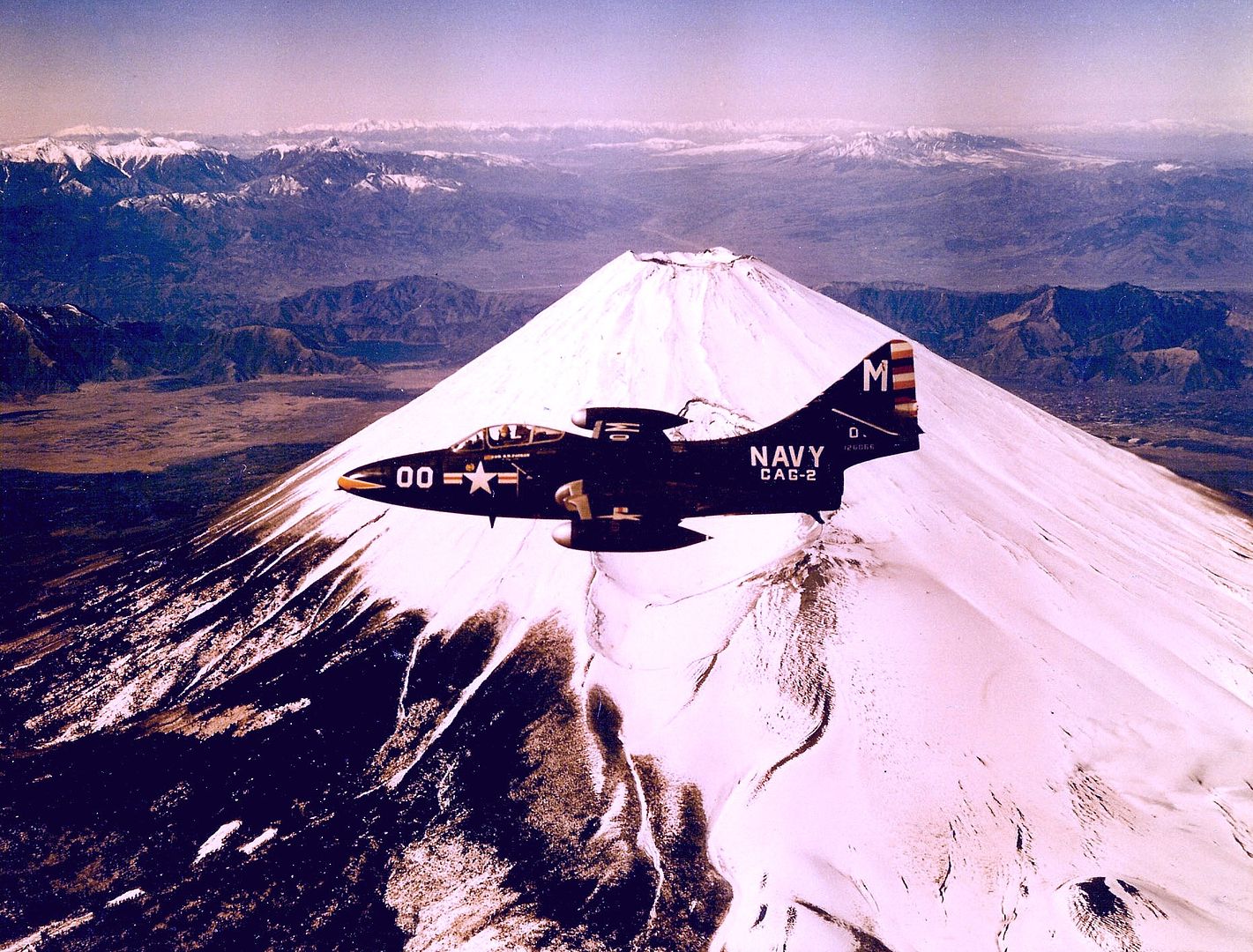
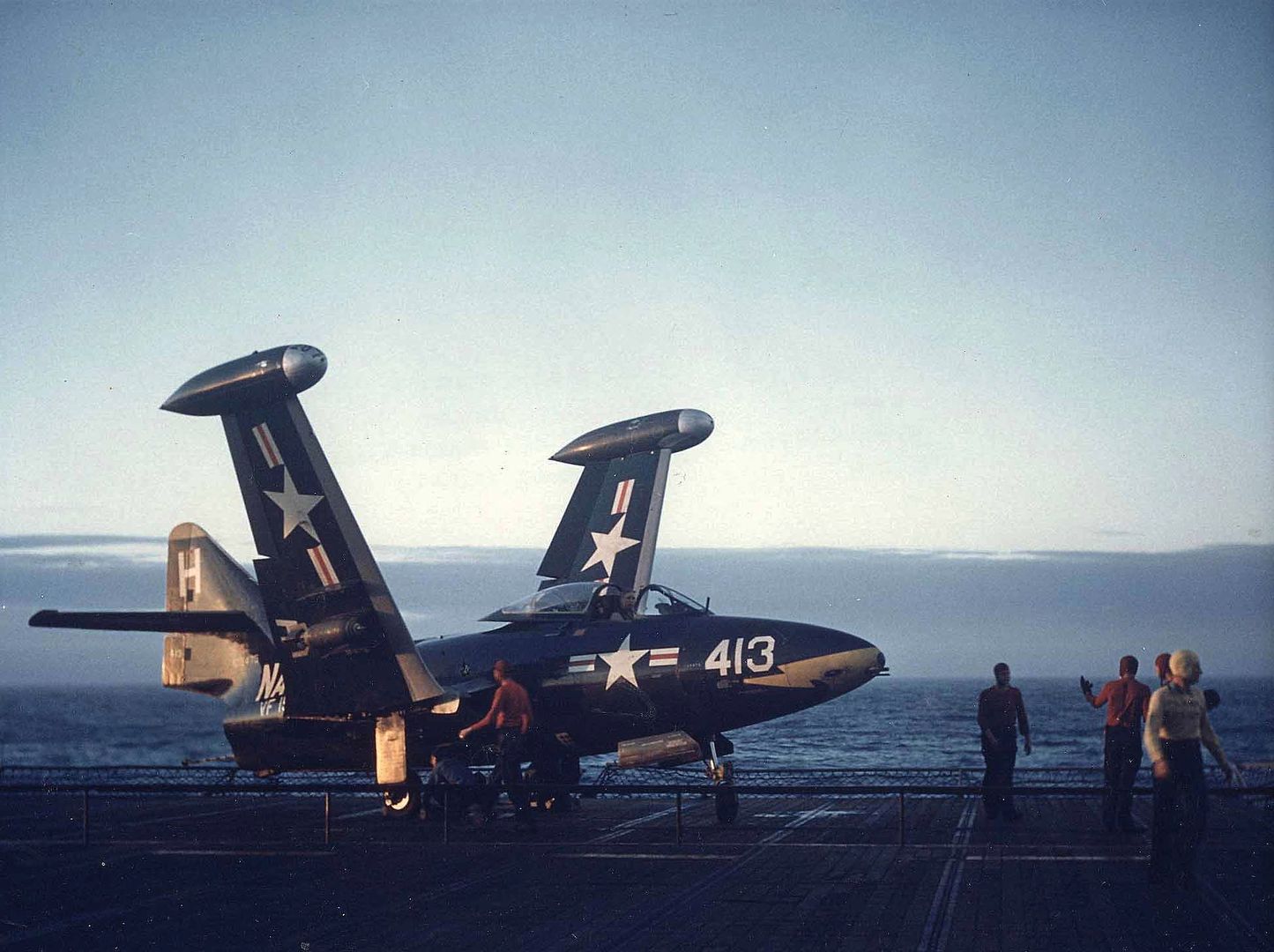
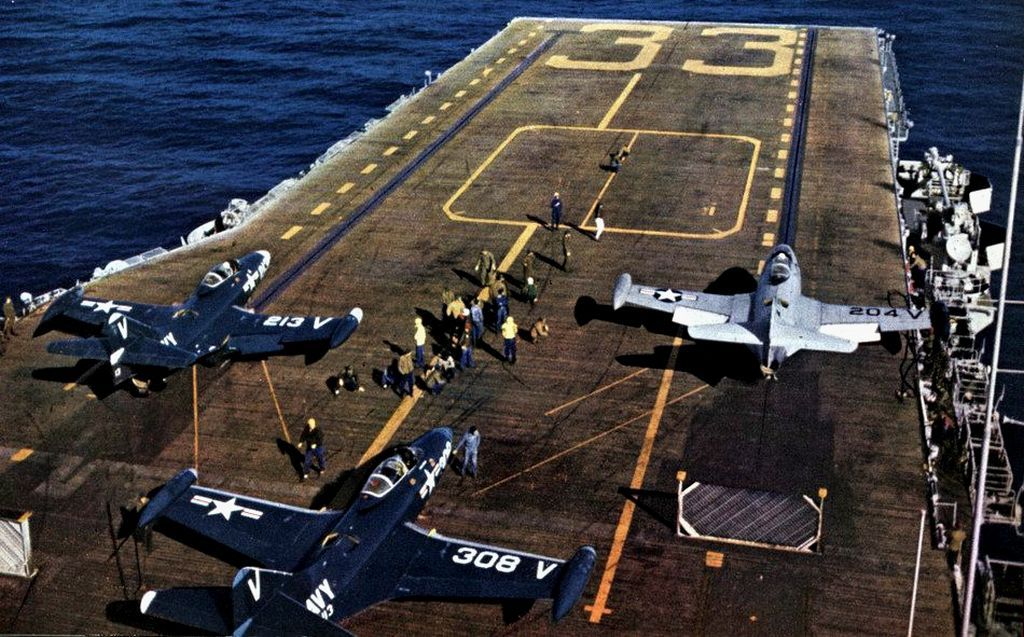
One of the more significant experiments carried out by the F9F-5 was the performance of early midair refuelling tests. F9F-5 BuNo 125240 was fitted in 1952 with a refuelling probe in the nose for trials with a North American XAJ-1 attack plane modified as a tanker. These tests were so successful that the Navy eventually decided in September of 1955 to require that all of its jet-powered fighters and attack aircraft would henceforth be equipped for midair refuelling.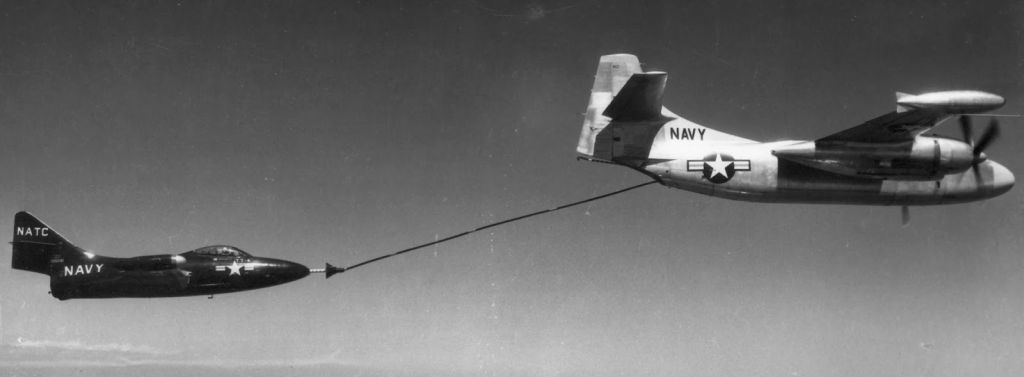
As the Panther began to be replaced in active service by more advanced types, surviving F9F-5s were modified as F9F-5K remotely-controlled drones or as F9F-5KD drone directors. In the F9F-5KD, the nose guns were removed and were replaced by radio control equipment. In 1962, the Defense Department introduced the new Tri-Service designation scheme under which the separate USAF/Navy designations were replaced by a new unified designation system. This required that all existing Navy aircraft be redesignated. By this time, the only Panthers remaining in Navy service were the F9F-5KD drone directors, which were redesignated DF-9E. The last DF-9Es were struck off charge in the mid-1960s.
Serials of Grumman F9F-5 Panther:
123085 Grumman XF9F-5 Panther
126000/126256 Grumman F9F-5 Panther
126627/126669 Grumman F9F-5 Panther
125080 Grumman F9F-5 Panther
125082 Grumman F9F-5 Panther
125228/125313 Grumman F9F-5 Panther
125414/125443 Grumman F9F-5 Panther
125489/125499 Grumman F9F-5 Panther
125533/125648 Grumman F9F-5 Panther
125893/125912 Grumman F9F-5 Panther
125949/125999 Grumman F9F-5 Panther
Specification of the Grumman F9F-5 Panther:
Engine: One Pratt & Whitney J48-P-4/P-6A turbojet rated at 6250 lb.s.t. Performance: Maximum speed 604 mph at sea level, 579 mph at 5000 feet, 543 mph at 35,00 feet. Cruising speed 481 mph. Stalling speed 132 mph . Initial climb rate 5090 feet per minute. Service ceiling 42,800 feet. Range 1300 miles. Dimensions: wingspan 38 feet 0 inches, length 38 feet 10 1/2 inches, height 12 feet 4 inches, wing area 250 square feet. Weights: 10,147 pounds empty, 17,766 pounds gross, 18,721 pounds maximum takeoff. Internal fuel capacity 1003 US gallons. Armament: Four 20-mm cannon in the nose. Eight underwing hardpoints which could accommodate a total underwing load of up to 3465 pounds of bombs and rockets.
The F9F-2 and -3 initial production versions of the Panther were declared service-ready in the spring of 1949. However, because of initially-slow deliveries of the Pratt & Whitney J42, the Allison J33-powered F9F-3 was actually the first to enter service. F9F-3s were first delivered to VF-51 at NAS San Diego on May 8, 1949. The F9F-2s first went to the Blue Angels flight demonstration team based at NAS Pensacola on August 20, 1949, and a few days later F9F-2s went to VMF-115 at MCAS Cherry Point in North Carolina. The first Navy squadron to get the F9F-2 was VF-11 at NAS San Diego, which first received the machines in the early autumn of 1949.
When war came to Korea on June 25, 1950, VF-51 and VF-52 loaded their F9F-2 Panthers aboard the USS Valley Forge (CV-45) and put to sea. Panthers from VF-51 were first in action on July 3, 1950, providing escort for a strike against an airfield at Pyongyang. Ens E. W. Brown and Lt(jg) L. H. Plog shared credit for downing a Yak-9, scoring the first kill credited to a Navy jet fighter.
In November of 1950, the swept-wing MiG-15 began to appear over northern Korea. Although powered by derivatives of the same Rolls-Royce Nene as was the F9F-2, the MiG-15 had a much better performance because of its swept wings and lighter weight. Nevertheless, the Panther was able to defeat the MiGs in the few air-to-air encounters that did take place. The first MiG-kill by a F9F Panther was by Cdr W. T. Amen of VF-111 on November 9, 1950. Four more MiG-15s were downed by Panthers before the Korean War ended, with no Panthers being lost in air-to-air combat.
The first Marine Corps Panthers appeared in combat in Korea in December of 1950. These were F9F-2Bs serving with VMF-311, helping to support the withdrawal of troops from the Chosin Reservoir.
Most Panthers serving in Korea flew air-to-ground close-support missions, air-to-air action being quite rare. The first Navy F9F-2Bs appeared in combat on April 2, 1951, when VF-191 flew an attack on railway bridges near Songjin.
The more capable F9F-5 first appeared in Korea in October of 1952, flown initially by VF-781 and VF-783 operating off the USS Oriskany (CVA-34). F9F-5s also served with VF-51, VF-52, VF-53, VF-111, VF-153, and VF-154.
The Marine Corps flew F9F-2Bs, F9F-4s and F9F-5s in Korea, exclusively in the ground support role. Active and reserve Marine Corps squadrons that flew the Panther included VMF-115, VMF-122, VMF-211, VMF-213, VMF-214, VMF-223, VMF-224, VMF-232, VMF-234, VMF-235, VMF-311, VMF-312, VMF-314, VMF-324, VMF-334, and VMF-451, plus the training squadrons VMFT-10 and VMFT-20.
F9F-2P unarmed reconnaissance aircraft were deployed by VC-62 aboard the USS Princeton in December of 1950. Two years later, they were replaced by F9F-5Ps. Two Marine Corps reconnaissance (VMJ-1 and VMJ-3) squadrons flew F9F-5Ps. VMJ-3 was still flying F9F-5Ps when the squadron was redesignated VMCJ-3.
Throughout the early 1950s, Panthers served extensively with active and reserve units of both the Atlantic and Pacific Fleets. They provided the mainstay of the Navy's jet-powered carrier-based air-to-ground capability. The Panthers were phased out of active service with the Navy in 1956, but they remained with training units until 1958. The last Marine Panther units were the two reserve squadrons VMF-213 and VMF-234, which were based at Minneapolis. These Panthers were retired in 1958.
Many of the surplus Panthers were used as drones or as drone directors under the designation F9F-5K or F9F-5KD. In 1962, the Defense Department eliminated separate designations for Navy aircraft, and ordered that all Navy planes be redesignated under the new Tri-Service unified designation scheme. The Panther/Cougar was assigned the designation F-9 under the new system. By this time, the only Panthers left in service were the F9F-5KD drone directors. These were redesignated DF-9E. The last of these DF-9Es was stuck off charge in the mid-1960s.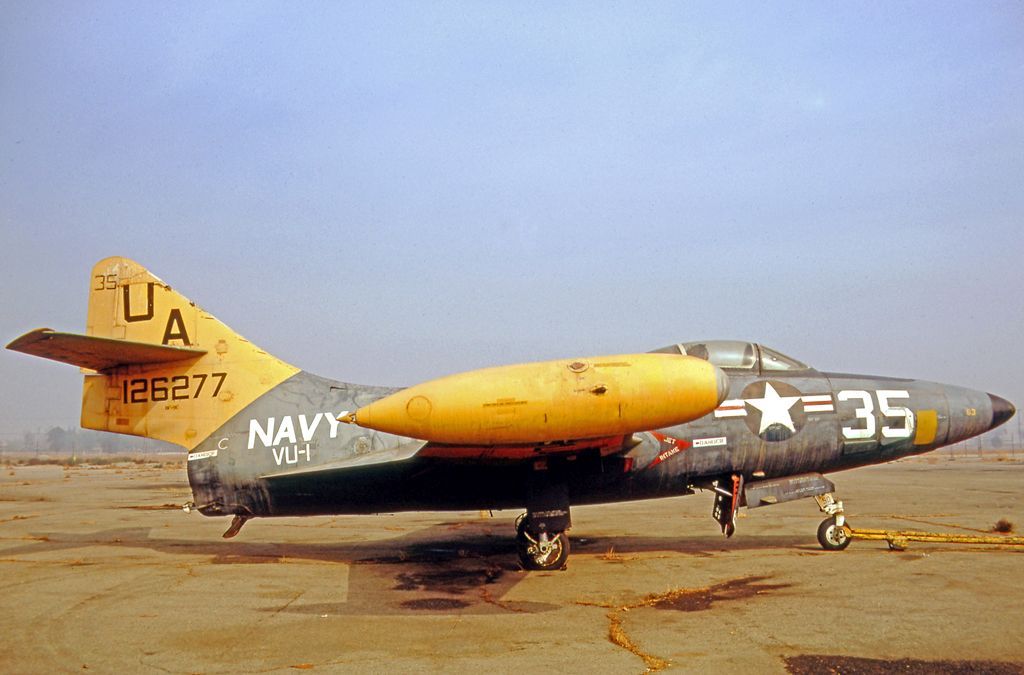
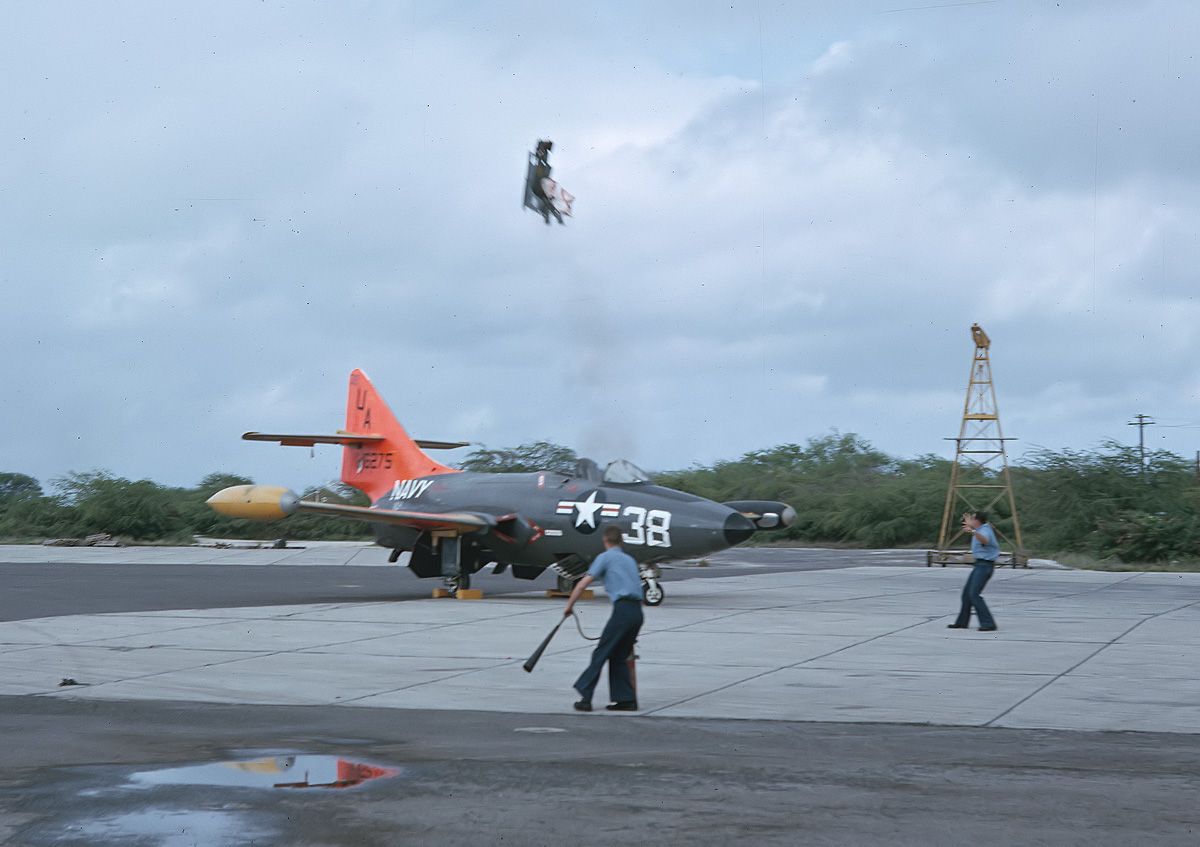
The only foreign air arm to receive Panthers was Argentina's Servicio de Aviacion Naval, which received 24 refurbished F9F-2s in 1958. They were assigned military serials 0416/0427 and 0447/0458. The planes were assigned to the 1a Escuadrilla Aeronaval de Ataque as part of the 2a Escuadra Aeronaval based at BAN Commandante Espora in Puerto Belgrano. They were strictly land-based aircraft, since the catapult of the ARA *Independencia* light carrier was not considered to be powerful enough to launch the F9F-2. The 1a Escuadrilla Aeronaval de Ataque was later transferred to BAN Punta del Indio. During a military coup in April of 1963 which pitted naval forces against elements of the Army and the Air Force, four Panthers were destroyed on the ground. Shortly after the coup, the 1a Escuadrilla Aeronaval de Ataque was transferred to 3a Escuadra Aeronaval at BAN Commandante Espora. Argentine Panthers were briefly in action in 1965 when they flew patrols during a border clash between Argentina and Chile. Lack of spares forced the Argentine Navy to ground its F9F-2s in 1969.
-
8 years agoWed Feb 10 2016, 03:55pm
 Main AdminGrumman F9F-6 (F-9F) Cougar
Main AdminGrumman F9F-6 (F-9F) Cougar
The XF9F-2/XF9F-3 Panther contract awarded in October of 1946 had included a clause calling for design data on a swept-wing version. However, Grumman was worried about the poor low-speed characteristics of swept-wing aircraft, and prevailed upon the Navy to postpone work on a swept-winged version of the Panther.
However, the development of a swept-wing Panther was made more urgent by the appearance of the MiG-15 in Korea in November of 1950. The MiG-15 was powered by derivatives of the same Rolls-Royce Nene as was the Panther, but was nearly 100 mph faster. The very next month, the Navy and Grumman both agreed that it was urgent to press forward with the development of a swept-wing version of the Panther. A contract for the modification of three F9F-5 airframes was signed on March 2, 1951. The project was assigned the company designation Design 93.
Grumman's Design 93 was a more-or-less straightforward swept-wing conversion of the Panther. It retained the fuselage, vertical tail, engine, and undercarriage of the F9F-5, but was fitted with wings swept at 35 degrees and with swept horizontal tail surfaces. In order to reduce the approach and stalling speeds to acceptable levels, the chord of the leading-edge slats and the trailing-edge flaps were both increased. Much larger split flaps were fitted underneath the fuselage center section. The fuselage was increased in length by 2 feet, and the the wingroot-mounted intakes were extended farther forward and the wing root fillets were enlarged. A broader chord lower rudder section was fitted, linked to the rudder pedals. The upper rudder section was unchanged, but was linked to a yaw damper. The wingtip tanks had to be eliminated, and the resulting reduction in fuel capacity was partially offset by increasing the size of the forward-fuselage fuel tank and by adding bladder-type fuel tanks in the wing leading edge. Nevertheless, the internal fuel capacity was only 919 US gallons, as compared with 1003 US gallons for the F9F-5.
Since the Design 93 was so different from the F9F-5, one might have expected that the Navy would assign a new manufacturer type sequence number to it. Since the next available number for Grumman was 11, the new design by all rights should have been designated F11F-1. However, for some reason, the Navy decided to assign it the next configuration sequence number in the original Panther manufacturer type sequence, and the swept-wing version of the Panther was designated F9F-6. However, a new name was given to the swept-wing F9F-6--Cougar, thus continuing the tradition of assigning feline names to Grumman-built fighter aircraft.
Two flying prototypes (126670 and 126672) and a static test airframe (126671) were obtained by converting three uncompleted F9F-5 airframes to F9F-6 configuration. Work on the swept-wing Cougar proceeded quite rapidly and the first F9F-6 (BuNo 126670) was ready for its first flight only six months after the signing of the contract. It took to the air for the first time on September 20, 1951, with test pilot Fred C. Rowley at the controls. The plane was powered by a Pratt & Whitney J48-P-6 turbojet rated at 6250 lb.st. takeoff dry and 7000 lb.s.t. takeoff with water injection. It had conventional horn-balanced ailerons for lateral control and conventional tab geared elevators for longitudinal control. Early test flights revealed that the F9F-6 had a tendency towards control reversal at high speeds, and had rather poor lateral and longitudinal control. The adoption of an all-flying horizontal tailplane cured the reversibility problem. The lateral control problem was cured by the addition of "flaperon/flaperette" spoilers fitted to the upper wing surfaces. In normal flight, both of these spoiler sections operated as a single unit, but the flaperette section could operate independently. Large wing fences were found necessary to inhibit spanwise airflow and to preserve lateral control effectiveness.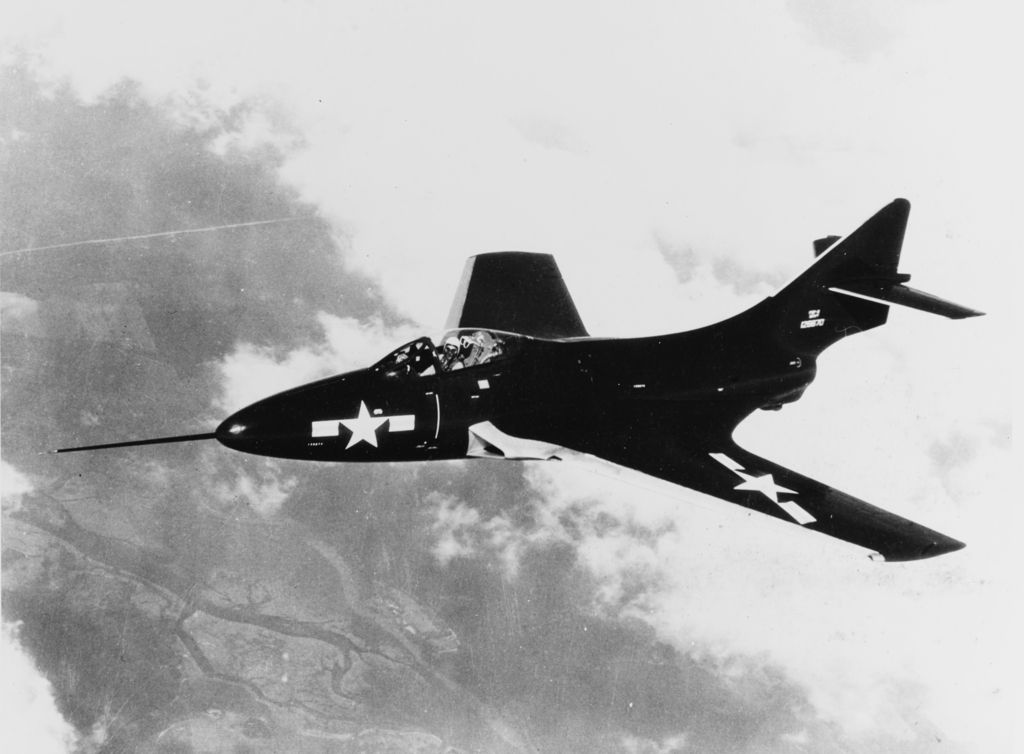
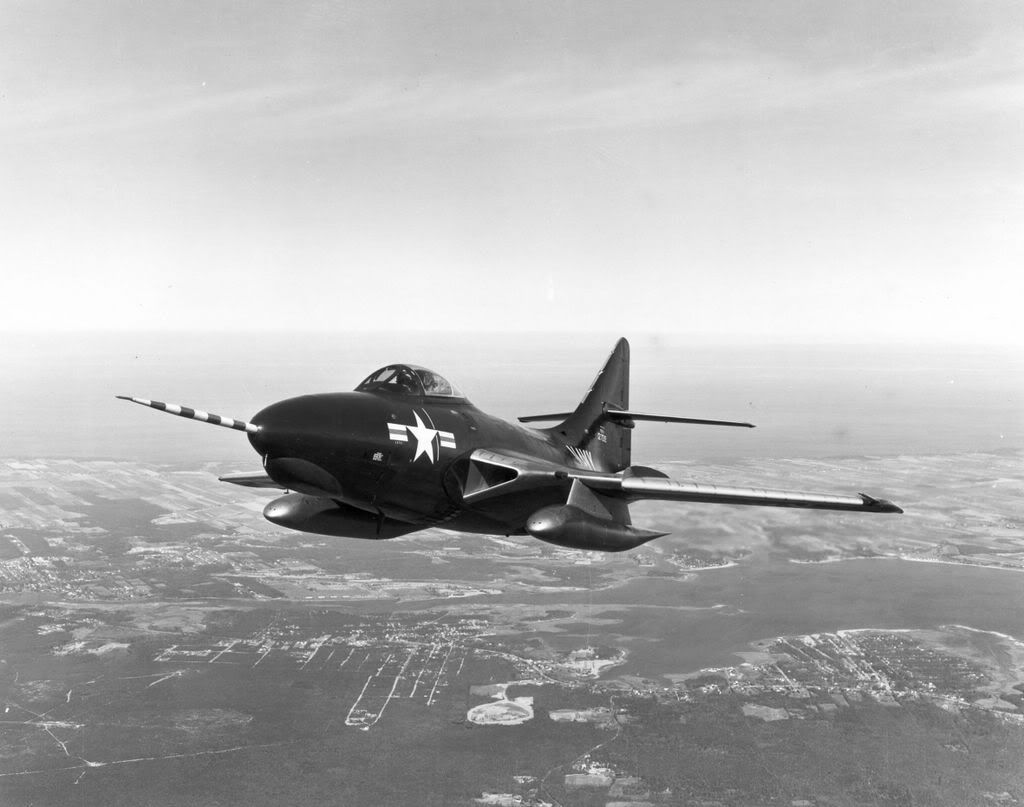
To everyone's surprise and amazement, the prototype F9F-6 actually had better carrier handling characteristics than the straight-winged F9F-5. The critical Mach number was increased from 0.79 to 0.86 at sea level and to 0.895 at 35,000 feet. The prototype (126670) was later re-engined with a YJ48-P-8 turbojet rated at 7250 lb.s.t. without the need for water injection.
The first 30 production F9F-6s were powered by the 7000 lb.s.t. J48-P-6A, but the remainder of the F9F-6 order was powered by the 7250 lb.s.t. J48-P-8 turbojet. The built-in armament consisted of four 20-mm cannon. In addition, the aircraft had two wing racks for 1000-pound bombs or 150-US gallon drop tanks.
The first unit to receive the F9F-6 was VF-32, which converted to the Cougar in November of 1952. However, the Cougar was too late to fly combat sorties in Korea. The last of 646 F9F-6 Cougars was delivered on July 2, 1954.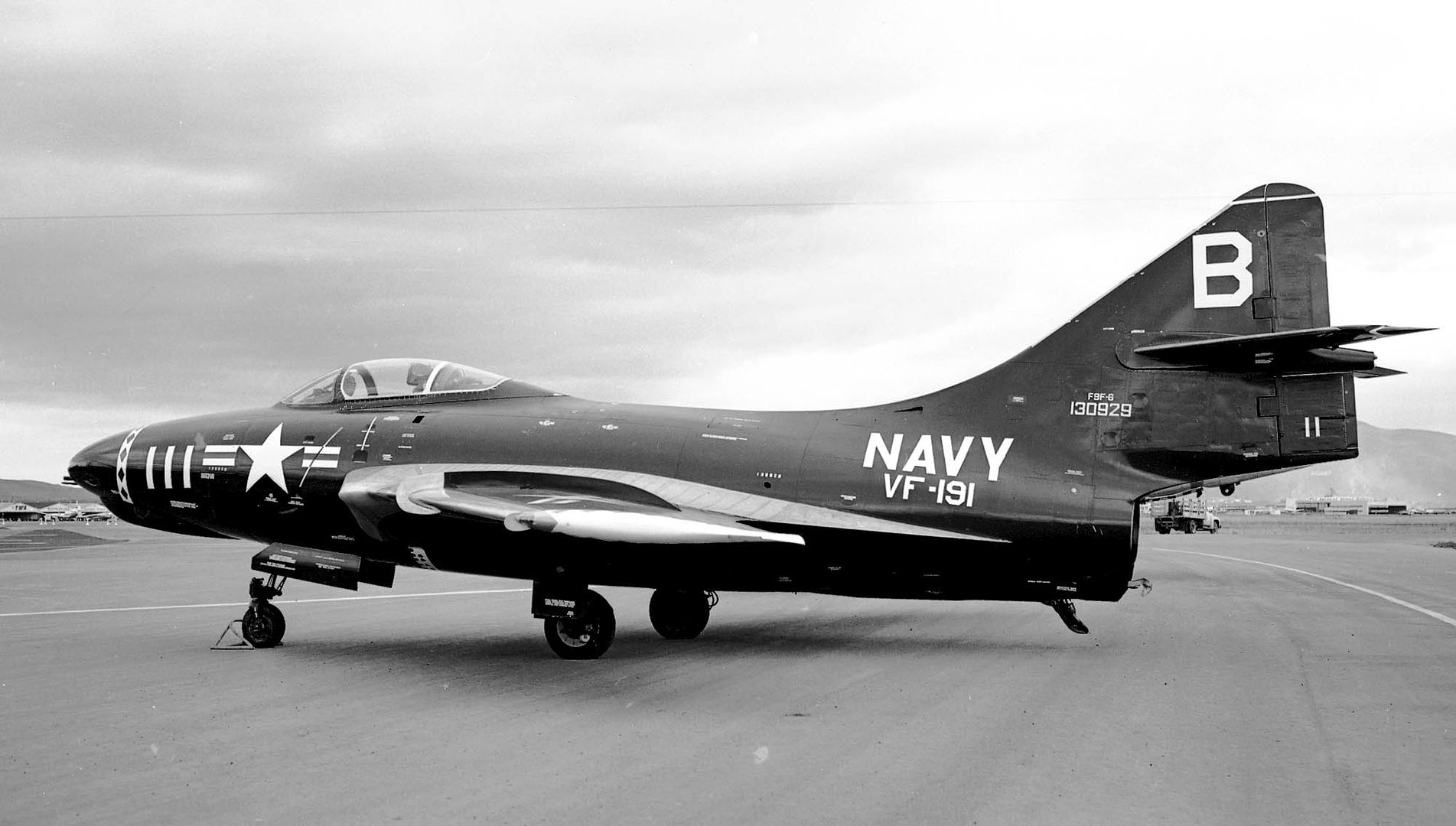
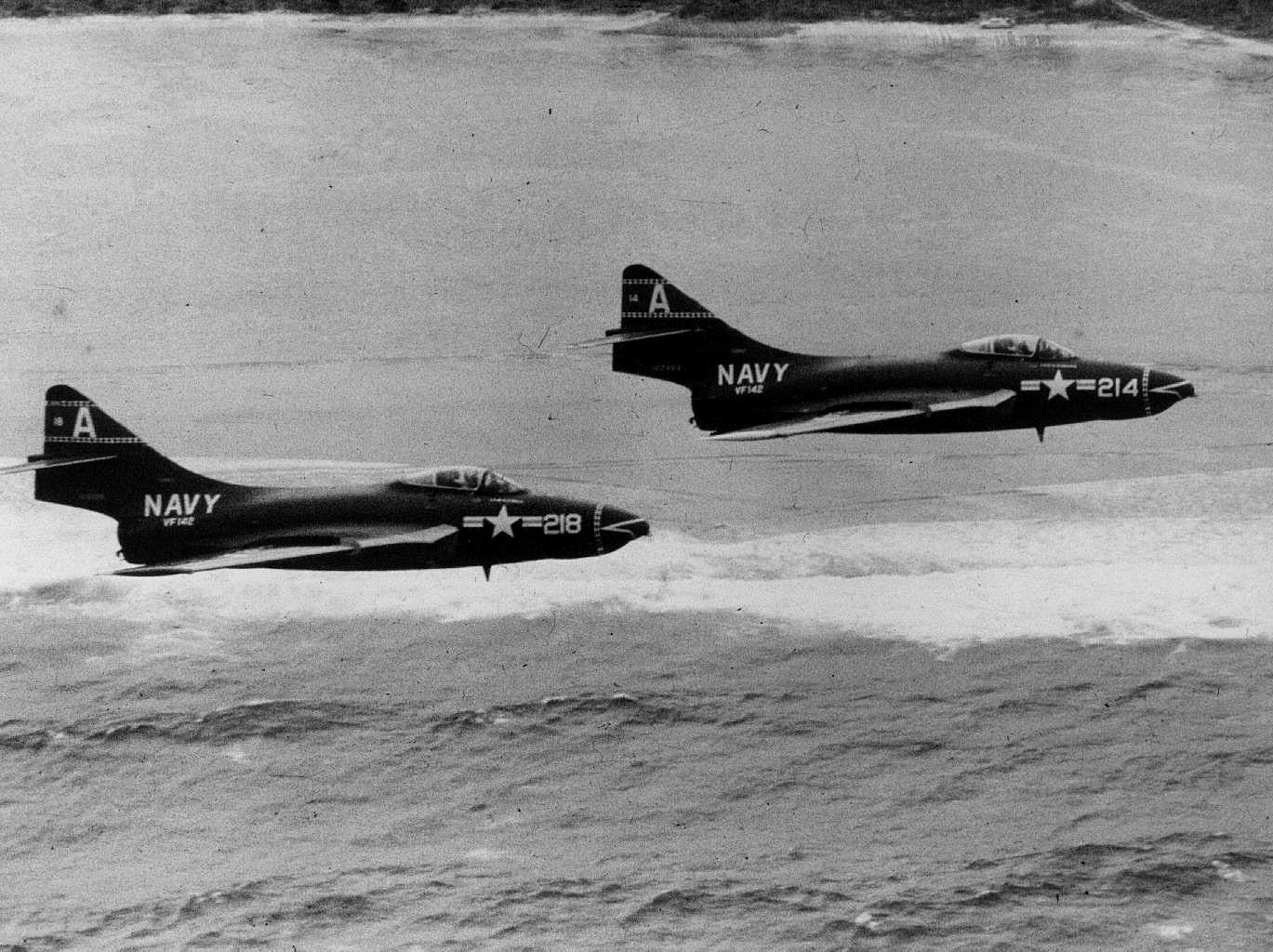
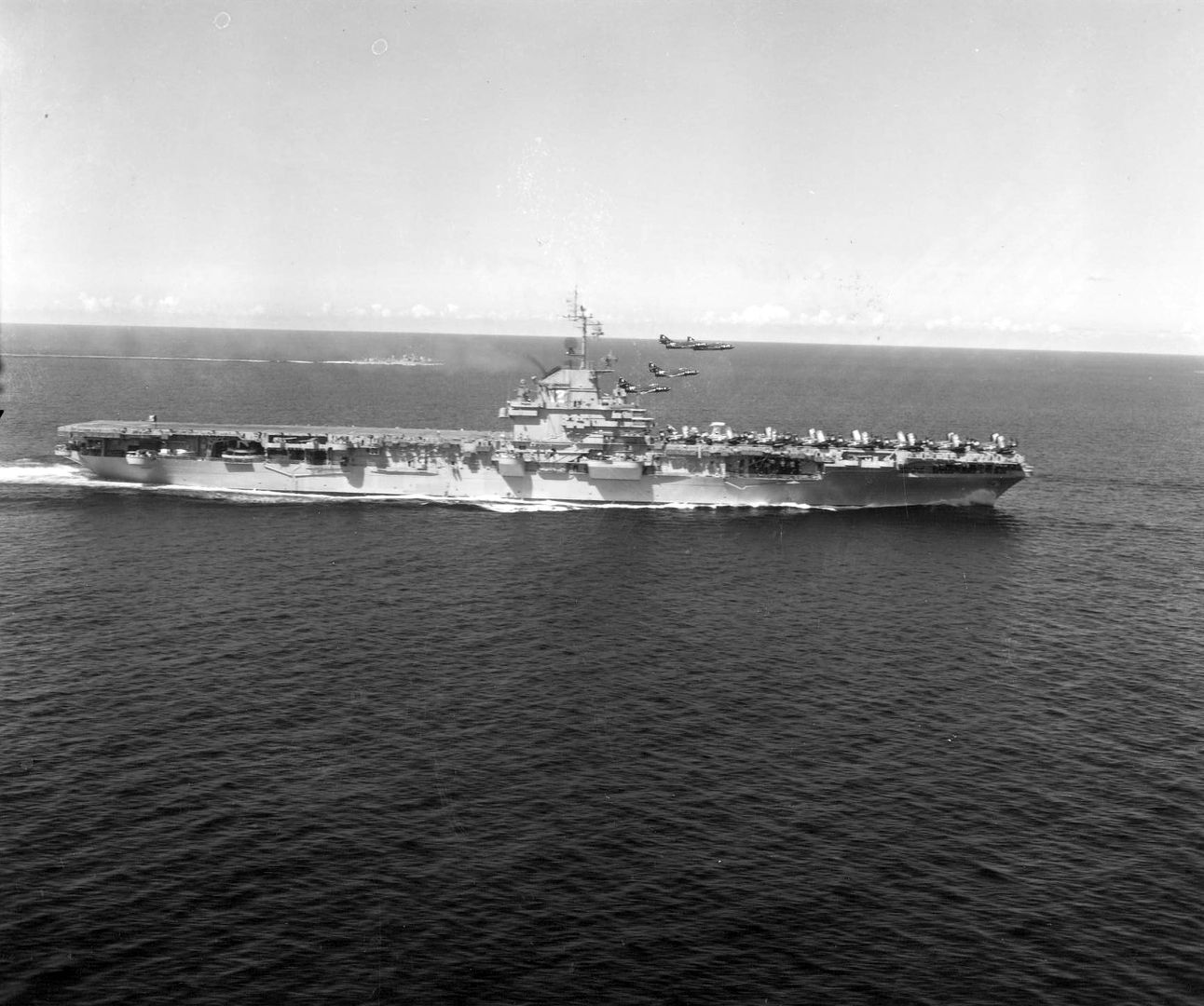
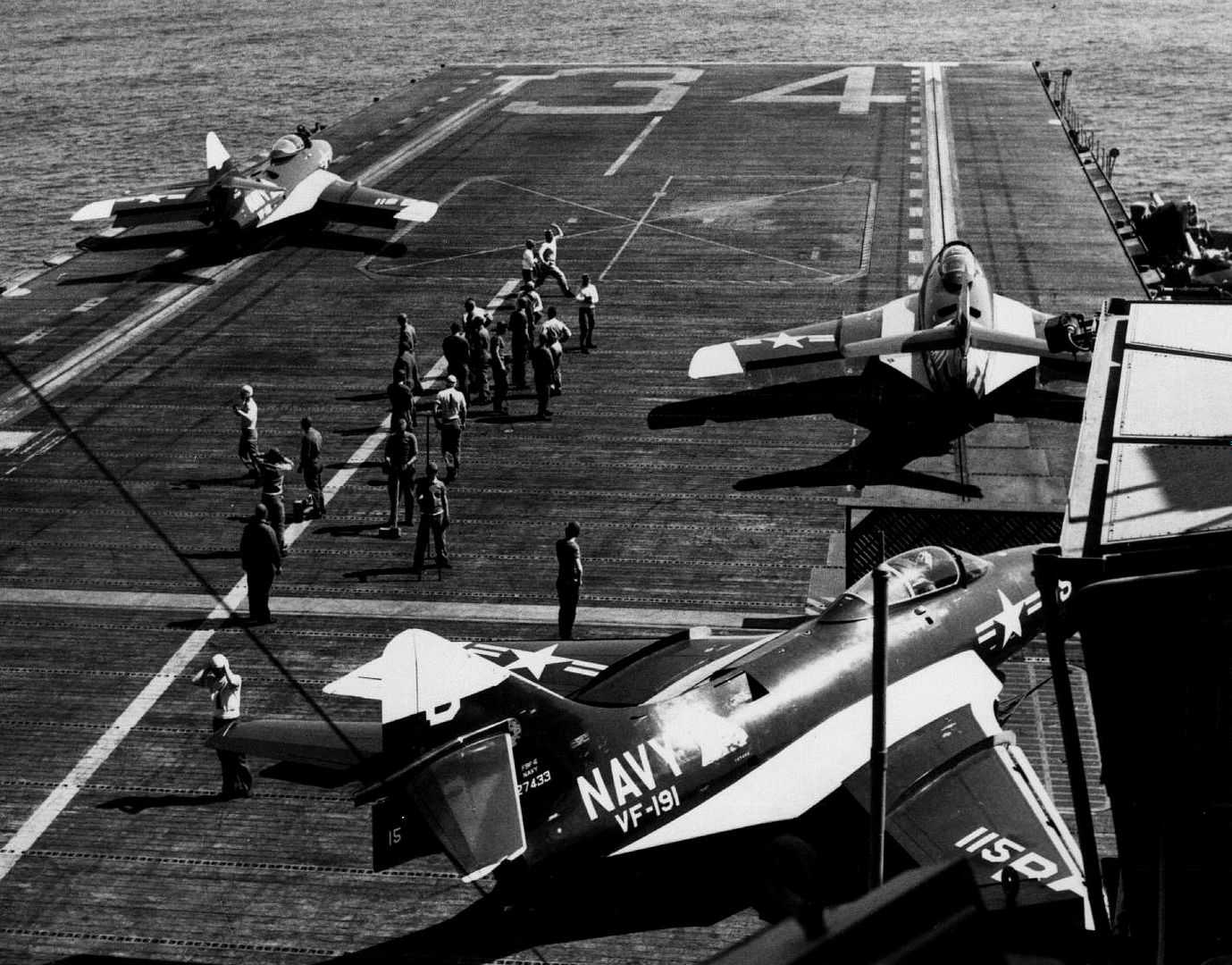

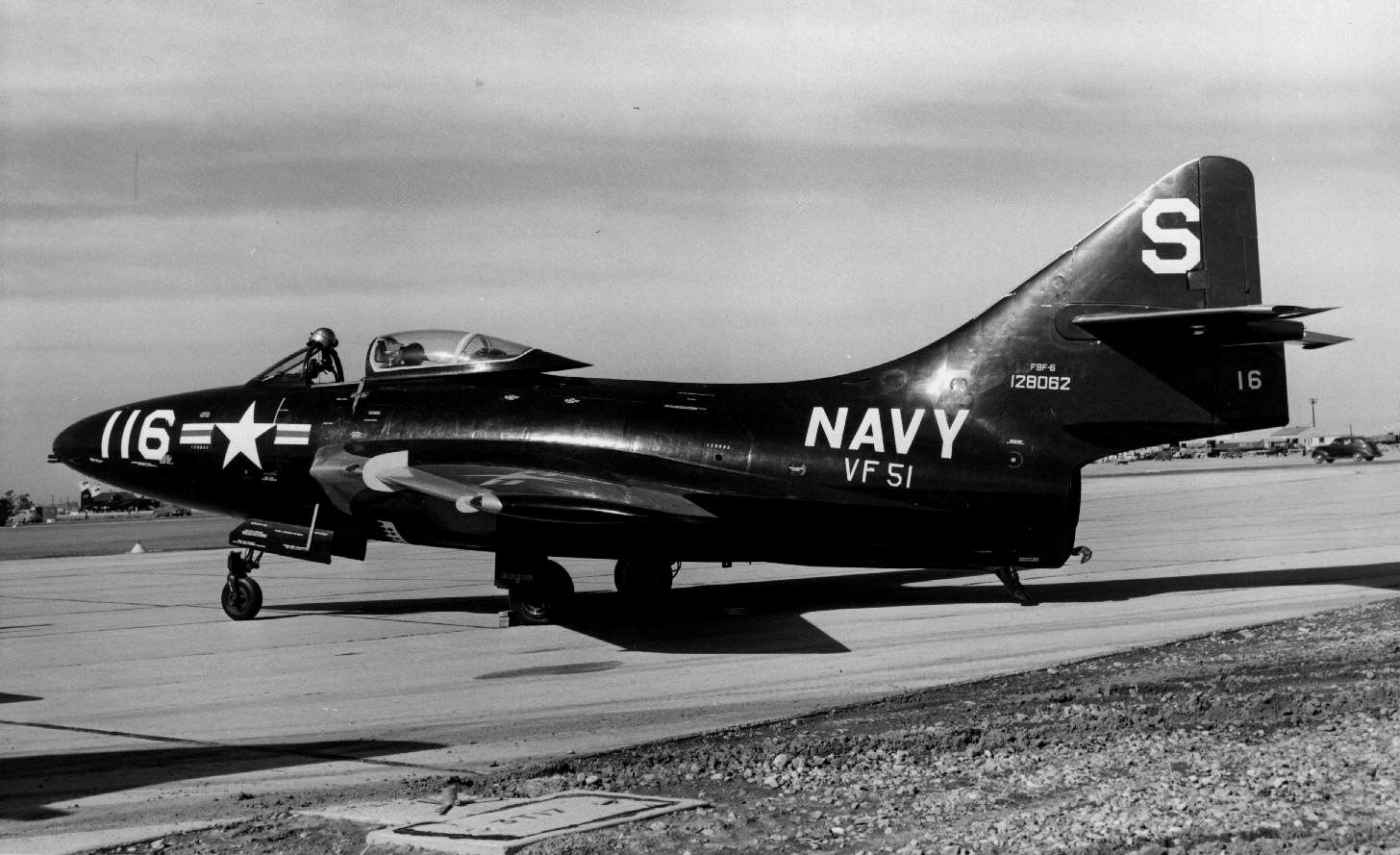
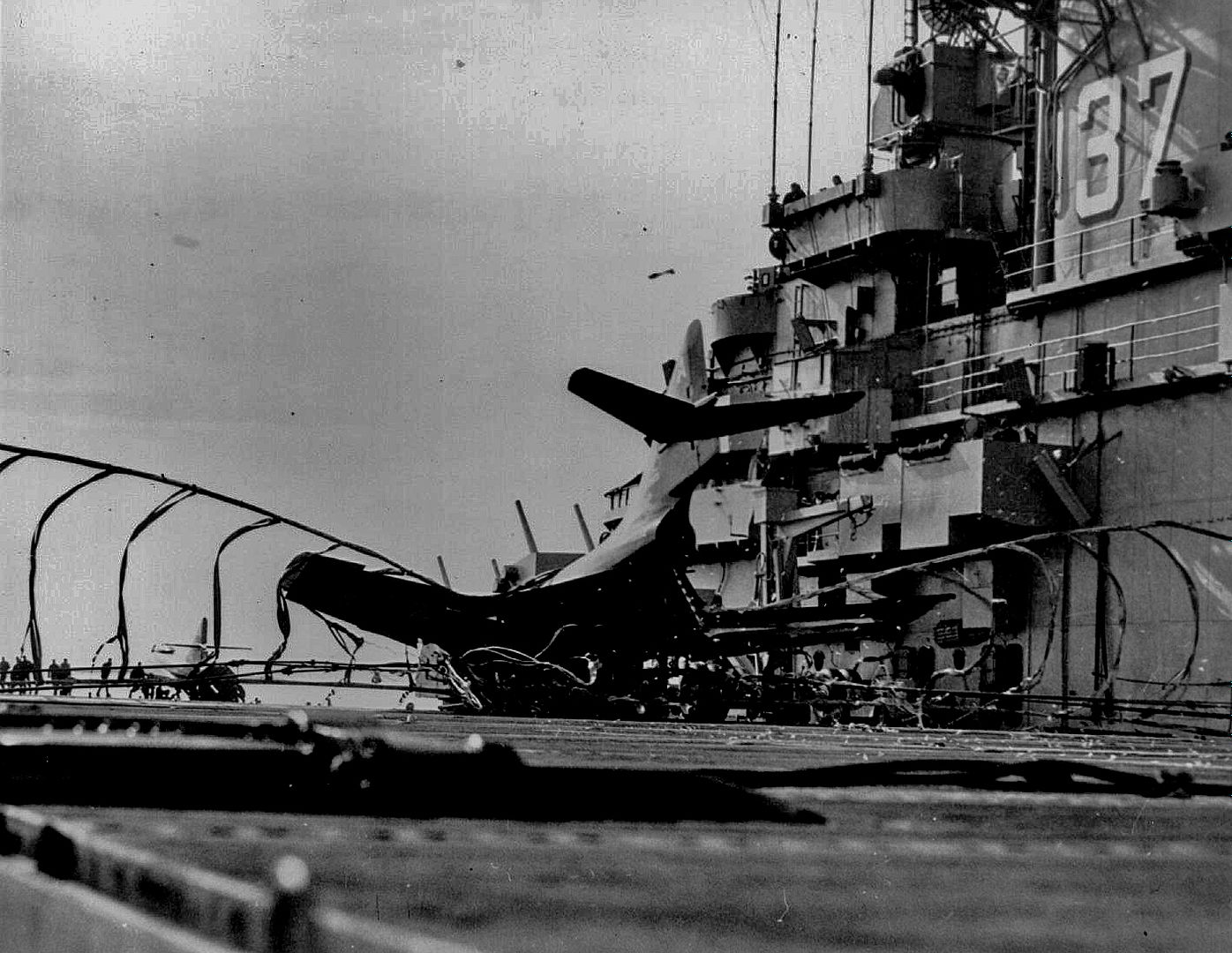
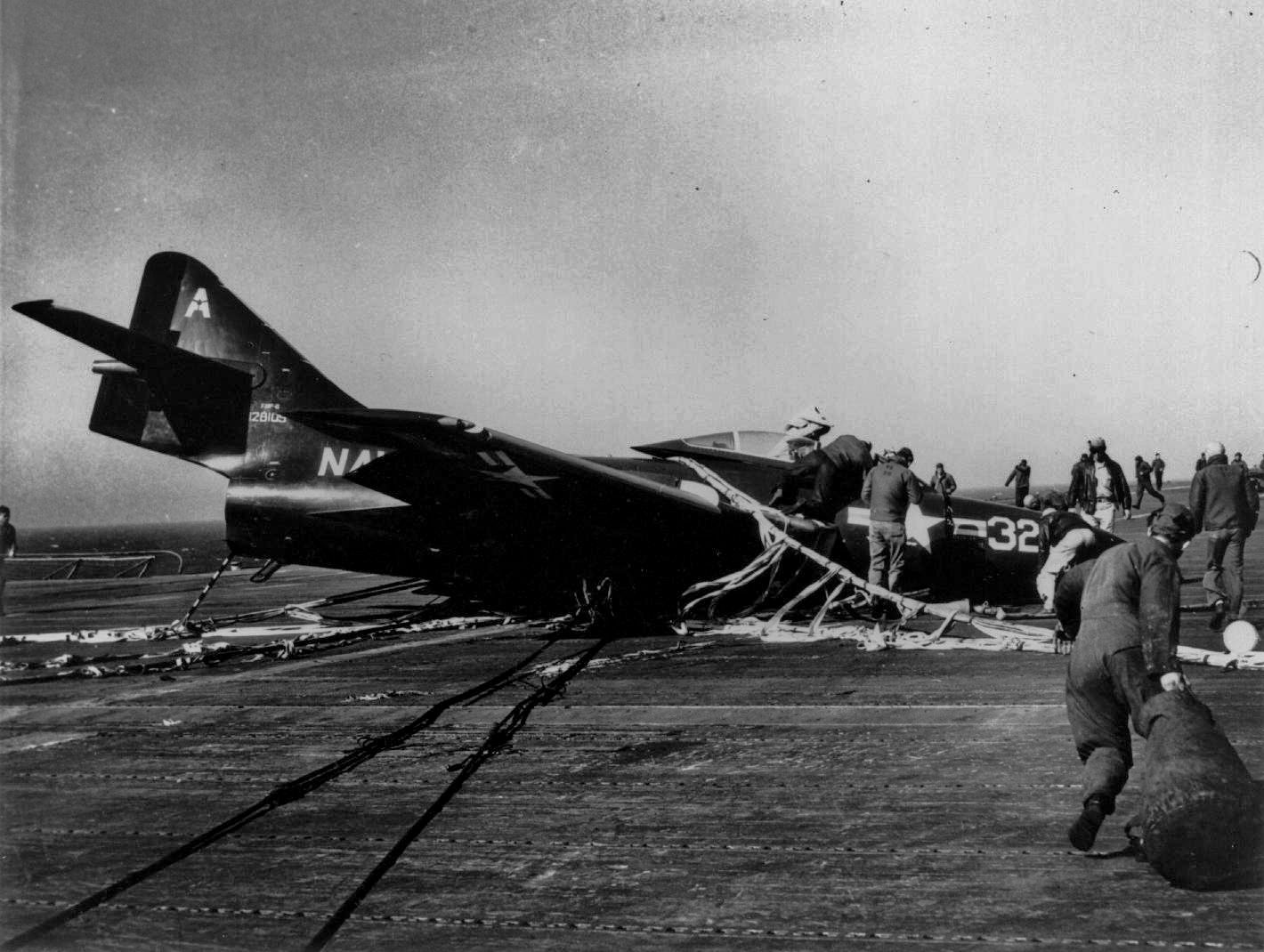
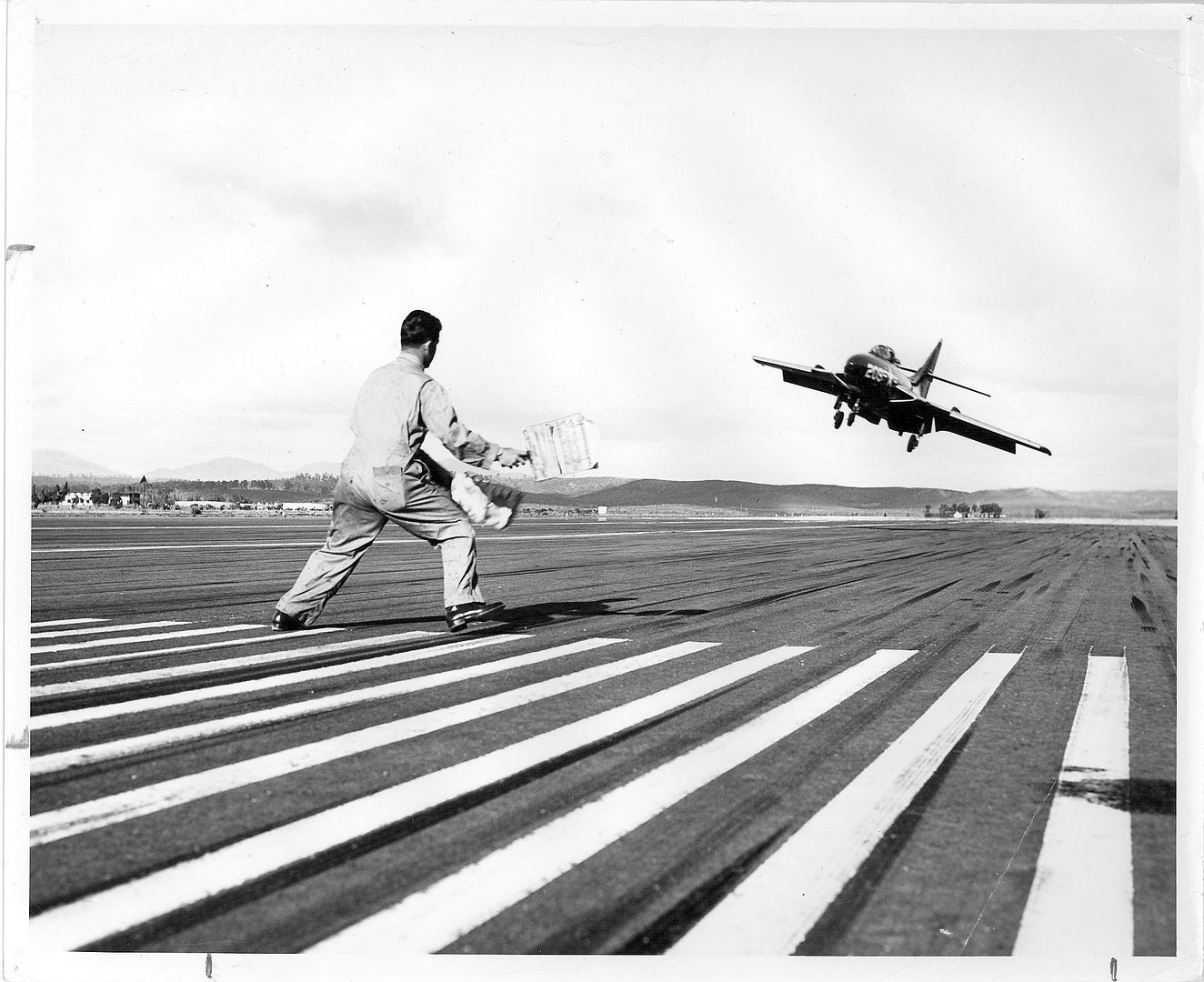
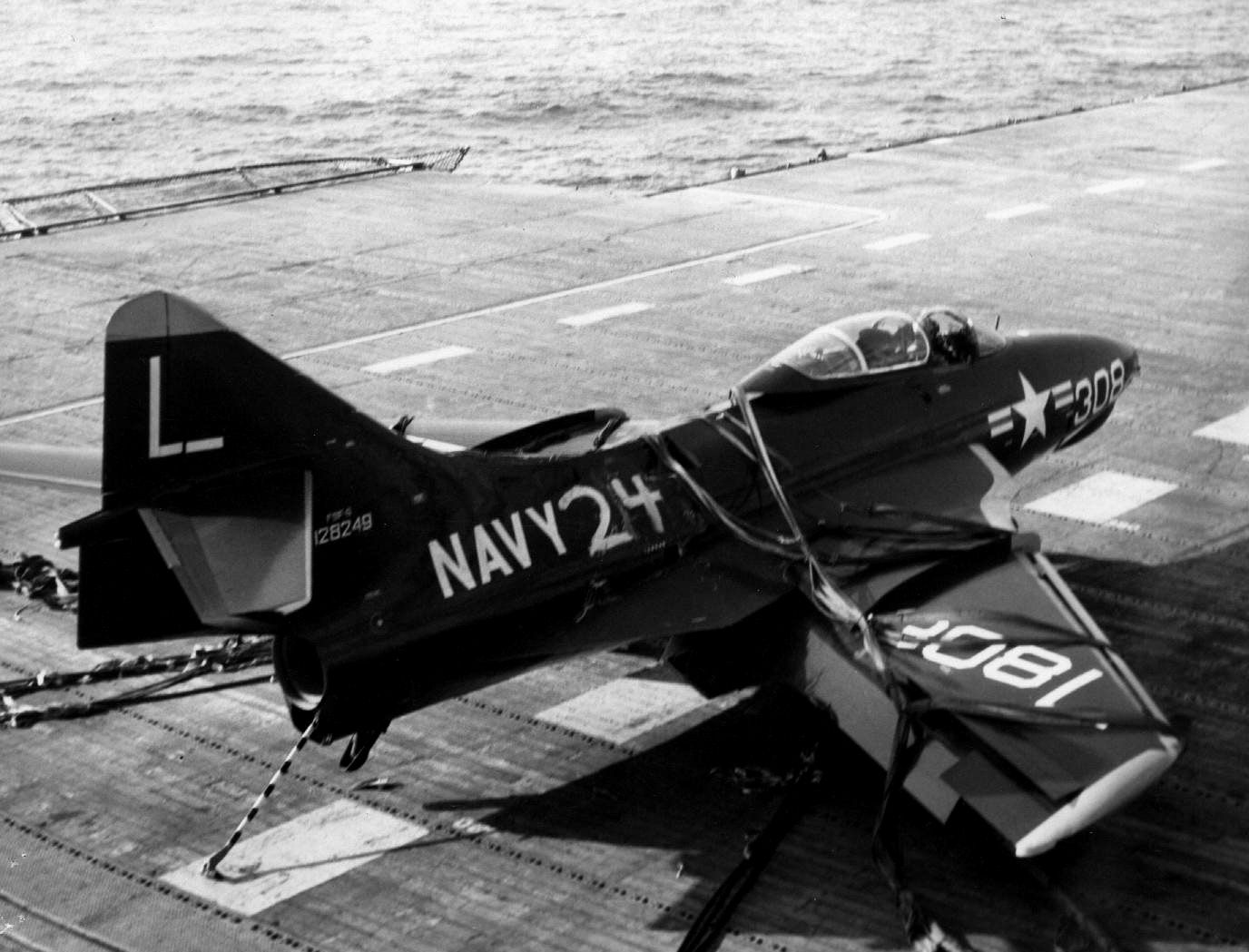
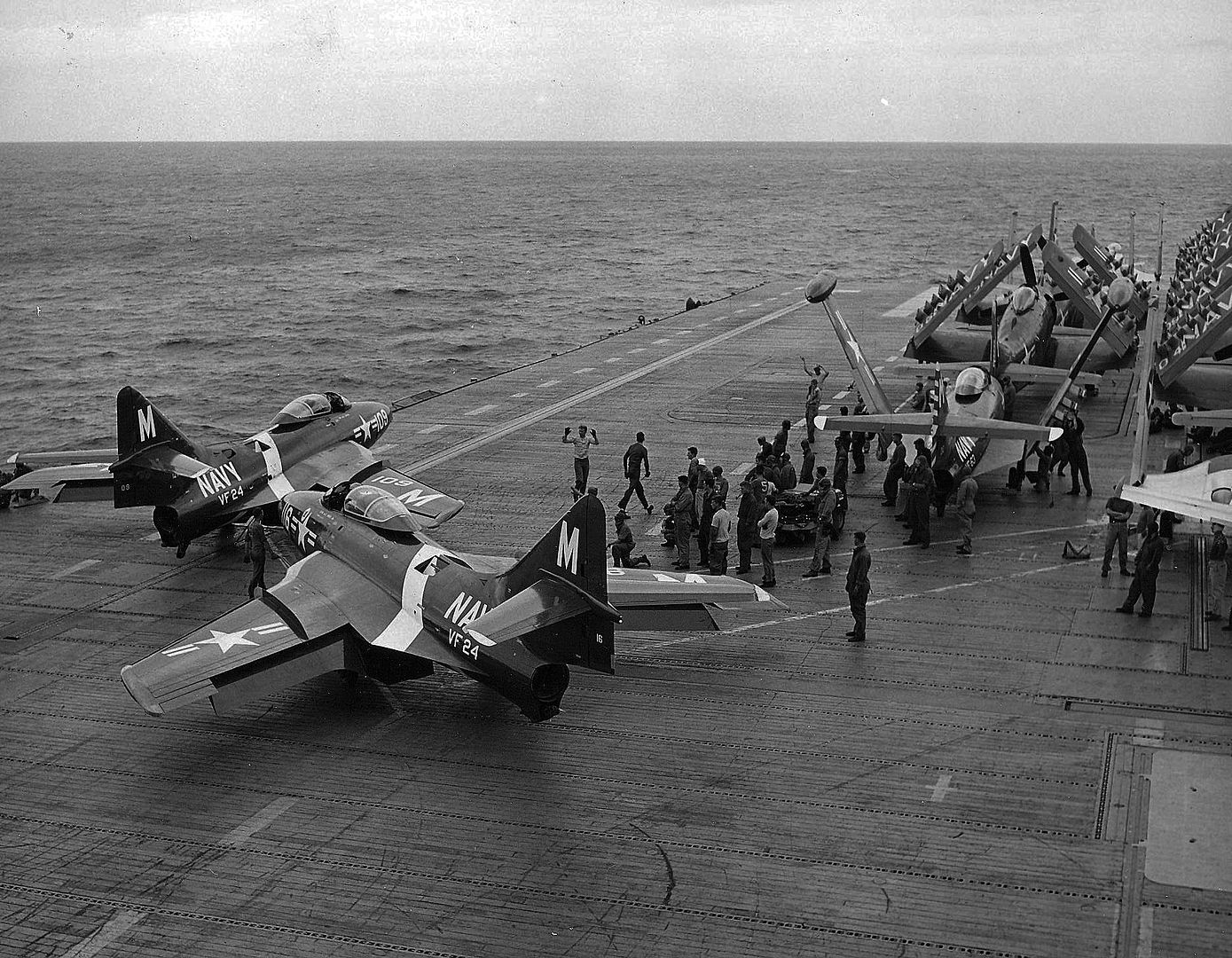
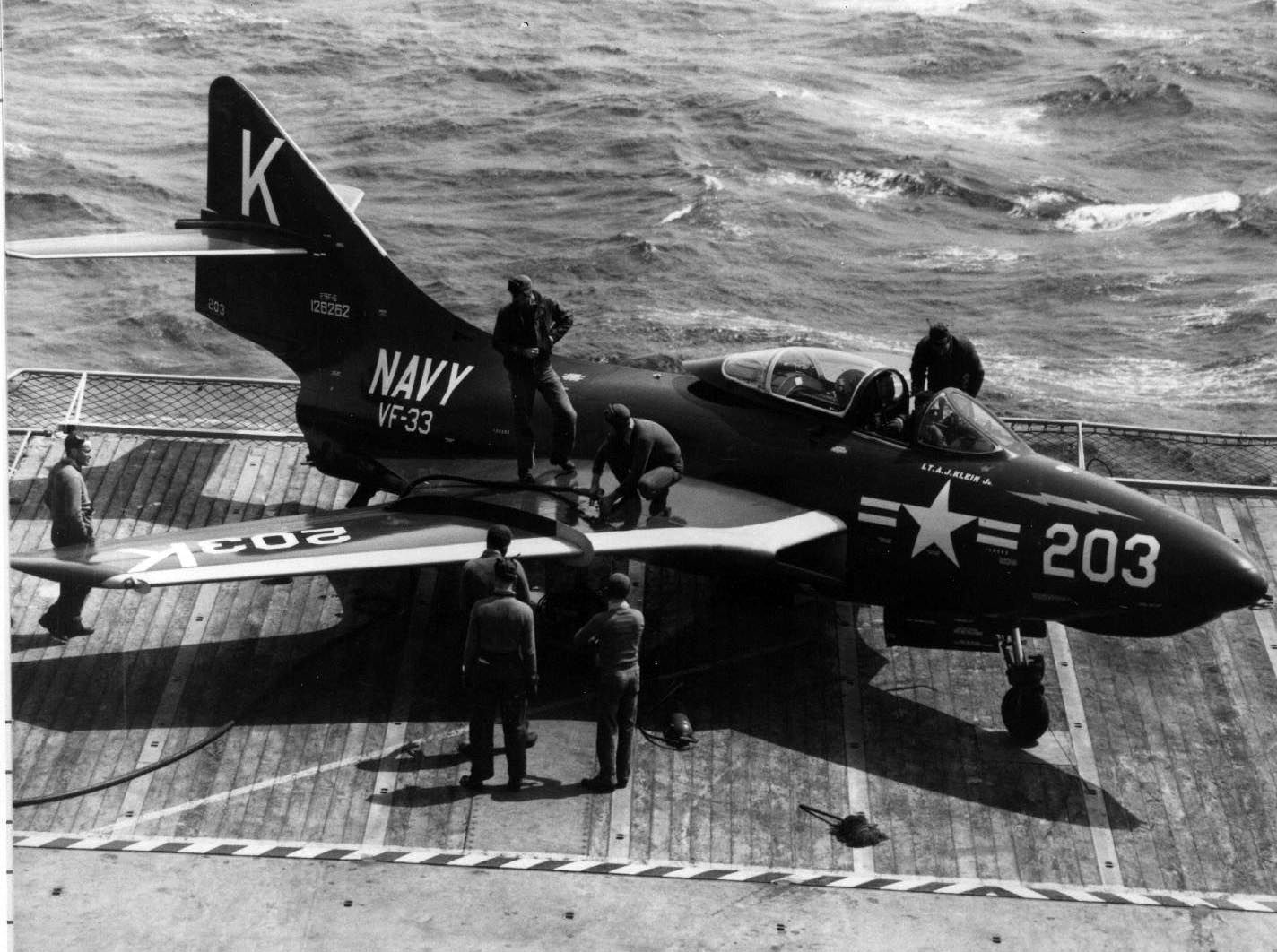
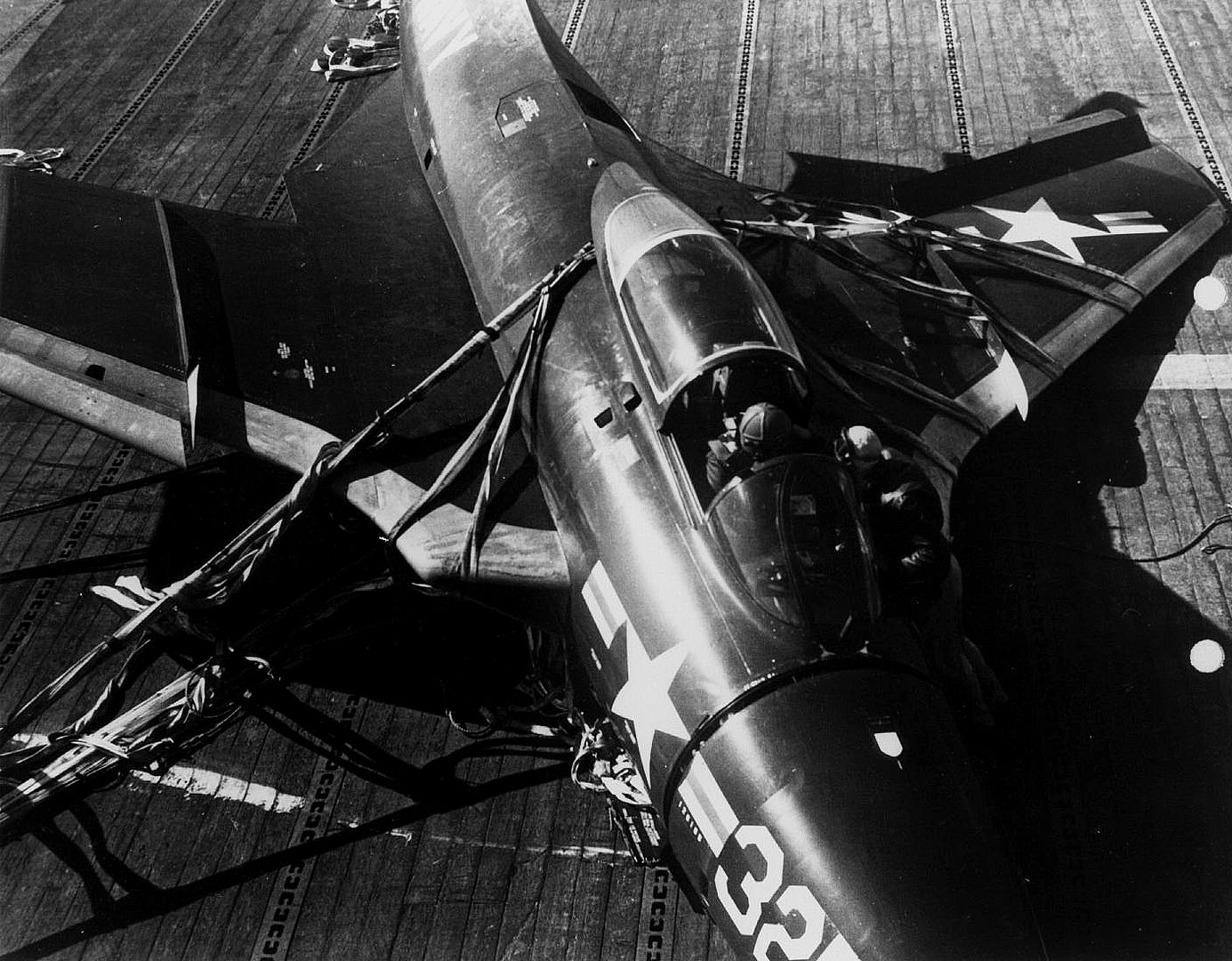

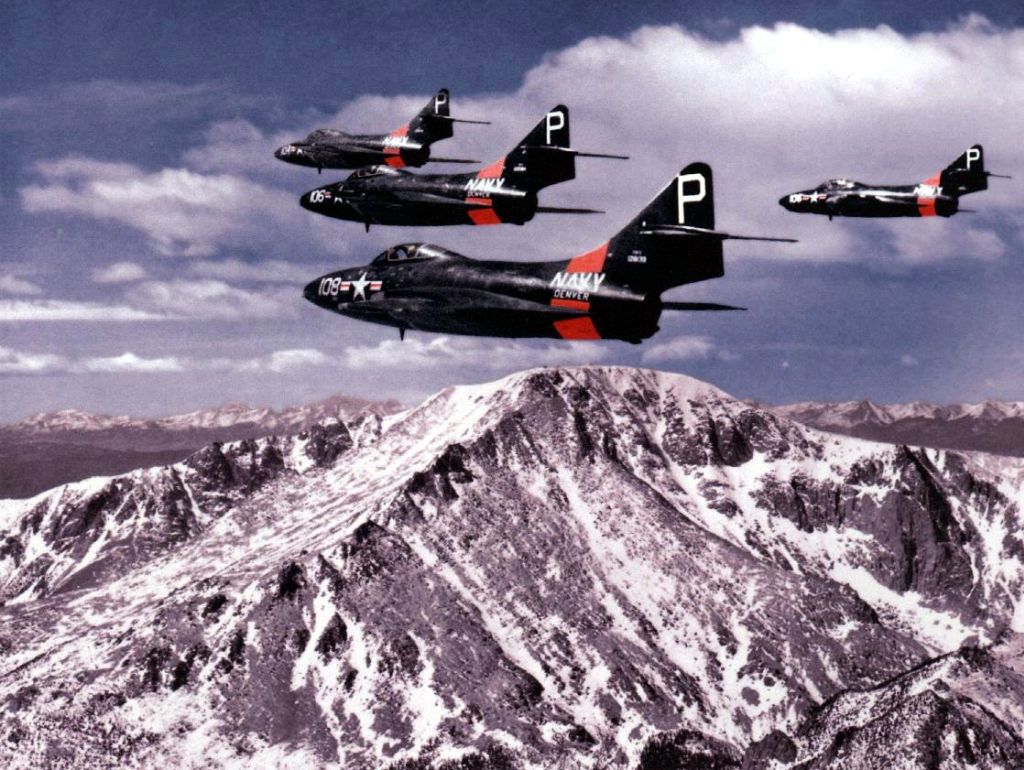
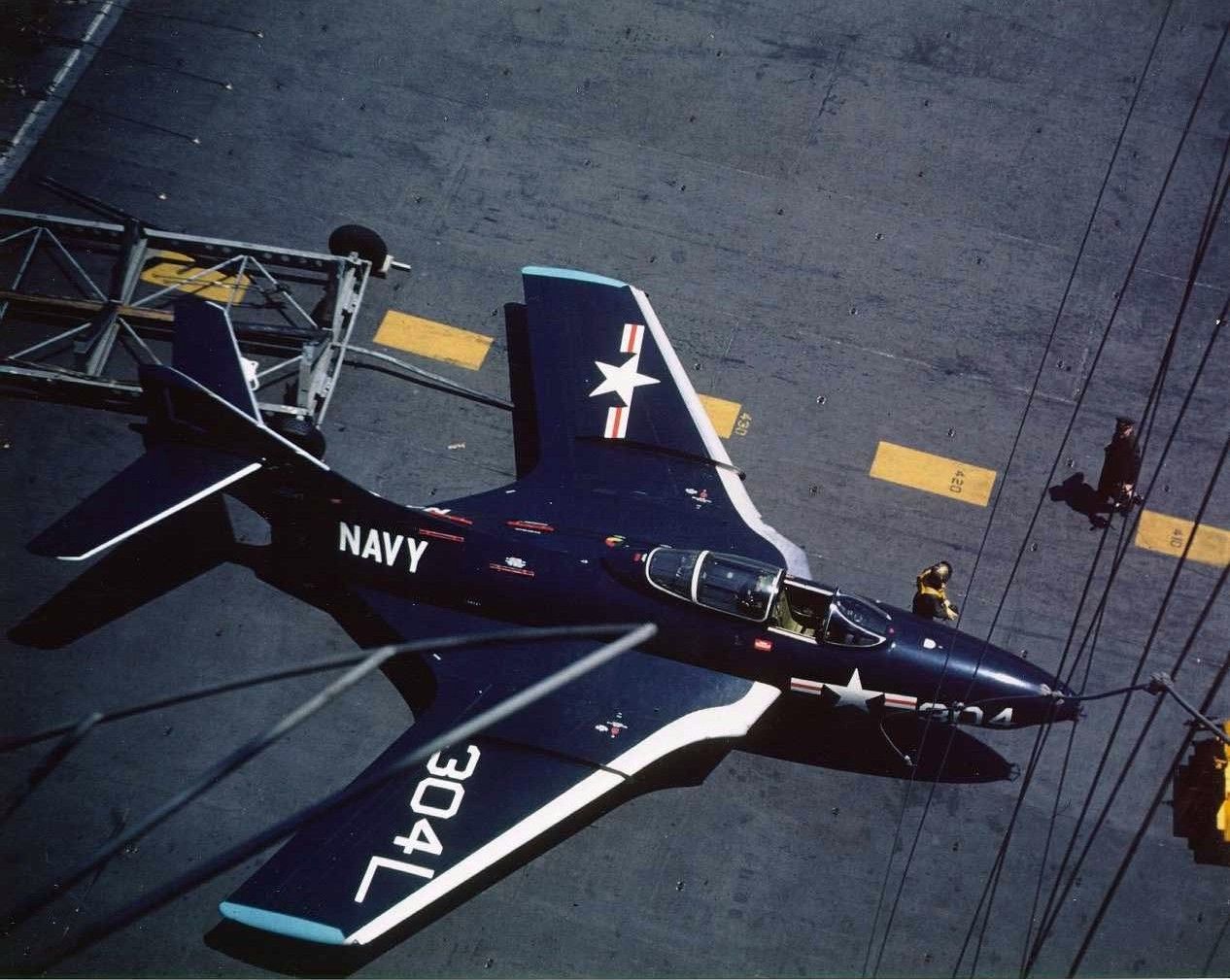
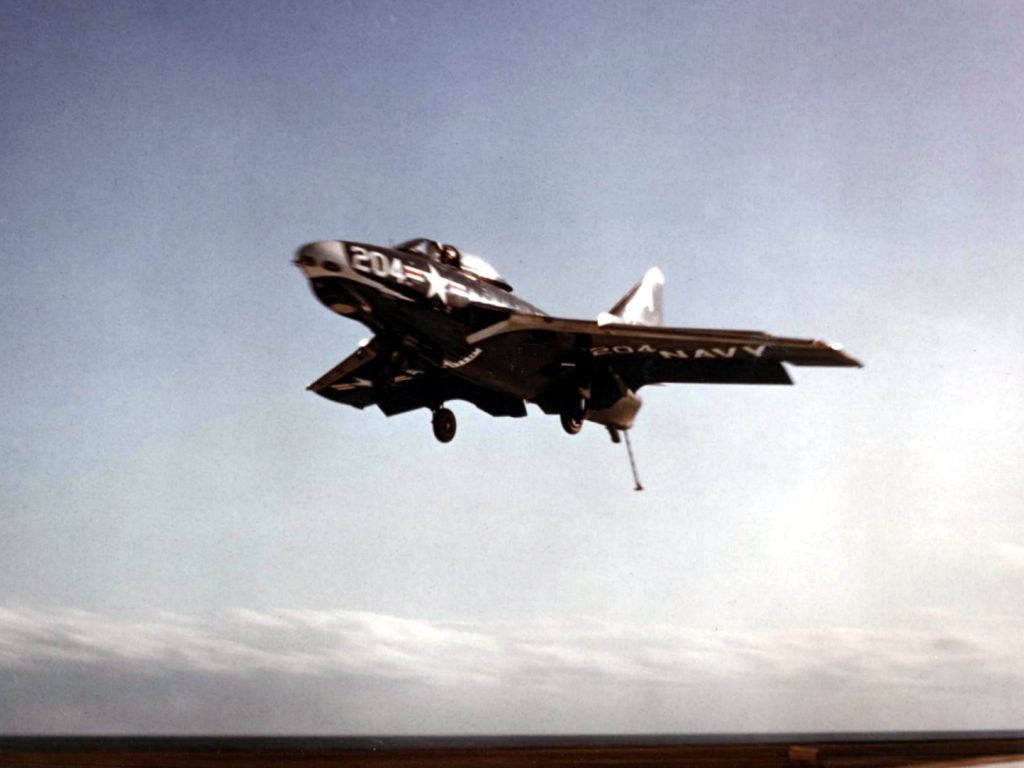


In 1953, the Blue Angels flight demonstration team transitioned from F9F-5 Panthers to F9F-6 Cougars. However, the team's Cougars were urgently needed by operational squadrons, and the Blue Angels were forced to re-equip briefly with F9F-5s. In 1954, the Blue Angels traded in their F9F-5s for F9F-8 Cougars.
In service, F9F-6s were often fitted with a UHF homing antenna in a fairing underneath the nose. A few even had an inflight refuelling probe installed in the nose.
Three probe-equipped F9F-6s flown by VF-21 made the first US transcontinental crossing in less than four hours on April 1, 1954, the fastest time being 3 hours 45 minutes 30 seconds for a distance of 2438 miles.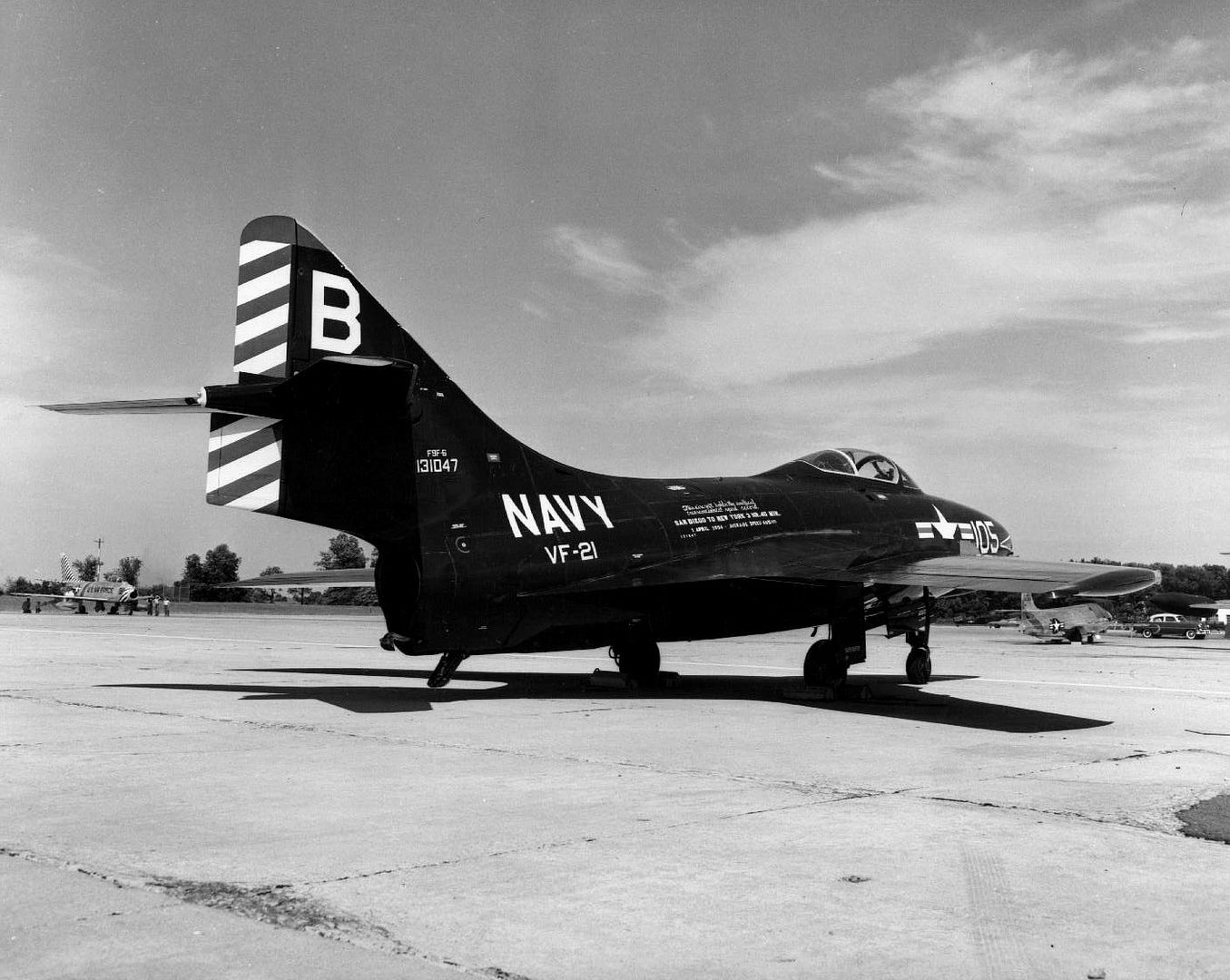
Sixty F9F-6 Cougar airframes were fitted by Grumman with a camera installation in the nose in place of the cannon, and were were delivered under the designation F9F-6P between June 1954 and March 1955. The nose was slightly longer (the length increasing from 41 feet 5 inches to 42 feet 1 7/8 inches). All armament was deleted.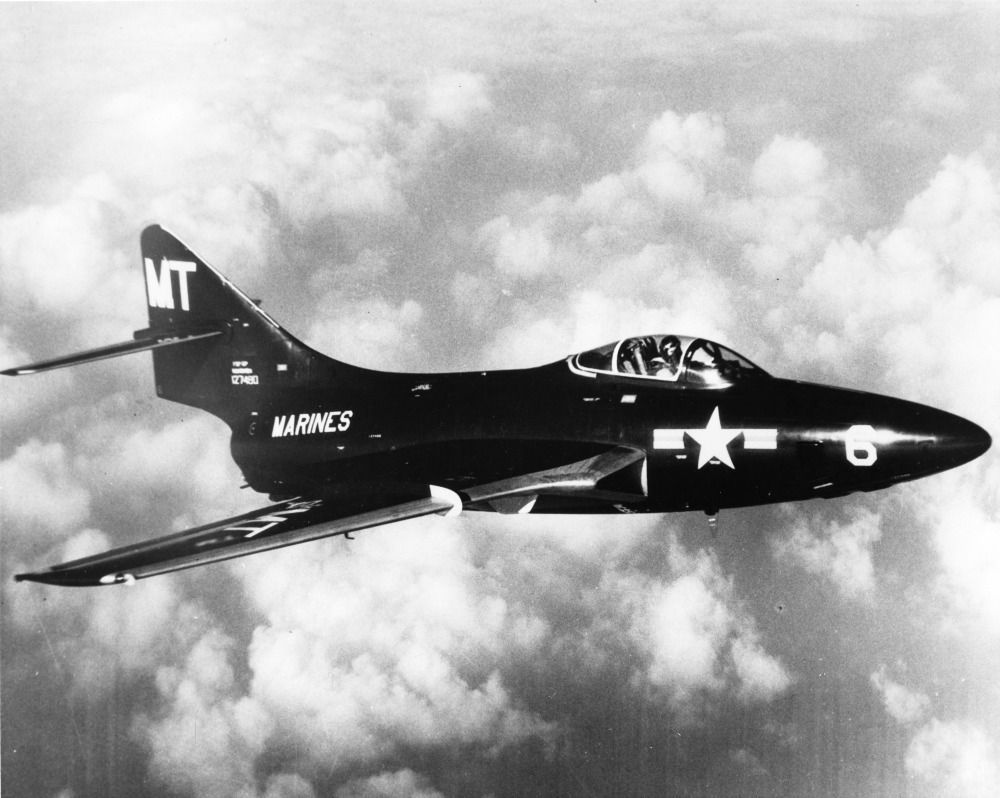

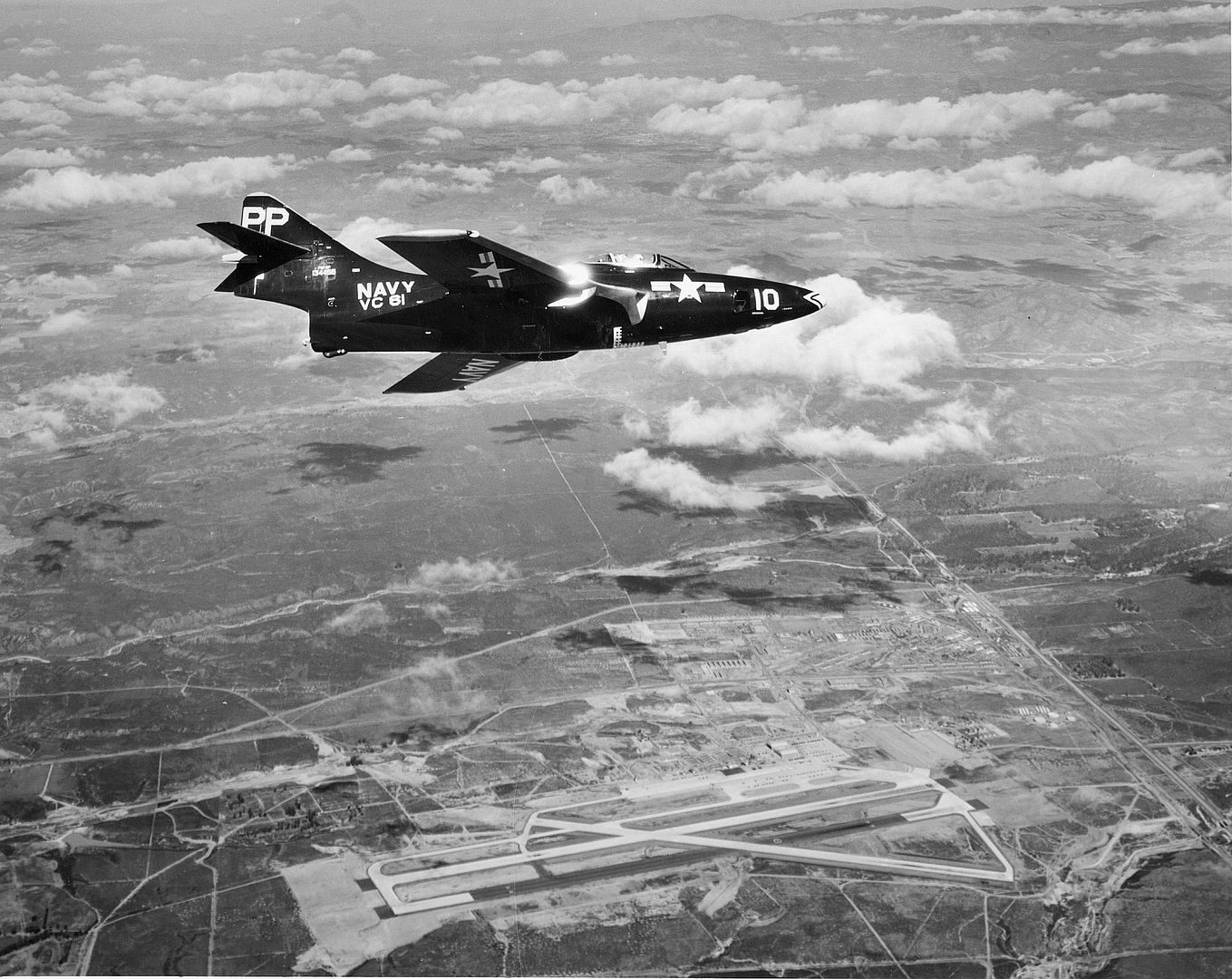
Following the withdrawal of F9F-6s from active service, several F9F-6s were modified as F9F-6D drone directors or as F9F-6K drones. The F9F-6K2 designation identified F9F-6Ks which were equipped with modernized equipment, as a well as a number of F9F-6s which were fitted directly with this newer equipment. The designation F9F-6PD was assigned to two F9F-6Ps (BuNos 127475 and 128308) that were modified as target controller planes.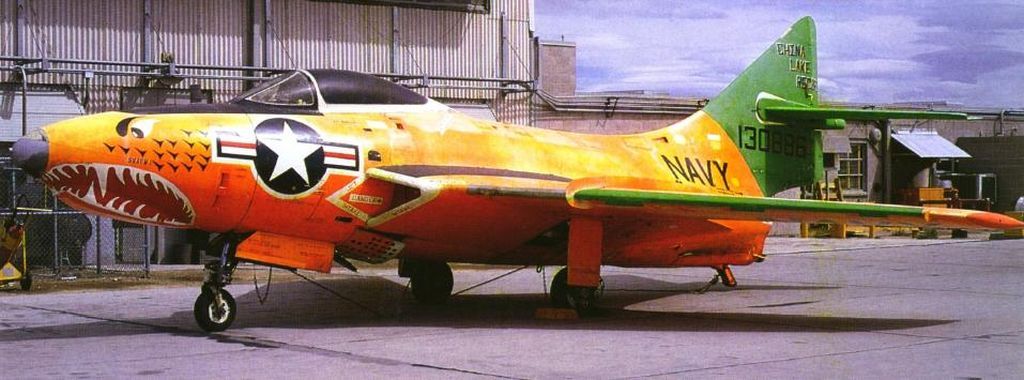
In 1962, the Defense Department introduced the new Tri-Service designation scheme under which the separate USAF/Navy designations were replaced by a new unified designation system. This required that all existing Navy aircraft be redesignated. The F9F-6 was redesignated F-9F, with the F9F-6D, F9F-6K, and F9F-6K2 being redesignated DF-9F, QF-9F, and QF-9G respectively. The F9F-6P reconnaissance aircraft was redesignated RF-9F.
Serial numbers of Grumman F9F-6 Cougar:
126257/126264 Grumman F9F-6 Cougar
126670/122672 Grumman XF9F-6 Cougar
127216/127470 Grumman F9F-6 Cougar
127473/127492 Grumman F9F-6P Cougar
128055/128294 Grumman F9F-6 Cougar
128295/128310 Grumman F9F-6P Cougar
130870/130999 Grumman F9F-6 Cougar
131000/131062 Grumman F9F-6 Cougar
131252/131255 Grumman F9F-6P Cougar
134446/134465 Grumman F9F-6P Cougar
Specification of Grumman F9F-6 Cougar:
Engine: One Pratt & Whitney J48-P-8 turbojet rated at 6250 lb.s.t. dry and 7250 lb.s.t. with water injection. Performance: Maximum speed 654 mph at sea level, 591 mph at 35,000 feet. Cruising speed 541 mph. Stalling speed 128 mph. Initial climb rate 6750 feet per minute. An altitude of 20,000 feet could be attained in 4 minutes. Service ceiling 44,600 feet. 932 miles normal range. Internal fuel was 919 US gallons. With two 150-gallon drop tanks, total fuel load was 1219 US gallons. Dimensions: wingspan 34 feet 6 inches, length 41 feet 5 inches, height 12 feet 4 inches, wing area 300 square feet. Weights: 11,255 pounds empty, 18,450 pounds loaded, 21,000 pounds maximum takeoff. Armament: The armament consisted of four 20-mm cannon in the nose plus two underwing racks for 1000-pound bombs or 150-US gallon drop tanks.
The F9F-7 was identical to the F9F-6 with the exception of the substitution of a 6350 lb.s.t. Allison J33-A-16 turbojet in place of the Pratt & Whitney J48. Contracts were placed for 168 F9F-7s. However, the J33 was less powerful and reliable than the J48, and the last fifty F9F-7s were delivered with J48s and were therefore indistinguishable from F9F-6s. In service, most F9F-7s were re-engined with the J48.
Like the F9F-6, many F9F-7s were fitted in service with a UHF homing beacon in a fairing underneath the nose.
A pair of F9F-7s took part in a very interesting experiment in 1954. This was the evaluation of the feasibility of landing wheels-up on an inflated rubber mat, or "flexdeck" as it came to be known. The basic idea behind flexdeck was that aircraft equipped to land on such a surface could dispense with the weight and complexity of a retractable undercarriage. Referred to as Design 94A by the company, the project involved the modification of F9F-7 BuNos 130862 and 130863. A false bottom was added underneath the center fuselage and the aircraft were re-engined with J48-P-8 engines. The leading edge slats were bolted permanently in the down position and the center flap section was locked shut. The first wheels up arrested landing took place on an inflated mat at NATC Patuxent River, Maryland on February 18, 1955. The tests proved that such landings could be performed safely and reliably. However, the Navy concluded that the basic idea was impractical, since aircraft without undercarriage could not divert to airfields or carriers that did not have flexdeck. The project was finally terminated in March of 1956.
In 1962, the F9F-7 was redesignated F-9H under the new Defense Department Tri-Service unified designation scheme.
Serials of Grumman F9F-7 Cougar
130752/130919 Grumman F9F-7 Cougar
(130870/130919 delivered as F9F-6s)
Specification of the Grumman F9F-7 Cougar:
One Allison J33-A-16A turbojet rated at 6350 lb.s.t. dry and 7000 lb.s.t. with water injection. Performance: Maximum speed 628 mph at sea level, 559 mph at 35,000 feet. Cruising speed 541 mph. Stalling speed 130 mph. Initial climb rate 5100 feet per minute. An altitude of 30,000 feet could be attained in 11.6 minutes. Service ceiling 40,200 feet. 1157 miles normal range. Internal fuel was 919 US gallons. With two 150-gallon drop tanks, total fuel load was 1219 US gallons. Dimensions: wingspan 34 feet 6 inches, length 41 feet 5 inches, height 12 feet 4 inches, wing area 300 square feet. Weights: 11,225 pounds empty, 16,577 pounds combat, 18,905 pounds gross. Armament: The armament consisted of four 20-mm cannon in the nose plus two underwing racks for 1000-pound bombs or 150-US gallon drop tanks.
-
8 years agoSat Feb 13 2016, 03:29pm
 Main AdminThe F9F-8 was the last fighter version of the Cougar to see production. It was an attempt to reduce the stalling speed, to improve the control at high angles of attack, and to increase the range of the basic F9F-6. Known as Design 99 by the company, work on the project began in April of 1953. It featured an 8-inch extension of the center fuselage. In order to reduce the stalling speed, Design 99 was fitted with extended and cambered leading edges in place of the slats outboard of the fences. In addition, the trailing edges of the wing were extended further aft. This increased chord resulted in an increase of wing area from 300 to 337 square feet. It produced a wing with a relatively thinner cross section which resulted in an improved critical Mach number. Internal fuel was increased from 919 to 1063 gallons by adding a fuel tank in the extended wing leading edge and by enlarging the forward fuselage tank. The F9F-8 was fitted with a reinforced sliding canopy. The engine was the J48-P-8A or P-8C turbojet, rated at 7250 lb.s.t. dry.
Main AdminThe F9F-8 was the last fighter version of the Cougar to see production. It was an attempt to reduce the stalling speed, to improve the control at high angles of attack, and to increase the range of the basic F9F-6. Known as Design 99 by the company, work on the project began in April of 1953. It featured an 8-inch extension of the center fuselage. In order to reduce the stalling speed, Design 99 was fitted with extended and cambered leading edges in place of the slats outboard of the fences. In addition, the trailing edges of the wing were extended further aft. This increased chord resulted in an increase of wing area from 300 to 337 square feet. It produced a wing with a relatively thinner cross section which resulted in an improved critical Mach number. Internal fuel was increased from 919 to 1063 gallons by adding a fuel tank in the extended wing leading edge and by enlarging the forward fuselage tank. The F9F-8 was fitted with a reinforced sliding canopy. The engine was the J48-P-8A or P-8C turbojet, rated at 7250 lb.s.t. dry.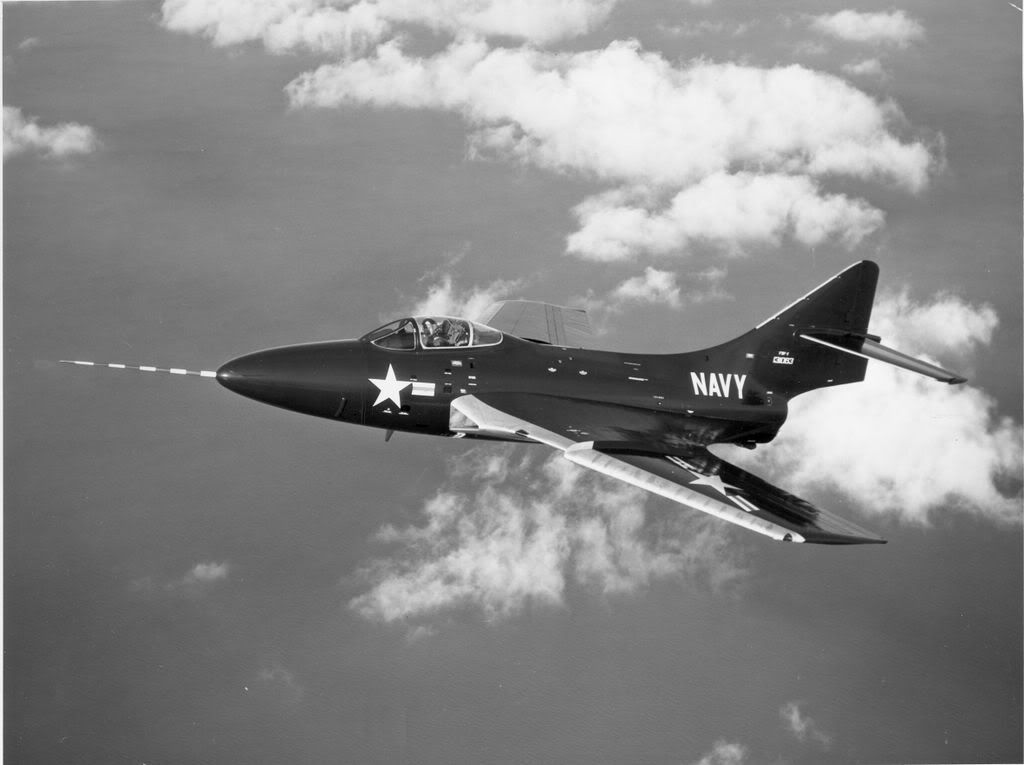
The first F9F-8 flew on January 18, 1954. A total of 601 F9F-8s were delivered to the Navy between April 1954 and March 1957. During the course of production, a fixed inflight refuelling probe was added to the nose. Most F9F-8s were fitted with a UHF homing antenna in a fairing underneath the nose. Late production F9F-8s were fitted with the capability of carrying two Sidewinder infrared-homing air-to-air missile underneath each wing. This feature was retrofitted to many earlier F9F-8s. The first Sidewinder-equipped Cougars were deployed overseas by VA-48 in July of 1956.
On October 5, 1956, three VF-144 pilots set an unofficial round trip record by flying their F9F-8s from NAS Miramar, California to Long Island, New York and back with refuelling stops each way at NAS Olathe, Kansas. The total time was 10 hours 49 minutes 11 seconds.
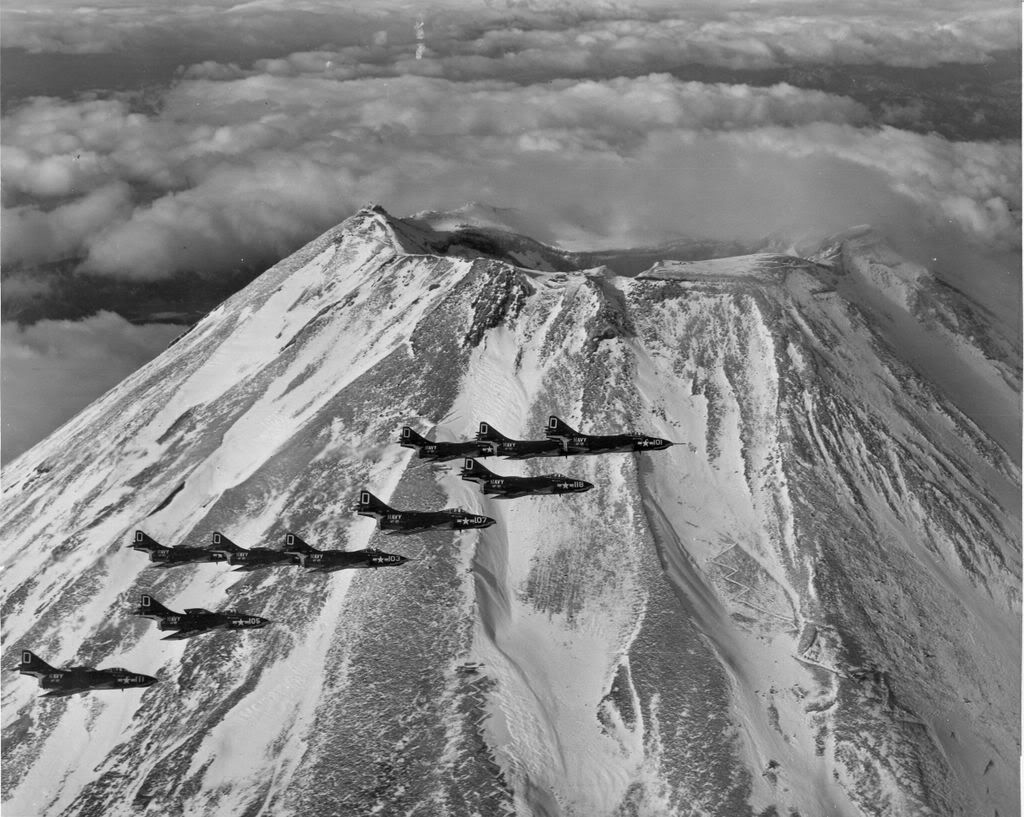
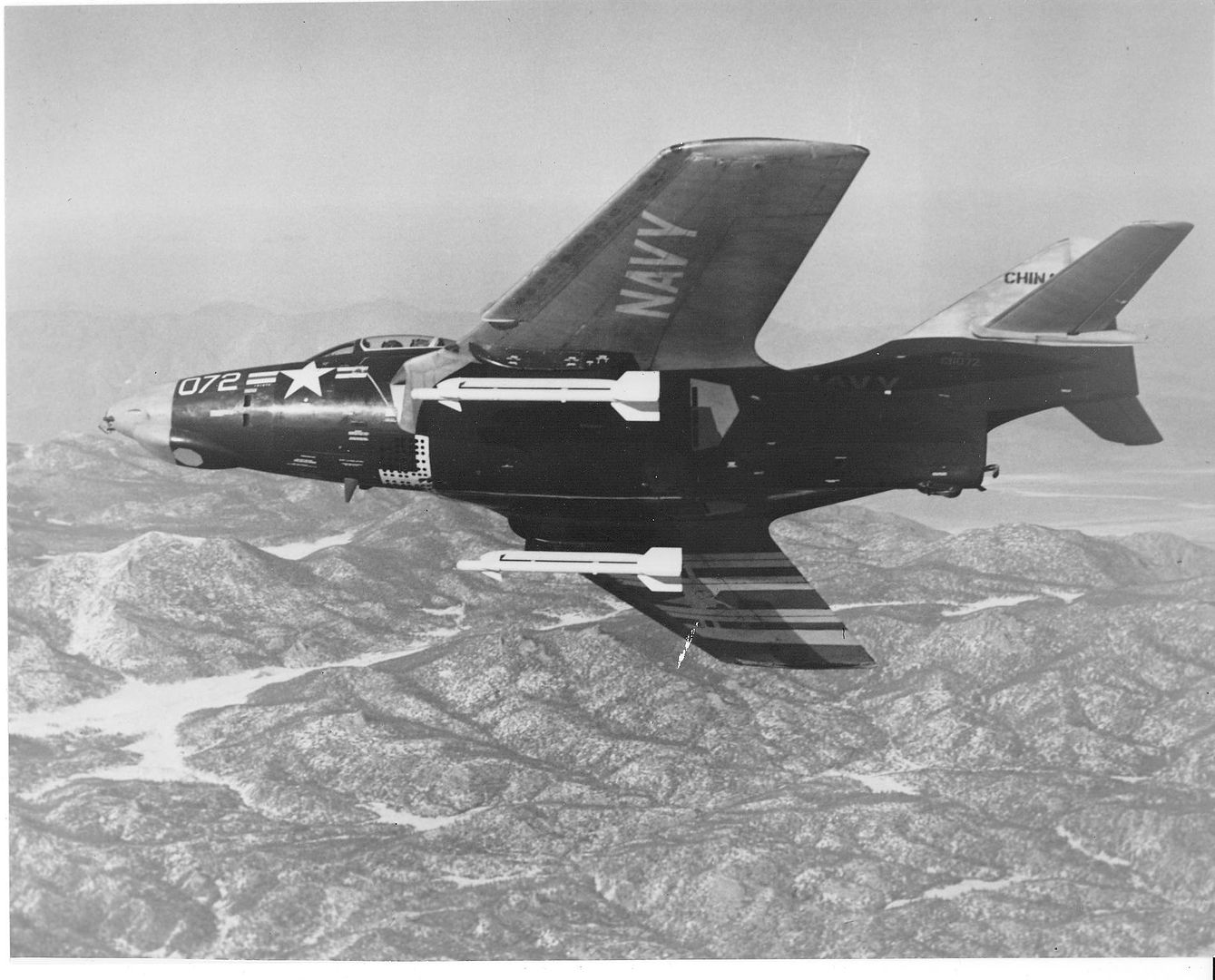

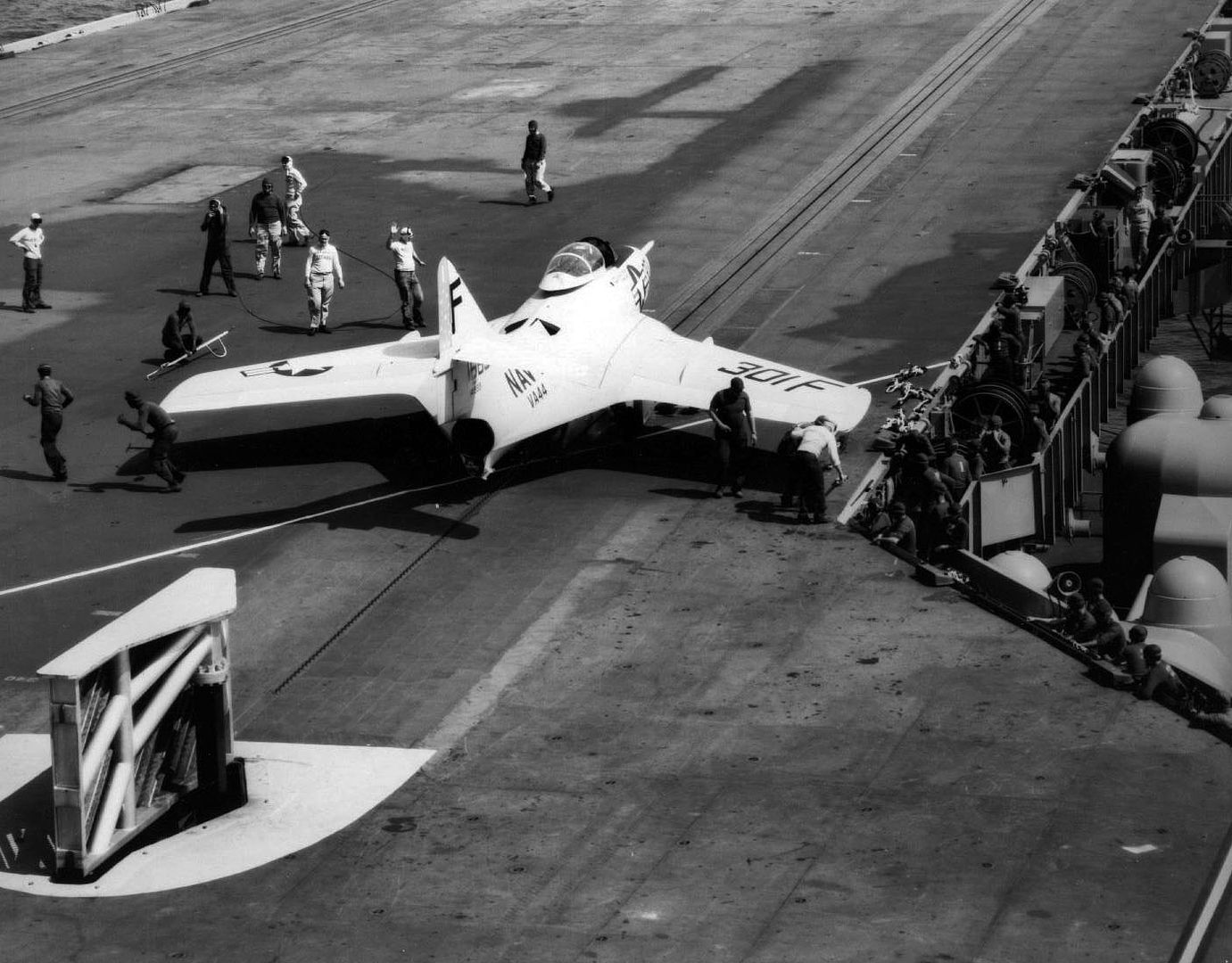
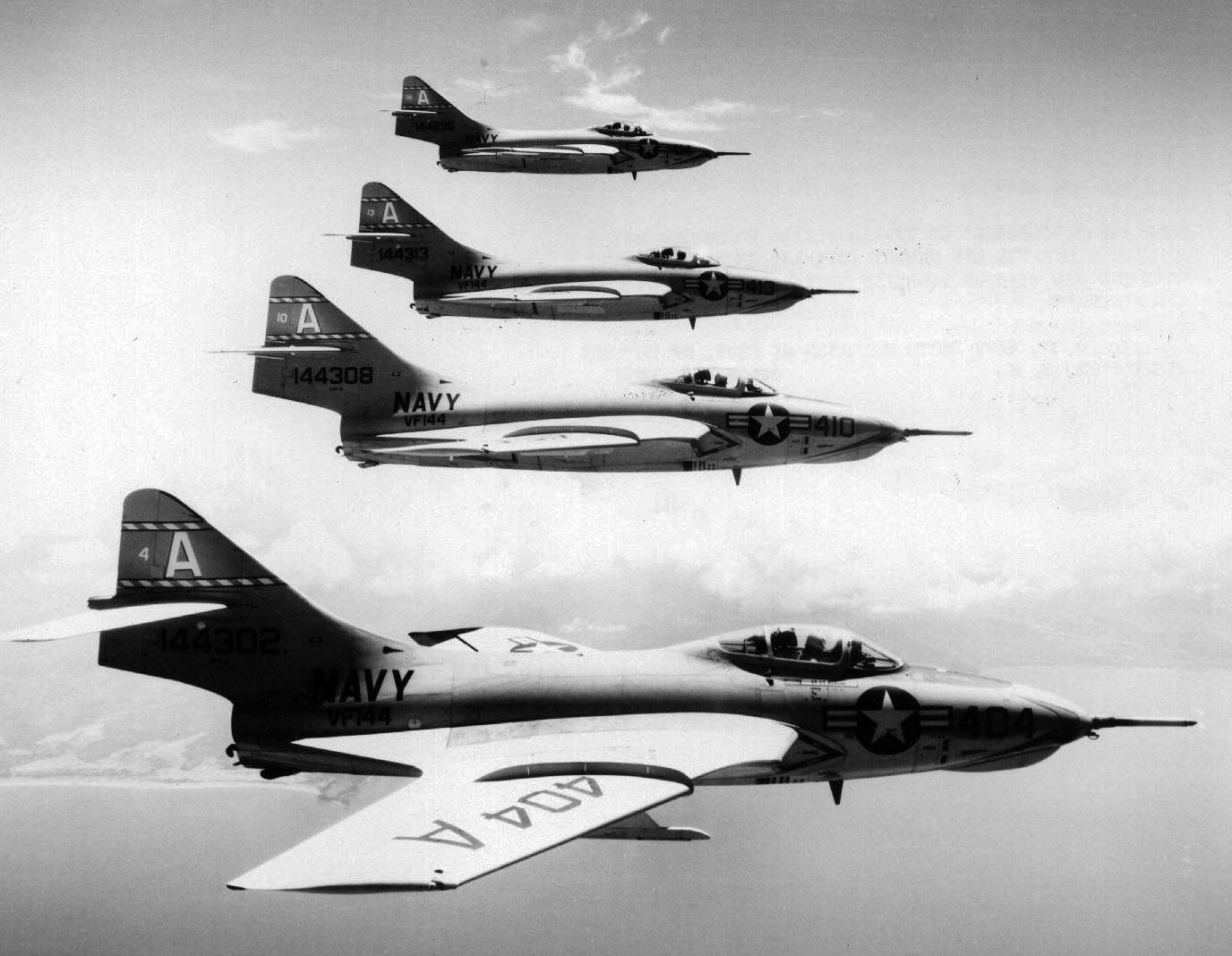
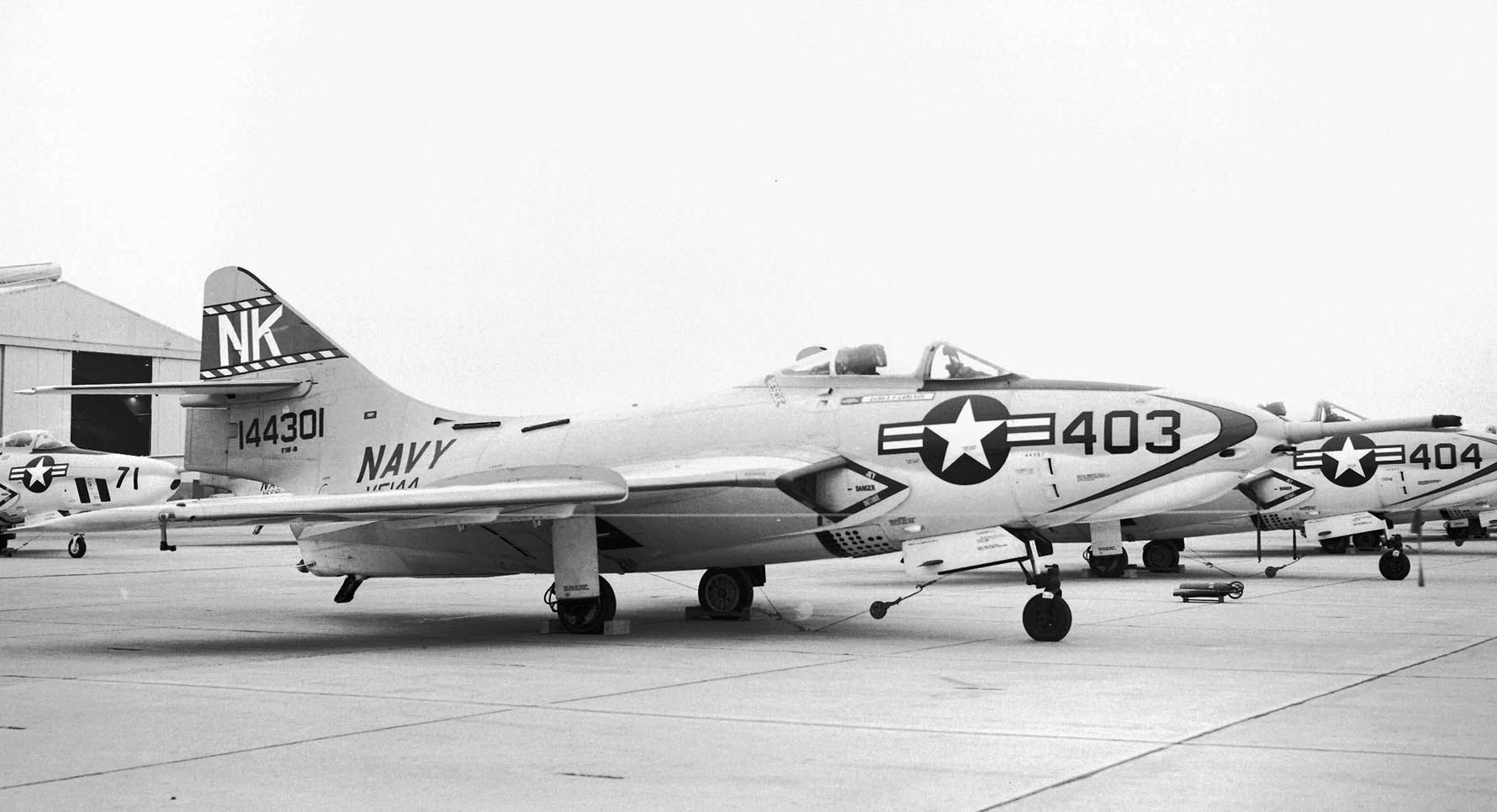
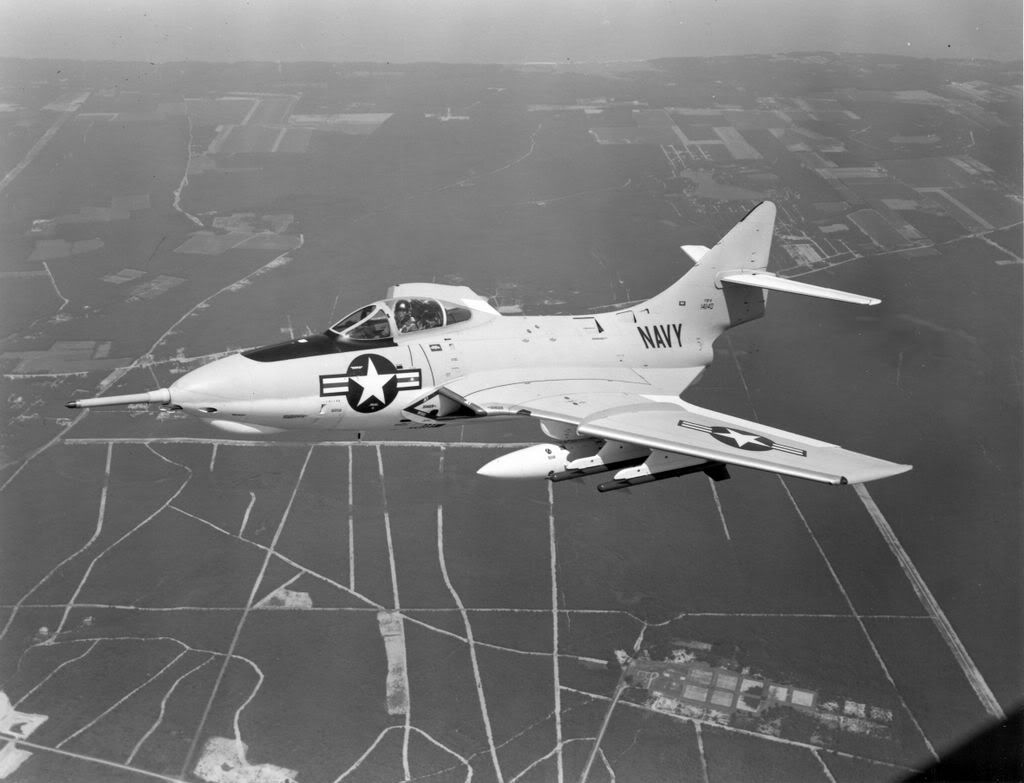

The Blue Angels exchanged their F9F-5 Panthers for F9F-8s in 1954. They flew the Cougars until they transitioned to F11F-1 Tigers in the summer of 1957.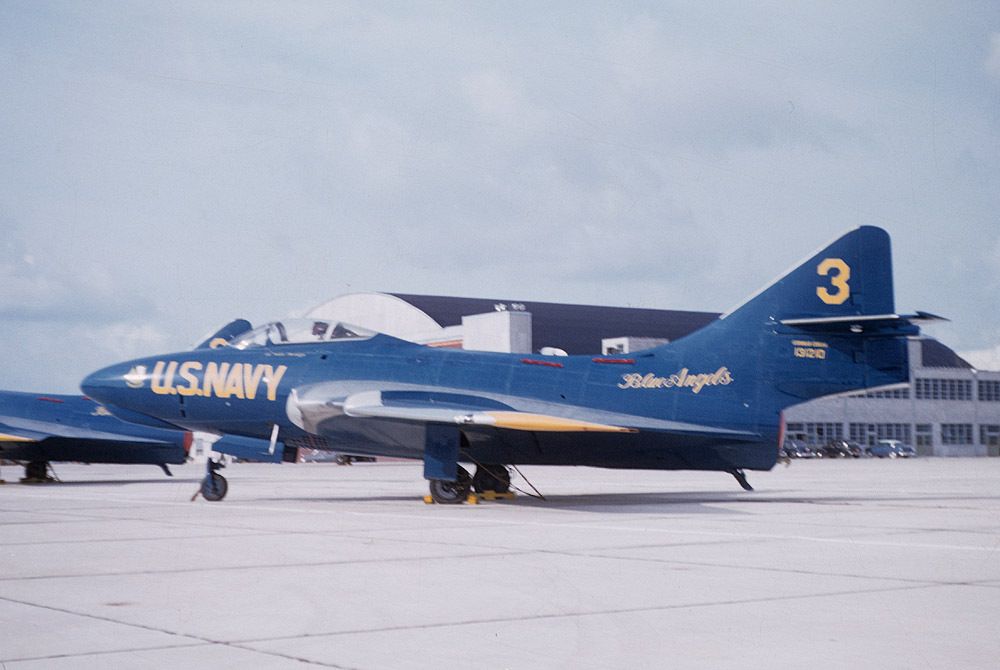
Several F9F-8s were converted into F9F-8B tactical nuclear bombers. They were fitted with the Low-Altitude Bombing System (LABS), additional instruments, as well as with the control and arming equipment needed for the nuclear weapon, or "special store" as it was euphemistically called. However, in service most F9F-8Bs were operated as conventional fighter-bombers and were provided with six underwing weapons pylons.
The F9F-8 and F9F-8B were withdrawn from fleet squadron service in 1958 and 1959 respectively. They served with reserve units until the mid-1960s, when they were retired to the boneyards at Davis-Monthan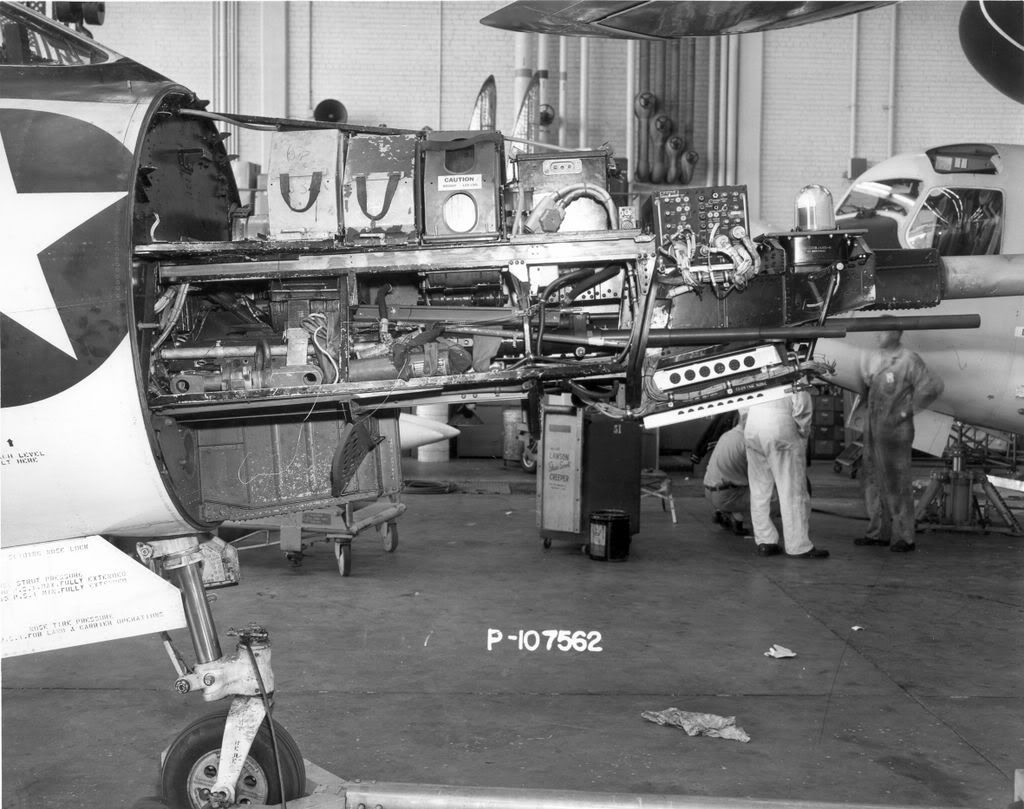
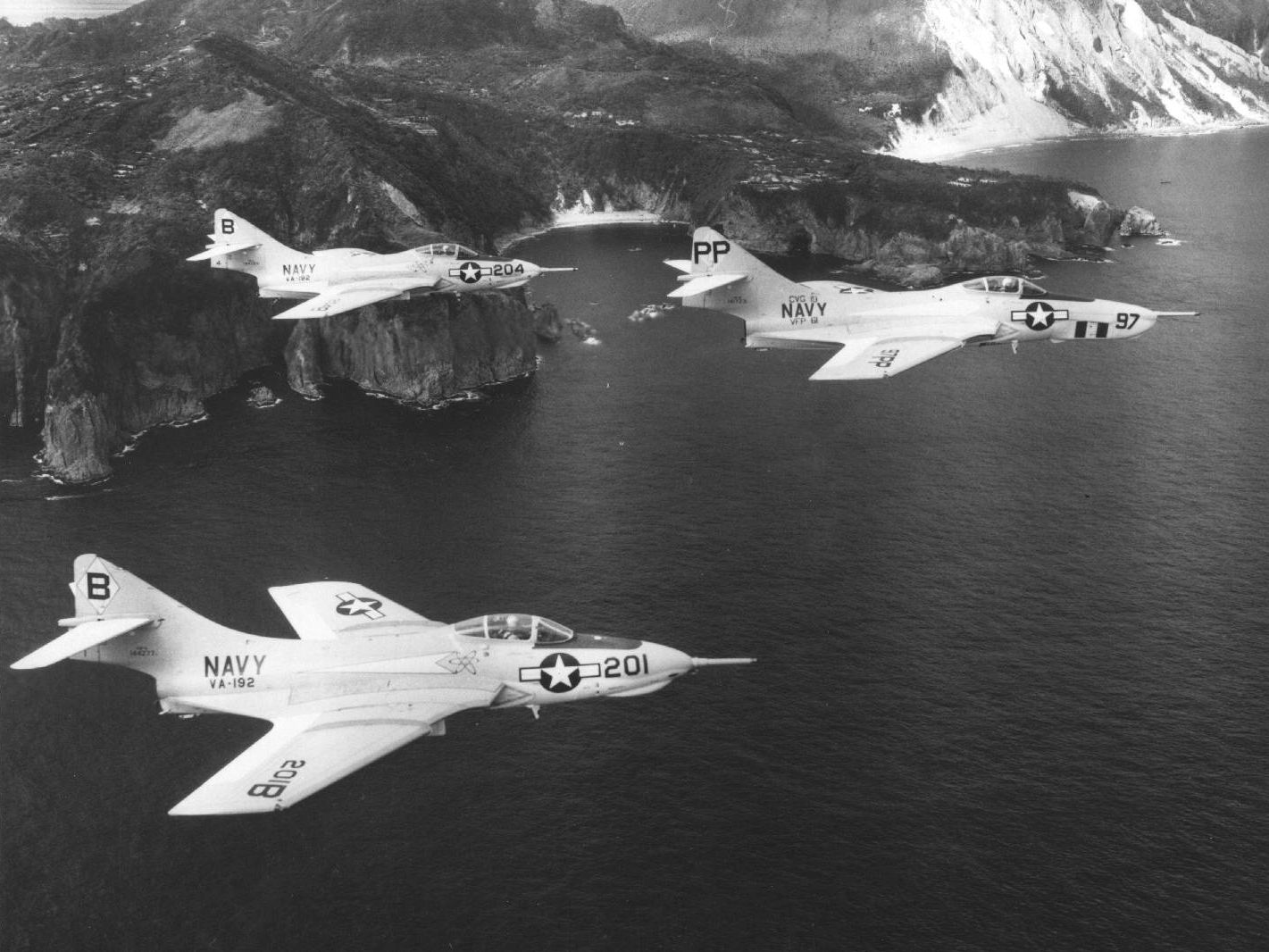
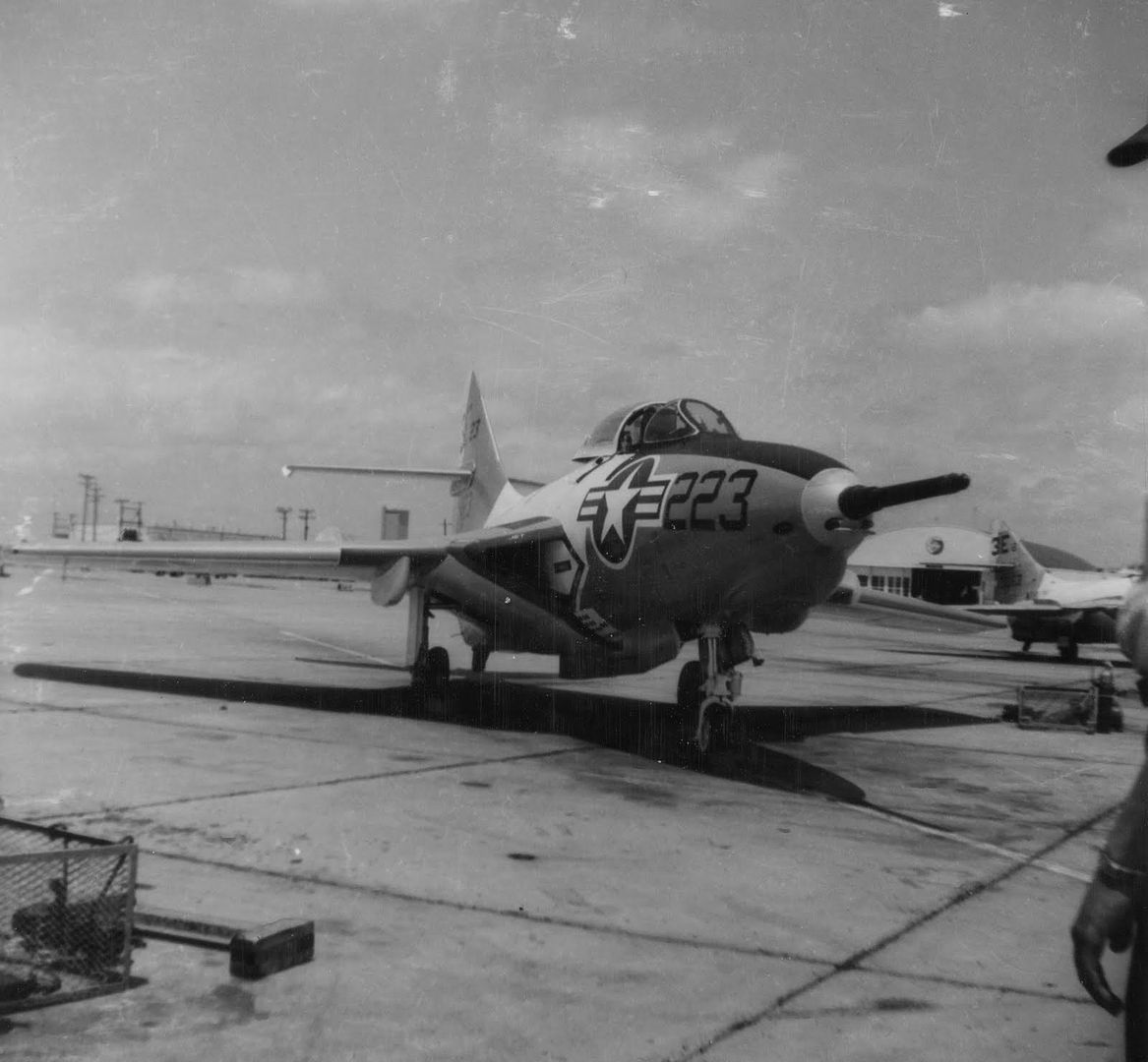
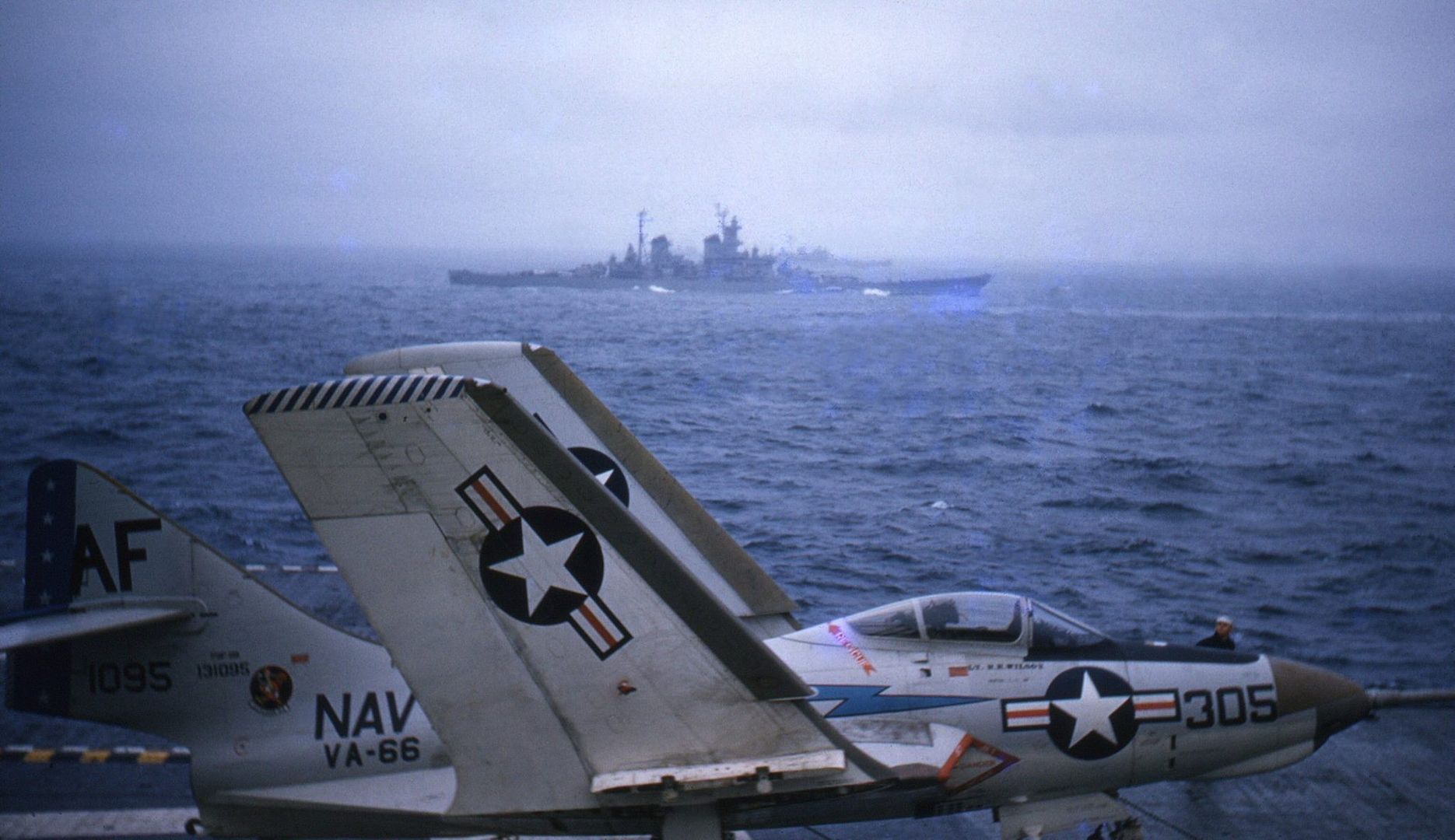
The Cougar was extremely popular with its crews, who admired it for its ease of piloting, its superb carrier handling capabilities, and its robust construction. However, the F9F-8 Cougar was rapidly made obsolete by newer supersonic designs that began to enter service in the late 1950s. The service life of the Cougar was consequently relatively brief. The F9F-8 and F9F-8B were phased out of active Navy squadron fleet service during 1958-59. They continued to serve with Naval and Marine Corps reserve outfits until the mid-1960s. Some obsolescent F9F-8s served for a time as drones and drone directors. Most were retired to the boneyards at Davis-Monthan AFB in Arizona. None were still in service by the time of the Vietnam War.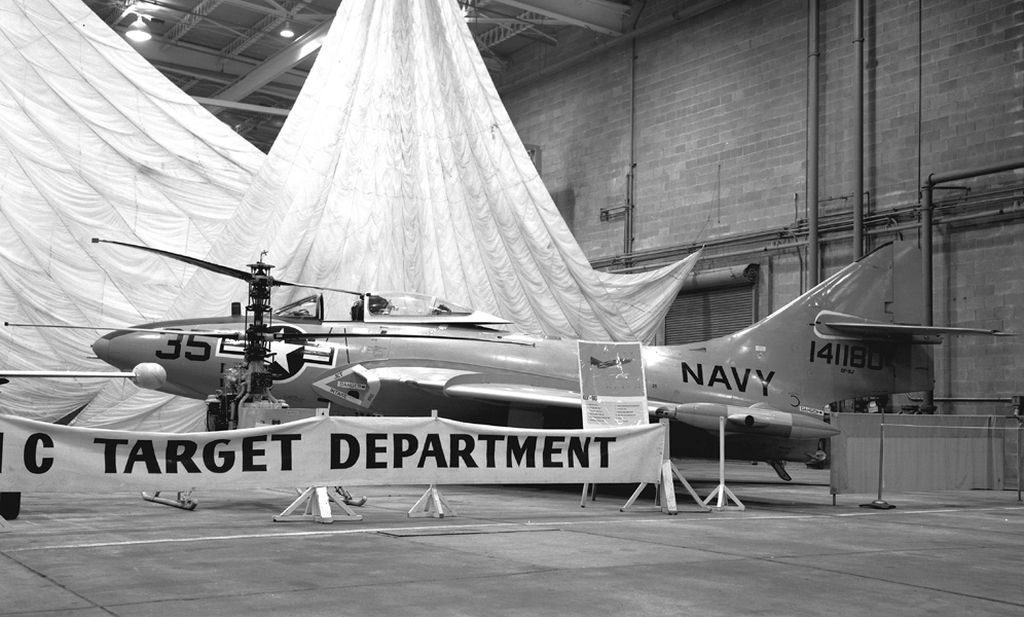
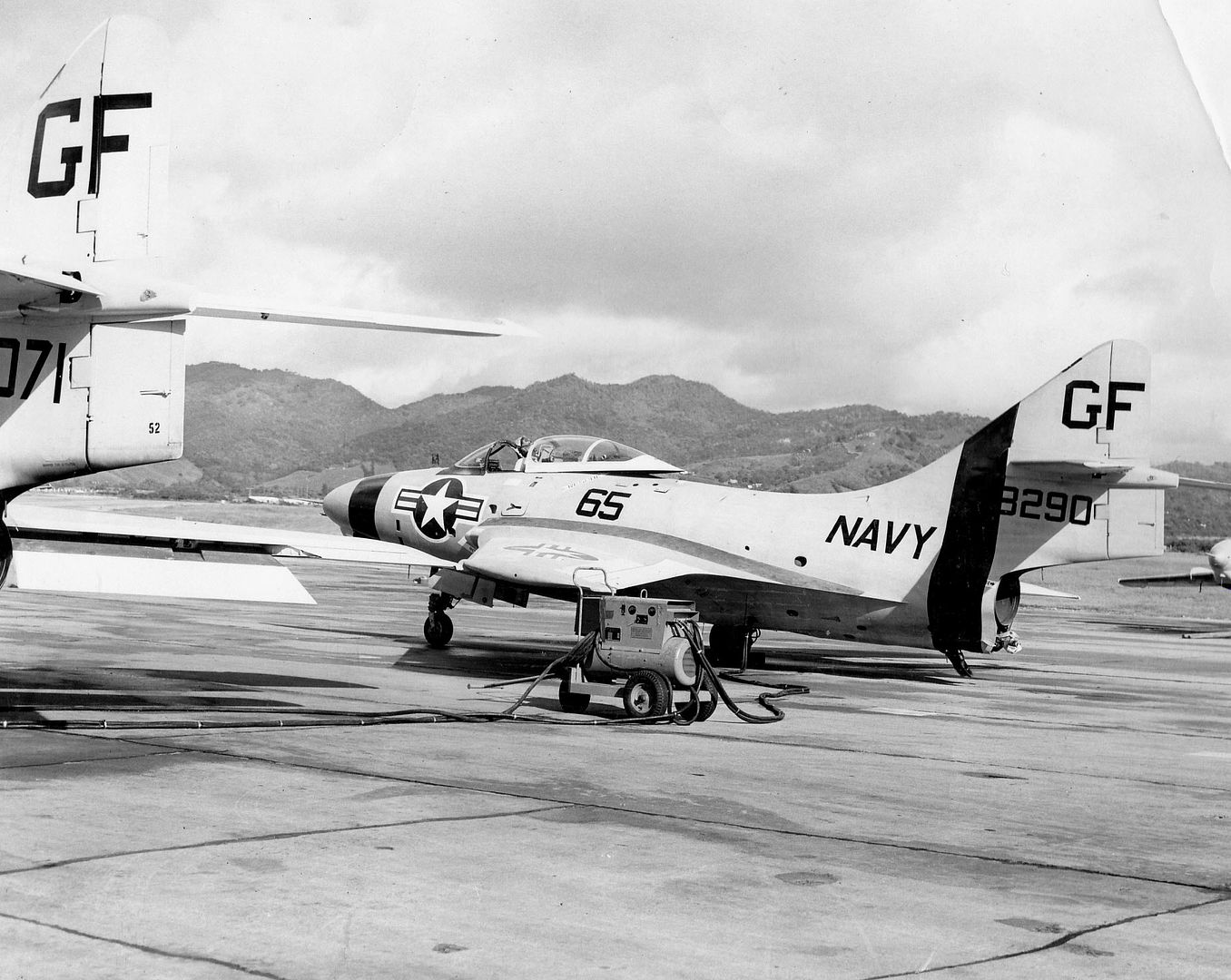

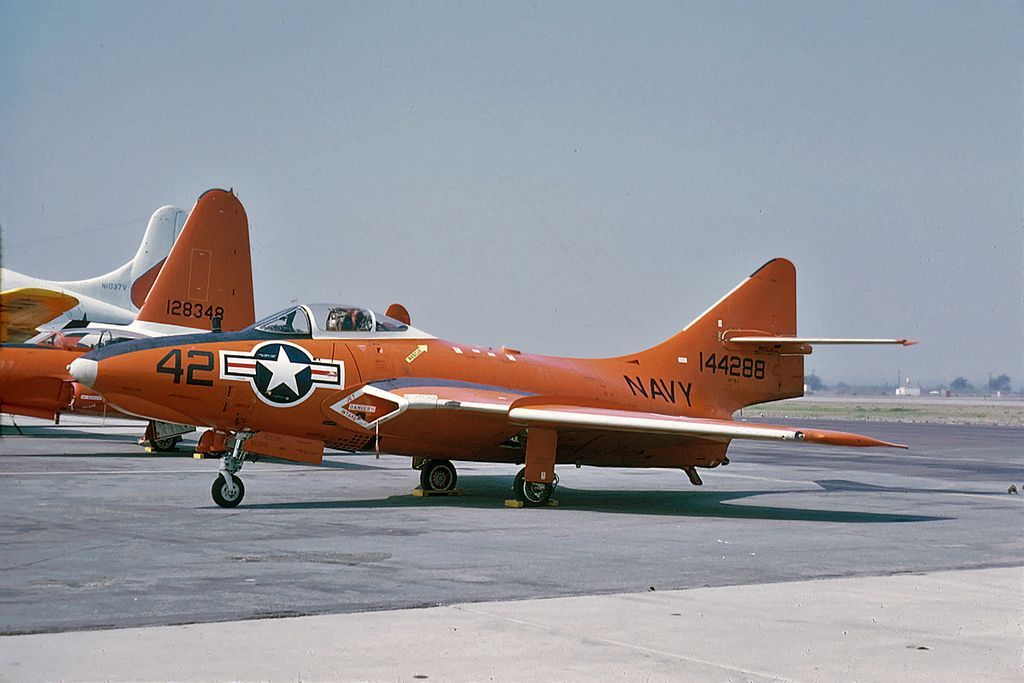
In 1962, the F9F-8 was redesignated F-9J under the new Defense Department Tri-Service designation scheme. The F9F-8B fighter-bomber became AF-9J. Later, when used as advanced trainers, some of these aircraft became TAF-9J.
Serial numbers of F9F-8 Cougar:
131063/131251 Grumman F9F-8 Cougar
134234/134244 Grumman F9F-8 Cougar
138823/138898 Grumman F9F-8 Cougar
141030/141229 Grumman F9F-8 Cougar
141648/141666 Grumman F9F-8 Cougar
144271/144376 Grumman F9F-8 Cougar
Specification of Grumman F9F-8 (F-9J) Cougar:
Engine: One Pratt & Whitney J48-P-8A turbojet rated at 7250 lb.s.t. dry and 8500 lb.s.t. with water injection. Performance: Maximum speed 642 mph at sea level, 647 mph at 2000 feet, 593 mph at 35,000 feet. Cruising speed 516 mph. Landing speed 132 mph. Initial climb rate 5750 feet per minute. An altitude of 20,000 feet could be attained in 4 minutes. Service ceiling 42,000 feet. Combat ceiling 42,500 feet. 1050 miles normal range. 1209 miles combat range. 1312 miles maximum range. Internal fuel was 1063 US gallons. With two 150-gallon drop tanks, total fuel load was 1363 US gallons. Dimensions: wingspan 34 feet 6 inches, length 42 feet 2 inches, height 12 feet 3 inches, wing area 337 square feet. Weights: 11,866 pounds empty, 20,098 pounds loaded, 24,763 pounds maximum takeoff. Armament: The armament consisted of four 20-mm cannon in the nose plus two underwing racks for 1000-pound bombs or 150-US gallon drop tanks. Two AIM-9 Sidewinder air-to-air missiles could be carried underneath each wing.
-
8 years agoSat Feb 13 2016, 03:38pm
 Main AdminThe F9F-8P was an unarmed photographic reconnaissance version of the F9F-8 Cougar fighter. Whereas the shape of the nose of the reconnaissance F9F-6P was almost identical to that of the F9F-6 fighter, the F9F-8P had a completely different nose from the F9F-8. The nose of the F9F-8P was substantially larger and longer than that of the F9F-8 and had a distinct downward droop. It had flat sides for the camera ports, and housed forward, vertical, and oblique cameras. The nose also incorporated provisions for the fitting of a fixed inflight refuelling probe. No armament was carried.
Main AdminThe F9F-8P was an unarmed photographic reconnaissance version of the F9F-8 Cougar fighter. Whereas the shape of the nose of the reconnaissance F9F-6P was almost identical to that of the F9F-6 fighter, the F9F-8P had a completely different nose from the F9F-8. The nose of the F9F-8P was substantially larger and longer than that of the F9F-8 and had a distinct downward droop. It had flat sides for the camera ports, and housed forward, vertical, and oblique cameras. The nose also incorporated provisions for the fitting of a fixed inflight refuelling probe. No armament was carried.
The first F9F-8P flew on February 18, 1955,BuNo 131063 the first too be converted to F9F-8P configuration.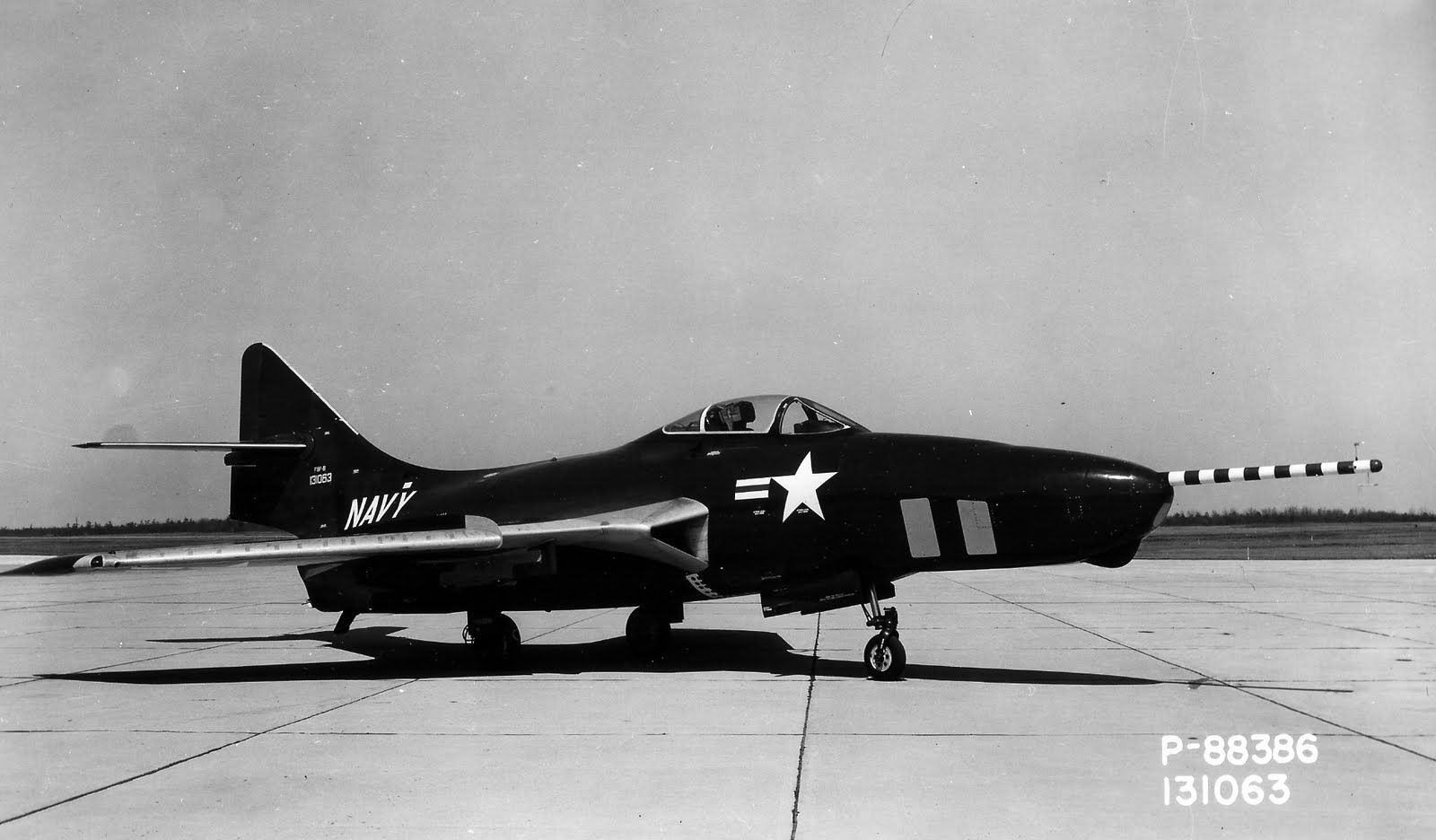
Including the prototype, a total of 110 F9F-8Ps were delivered between August 1955 and July 1957. The F9F-8P was rapidly made obsolete by such supersonic reconnaissance aircraft as the Vought F8U-1P Crusader, and was destined to have a short service life with carrier-based reconnaissance squadrons. The last F9F-8Ps were phased out of active fleet squadron service in February 1960, but some were destined to remain with reserve units until the mid-1960s.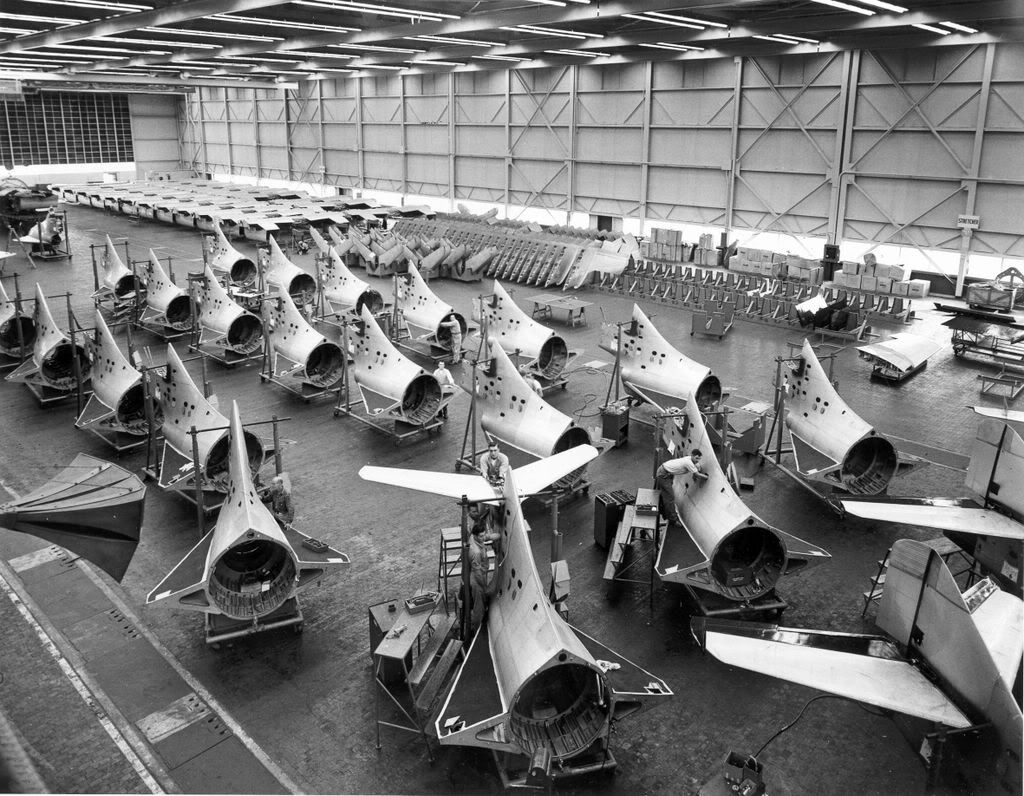
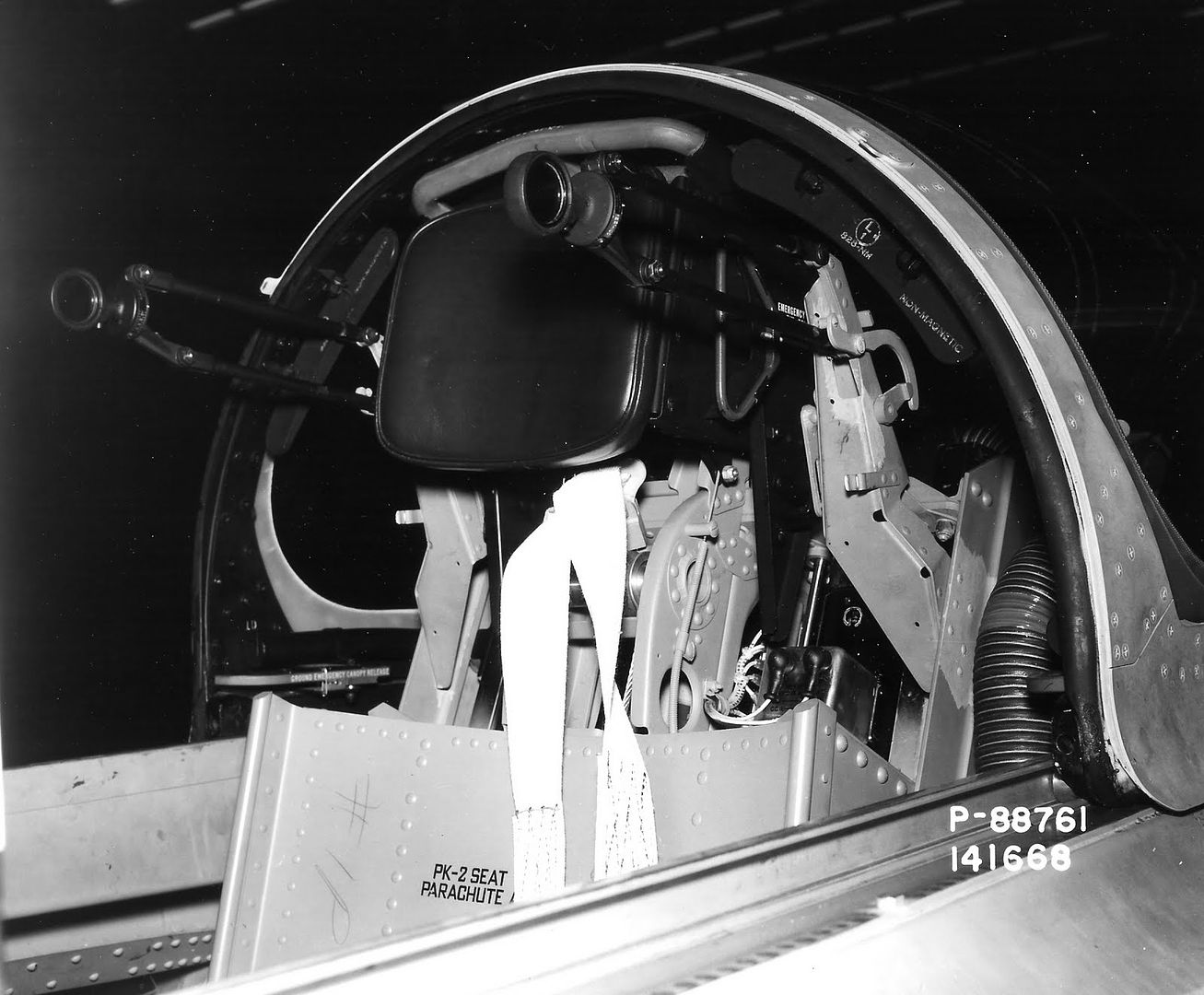
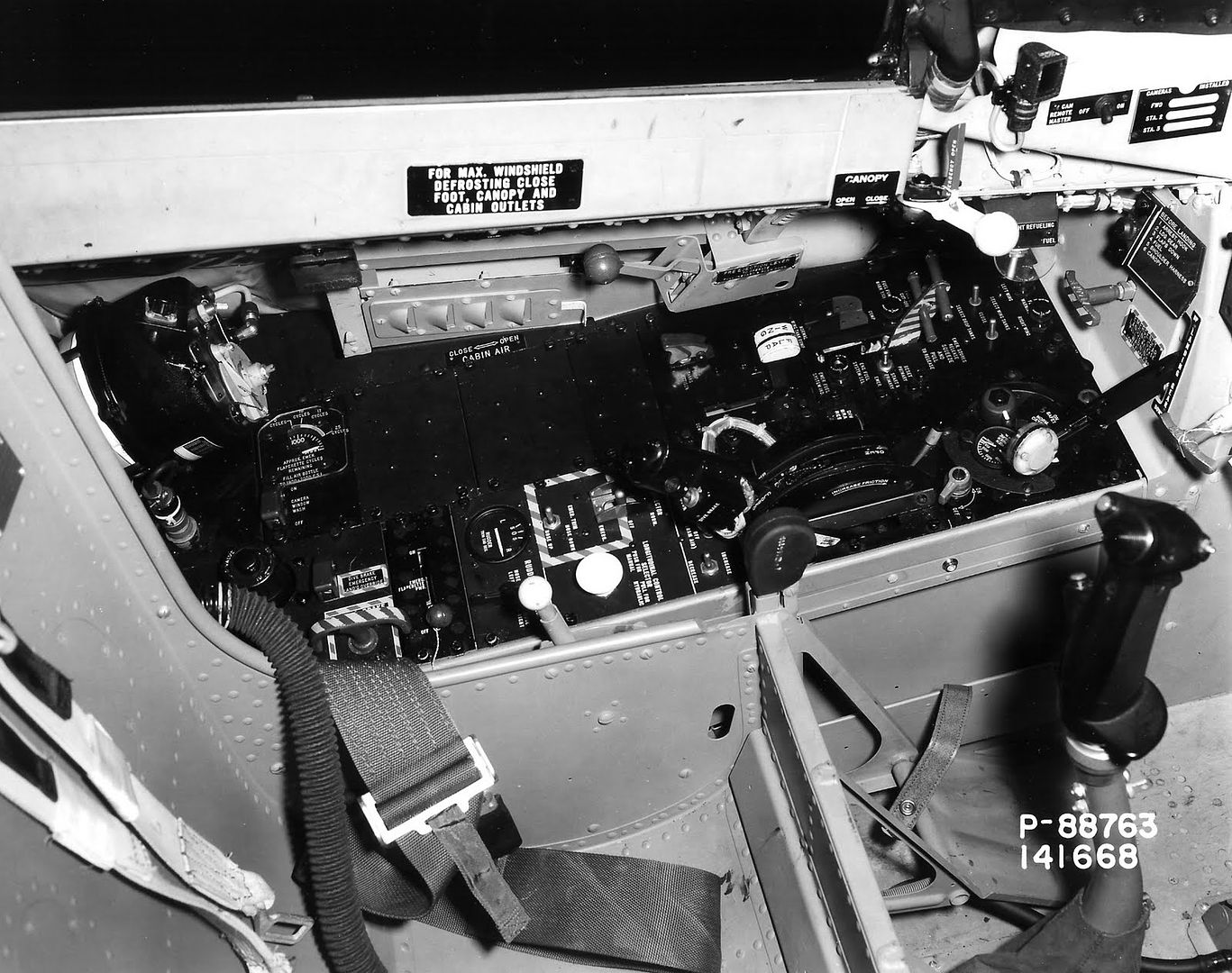
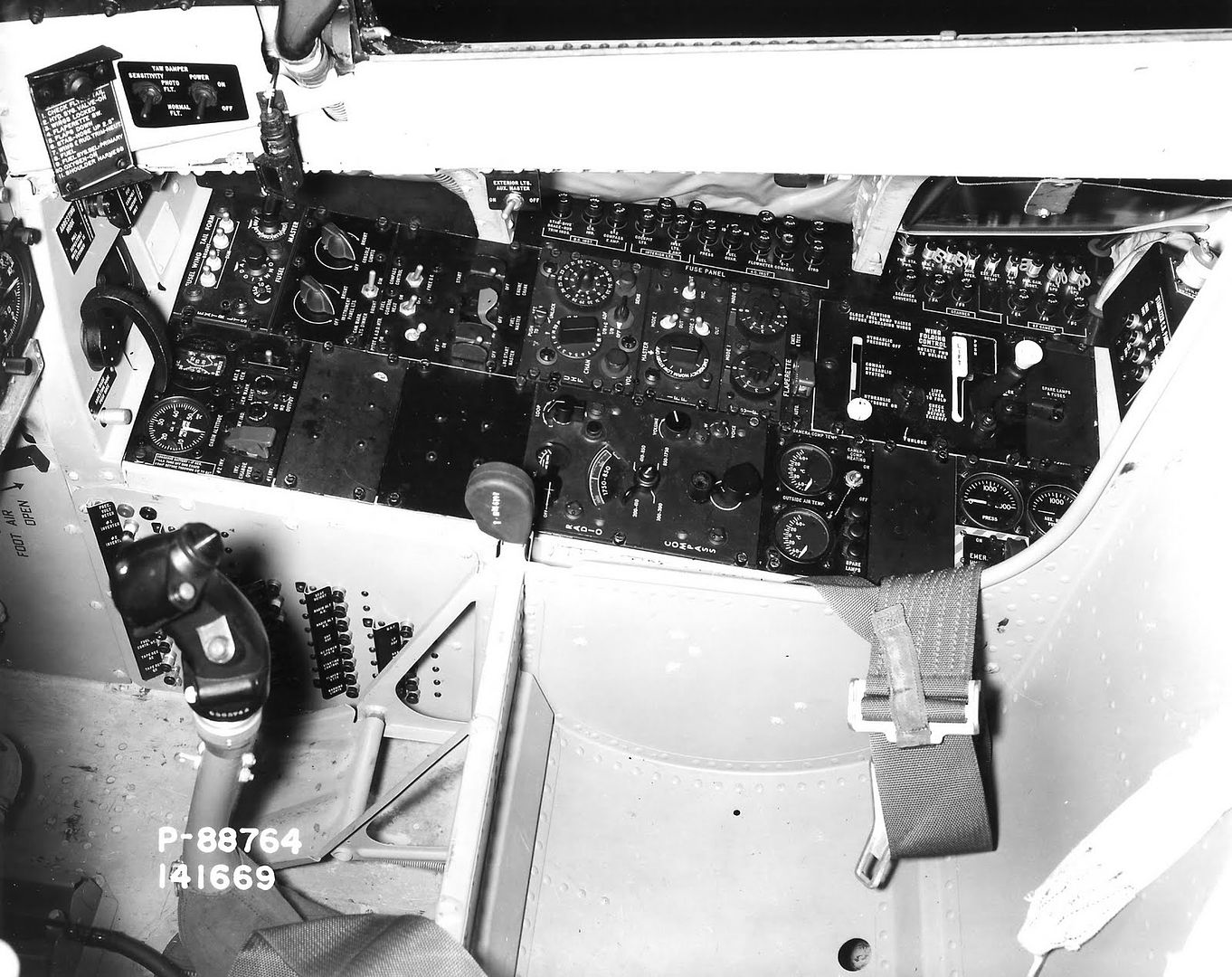

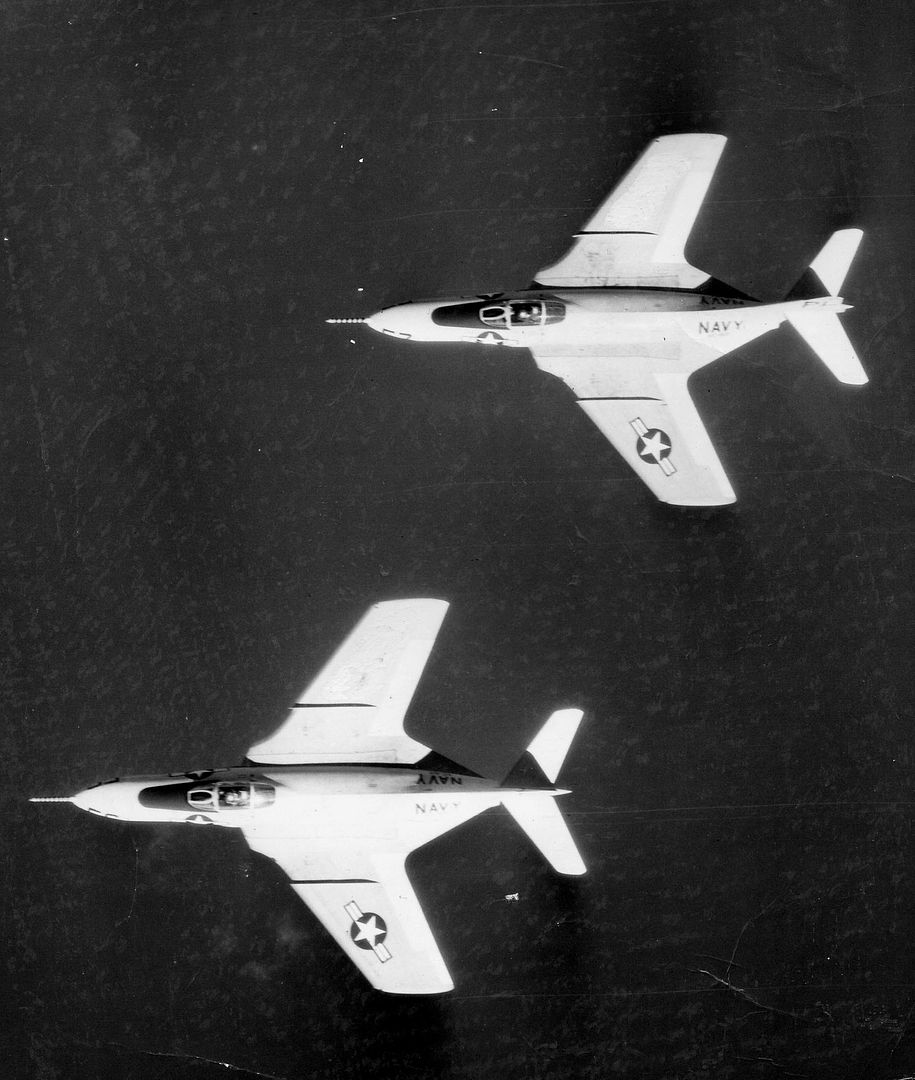
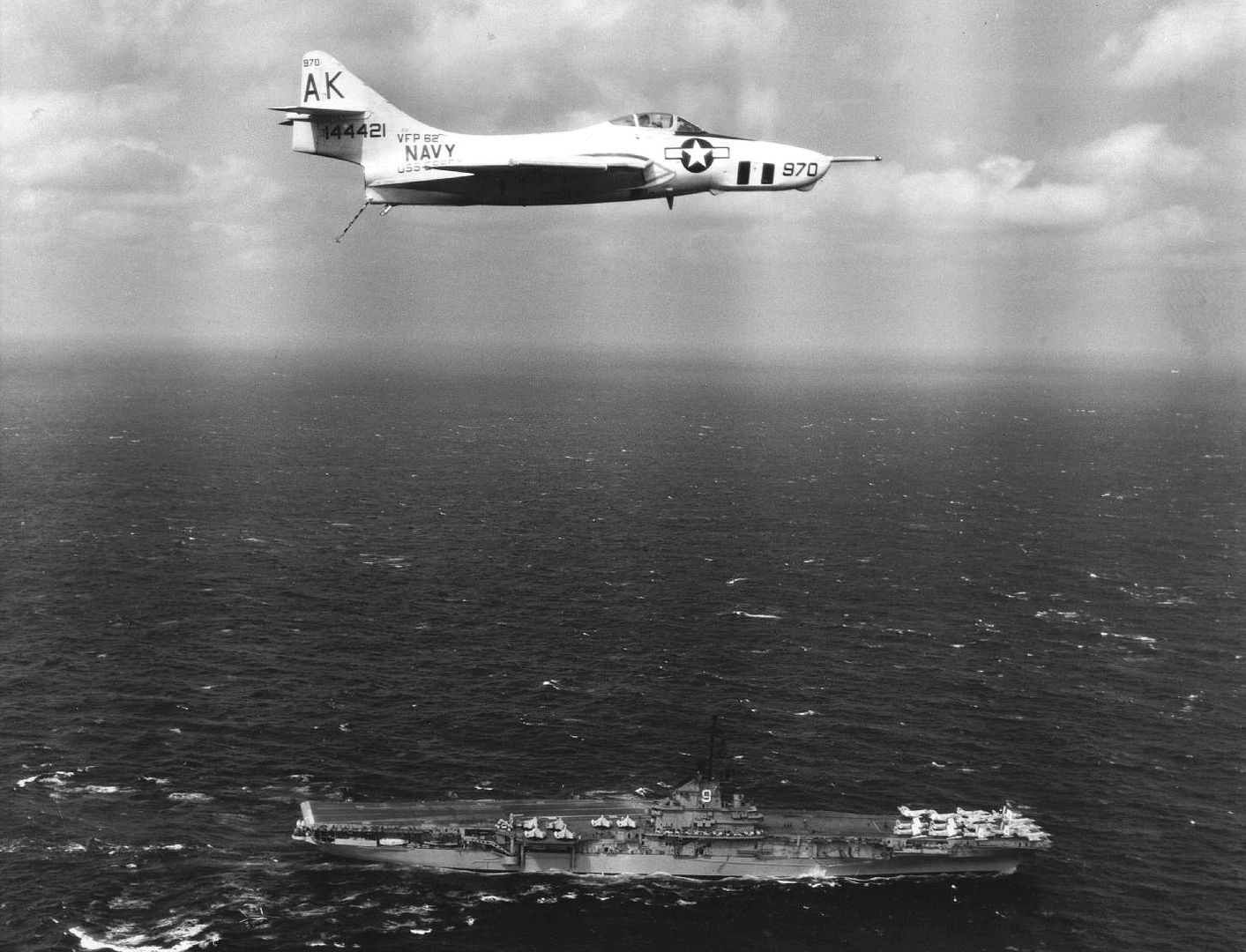
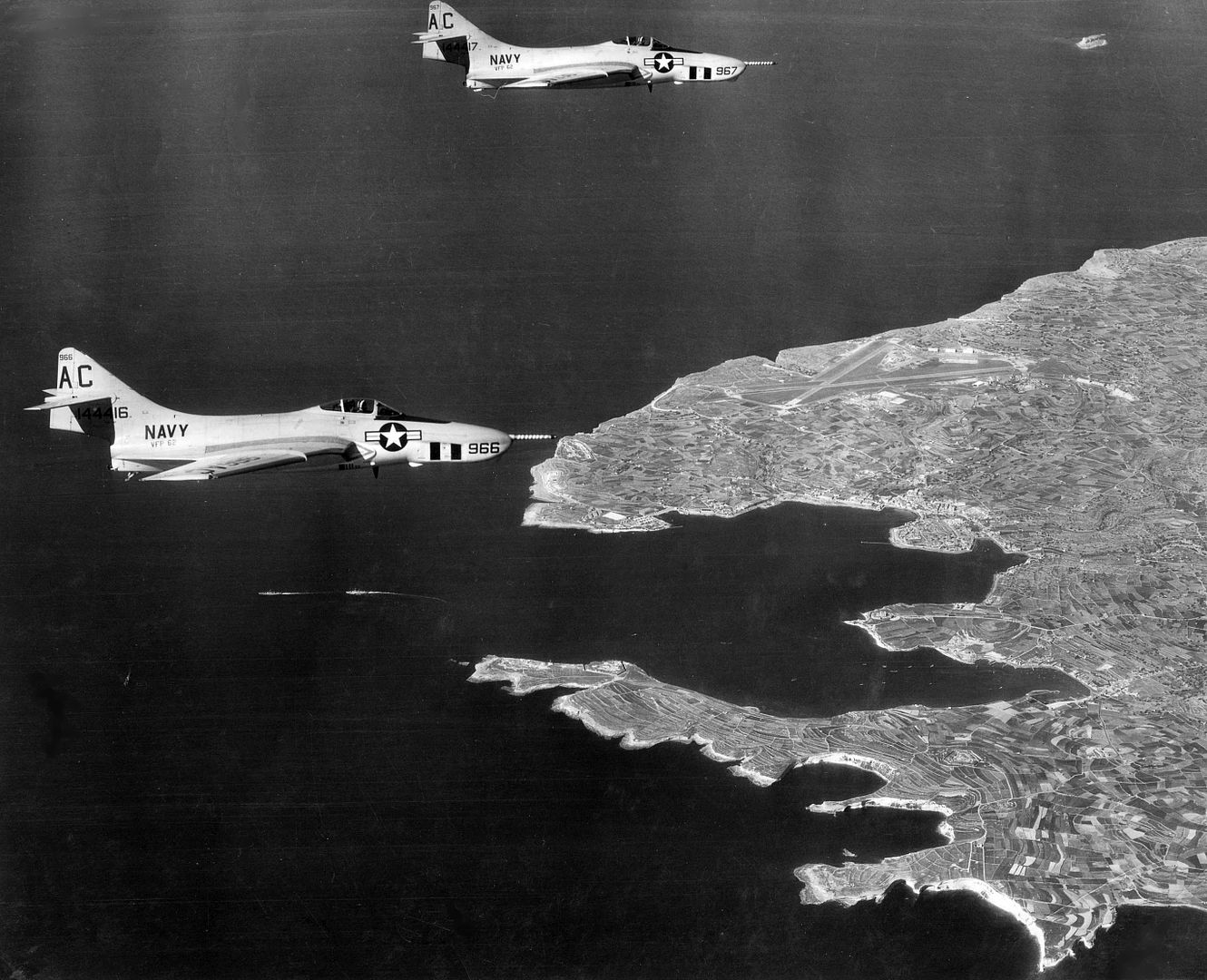
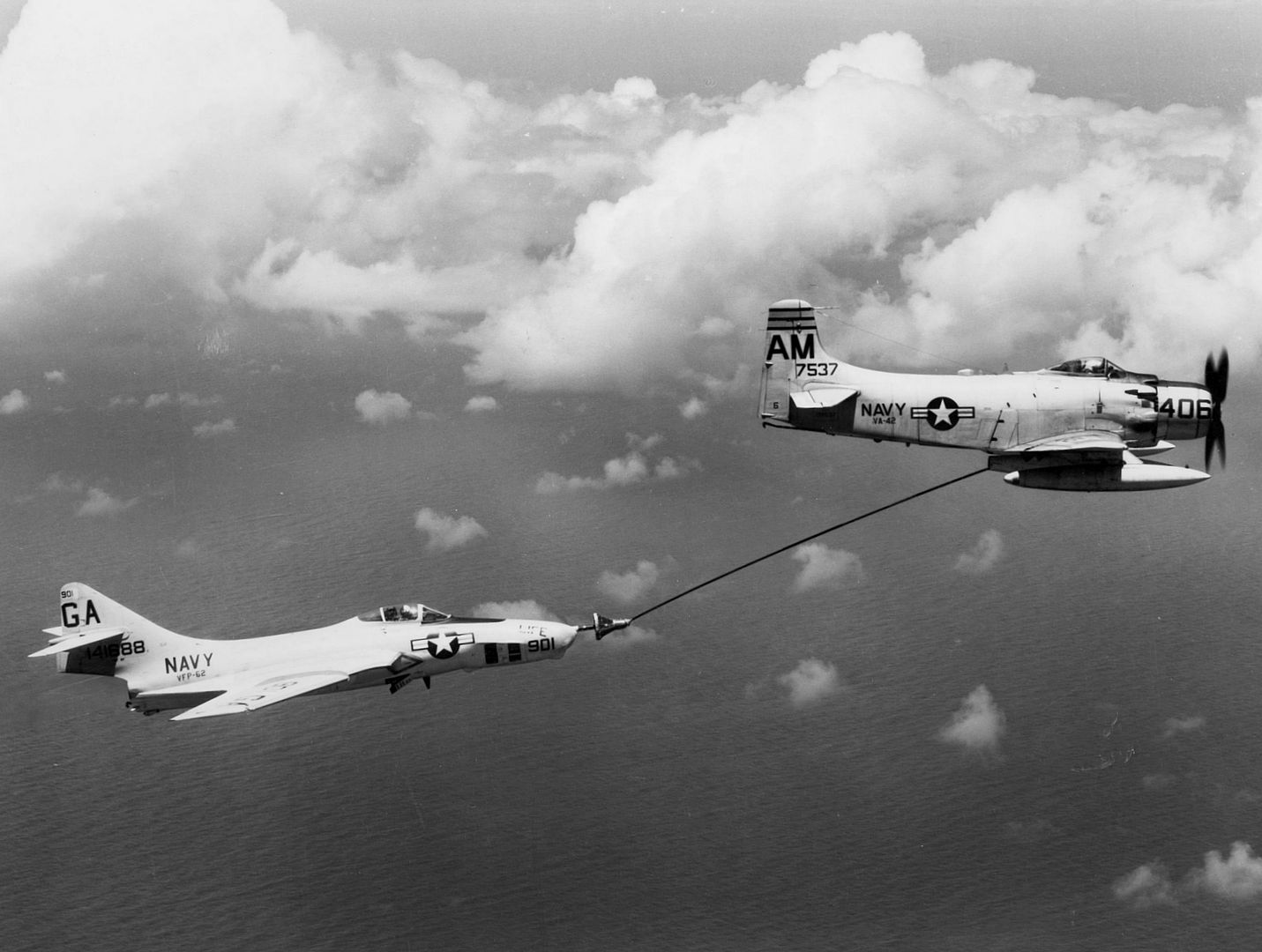
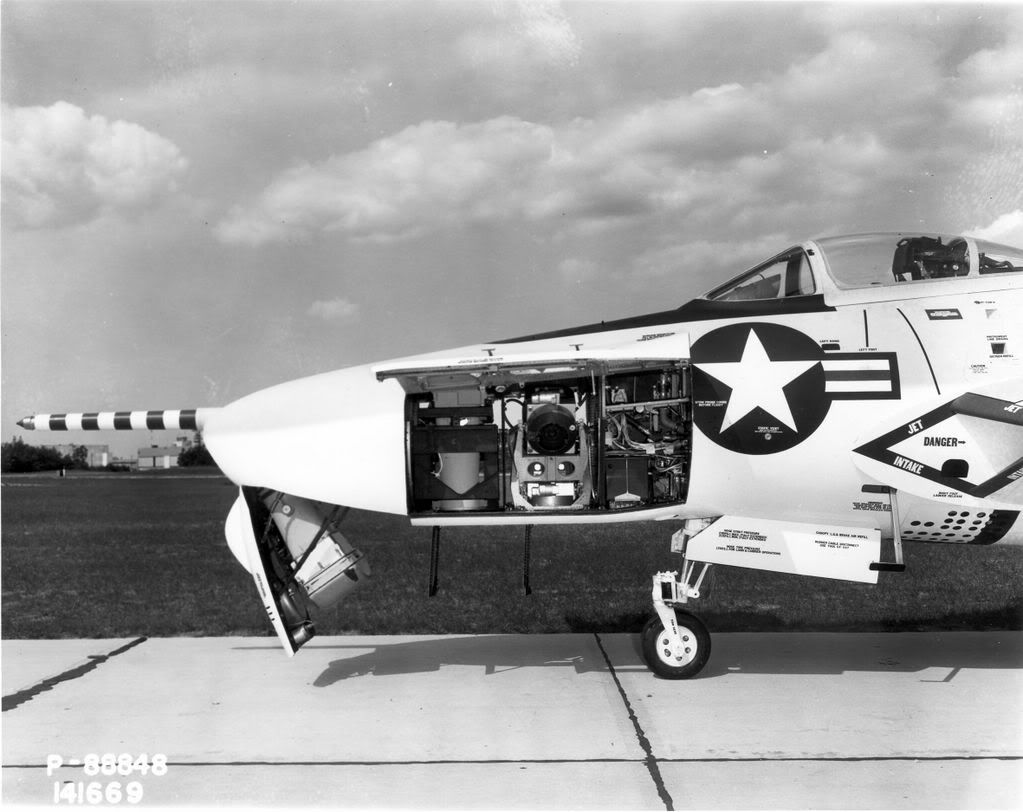

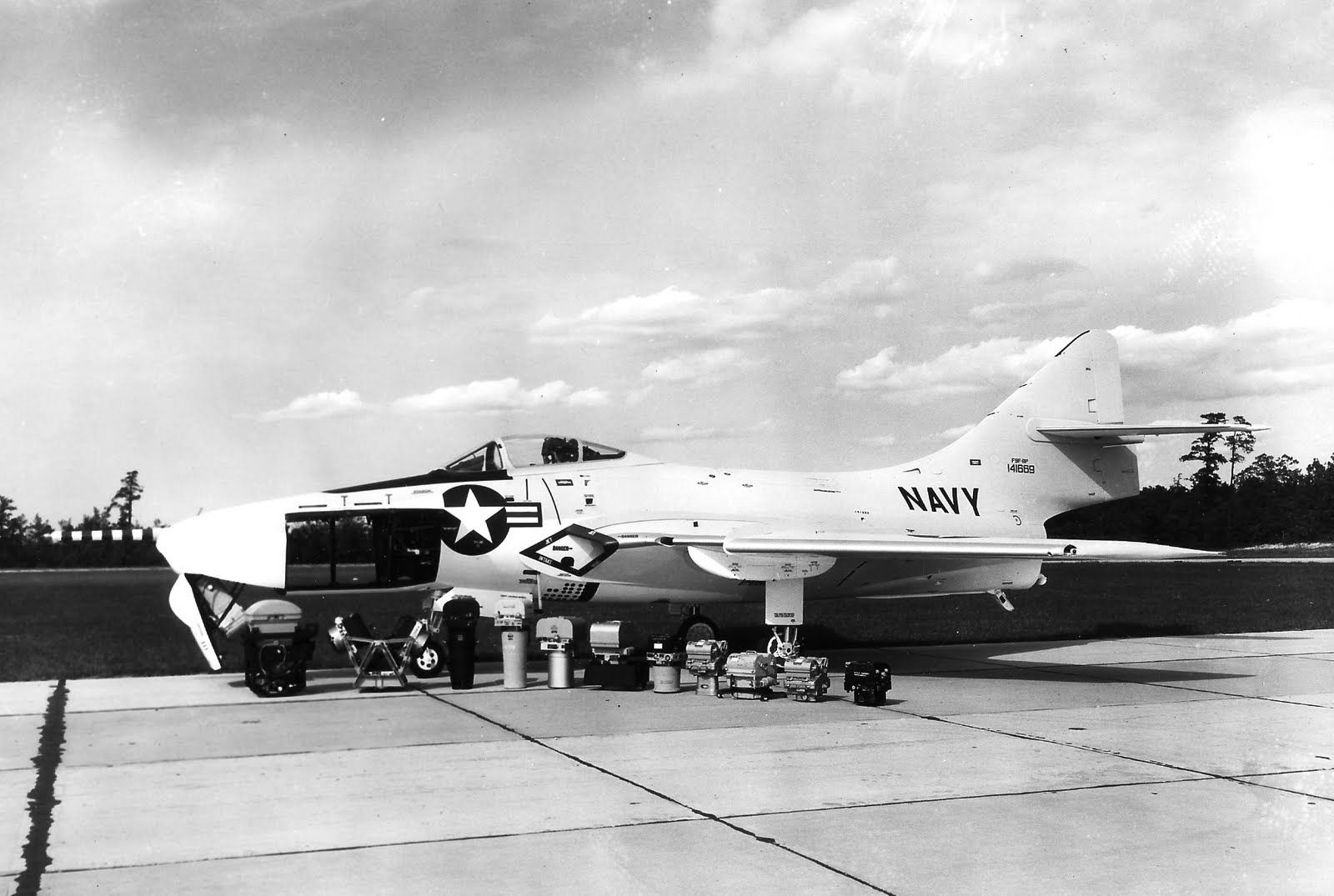
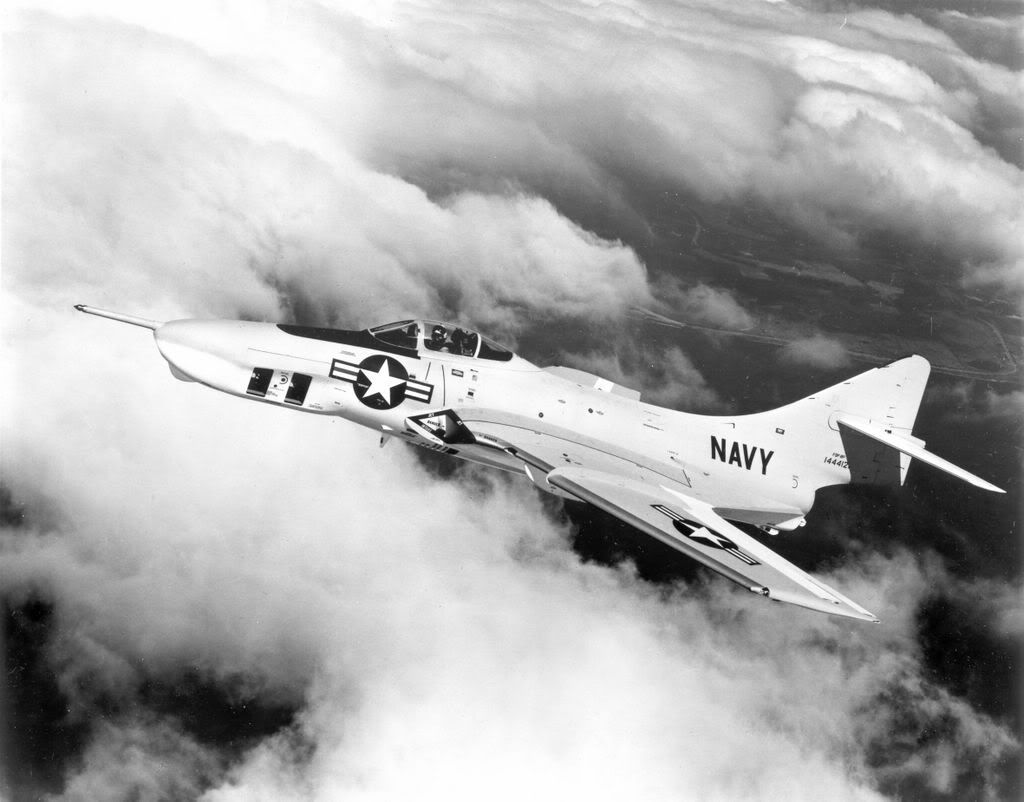
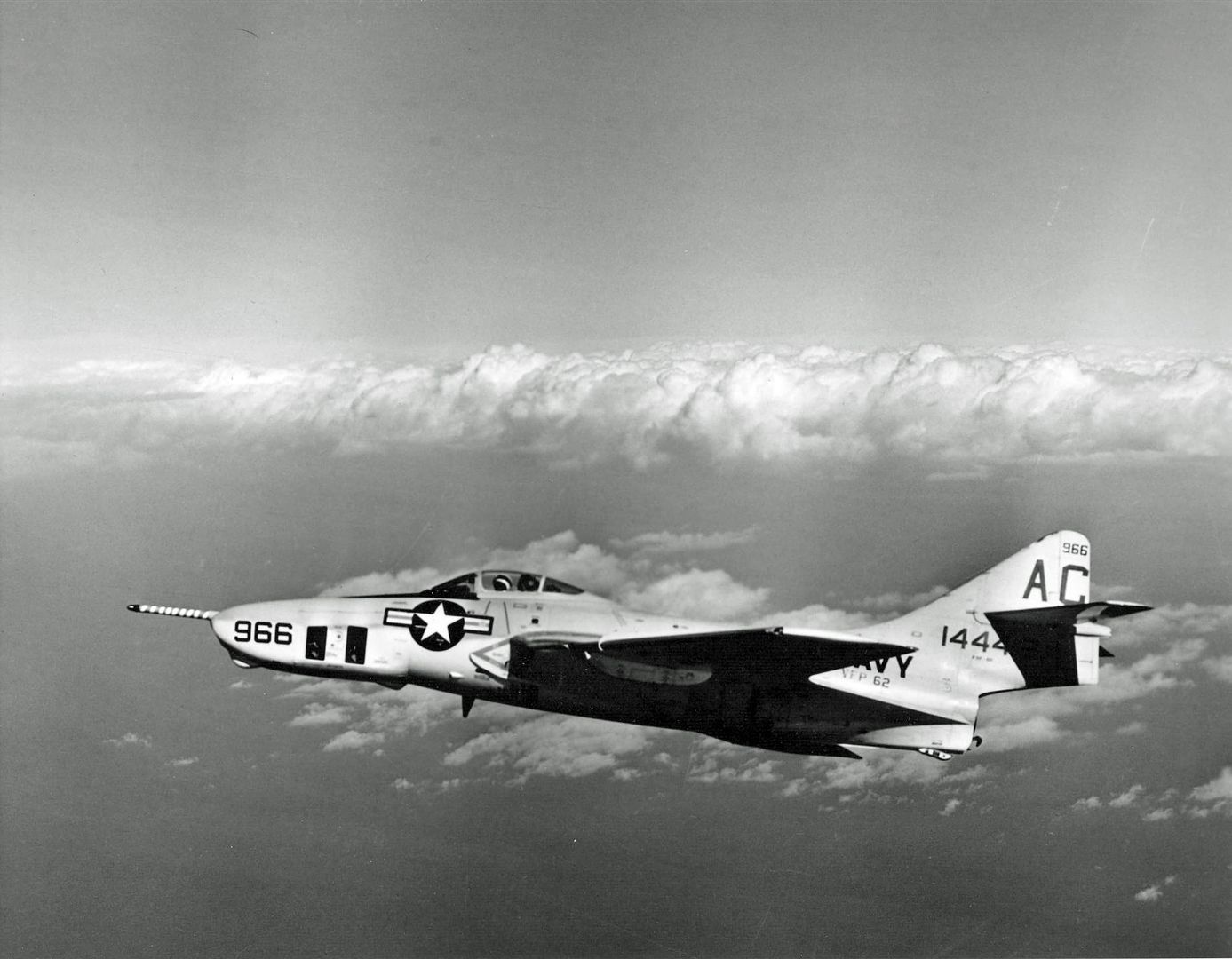
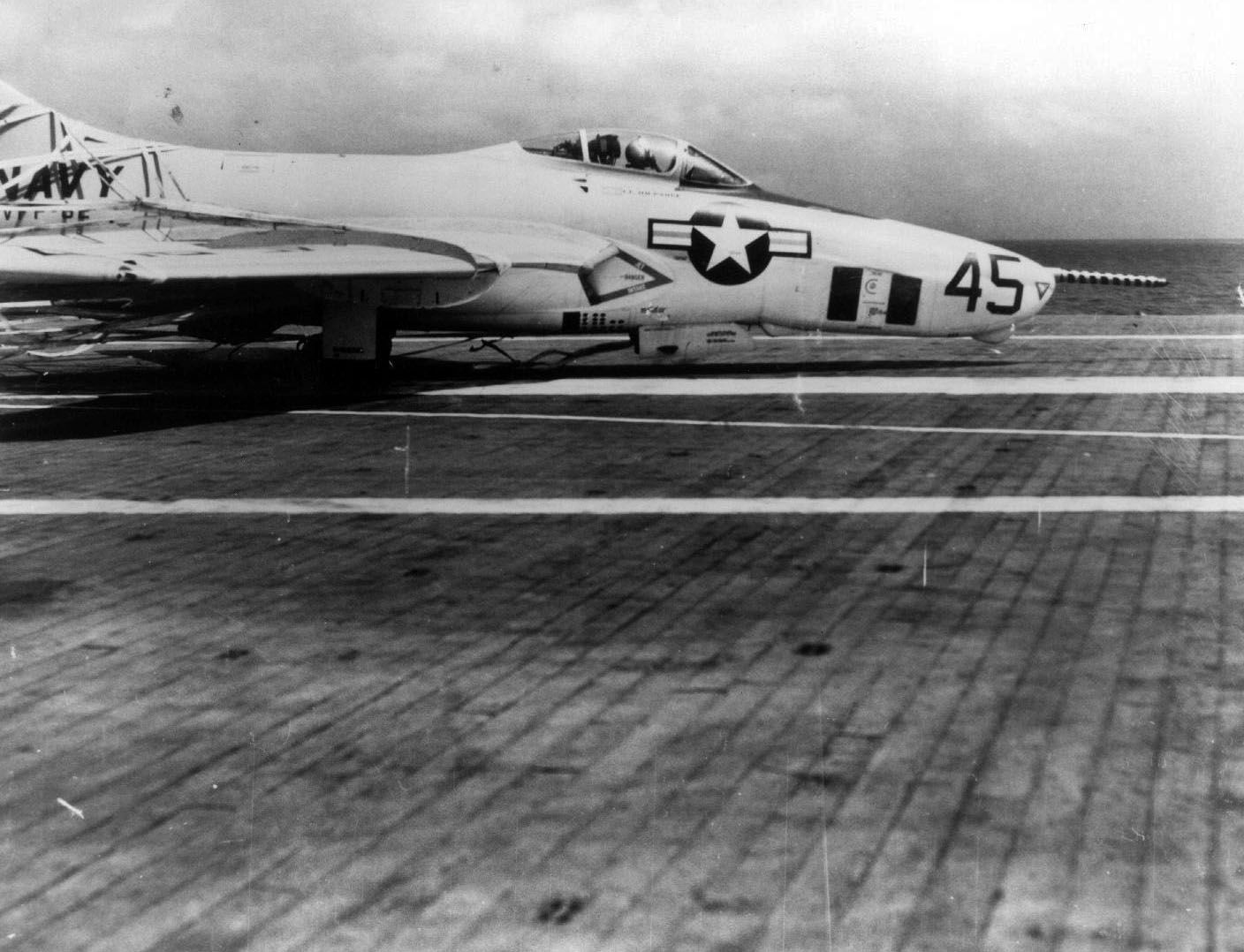


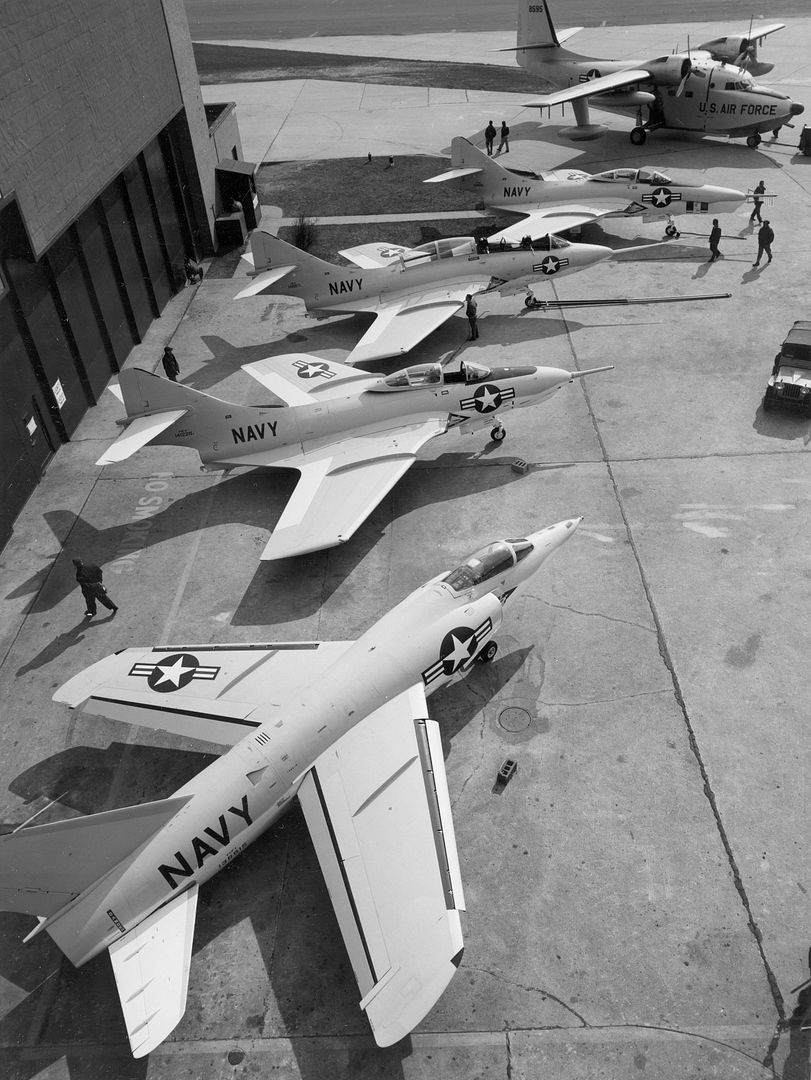
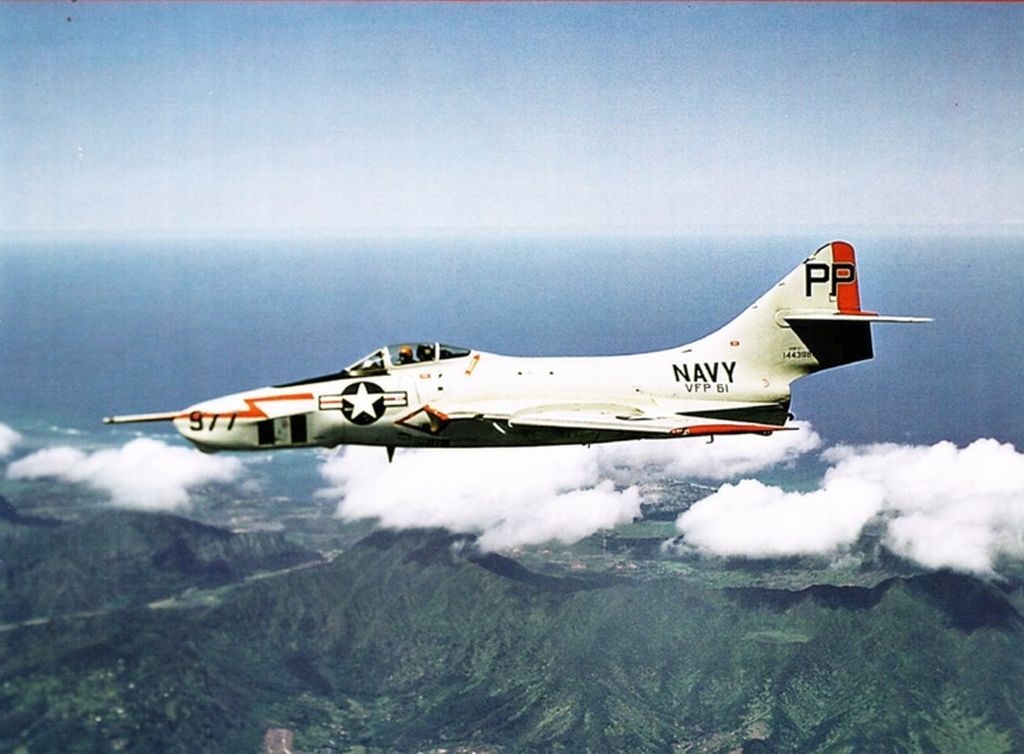
In 1962, the F9F-8P was redesignated RF-9J under the new Defense Department Tri-Service designation scheme.
Serials of Grumman F9F-8P Cougar:
141668/141727 Grumman F9F-8P Cougar
144377/144426 Grumman F9F-8P Cougar
Specification of Grumman F9F-8P Cougar:
Engine: One Pratt & Whitney J48-P-8A turbojet rated at 7250 lb.s.t. dry and 8500 lb.s.t. with water injection. Performance: Maximum speed 637 mph at 5000 feet. Cruising speed 508 mph. Initial climb rate 4700 feet per minute. Service ceiling 41,500 feet. 960 miles normal range. 1045 miles maximum range. Internal fuel was 1063 US gallons. With two 150-gallon drop tanks, total fuel load was 1363 US gallons. Dimensions: wingspan 34 feet 6 inches, length 44 feet 9 inches, height 12 feet 3 inches, wing area 337 square feet. Weights: 12,246 pounds empty, 18,421 pounds loaded, 22,697 pounds maximum takeoff. Armament: none
-
8 years agoSat Feb 13 2016, 03:32pm
 Main AdminThe F9F-8T was a two-seat trainer version of the F9F-8. Work on a two-seat trainer version of the Cougar began in November of 1953 under the company designation of Design 105. This was a company-initiated project intended to meet anticipated future Navy requirements for a combat-capable two-seat trainer to serve in fleet squadrons alongside single-seat Cougars. It was anticipated by Grumman that the two-seat Cougar could also serve as a carrier-landing trainer and as a trainer to familiarize crews with inflight refueling. It was to retain the same armament as the single-seat version.
Main AdminThe F9F-8T was a two-seat trainer version of the F9F-8. Work on a two-seat trainer version of the Cougar began in November of 1953 under the company designation of Design 105. This was a company-initiated project intended to meet anticipated future Navy requirements for a combat-capable two-seat trainer to serve in fleet squadrons alongside single-seat Cougars. It was anticipated by Grumman that the two-seat Cougar could also serve as a carrier-landing trainer and as a trainer to familiarize crews with inflight refueling. It was to retain the same armament as the single-seat version.
Initially, the Navy envisaged no requirement for the Grumman Design 105, believing that the Lockheed T2V-1 SeaStar would fill all its requirements for a carrier-capable two-seat trainer. Nevertheless, Grumman was authorized to complete an F9F-8 airframe (BuNo 141667) as a two seater under the designation YF9F-8T. To provide space for the second cockpit, the forward fuselage was extended by 34 inches. The two crew members (student in front, instructor in rear) sat in tandem under a large rearward-sliding canopy. An auxiliary windshield was provided internally ahead of the instructor's seat, which enabled the aircraft to be flown with a partially-open canopy. To save weight, two of the four cannon were removed and the ammunition capacity was reduced. The first flight of the YF9F-8T took place on April 4, 1956.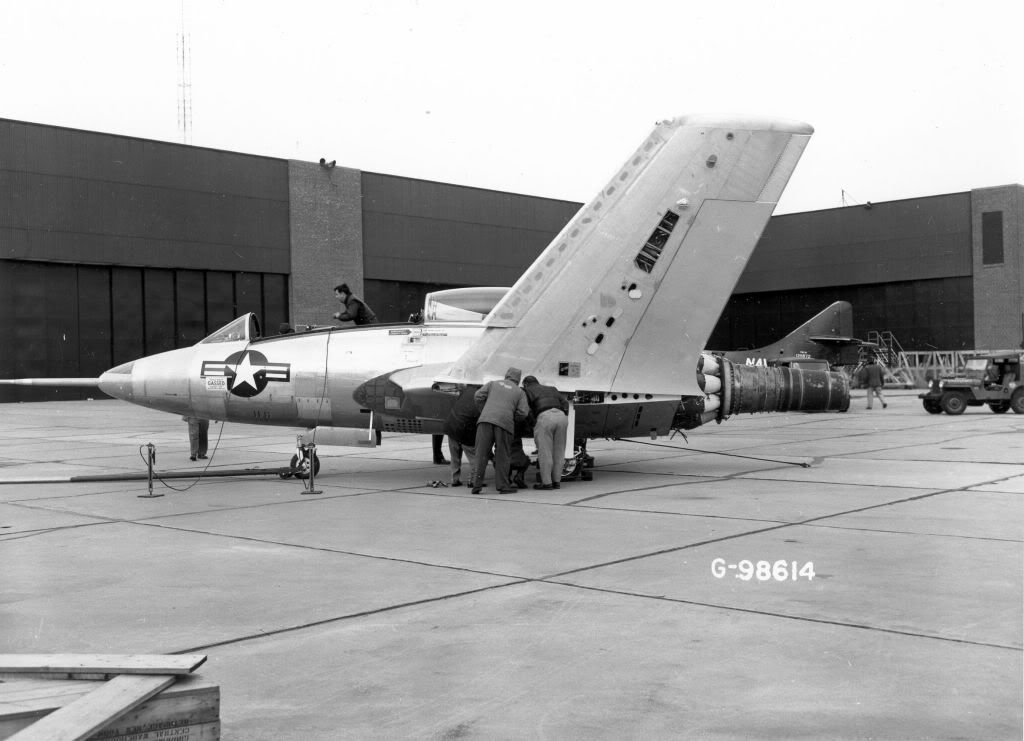
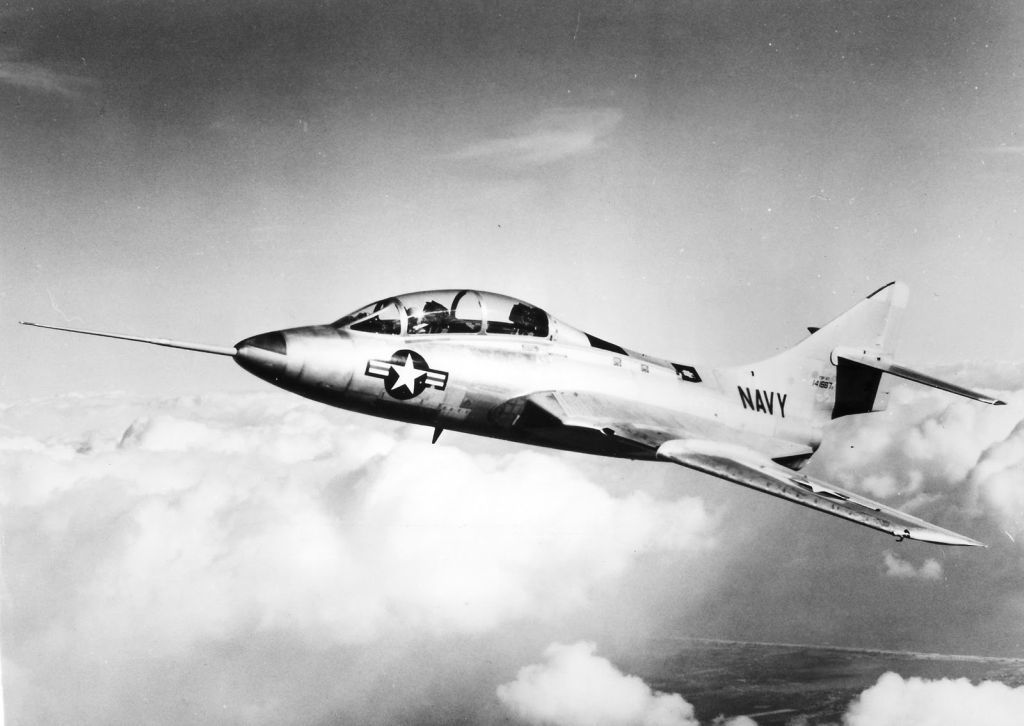
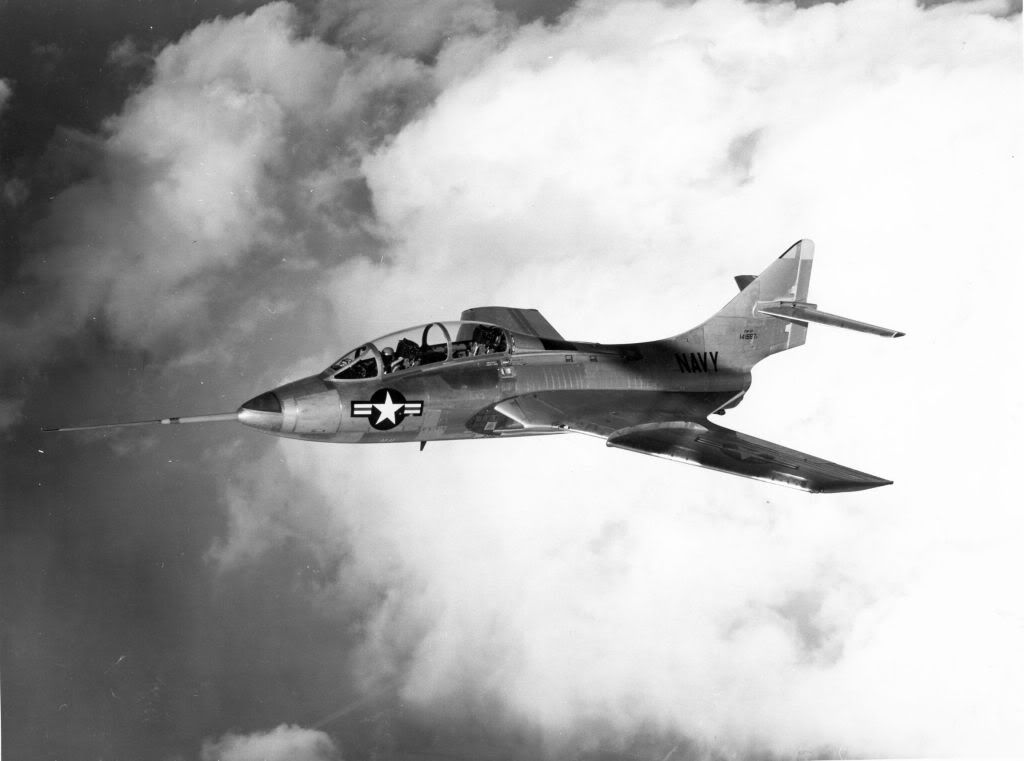
In the meantime, the T2V-1 Sea Star had run into lots of problems with its boundary-layer control system, a feature which was in the mid-1950s still a relatively new innovation. In addition, the T2V-1 was unarmed and could not be used as a weapons delivery trainer. This led the Navy to take a fresh look at the two-seat Cougar, and they eventually acquired 399 production F9F-8Ts between July 1956 and February 1960. The production F9F-8Ts featured some structural strengthening, and most were fitted with a inflight refuelling probe in the nose, which increased overall length from 44 feet 4 1/4 inches to 48 feet 8 3/4 inches. Late production F9F-8Ts were equipped at the factory with the capability of carrying two Sidewinder missiles under each wing, but this capability was seldom retained in service.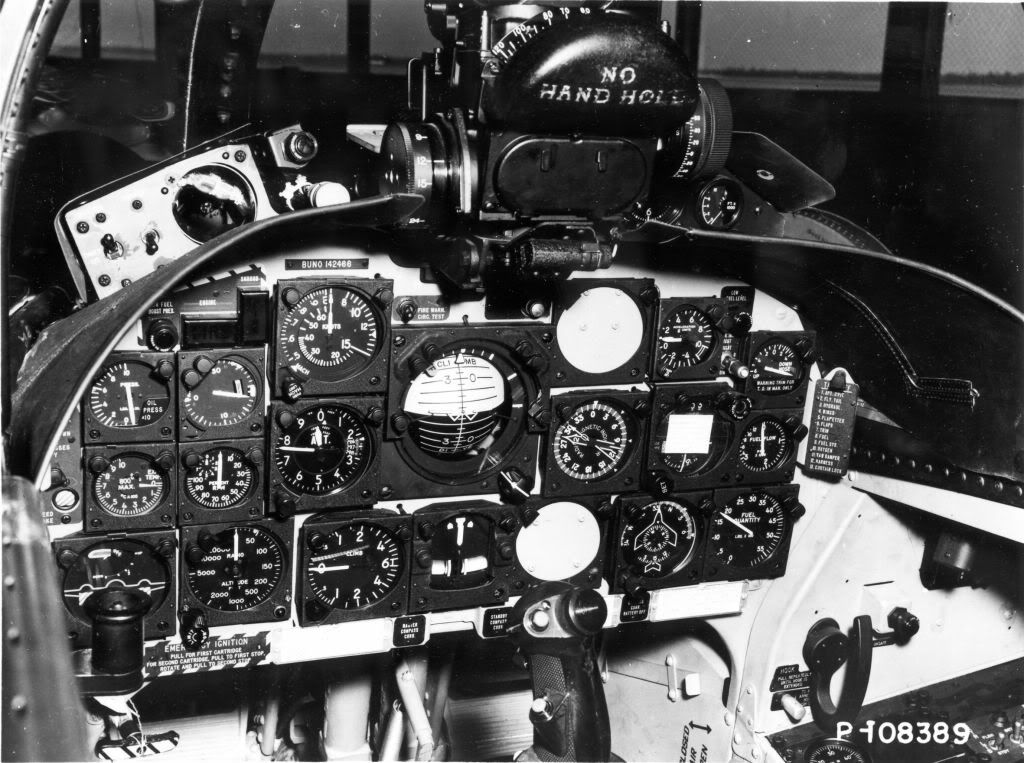



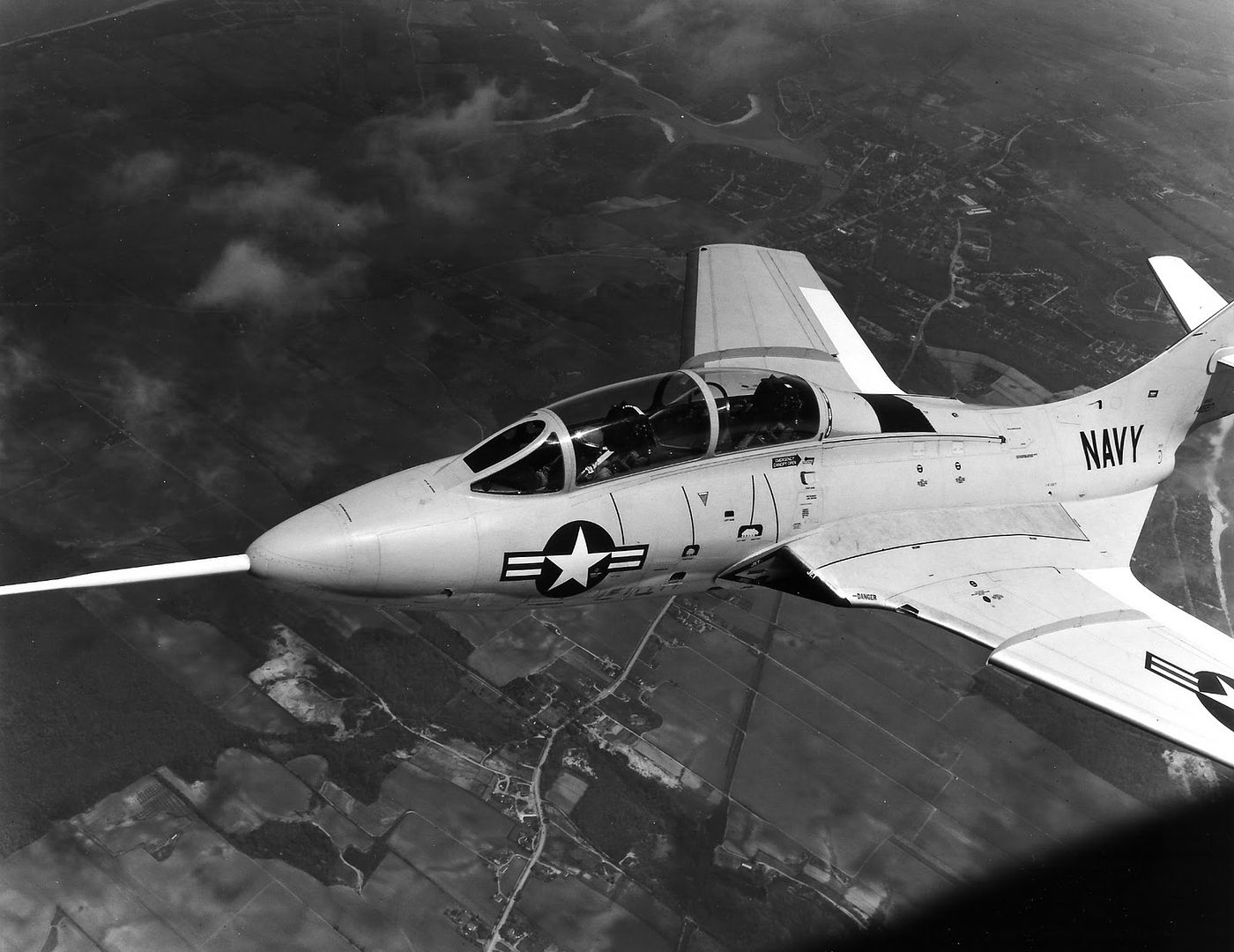
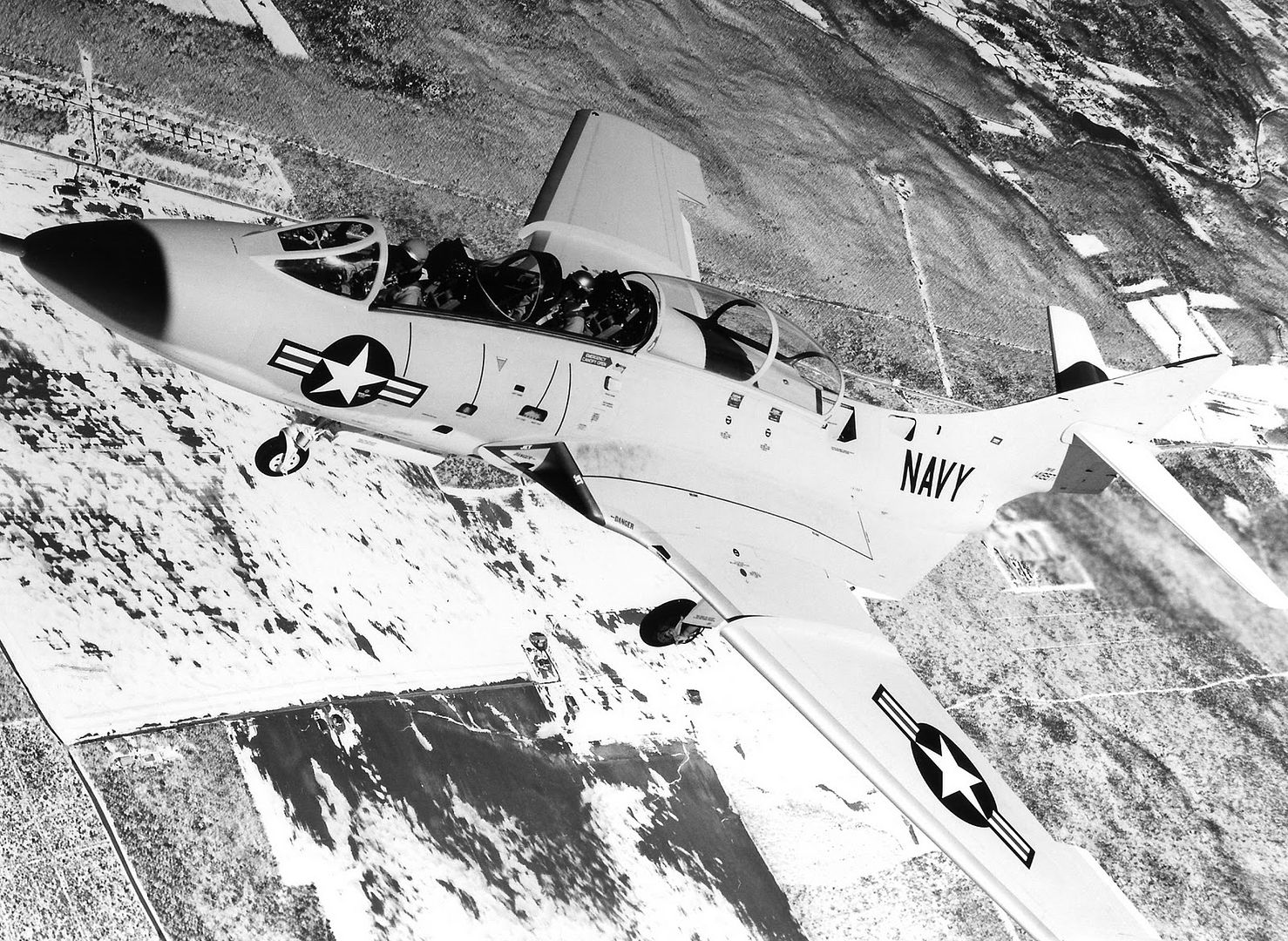
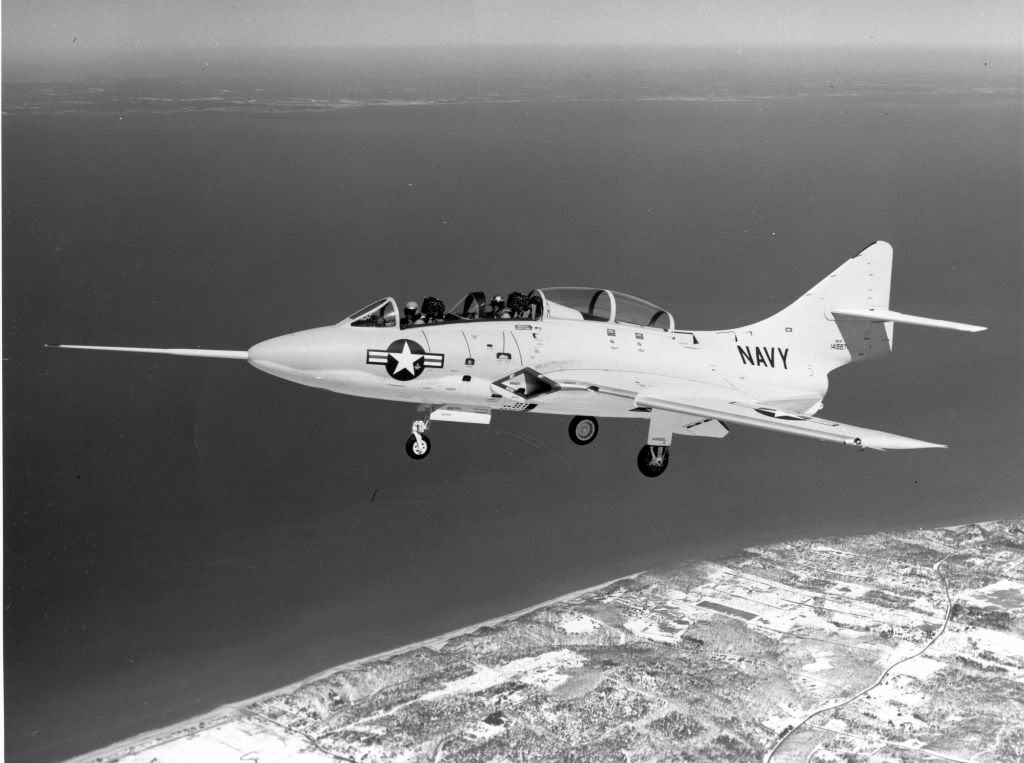
The F9F-8T entered service with the Naval Air Training Command in 1957. They equipped five squadrons. The F9F-8T played an important role in training most of the pilots who were later to fly combat missions in Vietnam.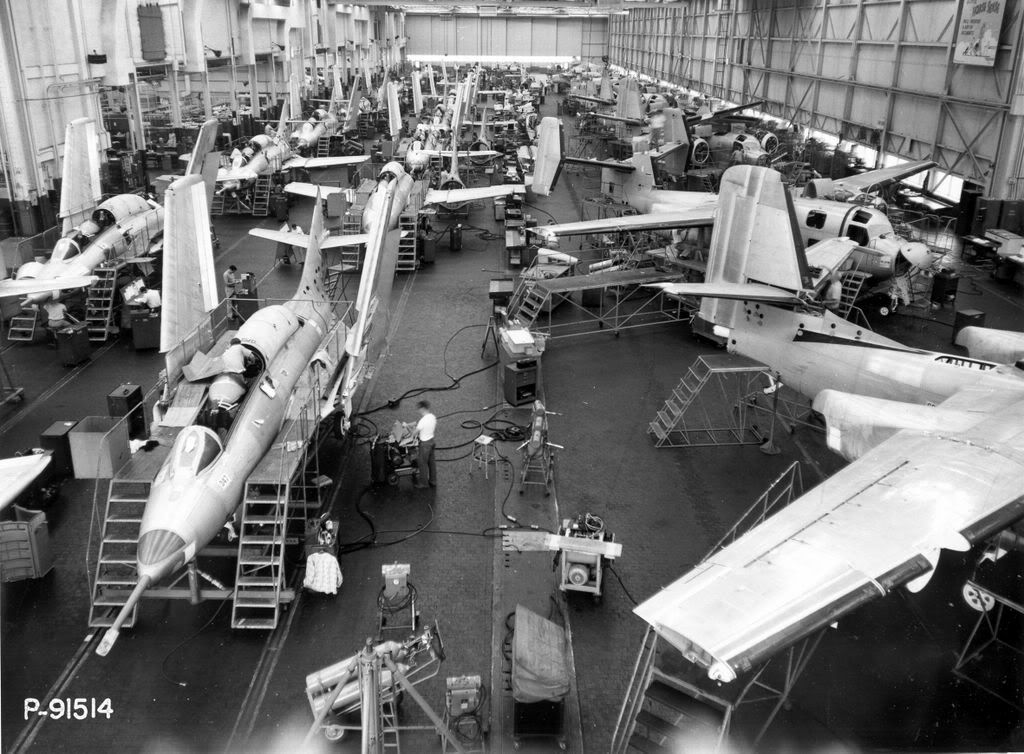
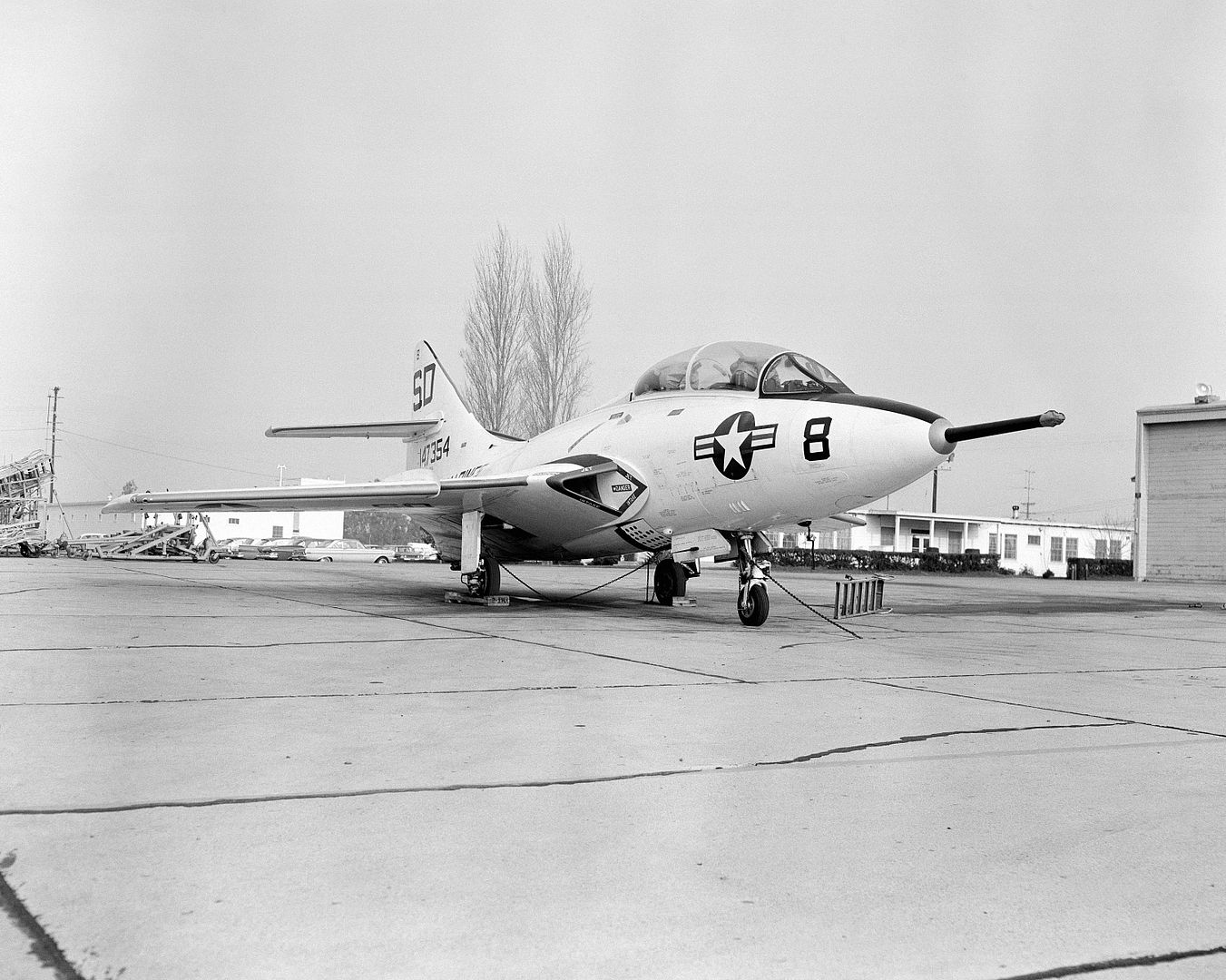
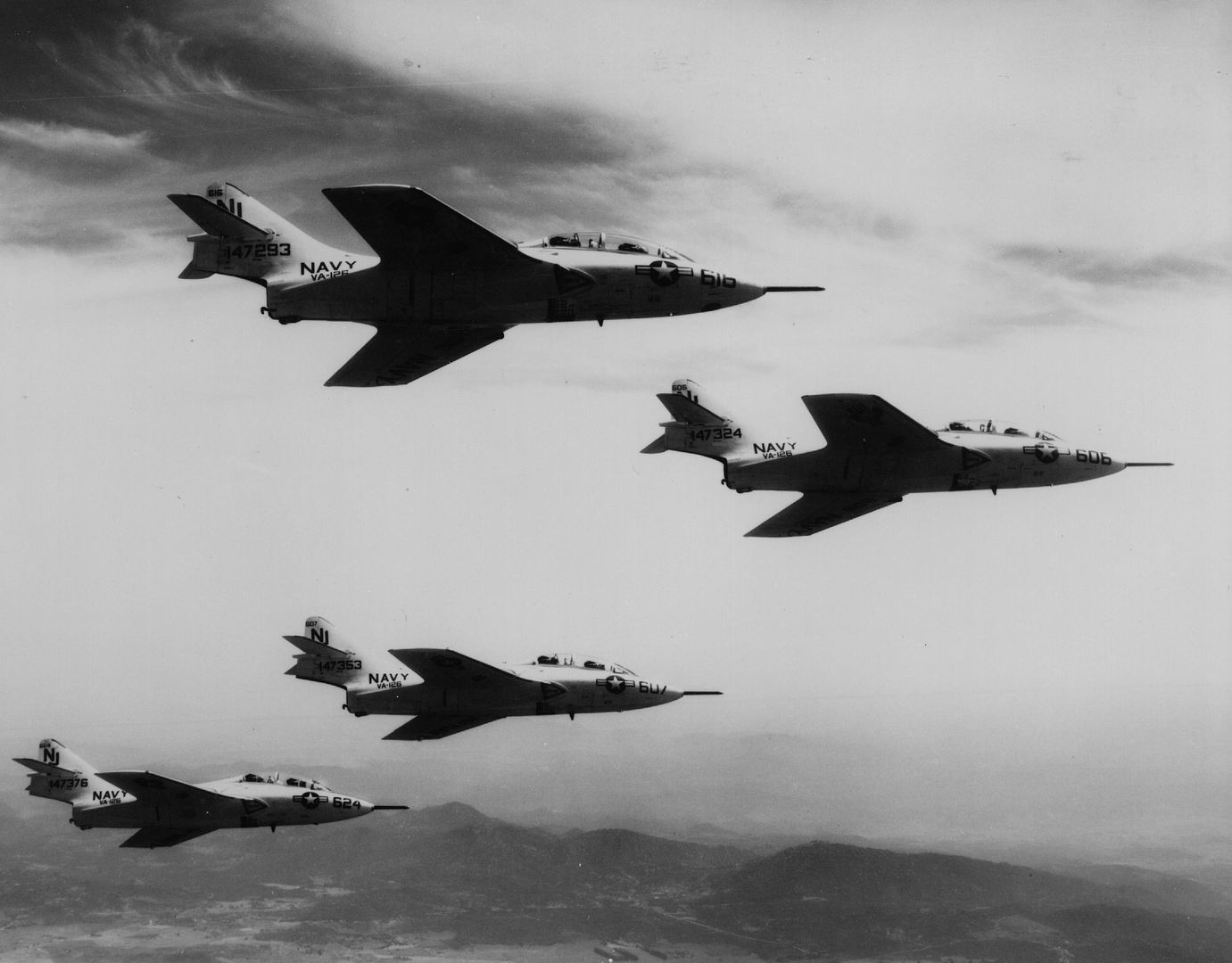
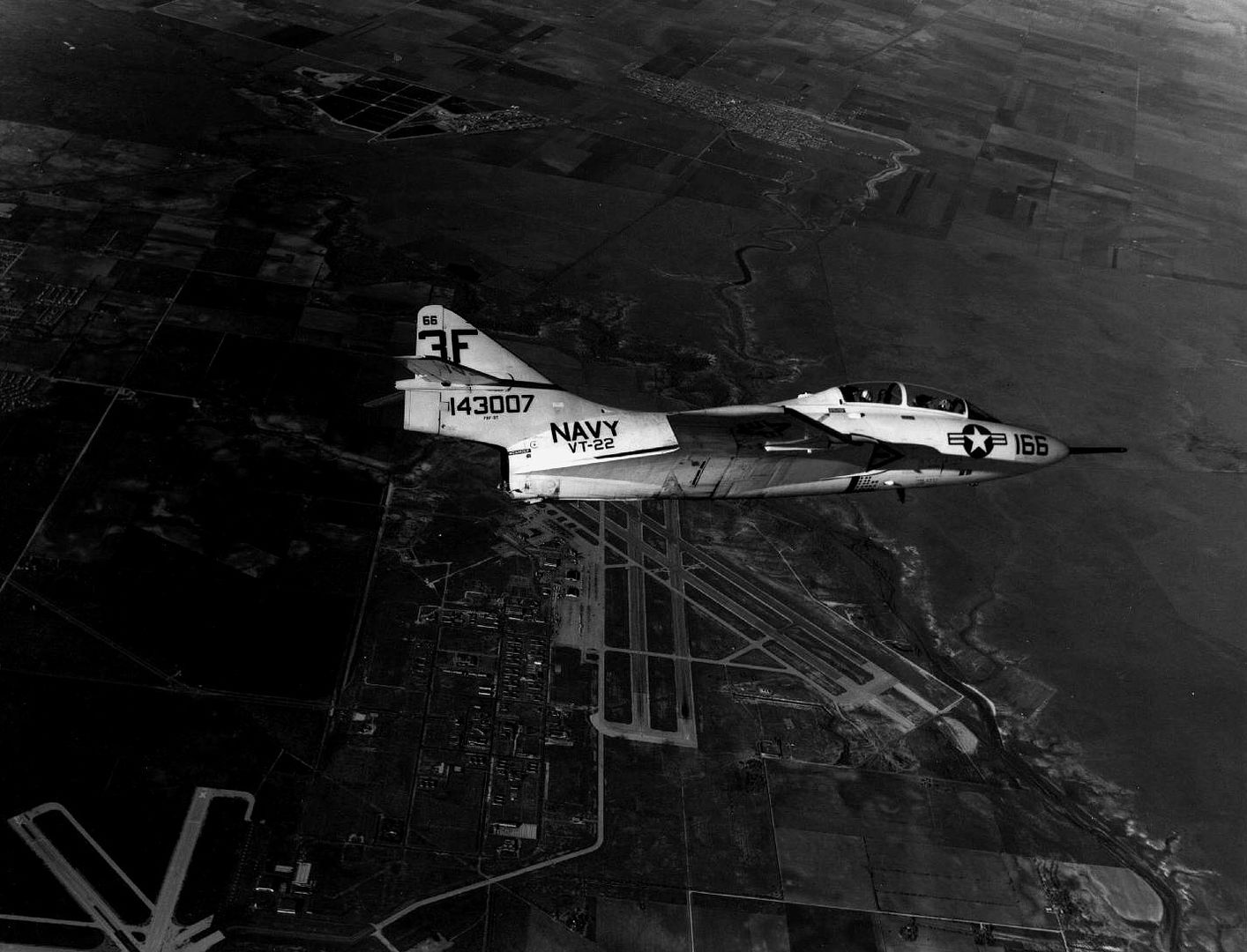
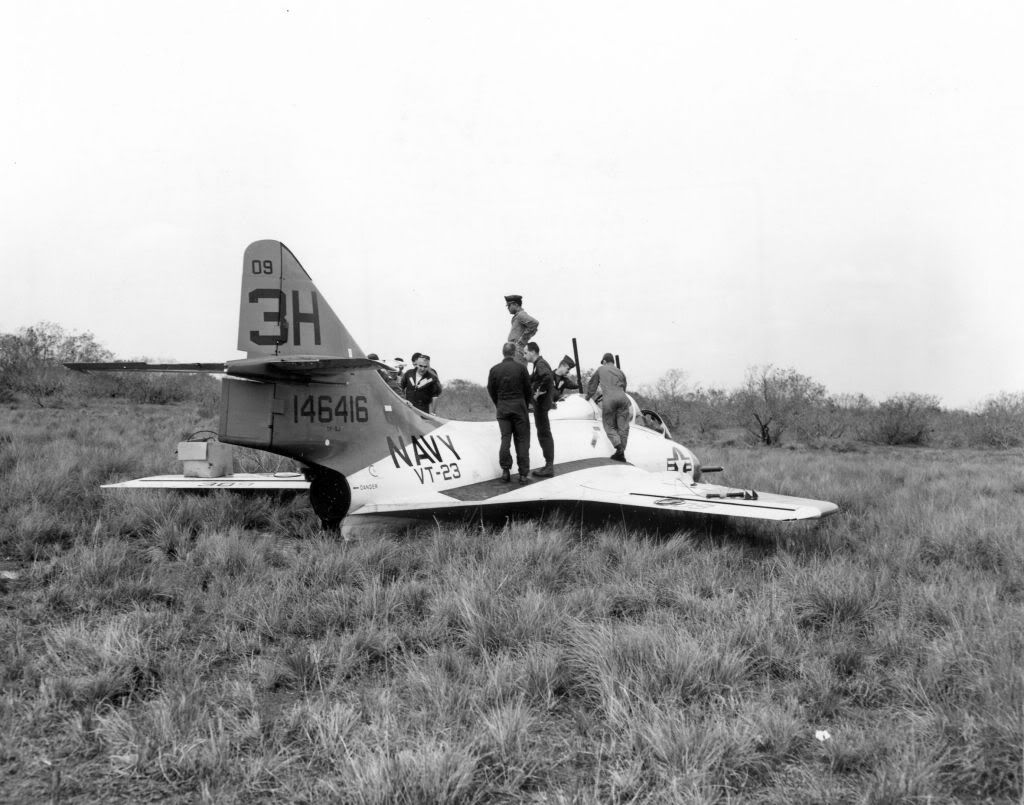
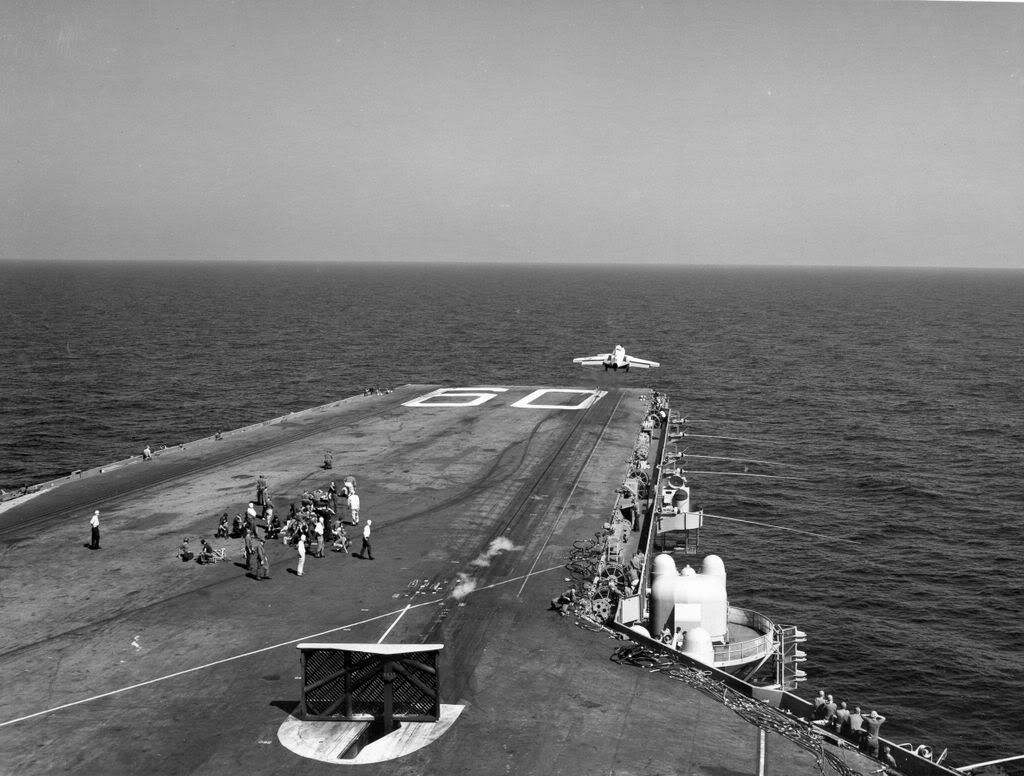

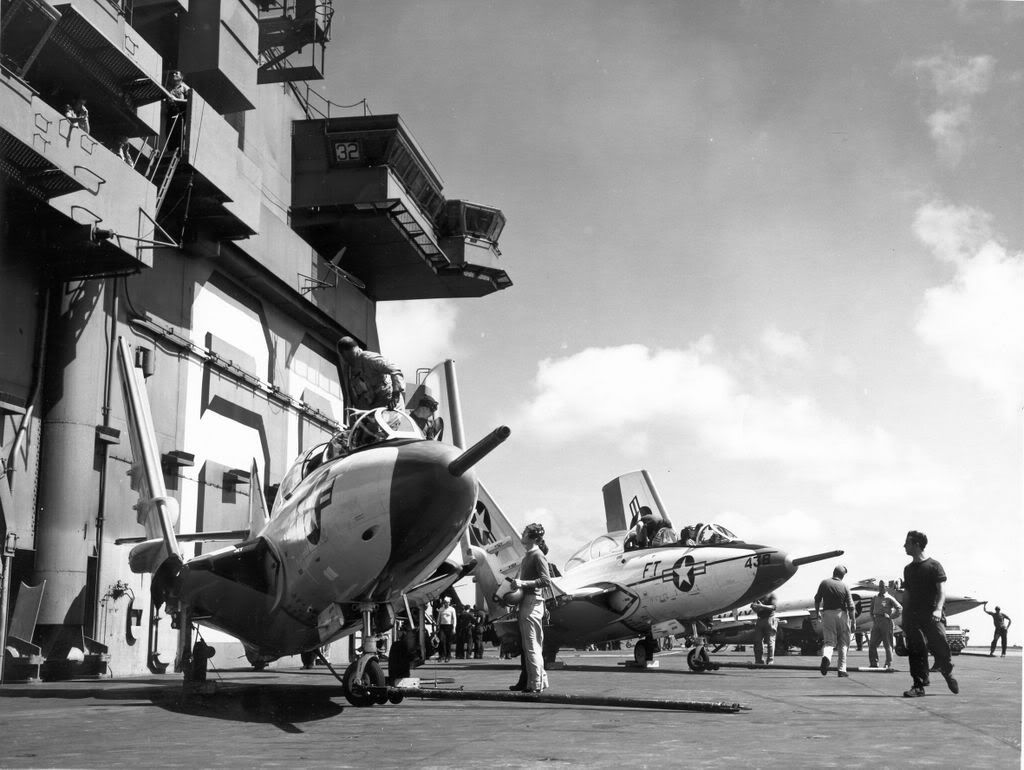
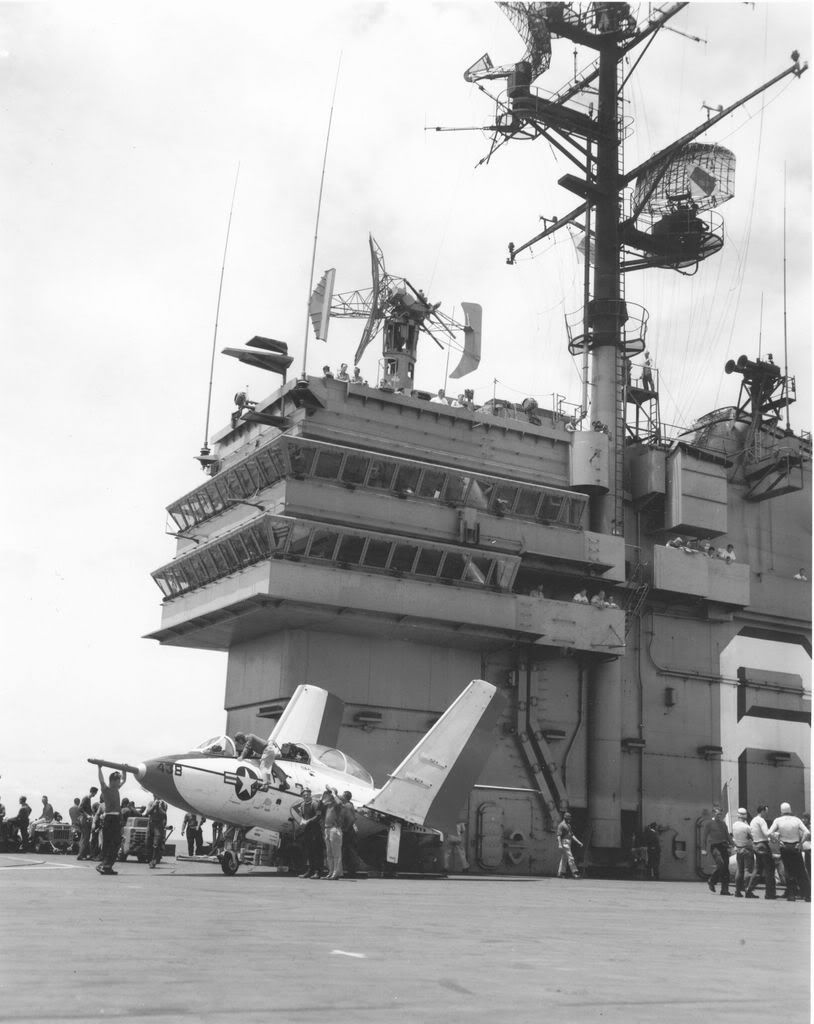

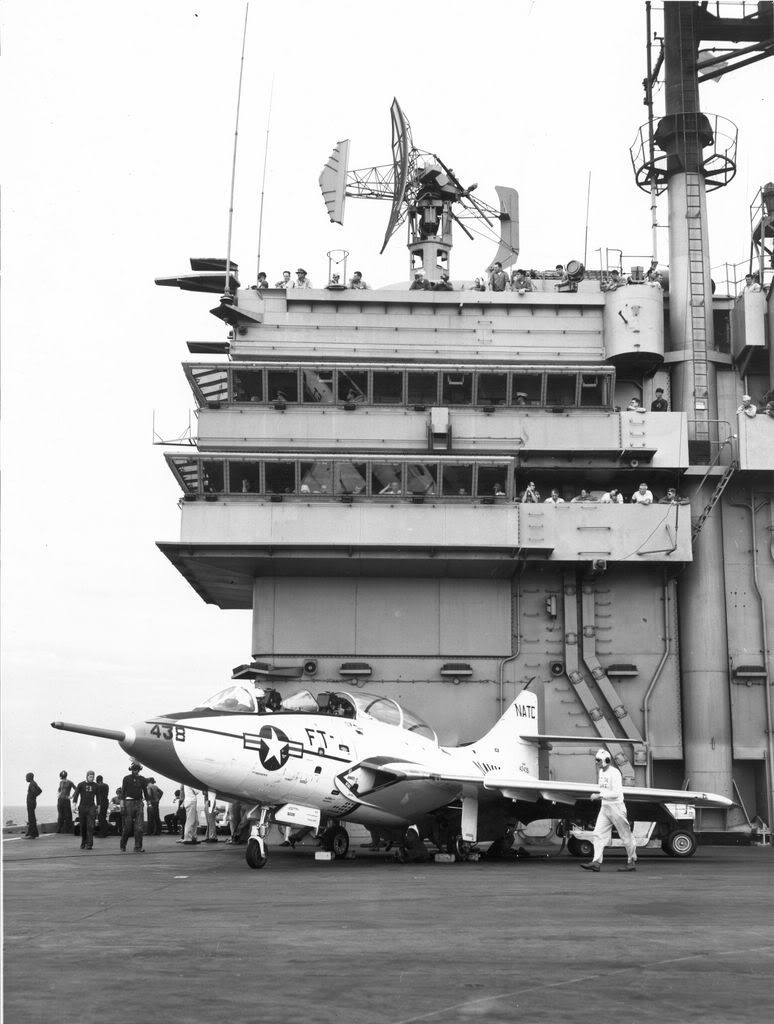
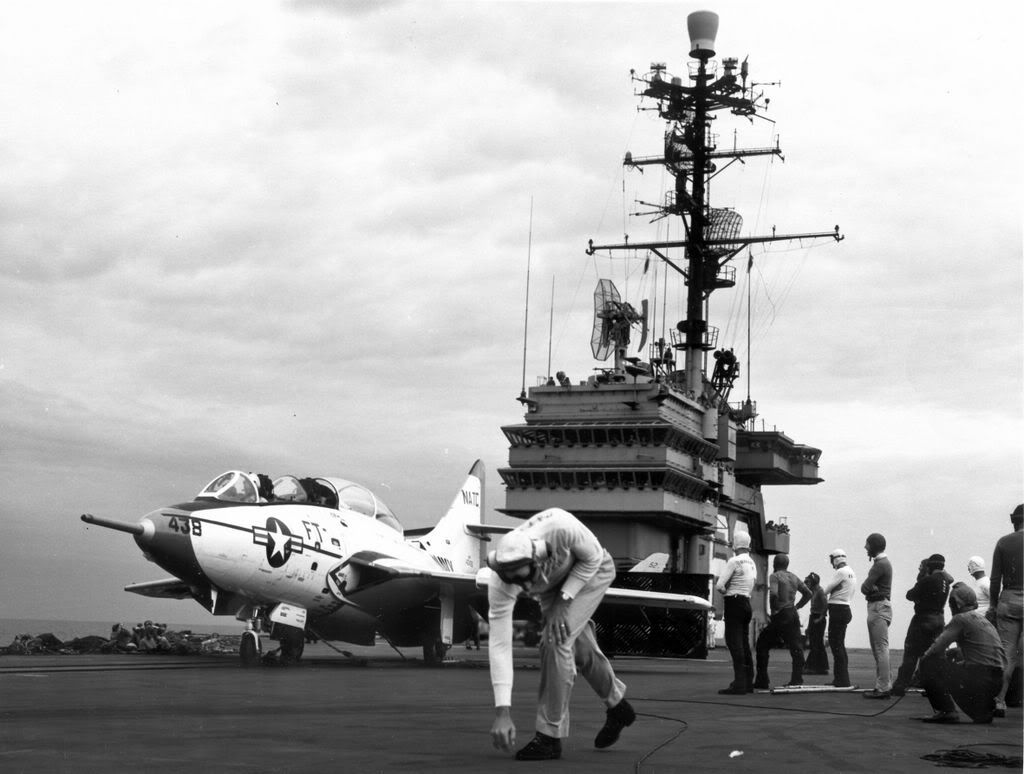
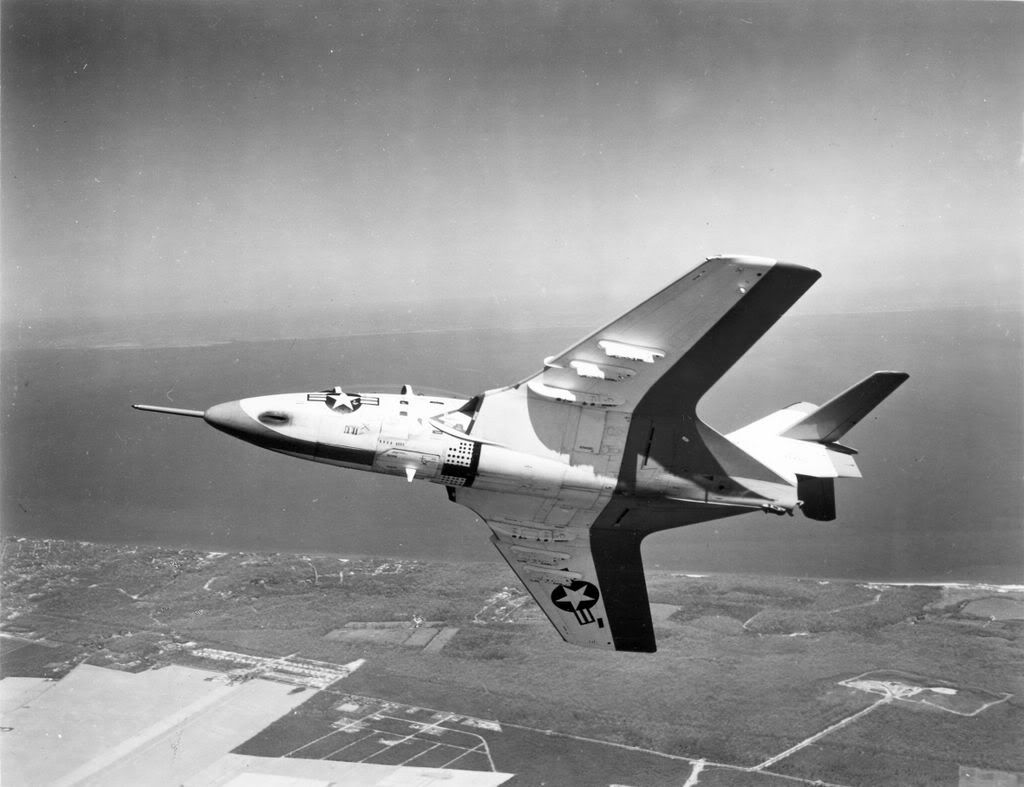
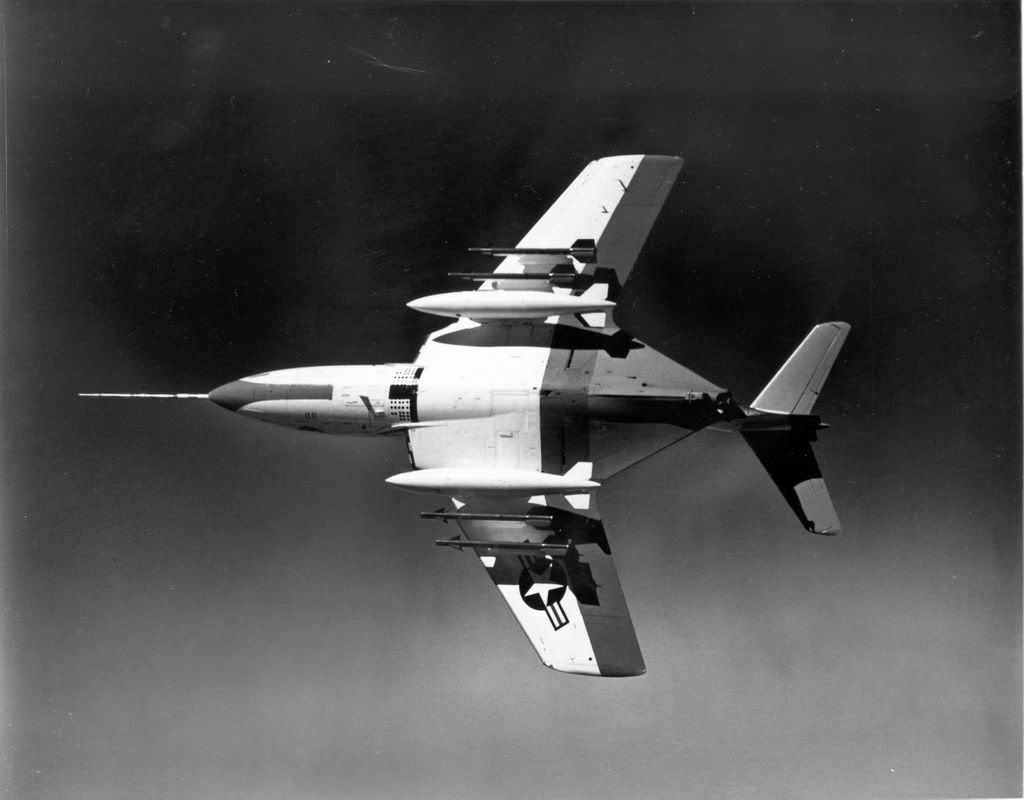

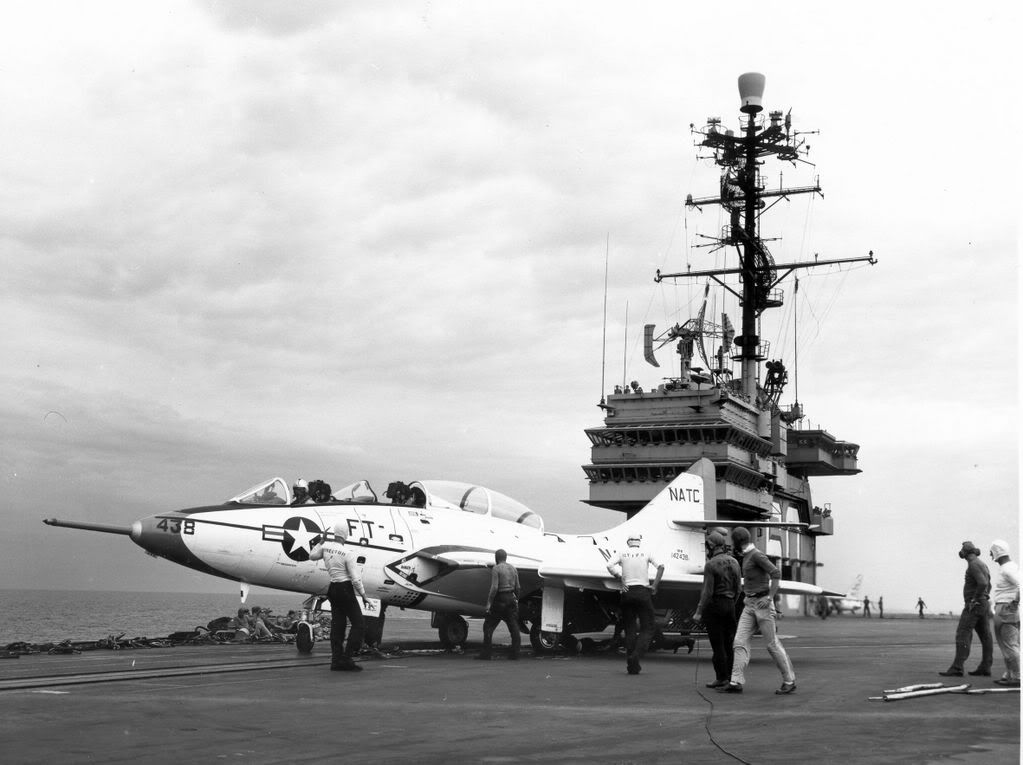
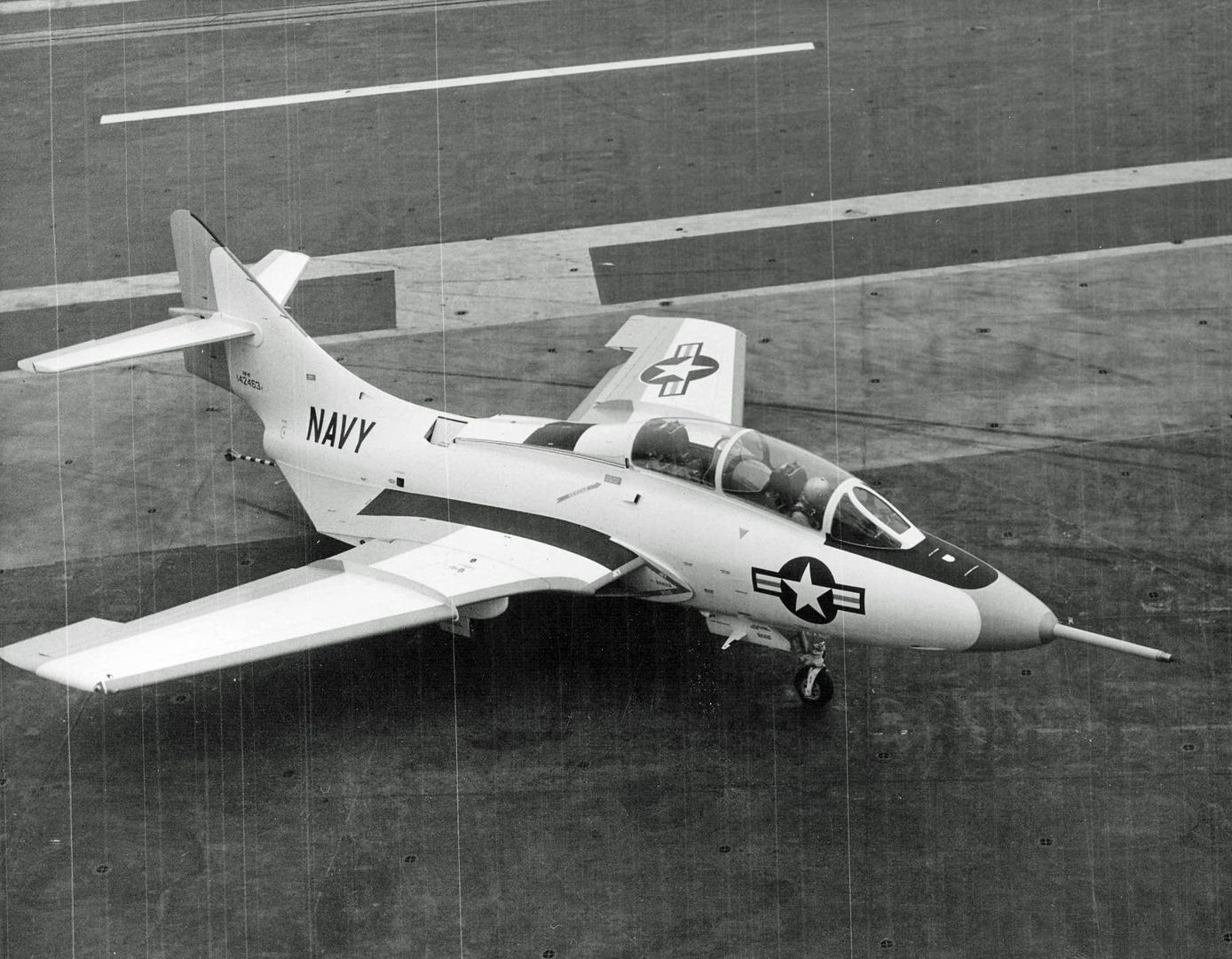
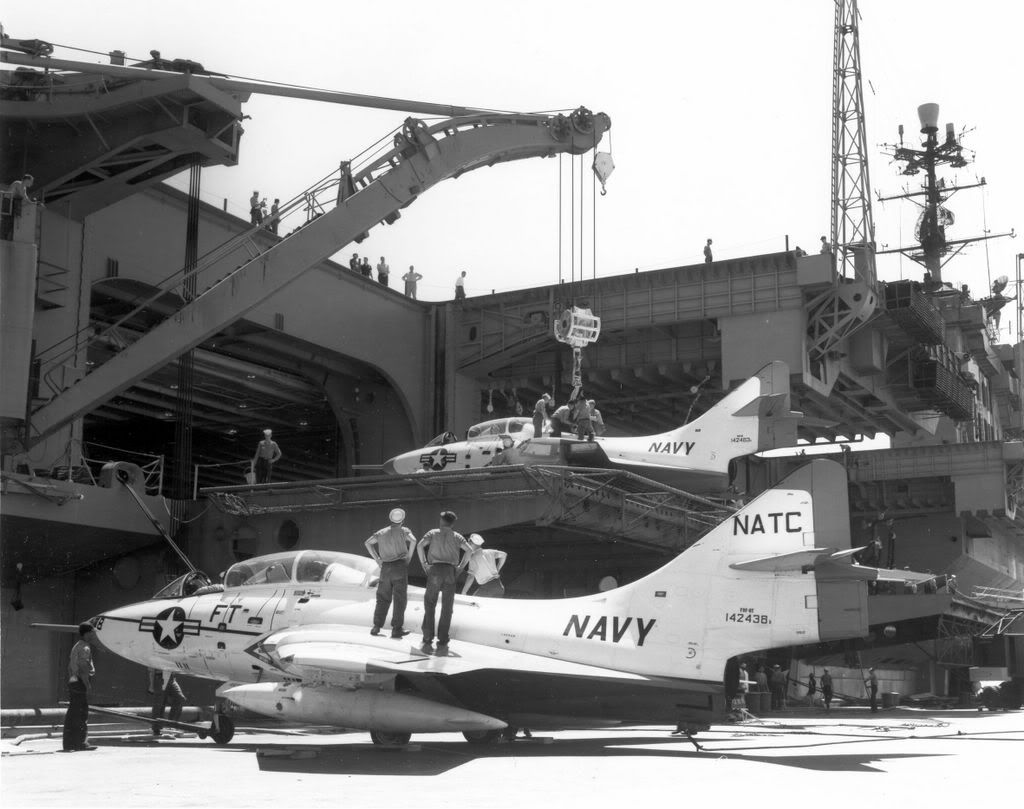
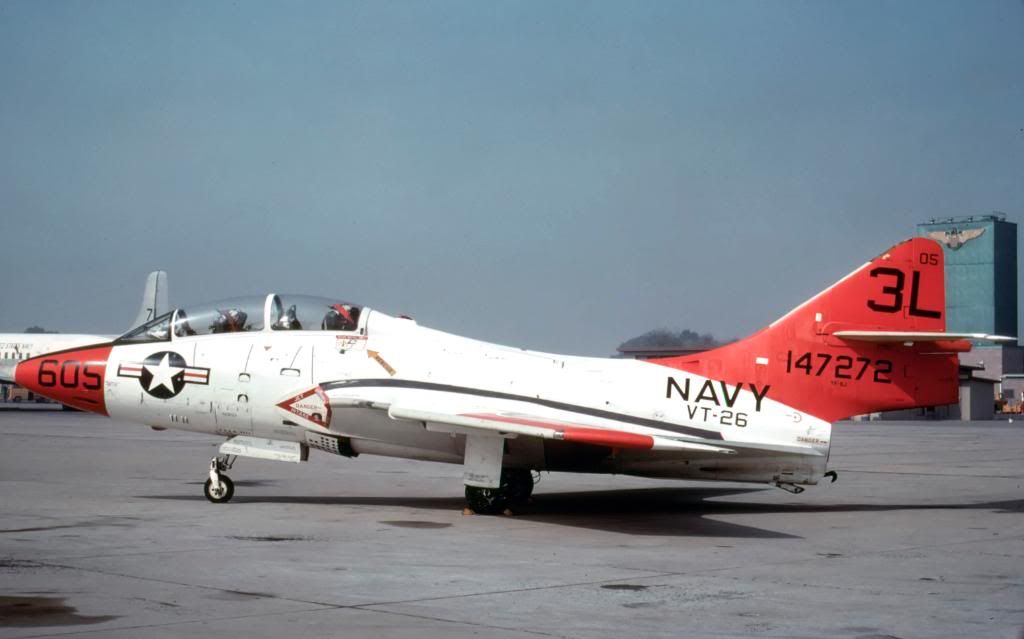
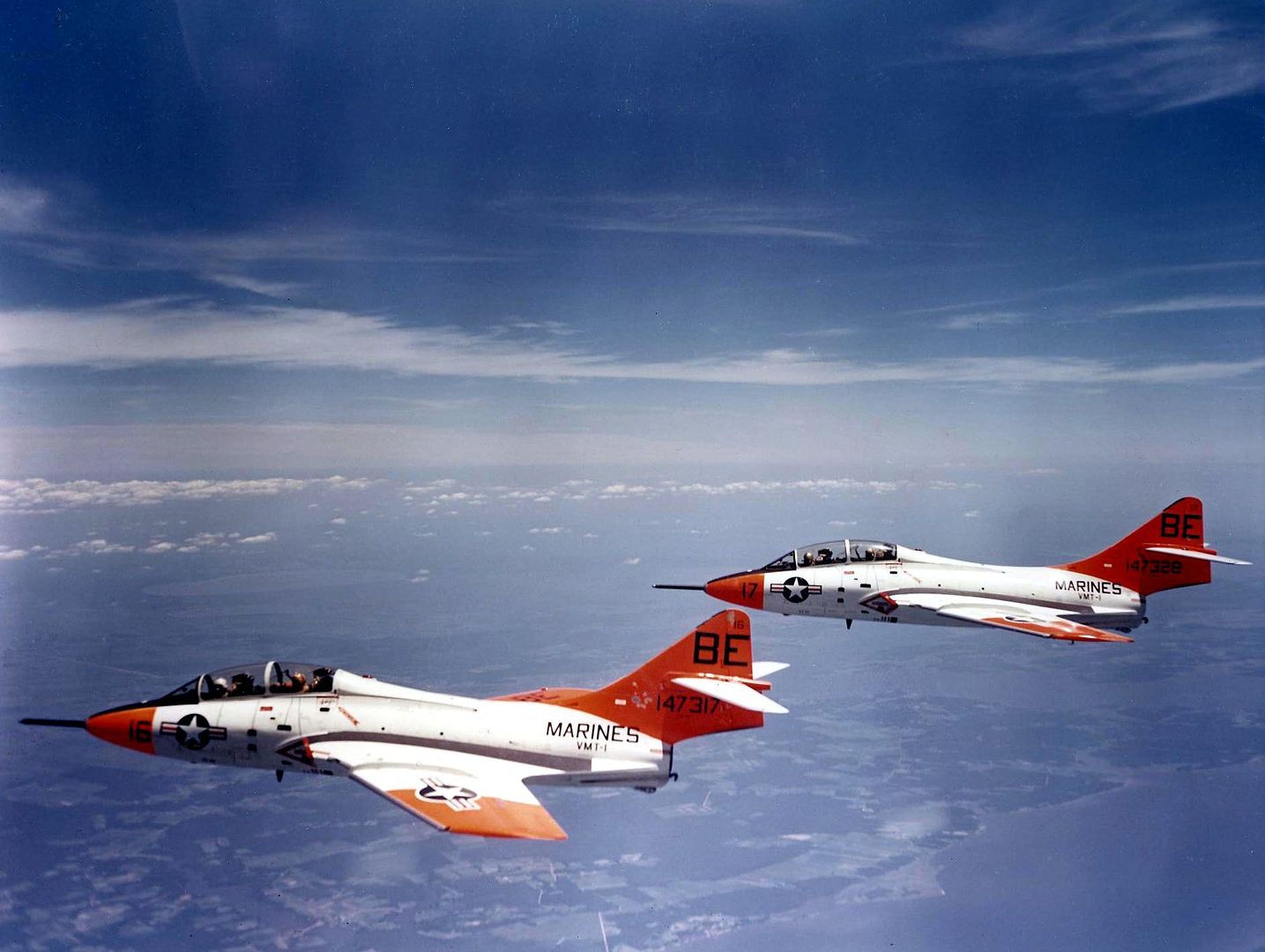
The F9F-8T was used for the first demonstration of the Martin-Baker ground level ejector seat when Flight Lt Sydney Hughes of the RAF ejected on August 28, 1957 from the aft cockpit of an F9F-8T while flying at ground level at 120 mph. Later, F9F-8Ts were operated by the Naval Parachute Facility at NAS El Centro, California for ejector seat tests. For these tests, they were operated with the rear section of their canopies removed.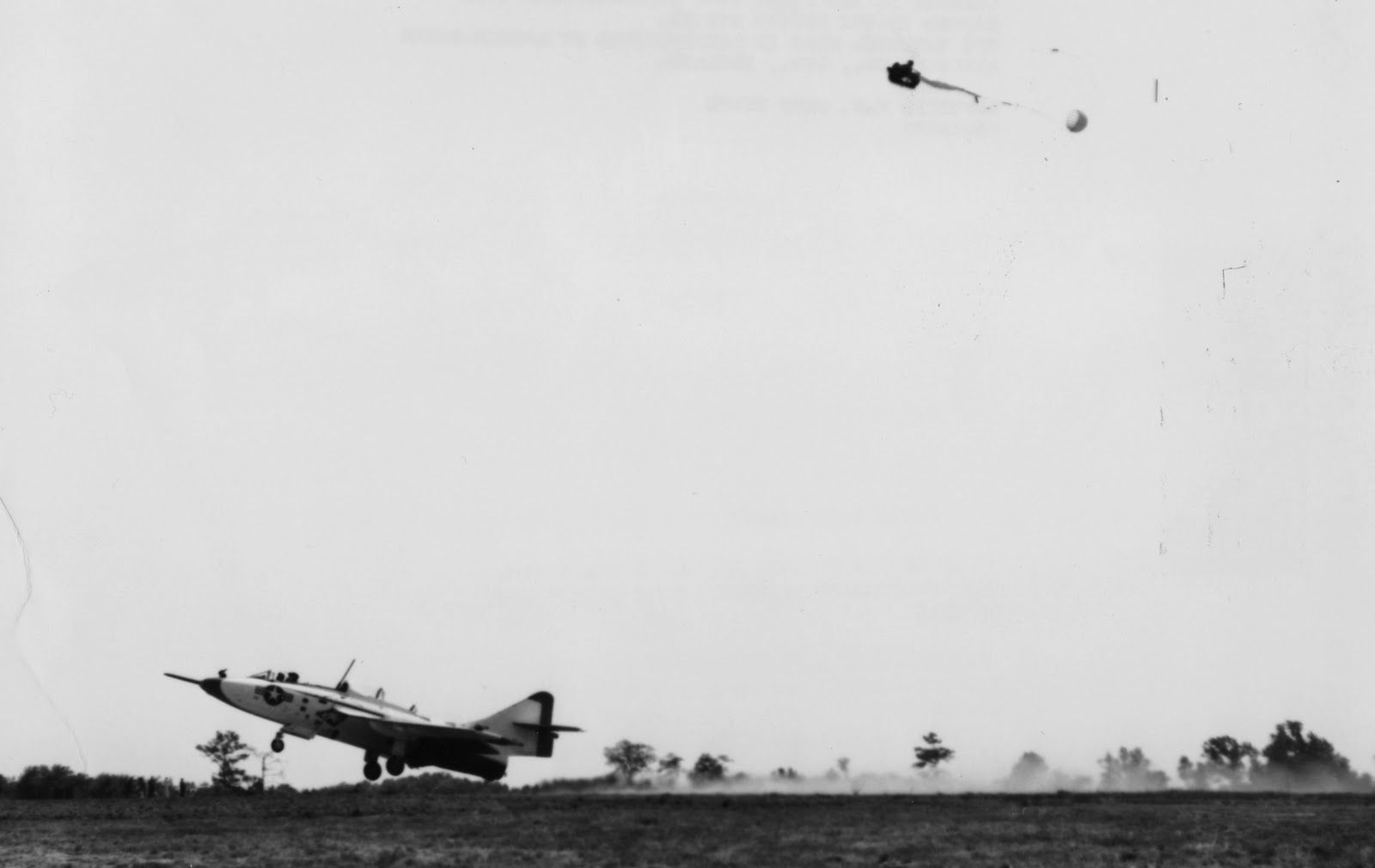
A radar-equipped night fighter version of the F9F-8T was proposed by Grumman in 1955. It was to have carried an AN/APQ-50 radar and was to have been equipped with an all-missile armament. However, the performance was considered insufficient to warrant production. In 1961, Grumman proposed a modernized version of the F9F-8T with updated systems and a Pratt & Whitney J52 turbojet in place of the J48. However, the Navy selected the Douglas TA-4F instead, and the updated two-seat Cougar project was abandoned.
In 1962, the F9F-8T was redesignated TF-9J in accordance with the new Defense Department Tri-Service designation scheme. In 1966-67, four TF-9Js of H&MS-13 were used in the airborne command role to direct airstrikes against enemy positions in South Vietnam. This marked the only use of the Cougar in combat. The two-seat TF-9J continued to serve with the Navy long after its single-seat relatives had been retired to the boneyards. The last squadron to use the TF-9J was VT-4, which finally relinquished its last TF-9J in February 1974. F9F-8T BuNo 147276 is on display at the USN Pensacola Air Museum.
Serials of the Grumman F9F-8T Cougar:
141667 Grumman F9F-8T Cougar
142437/142532 Grumman F9F-8T Cougar
142954/142999 Grumman F9F-8T Cougar
143000/143012 Grumman F9F-8T Cougar
146342/146425 Grumman F9F-8T Cougar
147270/147429 Grumman F9F-8T Cougar
Specification of Grumman F9F-8T Cougar:
Engine: One Pratt & Whitney J48-P-8A turbojet rated at 7250 lb.s.t. dry and 8500 lb.s.t. with water injection. Performance: Maximum speed 642 mph at sea level, 647 mph at 2000 feet, 593 mph at 35,000 feet. Cruising speed 516 mph. Landing speed 132 mph. Initial climb rate 5750 feet per minute. An altitude of 20,000 feet could be attained in 4 minutes. Service ceiling 42,000 feet. Combat ceiling 42,500 feet. 1050 miles normal range. 1209 miles combat range. 1312 miles maximum range. Internal fuel was 1063 US gallons. With two 150-gallon drop tanks, total fuel load was 1363 US gallons. Dimensions: wingspan 34 feet 6 inches, length 44 feet 4 1/4 inches (48 feet 8 3/4 inches with refuelling probe), height 12 feet 3 inches, wing area 337 square feet. Weights: 11,866 pounds empty, 20,098 pounds loaded, 24,763 pounds maximum takeoff. Armament: The armament consisted of two 20-mm cannon in the nose plus two underwing racks for 1000-pound bombs or 150-US gallon drop tanks. Two AIM-9 Sidewinder air-to-air missiles could be carried underneath the wings.
The Cougar first entered squadron service in November 1952, when VF-32 converted to the F9F-6. F9F-6s and F9F-7s subsequently re-equipped some twenty Navy fighter squadrons. Eight of these squadrons later converted to the F9F-8.
The Cougar was too late to fly combat sorties in Korea. Immediately following the Korean War, large numbers of Cougars entered service with carrier-based Navy fighter squadrons, and Cougar-equipped squadrons made numerous deployments to the Pacific, Atlantic, and Mediterranean. By the mid-1950s, the Cougar was the most numerous carrier-based fighter serving with the US Navy. The Cougar was popular with its crews, who admired it for its pleasant handling properties and its strong airframe. However, the Cougar was destined to have a short front-line operational life because of the rapid development of more advanced supersonic carrier-based fighters such as the Vought F8U Crusader and the Grumman F11F Tiger. In the late 1950s, the Cougar was replaced in the fighter and reconnaissance roles by the Tiger and the Crusader, and Douglas A4D Skyhawks replaced the Cougar in the light attack role. The last F9F-8 and F9F-8B Cougars were phased out in the Pacific and Atlantic Fleets in 1958 and 1959, respectively. However, some F9F-8Ps were retained by VFP-62 until February 1960.
Following their removal from active-duty fleet squadrons, the Cougars remained with reserve units until the mid-1960s. Surplus Cougars also served as drones and as drone directors. Surviving Cougars were retired to the boneyards at Davis-Monthan AFB in Arizona in the mid to late 1960s.
The Blue Angels flight demonstration team flew F9F-8s from 1954 to 1957, when they converted to the F11F-1 Tiger. The team still retained an F9F-8T until they converted to Phantoms in 1969.
The F9F Cougar served as an advanced jet trainer with VT-21, VT-22, VT-24, and VT-25. The two-place TF-9J and the single-seat TAF-9J wer both used. Many two-seat TF-9s were used by Naval Air Stations as proficiency aircraft for desk-bound aviators in order to earn their required flight time.
The F9F-6 Cougar did not serve with any Marine Corps fleet squadrons, but F9F-6s were assigned to at least twenty Marine Corps reserve squadrons following their phasing out by Navy fleet squadrons. F9F-6Ps served with VMJ-2 at MCAS Cherry Point, North Carolina, and F9F-8Ps served with VMCJ-3 at MCAS El Toro, California. In the late 1950s, F9F-8s and F9F-8Bs were flown by VMCJ-2, VMF-311, VMA-533, and VMFT-10. VMIT-10 used F9F-8Ts as instrument trainers, and Headquarters and Maintenance Squadrons (H&MS-11, -13, -15, and -37) used F9F-8Ts for a variety of duties. In 1966-67, four TF-9Js of H&MS-13 were used in the airborne command role to direct airstrikes against enemy positions in South Vietnam. This marked the only use of the Cougar in combat.
The only foreign air arm to use the Cougar was Argentina's Servicio de Aviacion Naval, which had also used the Cougar's straight-wing predecessor, the F9F-2 Panther. Argentina obtained two ex-Navy F9F-8Ts in 1962. They were assigned the serials 0516 and 0517 and served with the 1a Escuadrilla Aeronaval de Ataque, 3a Escuadra Aeronaval, based at NAN Comandante Espora. They were withdrawn from use in 1971.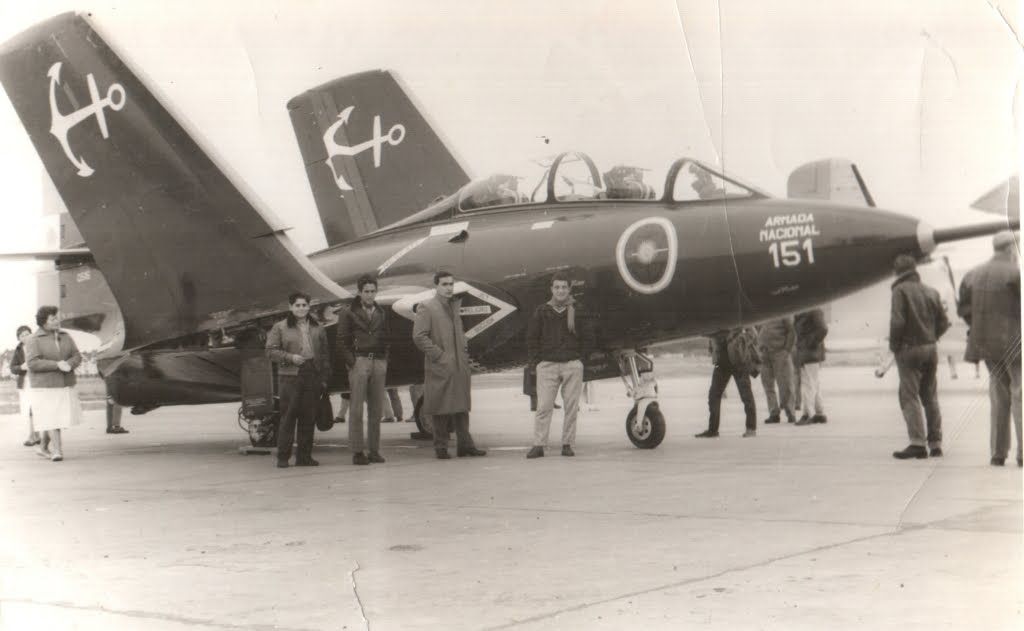
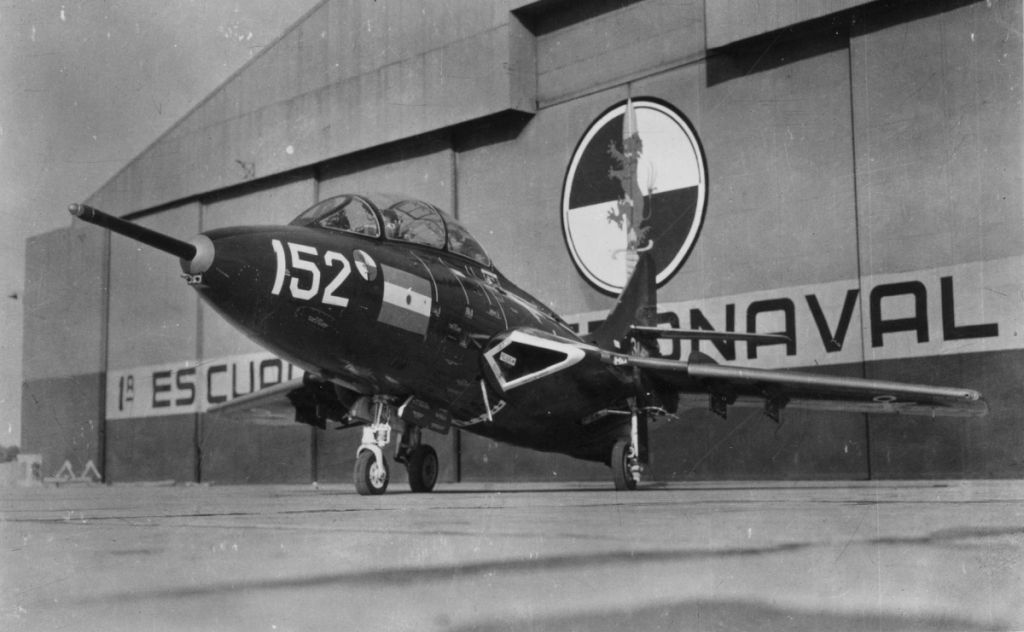

Post a reply
- Go to Previous topic
- Go to Next topic
- Go to Welcome
- Go to Introduce Yourself
- Go to General Discussion
- Go to Screenshots, Images and Videos
- Go to Off topic
- Go to Works in Progress
- Go to Skinning Tips / Tutorials
- Go to Skin Requests
- Go to IJAAF Library
- Go to Luftwaffe Library
- Go to RAF Library
- Go to USAAF / USN Library
- Go to Misc Library
- Go to The Ops Room
- Go to Made in Germany
- Go to Campaigns and Missions
- Go to Works in Progress
- Go to Juri's Air-Raid Shelter
- Go to Campaigns and Missions
- Go to Works in Progress
- Go to Skinpacks
- Go to External Projects Discussion
- Go to Books & Resources
